

11+ creative writing guide with 50 example topics and prompts
by Hayley | Nov 17, 2022 | Exams , Writing | 0 comments
The 11+ exam is a school entrance exam taken in the academic year that a child in the UK turns eleven.
These exams are highly competitive, with multiple students battling for each school place awarded.
The 11 plus exam isn’t ‘one thing’, it varies in its structure and composition across the country. A creative writing task is included in nearly all of the 11 plus exams, and parents are often confused about what’s being tested.
Don’t be fooled into thinking that the plot of your child’s writing task is important. It is not.
The real aim of the 11+ creative writing task is to showcase your child’s writing skills and techniques.
And that’s why preparation is so important.
This guide begins by answering all the FAQs that parents have about the 11+ creative writing task.
At the end of the article I give my best tips & strategies for preparing your child for the 11+ creative writing task , along with 50 fiction and non-fiction creative writing prompts from past papers you can use to help your child prepare. You’ll also want to check out my 11+ reading list , because great readers turn into great writers.
Do all 11+ exams include a writing task?
Not every 11+ exam includes a short story component, but many do. Usually 3 to 5 different prompts are given for the child to choose between and they are not always ‘creative’ (fiction) pieces. One or more non-fiction options might be given for children who prefer writing non-fiction to fiction.
Timings and marking vary from test to test. For example, the Kent 11+ Test gives students 10 minutes for planning followed by 30 minutes for writing. The Medway 11+ Test gives 60 minutes for writing with ‘space allowed’ on the answer booklet for planning.
Tasks vary too. In the Kent Test a handful of stimuli are given, whereas 11+ students in Essex are asked to produce two individually set paragraphs. The Consortium of Selective Schools in Essex (CCSE) includes 2 creative writing paragraphs inside a 60-minute English exam.
Throughout the UK each 11+ exam has a different set of timings and papers based around the same themes. Before launching into any exam preparation it is essential to know the content and timing of your child’s particular writing task.
However varied and different these writing tasks might seem, there is one key element that binds them.
The mark scheme.
Although we can lean on previous examples to assess how likely a short story or a non-fiction tasks will be set, it would be naïve to rely completely on the content of past papers. Contemporary 11+ exams are designed to be ‘tutor-proof’ – meaning that the exam boards like to be unpredictable.
In my online writing club for kids , we teach a different task each week (following a spiral learning structure based on 10 set tasks). One task per week is perfected as the student moves through the programme of content, and one-to-one expert feedback ensures progression. This equips our writing club members to ‘write effectively for a range of purposes’ as stated in the English schools’ teacher assessment framework.
This approach ensures that students approaching a highly competitive entrance exam will be confident of the mark scheme (and able to meet its demands) for any task set.
Will my child have a choice of prompts to write from or do they have to respond to a single prompt, without a choice?
This varies. In the Kent Test there are usually 5 options given. The purpose is to gather a writing sample from each child in case of a headteacher appeal. A range of options should allow every child to showcase what they can do.
In Essex, two prescriptive paragraphs are set as part of an hour-long English paper that includes comprehension and vocabulary work. In Essex, there is no option to choose the subject matter.
The Medway Test just offers a single prompt for a whole hour of writing. Sometimes it is a creative piece. Recently it was a marketing leaflet.
The framework for teaching writing in English schools demands that in order to ‘exceed expectations’ or better, achieve ‘greater depth’, students need to be confident writing for a multitude of different purposes.
In what circumstances is a child’s creative writing task assessed?
In Essex (east of the UK) the two prescriptive writing tasks are found inside the English exam paper. They are integral to the exam and are assessed as part of this.
In Medway (east Kent in the South East) the writing task is marked and given a raw score. This is then adjusted for age and double counted. Thus, the paper is crucial to a pass.
In the west of the county of Kent there is a different system. The Kent Test has a writing task that is only marked in appeal cases. If a child dips below the passmark their school is allowed to put together a ‘headteacher’s appeal’. At this point – before the score is communicated to the parent (and probably under cover of darkness) the writing sample is pulled out of a drawer and assessed.
I’ve been running 11+ tutor clubs for years. Usually about 1% of my students passed at headteacher’s appeal.
Since starting the writing club, however, the number of students passing at appeal has gone up considerably. In recent years it’s been more like 5% of students passing on the strength of their writing sample.
What are the examiners looking for when they’re marking a student’s creative writing?
In England, the government has set out a framework for marking creative writing. There are specific ‘pupil can’ statements to assess whether a student is ‘working towards the expected standard,’ ‘working at the expected standard’ or ‘working at greater depth’.
Members of the headteacher panel assessing the writing task are given a considerable number of samples to assess at one time. These expert teachers have a clear understanding of the framework for marking, but will not be considering or discussing every detail of the writing sample as you might expect.
Schools are provided with a report after the samples have been assessed. This is very brief indeed. Often it will simply say ‘lack of precise vocabulary’ or ‘confused paragraphing.’
So there is no mark scheme as such. They won’t be totting up your child’s score to see if they have reached a given target. They are on the panel because of their experience, and they have a short time to make an instant judgement.
Does handwriting matter?
Handwriting is assessed in primary schools. Thus it is an element of the assessment framework the panel uses as a basis for their decision.
If the exam is very soon, then don’t worry if your child is not producing immaculate, cursive handwriting. The focus should simply be on making it well-formed and legible. Every element of the assessment framework does not need to be met and legible writing will allow the panel to read the content with ease.
Improve presentation quickly by offering a smooth rollerball pen instead of a pencil. Focus on fixing individual letters and praising your child for any hint of effort. The two samples below are from the same boy a few months apart. Small changes have transformed the look and feel:

Sample 1: First piece of work when joining the writing club

Sample 2: This is the same boy’s improved presentation and content
How long should the short story be.
First, it is not a short story as such—it is a writing sample. Your child needs to showcase their skills but there are no extra marks for finishing (or marks deducted for a half-finished piece).
For a half hour task, you should prepare your child to produce up to 4 paragraphs of beautifully crafted work. Correct spelling and proper English grammar is just the beginning. Each paragraph should have a different purpose to showcase the breadth and depth of their ability. A longer – 60 minute – task might have 5 paragraphs but rushing is to be discouraged. Considered and interesting paragraphs are so valuable, a shorter piece would be scored more highly than a rushed and dull longer piece.
I speak from experience. A while ago now I was a marker for Key Stage 2 English SATs Papers (taken in Year 6 at 11 years old). Hundreds of scripts were deposited on my doorstep each morning by DHL. There was so much work for me to get through that I came to dread long, rambling creative pieces. Some children can write pages and pages of repetitive nothingness. Ever since then, I have looked for crafted quality and am wary of children judging their own success by the number of lines competed.
Take a look at the piece of writing below. It’s an excellent example of a well-crafted piece.
Each paragraph is short, but the writer is skilful.
He used rich and precisely chosen vocabulary, he’s broken the text into natural paragraphs, and in the second paragraph he is beginning to vary his sentence openings. There is a sense of control to the sentences – the sentence structure varies with shorter and longer examples to manage tension. It is exciting to read, with a clear awareness of his audience. Punctuation is accurate and appropriate.

11+ creative writing example story
How important is it to revise for a creative writing task.
It is important.
Every student should go into their 11+ writing task with a clear paragraph plan secured. As each paragraph has a separate purpose – to showcase a specific skill – the plan should reflect this. Built into the plan is a means of flexing it, to alter the order of the paragraphs if the task demands it. There’s no point having a Beginning – Middle – End approach, as there’s nothing useful there to guide the student to the mark scheme.
Beyond this, my own students have created 3 – 5 stories that fit the same tight plan. However, the setting, mood and action are all completely different. This way a bank of rich vocabulary has already been explored and a technique or two of their own that fits the piece beautifully. These can be drawn upon on the day to boost confidence and give a greater sense of depth and consideration to their timed sample.
Preparation, rather than revision in its classic form, is the best approach. Over time, even weeks or months before the exam itself, contrasting stories are written, improved upon, typed up and then tweaked further as better ideas come to mind. Each of these meets the demands of the mark scheme (paragraphing, varied sentence openings, rich vocabulary choices, considered imagery, punctuation to enhance meaning, development of mood etc).
To ensure your child can write confidently at and above the level expected of them, drop them into my weekly weekly online writing club for the 11+ age group . The club marking will transform their writing, and quickly.
What is the relationship between the English paper and the creative writing task?
Writing is usually marked separately from any comprehension or grammar exercises in your child’s particular 11+ exam. Each exam board (by area/school) adapts the arrangement to suit their needs. Some have a separate writing test, others build it in as an element of their English paper (usually alongside a comprehension, punctuation and spelling exercise).
Although there is no creative writing task in the ISEB Common Pre-test, those who are not offered an immediate place at their chosen English public school are often invited back to complete a writing task at a later date. Our ISEB Common Pre-test students join the writing club in the months before the exam, first to tidy up the detail and second to extend the content.
What if my child has a specific learning difficulty (dyslexia, ADD/ADHD, ASD)?
Most exam boards pride themselves on their inclusivity. They will expect you to have a formal report from a qualified professional at the point of registration for the test. This needs to be in place and the recommendations will be considered by a panel. If your child needs extra arrangements on the day they may be offered (it isn’t always the case). More importantly, if they drop below a pass on one or more papers you will have a strong case for appeal.
Children with a specific learning difficulty often struggle with low confidence in their work and low self-esteem. The preparations set out above, and a kids writing club membership will allow them to go into the exam feeling positive and empowered. If they don’t achieve a pass at first, the writing sample will add weight to their appeal.
Tips and strategies for writing a high-scoring creative writing paper
- Read widely for pleasure. Read aloud to your child if they are reluctant.
- Create a strong paragraph plan where each paragraph has a distinct purpose.
- Using the list of example questions below, discuss how each could be written in the form of your paragraph plan.
- Write 3-5 stories with contrasting settings and action – each one must follow your paragraph plan. Try to include examples of literary devices and figurative language (metaphor, simile) but avoid clichés.
- Tidy up your presentation. Write with a good rollerball pen on A4 lined paper with a printed margin. Cross out with a single horizontal line and banish doodling or scribbles.
- Join the writing club for a 20-minute Zoom task per week with no finishing off or homework. An expert English teacher will mark the work personally on video every Friday and your child’s writing will be quickly transformed.
Pressed for time? Here’s a paragraph plan to follow.
At Griffin Teaching we have an online writing club for students preparing for the 11 plus creative writing task . We’ve seen first-hand what a difference just one or two months of weekly practice can make.
That said, we know that a lot of people reading this page are up against a hard deadline with an 11+ exam date fast approaching.
If that’s you (or your child), what you need is a paragraph plan.
Here’s one tried-and-true paragraph plan that we teach in our clubs. Use this as you work your way through some of the example prompts below.
11+ creative writing paragraph plan
Paragraph 1—description.
Imagine standing in the location and describe what is above the main character, what is below their feet, what is to their left and right, and what is in the distance. Try to integrate frontend adverbials into this paragraph (frontend adverbials are words or phrases used at the beginning of a sentence to describe what follows—e.g. When the fog lifted, he saw… )
Paragraph 2—Conversation
Create two characters who have different roles (e.g. site manager and student, dog walker and lost man) and write a short dialogue between them. Use what we call the “sandwich layout,” where the first person says something and you describe what they are doing while they are saying it. Add in further descriptions (perhaps of the person’s clothing or expression) before starting a new line where the second character gives a simple answer and you provide details about what the second character is doing as they speak.
Paragraph 3—Change the mood
Write three to four sentences that change the mood of the writing sample from light to gloomy or foreboding. You could write about a change in the weather or a change in the lighting of the scene. Another approach is to mention how a character reacts to the change in mood, for example by pulling their coat collar up to their ears.
Paragraph 4—Shock your reader
A classic approach is to have your character die unexpectedly in the final sentence. Or maybe the ceiling falls?
11+ creative writing questions from real papers—fictional prompts
- The day the storm came
- The day the weather changed
- The snowstorm
- The rainy day
- A sunny day out
- A foggy (or misty) day
- A day trip to remember
- The first day
- The day everything changed
- The mountain
- The hillside
- The old house
- The balloon
- The old man
- The accident
- The unfamiliar sound
- A weekend away
- Moving house
- A family celebration
- An event you remember from when you were young
- An animal attack
- The school playground at night
- The lift pinged and the door opened. I could not believe what was inside…
- “Run!” he shouted as he thundered across the sand…
- It was getting late as I dug in my pocket for the key to the door. “Hurry up!” she shouted from inside.
- I know our back garden very well, but I was surprised how different it looked at midnight…
- The red button on the wall has a sign on it saying, ‘DO NOT TOUCH.’ My little sister leant forward and hit it hard with her hand. What happened next?
- Digging down into the soft earth, the spade hit something metal…
- Write a story which features the stopping of time.
- Write a story which features an unusual method of transport.
- The cry in the woods
- Write a story which features an escape
11+ creative writing questions from real papers—non-fiction prompts
- Write a thank you letter for a present you didn’t want.
- You are about to interview someone for a job. Write a list of questions you would like to ask the applicant.
- Write a letter to complain about the uniform at your school.
- Write a leaflet to advertise your home town.
- Write a thank you letter for a holiday you didn’t enjoy.
- Write a letter of complaint to the vet after an unfortunate incident in the waiting room.
- Write a set of instructions explaining how to make toast.
- Describe the room you are in.
- Describe a person who is important to you.
- Describe your pet or an animal you know well.
11 Plus creative writing tips and examples
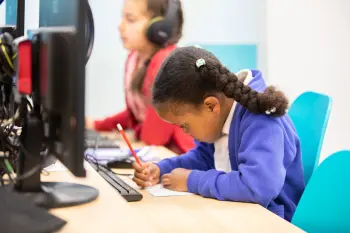
Preparing for your 11 Plus creative writing exam doesn’t have to be a worry. We help you here with 11 Plus creative writing tips and examples to prepare you for the exam. We're here to help you practice and improve your writing techniques and creative writing skills so you’re ready for your 11 Plus exams .
Creative writing can be really fun – you can explore something you really want to and write about something that means a lot to you. Although, we know it can be a little bit worrying for some students that don’t enjoy writing as much or don’t feel confident in their writing skills.
So, ahead of your 11 Plus exams we want to help you prepare with these 11 Plus creative writing tips and strategies.
What Is 11 Plus Creative Writing?
The 11 Plus creative writing exam assesses a child’s ability to compose structured and engaging pieces of written work. It’s designed to evaluate a student’s fluency, imaginative capabilities, grammar, punctuation and overall ability to write creatively.
What does the 11 Plus creative writing exam include?
The 11 Plus creative writing exam is usually 25-30 minutes and could involve the continuation of a storyline that you’ll be provided with. Alternatively you might be asked to write a short piece of your own in response to a visual stimulus – this could be describing a character or writing something from their perspective, like a diary entry.
Here are some the potential writing tasks you could be given for your 11 Plus creative writing exam:
Descriptive task – continuing on a short story that you’ll be provided with, or describing a place or situation that your character finds themselves in.
Persuasive task – you could be asked to write a letter or an article with the goal to persuade the reader to feel or act in a certain way after reading it by using emotive language.
Narrative task – this would usually involve writing your own short story.
Expository task – this could involve writing an article or set of instructions designed to inform the reader how to go about doing something properly.
What are the 11 Plus creative writing topics?
Prior to starting your creative writing piece, you’ll need to have a topic. It’s important that the topic remains at the centre of everything you’re writing, as it will shape the direction of the story and the characters
You can think of a topic as a theme for your story. This can be really simple, as a simple theme will really help write a story in your own way.
For your 11 plus creative writing exam, you’ll likely be presented with a topic that you then have to write about. Often these topics will have you writing about:
Being lost or scared, capturing the feeling of being alone and writing a story about overcoming it.
Doing something exciting or achieving something impressive, the best day of your life so far.
A holiday or an adventure
Travelling to the city or countryside and what you might experience there.
Writing a short story on each of the topics above can be a great way to familiarise yourself with creative writing.
What do examiners look for in creative writing?
Successfully passing your creative writing 11 Plus creative writing exam is a lot less daunting if you know what the examiners are looking for in your creative writing.
Unlike other exams, it can be difficult to prepare the exact answers. It’s not like a sum in maths, where there’s only one correct answer after your working out. That doesn’t mean there aren’t specific things that examiners are looking for. Let’s take a look at those:
A well planned piece of writing
Strong creativity and good imagination
A fluent writing style
Good and correct use of punctuation
Good use of English grammar
Complex sentences that are broken in an easy-to-read way with commas
Good spelling
Good and exciting vocabulary
Neat, easy-to-read handwriting
You can use those things as a checklist for your creative writing. When you write practice pieces, read them back and see if you can check off everything on the list of things that examiners are looking for. This will not only highlight areas needing improvement but will also act as a confidence-building tool.
11 Plus creative writing marking scheme
Your creative writing task will be worth 50% of your English 11 plus exam paper. So, you’ll want to make sure you’re well prepared!
Part of preparing for the creative writing task is ensuring you know how the exam will be marked. Here’s what your examiner will look at when they mark your work:
The plot – you need to write a piece that’s got an engaging plot, but more importantly it needs to follow a strong beginning, middle and end structure. We’ll be getting more detail about that further on. Make sure you plan your story to ensure you have a well-structured and easy-to-follow plot.
Vocabulary – Make sure you’re using a wide range of adjectives, nouns and adverbs. Rather than describing everything the same way, come up with some other engaging ways to write something. Use a good amount of complex words that you normally wouldn’t use (and make sure you understand what they mean so you use them correctly).
Writing devices – no, your examiner isn’t looking at what pen you used to write the exam. Writing devices refer to things like metaphors, similes, tension building short sentences, alliteration and irony. Try sentences like “he was as fast as a runaway train,” for a simile example. See if you can write a few sentences that each use a different writing device to practice.
Grammar – now is a good time to start practising your grammar skills. Make sure you’re using commas correctly when you write long sentences, and that you format your character dialogue properly. There are a few common grammar mistakes that may catch you out, so keep practising.
Spelling – While avoiding spelling mistakes is good, to get great marks on your exams you’ll want to use complicated words and spell them correctly. It might be tempting to avoid complicated words if you’re not sure how to spell them but it’s actually not a bad idea to use one or two complicated words and spell them so they’re recognisable than to use no complicated words at all.
11 Plus creative writing tips and techniques
Every great writer has one thing in common – writing techniques! Everyone can develop their creative writing skills by practising these creative writing tasks.
Getting creative
If you want to write a story this should be your starting point! Have a good think about the topic for your story and the character you’ll be writing about. Take a minute to sit back, close your eyes and think about the world of your story. Can you see it?
If you can visualise the world of your story, then you’ve got a good idea to work with! Get creative about the story and think about directions that it can go, and the characters you can work with.
Planning and structure
Once you’ve got your theme in place you need to have a think about the direction of your story. Think about how your story starts, how you want it to end and then think about how you want your main character to get there.
Remember the classic story structure of beginning, middle and end:
Use the beginning of your story to introduce your character, where they are and maybe one of two of their friends. Maybe even try to set them a goal at this point, what’s something they really, really want?
Introduce the middle of your story with a problem or an obstacle for your main character to overcome. This is going to be the longest section of your story, so make sure you don’t spend too long with the opening! Think about how your character would overcome the problem you’ve introduced for them.
In the end your main character overcomes the problem that you introduced for them. Think about what they would feel, the relief they’d experience and how you can sum that up in a paragraph or two.
There are lots of different ways to write a story, but following the beginning, middle and end structure like this will really help you plan. Try to just write a few short sentences from the beginning, middle and end, then expand it out from there.
If you need more inspiration to improve your writing skills, why not see David Walliam’s top ten writing tips ?
Creative writing examples: using the senses
Remember – writing descriptively helps your ideas to really come across in what you’re writing. The person reading your creative writing piece can’t read your mind!
A great way to really set a scene in your creative writing is to use the senses:
Sight – what can your character see? Describe how the scene around them looks, and be sure to use some good adjectives.
Sound – can your character hear anything? Even if your character can’t hear anything, that can sometimes be a great way to set a scene. Or maybe your character can hear lots of noise? Either way, make sure the reader knows that.
Smell – what does the place your character’s in smell like? You can make a disgusting, murky bog seem even filthier by describing how smelly it is to the reader. We all react strongly to smells, good or bad, so make sure you’re describing them to your reader.
Touch – what can your character feel? Are they sitting on a really soft sofa? Is the cat they’re stroking extra fluffy? Describe everything your character feels!
Taste – is your character tasting anything? Of course, if your character’s eating you need to describe it. How sweet are the sweets they’re eating? How bitter is the medicine they had to take? You could even get creative and describe a smell so bad that your character can almost taste it!
Get creative when you write about senses. You don’t have to cover every sense in order, you can mix things up in a paragraph or two, and sometimes you only need to cover two or three senses in a particular scene. Make sure you’re always telling your audience what your character is experiencing so the reader can put themselves in your character’s shoes. Utilising this technique ensures the reader engages with your creative writing piece.
Fluent writing
Practice makes perfect when it comes to fluent writing. To practice fluent writing, set yourself a creative writing task as if you were taking your 11 Plus creative writing test.
Try keeping the stories short. Just a few paragraphs so you can do a few attempts. When you’re finished, read them back to yourself out loud. See if the sentences are easy to read out loud. If they’re not, it might be good to rewrite them in a way that makes them easier to say. Try doing this out loud too, rephrase the sentence so it means the same thing but is easier to say.
Reading out loud is not something you will be doing at the exam, so practicing your fluency at home is the key. Never be scared to do a few practice stories before your 11 Plus creative writing exam.
Proofreading Your Creative Writing
Finally, once you’ve finished writing and you’re happy with how fluent your piece sounds you’ve got to proofread it! That means checking your grammar, your punctuation and spelling.
Make sure you’ve only used capital letters where they need to be used – the start of sentences and the names of people and places.
Make sure you’ve used quotation marks correctly – start a new paragraph for when a character starts speaking, open with a quotation mark and then write what they said before closing with a quotation mark. Make sure you carry on writing after they’ve finished speaking with a new paragraph!
Have you checked the tenses? Make sure you’re not mixing up past, present and future tenses !
Have you used enough punctuation? Make sure all your sentences end with full stops, but also that questions end with a question mark. Space out long sentences with a well-placed comma and make sure if a character says something loudly or is surprised that you’re using exclamation marks.
Check your spelling! Are there any words you struggle with? Go back and check them to make sure they look right. If you’re really struggling to spell a word, maybe use a different one for your creative writing piece – lots of writers do this! If you do this a lot, then it might be worth doing some spelling practice.
How do I prepare for creative writing?
When it comes to 11 Plus creative writing exams it’s difficult to find something specific to revise – unlike exams in maths or English spelling, creative writing exams don’t have a right or wrong answer. So, don’t get overwhelmed by reading countless creative writing books.
The best way to prepare for a creative writing test is to practice all the key points we mentioned above. Set yourself some small creative writing tasks, practice your spelling and get some help fromyour teachers. You could also ask your parents or guardians about tuition to help you prepare for your creative writing .
We also have some creative writing book suggestions and worksheets that could help you prepare.
11 Plus creative writing examples books
If you’re looking for some books to help you prepare for your 11 Plus creative writing exam or want to find some creative writing examples, here are some of our favourites:
11+ Essentials Creative Writing Examples Book 1 (First Past the Post)
11+ Essentials Creative Writing Examples Book 2 (First Past the Post)
Bond 11+: English Focus on Writing: 9-11 years
RSL Creative Writing, Book 1: KS2, KS3, 11 Plus & 13 Plus – Workbook For Ages 9 Upwards
11+ Creative Writing
Remember to always ask a parent or guardian before buying anything online.
11 Plus creative writing tasks and worksheets
Here are some of our own worksheets that’ll help you prepare and improve your creative writing skills:
Creating characters
Creating dilemmas
Creating settings
My favourite author
Try an 11 plus creative writing tutor
If you’re worried about your 11 plus creative writing exam, that’s okay. There are numerous ways you can prepare without getting yourself overwhelmed. We’ve already covered how practice makes perfect when it comes to writing, so creative writing courses could be a great way for you to improve your confidence.
11 Plus tuition will also help with your creative writing. Explore Learning’s expert tutors can help you work on your story planning and structure, grammar, writing fluency and vocabulary.
Don’t let yourself get overwhelmed about your 11 Plus creative writing task, we’re here to help you do your best.
Tuition from £175 / month
Start your 11 Plus and Entrance Exam journey today.
Cancel anytime
No joining fee
In centre or online
Memberships to suit you
11 Plus creative writing FAQs
How to prepare for 11 plus creative writing.
Prepare by understanding the 11 Plus creative writing requirements. Engage in regular practice on various topics like adventures, challenges and feelings. Focus on grammar, punctuation, fluency, spelling and vocabulary. Always proofread and consider getting feedback.
Is there creative writing in the 11 Plus exam?
The 11 Plus exam may include a creative writing component, often lasting 25-30 minutes, where a student demonstrates their narrative and language skills.
What are the different types of creative writing 11+?
The 11 Plus creative writing includes descriptive, persuasive and narrative tasks. Studentsmay be asked to craft or add to stories, describe scenarios, write persuasive letters or informative pieces.
How do I study for a creative writing exam?
Study by practising various creative writing tasks regularly. Focus on language proficiency, structure your narratives and proofread. For tailoredsupport, consider 11 Plus tuition .
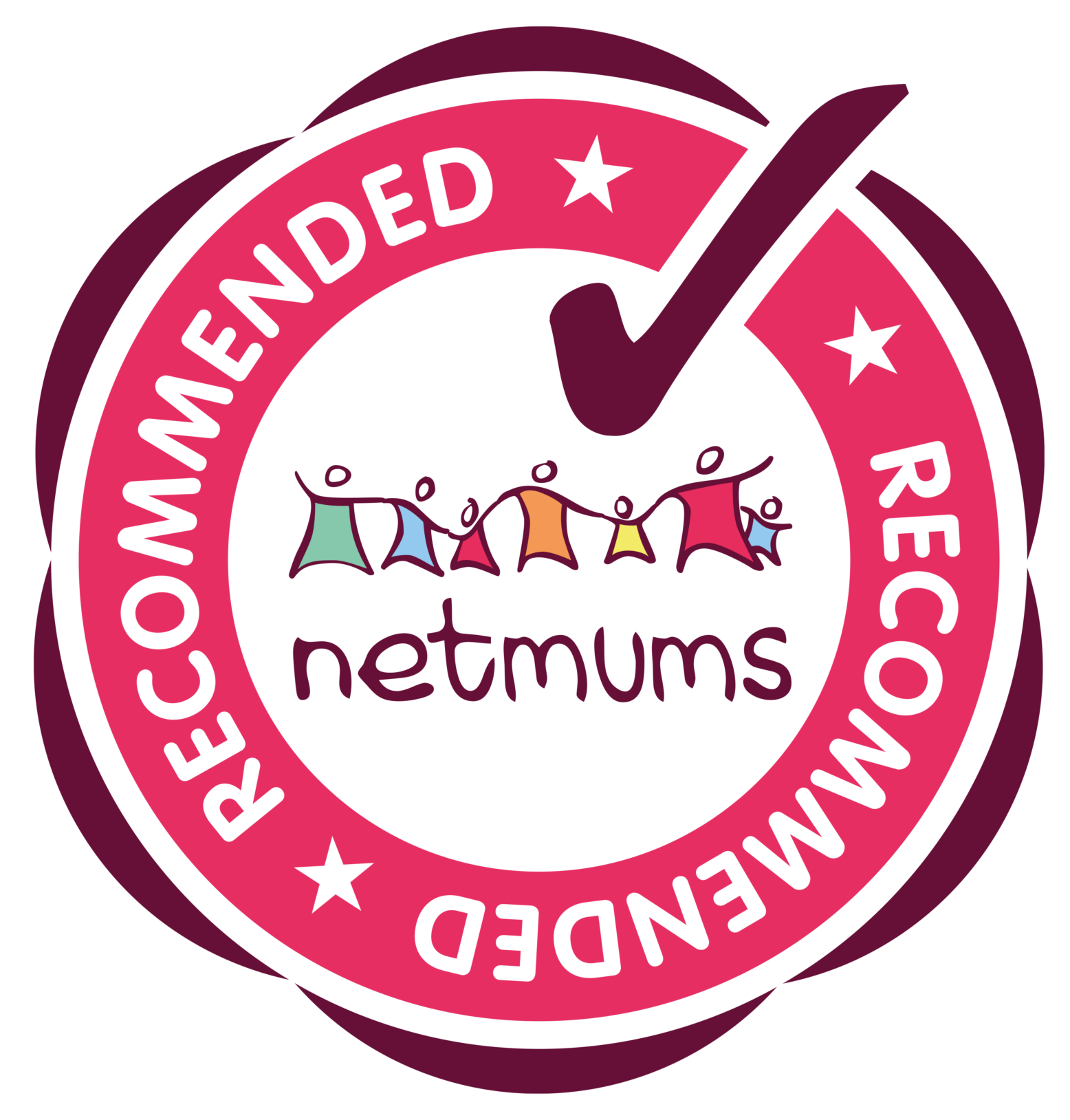
Your nearest centres
Sorry, we don't have any centres within {{distance}} miles, explore learning online tuition.
We also offer online tuition to flexibly fit into your family’s life.
Results from outside {{distance}} miles
Please select a centre.
Showing {{count}} closest to '{{postcode}}'
{{address}}
{{distance}} miles
Can't find a centre near you?
Search again.

70 Picture Prompts for Creative Writing (with Free Slides)
Share this post!
Visual writing prompts help young writers generate new ideas and overcome writer’s block. We’ve put together 70 picture prompts for creative writing that you can use in your writing centers or lesson plans to get your students’ creative juices flowing.
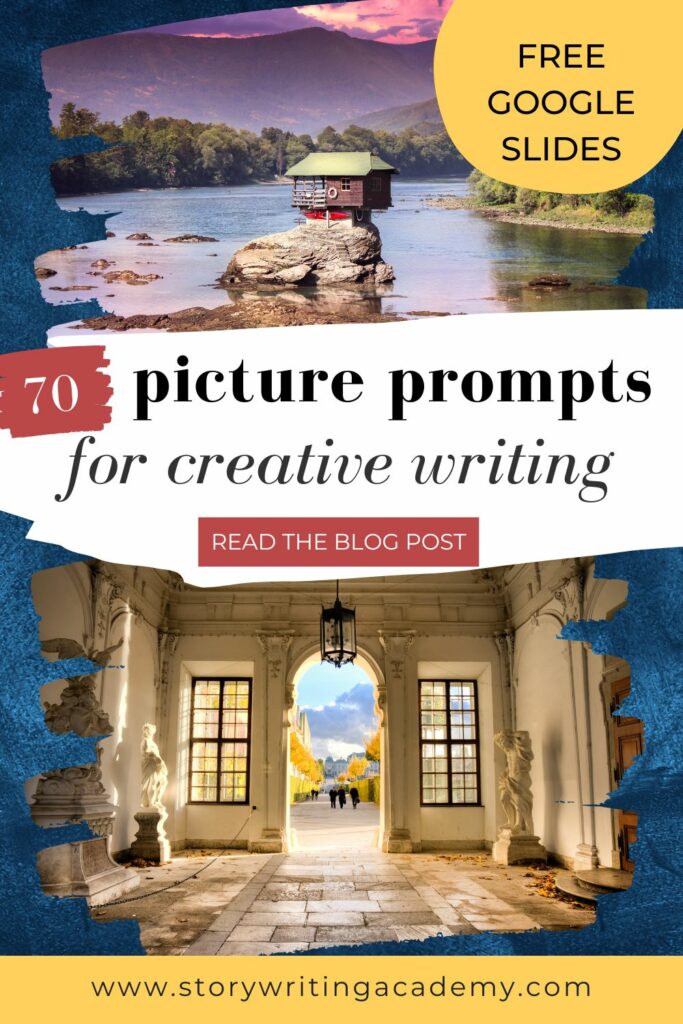
Picture Writing Prompts for All Ages
Writers of all ages and experience levels can get stuck thinking about what to write. Writer’s block is not just a challenge for reluctant writers. Even professional writers have days when they feel less than inspired.
Visual prompts can result in a vast array of story ideas. A single image viewed by ten writers will result in ten completely different stories. Even if you use verbal cues to get students thinking about the picture, each student will still write a unique response to the image.
Visual creative writing prompts are fantastic for elementary school because younger students often relate more to a pictorial prompt than a written one, but don’t shy away from using these with high school and middle school students as well. Pictures make a fun alternative to your typical writing prompts and story starters and can help shake up your regular routine.
How to Use Picture Prompts for Creative Writing
There’s no limit to the ways you can use writing prompts. Here are some of our favorite ways to incorporate image prompts into your weekly lesson plans .
- Writing Center. Print cards or writing pages with these images on them and put them in a writing center for your students to discover at their own pace.
- Specific Skills. Use story picture prompts to help kids work on specific writing skills. For example, you could work on descriptive writing by having them describe the setting of the picture in detail. Or you could work on character development by having them make up a history for a person in a picture.
- Warm-up Activity: You could pop the pictures into Google slides and project an image on a screen or whiteboard for the first fifteen minutes of class and have students work on a short story as soon as they enter the class.
No matter how you decide to use them—whether at home or in the classroom—photographic writing prompts are a great way to cultivate a daily writing habit and encourage kids to explore new topics.
70 Pictures for Writing Prompts
We’ve selected 70 of the most interesting pictures we could find for this exercise. When choosing photos for writing prompts, we look for high-quality photos with intriguing subject matter, but we try to go beyond that. We want to share images that suggest a story, that make the viewer ask questions and wonder why things are the way they are.
We want to feel propelled to explore questions like, What happened before the photo that led to this moment? What are we witnessing in this photo? What’s about to happen?
A photo doesn’t make much of a story starter if it doesn’t suggest that there might be a bigger picture lurking beneath the surface.
We hope you and your students love these picture prompts for creative writing as much as we do. If you love them, go ahead and scroll to the bottom to grab your own copy.
We’ve included a couple of questions with each picture that you could use to spark pre-writing conversations in your classroom, which can be helpful when working with younger students who might need a little more direction.

Sign Up for Your FREE Picture Writing Prompt Slides
You have successfully joined our subscriber list.
Whose cat is this? What is he looking at? Where is he?

What is the owl thinking about? Is he alone? What does he hope to eat for dinner?

Who are these frogs? What is their relationship with each other? Why are they taking photos?

How did the dog get a phone? Why is he taking selfies? What is he doing with the pictures he takes?

This cat doesn’t look too happy. What’s bugging him? Did he get too many phone calls or is he waiting on an important call that’s taking too long to come?

What do these chicks think of the dog? What does the dog think of the chicks? Do you think they can communicate with each other? If so, what would they say?

Where do these lemurs live? What are they looking at? What is something unusual that might happen to them?

What is this fox doing? Is he yawning and stretching or is he trying to scare someone away? What kind of mischief does he like to get up to?

Is this wolf alone? If not, who is with him? What is he planning to do? Does he have a family to feed or protect?

What is this child doing on the laptop? Can he actually read and type or is he just playing? If he can read and type, how did he learn that at such a young age? What other cool things can he do?

Where is this woman? Is she lost? How did she get to this street? What interesting things might she discover as she explores this new city?

Why is the dog wearing glasses? Can he see through them? What are he and the girl doing? How does he feel about it?

Who are these two little boys? What is their relationship with each other? What is the teddy bear’s story?

Who are these children? Why are they running? Is it a race or are they playing a game? Who’s going to win?

Whose horse is this? Does the little boy own it or does he just visit it? Can the horse talk? How does the boy feel when he’s with the horse?

What is this boy reading? Does the book have magical powers? Does the boy? Do the stories in the book become real or does something else special happen?

Where is this man? How did he get there? What is he looking for?

Who is walking over the bridge? What’s on the other side? Is it worth the risk?

What are these people doing on the elephant? Where are they? Are they tourists or is the elephant their pet? What would life with an elephant be like?

Who made this map? It looks old. Has it been hidden away for a long time? Who discovered it and how? What does it lead to?

Whose typewriter is this? What important or secretive thing might they be working on? What could happen if the wrong person finds their work?

Who are these three stuffed animals? Are they living? What is their story?

Whose ukulele is this? Why did they leave it here? Who might find it?

Where is the owner of the bike? Where does this path lead? What if the bike’s not there when the owner returns?

Whose shoes are these? Why did they leave them here? Why are they so dirty?

Who was reading the newspaper? What was the most interesting thing they read? Where have they disappeared to?

Who put this sign on the old truck? What do you think of it? How did the truck end up in its current condition and location?

Who set the table? Who are they expecting? What special occasion are they celebrating? What could go wrong?

Whose birthday cake is this? Are they having a party? Who is there? Who did they want to have there that didn’t show up?

Who lives here? How do they access their home? What is their life like?

Who built the igloo? Where is it? How does it feel to spend the night inside it?

What is the history of this castle? Who lives in it now? Does it have any special or magical features?

Is this barn abandoned or do people live on the property? What kind of animals might live here? How do they keep themselves entertained?

What is it like living on a houseboat? What kind of community do you think forms among the neighbors? Imagine you live on one of these boats and think about how your daily life might change. What interesting things could you do if you lived here? What would you miss the most?

Where is this hut? Who lives here? What mystery might unfold if a stranger came knocking at their door?

What is this lighthouse called? Who runs it? How often do they leave? What is the most memorable experience they’ve had as a lighthouse operator?

How did this house get here? Does anyone live in it? What would life be like here?

Where is this festive street? Are the people there celebrating something? Where is everybody?

Who lives here? How did they build this house? Are they hiding from something? What does it look like inside?

Whose notebook is this? Why did they leave it here? What’s written in it and how might it change the life of the person who finds it?

What are these women doing? What are they supposed to be doing? Will they be in trouble if they get caught?

Who might be represented in this statue? Why is she being pulled by lions? What amazing things might she have done to deserve a statue in this prominent place?

Where is this? Who is riding in the hot air balloons? Where are they going and why?

How old is this tree? Where is it? What are some of the most fascinating stories it could tell?

Where is this carousel? Who is riding it? Can you think of a special or strange story about how it came to exist in this particular place?

What are these people thinking about? What’s at stake for them? What happens if one of them sneezes?

Where are these penguins? What are they talking about? Which one of them is the leader?

What is this place? Was it designed to be open like this or was it once part of someone’s home or a public building? How have people’s opinions of this place changed over time?

Who are these kids? Is this what they’re supposed to be doing? What happens when their teacher sees them?

Who is supposed to ride in this boat? Where are they going? Will they make it there?

Is this plane special to someone? What did they have to do to get it/build it? Where will they fly to in it?

Who decorated this train car? Which passengers will fill it up? What will they talk about?

Whose skis are these? Why are they sticking out of the snow? How did their owner get down the mountain without them?

Where does this gondola go? Who rides it? How does it feel to ride it?

Who’s driving the monster truck? Why is it at the beach? What is it going to crush? Who is watching?

Where is the boat going? Who is on it? What is their mission?

What city is the helicopter flying over? Why? Is the driver looking for something specific or do they have a special delivery?

What’s the little boy doing in the boat? Is he alone or is someone with him? Where is he trying to go?

Who is in the sub? What’s it like inside? What are they doing?

Whose book is this? What’s it about? What’s happening to it?

How did that piece of land with the house on it break off from the rest of the world? Why? Where is it going? Is anyone in the house?

Who is this girl? Where is she? Who is she shooting at?

Where does this scene take place? Is the lizard/dragon good or bad? What is its relationship with the girl?

What do these books represent? What kind of world is this? What (or who) is inside the books?

What are these dinosaurs discussing? Where are they? What do they do for fun?

Whose cottage is this? Do they still live there? If not, where have they gone? If so, what do they do there?

What is the moth thinking about? Is it alone? What’s the biggest challenge it faces in this moment?

Who is the owl looking at? Has it read these books? What is its greatest talent?

Where are these trees? Why are they pink? Do they have any special powers or features?

What do you think? Which kind of pictures do you like best for creative writing prompts ? Let us know in the comments.
Tuesday 5th of March 2024
I LOVE these! My daughter has always struggled with written story prompts and an internet search this week convinced me of the value of picture prompts for reluctant readers/writers (https://youcanjournal.com/journal-picture-prompts/ if you're interested!). I'll definitely be using these to help improve her writing skills. Thanks so much!
Tuesday 26th of December 2023
I think the idea of using picture prompts is a great idea. It initiates oral language thus building vocabulary. It allows lends itself to students working in small groups to stimulate new ideas. The prompts engage the students and gives the teacher the opportunity to focus on specific writing skills.
luke elford
Wednesday 13th of December 2023
cloey mckay
Tuesday 17th of October 2023
I tried this with myself and my 6th-grade students, and they love it. it gives room for so much creativity.
Nayyar Abbas
Tuesday 30th of May 2023
This is very good idea and it really works, viewing these one try to think one's own way that what these pictures are telling or asking? I also recommend that this idea should also be given to the students for building their creative instinct.
Privacy Overview
The Only 10 Creative Writing Prompts You Need
by Joe Bunting | 55 comments
You get better at any skill through practice. Prompts are a great way to practice writing (as you might imagine, we're really into practice here), and in this post, I have ten of our best creative writing prompts.
Try a few out, and if you're ready to take the next step in your writing, check out our 100 Best Short Story Ideas .
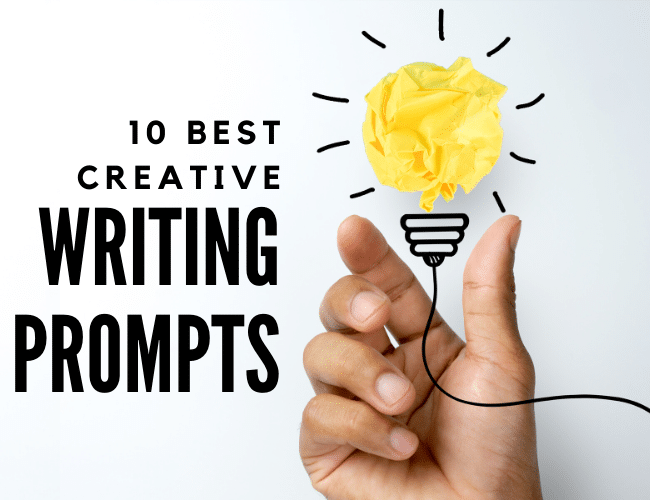
How To Use These Creative Writing Prompts
At the end of every article on The Write Practice , we include a writing prompt so you can put what you just learned to use immediately. And we invite you to share your writing with our community so you can get feedback on your work.
The Write Practice is more than just a writing blog. It's a writing workbook , and we think it's the best one on the Internet (of course, we're a bit biased).
One of the most important parts of practice is getting feedback, and we want to help YOU get feedback on your writing. To do that, choose one of the prompts, write for 15 minutes, and then copy and paste your practice into the box at the bottom to post your practice in our forum for feedback. You'll be able to read others' practice and give feedback too.
And if you want even more prompts, you can download our workbook, 14 Prompts , for free here (it's normally, $5.99).
Our Most Popular Creative Writing Prompts
Why not try using two or three of these creative writing prompts in your writing today? Who knows, you might even begin something that becomes your next novel to write or short story. It's happened to Write Practicers before!
Enjoy the writing prompts!
My 3 Favorite Writing Prompts
Write about a time you felt out of place, awkward, and uncomfortable. Try not to focus on your feelings, but project your feelings onto the things around you.
Write about a ghost. How do they feel about the world? What do they see and hear? How did they become a ghost?
- Your characters haven’t gotten any sleep. Write about why, and how they respond to being sleepless.
Now, let's look at the rest of our favorite prompts!
1. Grandfathers
Write about a grandfather, maybe your grandfather or your character's grandfather. What memories do you/does your character associate with him?
See the prompt: Grandfathers

2. Sleepless
Your characters haven’t gotten any sleep. Write about it.
See the prompt: Sleepless

3. Out of Place
See the prompt: Out of Place

Write about longing. How does it feel to go about a normal day when your character wants something else?
See the prompt: Longing

5. Write About Yourself
Write about yourself.
See the writing prompt: Write About Yourself

See the prompt: 3 Reasons to Write About Ghosts

7. Road Trip
Write about a road trip. Is your character escaping something? Is your character looking for something? Hint at the thing without telling us while describing what the character sees.
See the writing prompt: Road Trip

Write about the morning. What are your character's morning routines? What is special about this morning?
See the prompt: Morning
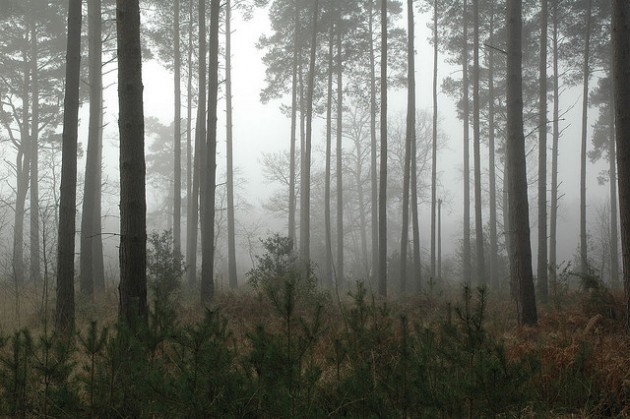
9. The Beach
Write about the beach. Is your character reflecting on something important that has happened to them? Describe the memory while overlaying the sights, sounds, and smells of the beach onto them.
See the prompt: The Beach

Write about autumn. Natural surroundings can bring up old memories and odd feelings. Describe what your character sees, feels, and most of all does.
See the prompt: Autumn

Do you use writing prompts in your writing? What is your favorite prompt for ideas? Share in the comments .
For today's practice, choose one of these prompts and write for fifteen minutes . When you're finished with your practice, share it in the Pro Practice Workshop . Don't forget to leave feedback for three other writers. Not a community member yet? Join us !
Happy writing!
Joe Bunting
Joe Bunting is an author and the leader of The Write Practice community. He is also the author of the new book Crowdsourcing Paris , a real life adventure story set in France. It was a #1 New Release on Amazon. Follow him on Instagram (@jhbunting).
Want best-seller coaching? Book Joe here.

55 Comments
It usually takes the living to confirm you’re dead. That’s why Saginaw didn’t know for months he’d passed. He was a hermit, had lived alone out in the woods for years. He still isn’t sure how or when he died.
After it happened, he continued to get up every morning and head out to the woodpile. Chopping was his release, his balance, his yoga. The repetitive grabbing and swinging and cracking and discarding brought him harmony.
Until the day he realized nothing was happening.
Like every other morning, he grabbed for the axe handle. This time, he noticed his hand passed right through it.
“What the hell?” he said to himself.
He looked down and saw the log cabin through his body, and knew he was dead. Thinking back, he realized he’d probably been dead for awhile. The familiar weight of the axe was a distant memory. He’d been grabbing and swinging and cracking and discarding nothing. He was going through the motions because they brought him peace.
Saginaw wasn’t sure what a ghost was supposed to do with his free time. He tried strolling through the woods and watching animals. They never spooked like he expected. It was boring.
Within days, he realized how much he missed his chopping. He returned home and tried doing it like a mime – empty hand reaching up and striking down on nothing. But now it made him feel useless.
According to the books he’d read during his life, the dead had the ability to interact with the real world. He practiced, trying to control things with his translucent body. He found that he could create a type of wind with his movements. Grass would sway as he ran by and dandelions would shed their cotton if he swooshed his hand over them.
That was the most he could do; wind would never carry his axe. Ghosts couldn’t shed tears but it didn’t stop Saginaw from crying.
He cried until he was angry. In a rage, he jumped up and, growling, grabbed the axe. It flew up with his hands.
“Oh my God!”
His anger vanished and the axe slipped through his fingers. He tried picking it up again, but it refused. Saginaw grew furious at his futility and kicked at the handle. His foot caught the wood and Saginaw realized what was happening.
His raw anger fueled the power to move objects. The only way to do what calmed him was to lose his calm. A total catch-22.
Sag fell to the ground. He’d never thought much about the afterlife. Glancing at the axe, he wondered, as dread lit fire to his insides, exactly where he was.
I like this piece a lot. It’s like a little story. That line, “Chopping was his release, his balance, his yoga.” is very telling, the yoga bit completing it beautifully. Thanks for sharing.
An interesting take on life after death. What is it? Even when dead, the dead don’t know. A question to be never answered. Adelaide
Brilliant post. I love just starting with a prompt and letting my muse find her way. I could pick any one of these starters and write a series of short pieces. And then voile I have a mini collection to create into a mini e-book. Wow. You’ve just experienced my ‘light-bulb’ moment. I now have an idea for some free giveaways to my potential readers.
After a couple of weeks of dull creative urge, this post has just put a surge of creative current back in my circuit. Thank goodness for that. Thanks Joe for the inspiration.
Thanks so much, Dawn. So glad this got your creative juices flowing! 🙂
I’m book marking this page, what a great post.
Here’s what I wrote.
The beach is empty. On a beautiful, perfect day, with a sky of crystal blue, the beach is empty. You can hear the surf slap against the sand, and the cry of gulls overhead. The white, fine sand stretches before you, so bright you have to squint against it. The day is hot, but not sweltering, and you marvel at the privilege of having the beach all to yourself. There is nothing here but, you, the gulls and the sound of the waves. The coconut smell of the lotion you are applying, the red of the beach towel laid down. You wonder if you should have brought a book, if you ought have left the ipod in the car, but then you sit down, watch the waves ebb and tide against the wet sand, and let the song of the sea lull you. A fleeting thought of awe wanders into your mind, at the quiet, extraordinary way that nature has, going on without human observation. The sea will always lap against the shore. The gulls will nest in the brush and seek their dinner from the sea. Even the fish, unseen, will make their homes and hatch eggs, all without anyone watching. It all continues without human eyes upon them, and it is marvellous. And then, in a moment like this, a perfect bubble in time, you might be allowed to witness it. Watch the gull walk along the rocks, its black shiny eye on you, watch the rhythmical way the waves roll and turn. See the crab burrow out from the sand, crawling along the shore.
And then in an instance, the bubble is broken. The moment shattered as the high voice of a child comes laughing into the sand. A couple follows close behind, their voices low. They make their place a distance away from you, but it is too late. The moment of grace with nature is over, the human world has once again inserted itself and the beach is no longer empty.
I love the beach. And I totally appreciate those moments/ times of immersion into the whole wonder of life at lands edge.
And then being slapped back into the moment by the sound and presence of humans.
Nice writing. Thanks for sharing.
Thanks for the feedback.
I loved this piece! Your wonderful word choice and clever phrasing helped to create a very vivid image of this gem of a beach, in my mind. It really sucked me in, so much so that I couldn’t help but feel a sharp twinge of sadness and disappointment when the human presence disrupted it all and popped the “perfect bubble in time”. Thank you for sharing such a lovely piece.
Thank you Catherine! That certainly is encouraging, and I appreciate the feedback.
You’re very welcome! I’m glad I could be of some help. Best of luck in all your writing endeavors!
No idea if you will find this a year later.
I was reading this and at first I was like thinking. I have read this before. Crystal blue sky. Generic.
And then I hit the line, “you ought have left the ipod in the car”. And it suddenly became personal.
In Drawing on the Right Side of the Brain, the author talks about how children draw symbols. You say draw a person and they draw a stick figure. For an adult it is generic. They don’t actually look at what they are drawing.
The first part of that you write is like that and then suddenly small details, personal details, start to appear and the piece becomes much more powerful. In my opinion you drop out of the generic symbols of a beach and into your personal subjective view point, and the writing gets much better. More visceral.
For me I would encourage you to go back and either drop or rewrite all the generic parts like crystal blue sky, which sounds symbolic, to something personal.
I love this…..
I picked beach.
Soft morning mist Gently rises to kiss Fan of dawn’s rays And slicing through silky southern teal Nullakai’s finger, long dark green Invites me in. Briney effervescence clings To salty diamond necklace Criss-crossing my Summer freckled chest And aquamarine mesmerised My sleepy sea stained eyes Sting to a blur As swollen turquoise curve Breaks this office face Drowning the frown Before it begins I am fresh again fresh This Monday morning.
I’ve been intending to post a comment, but I don’t know much about blank verse or any other poetry other than Japanese short-form poetry such as haiku. What I notice about this poem is that some of the lines read awkwardly because of the lack of an article: a .
“Fan of dawn’s rays,” I think would read better if it were “A fan of dawn’s rays.” Same with “To salty diamond necklace” which would be better as “To a salty diamond necklace.” Again, a missing “a” with “As swollen turquoise curve.” Also, I don’t understand “And aquamarine mesmerised.” .
Otherwise, it’s a beautiful scene and a wonderful way to greet a Monday morning. Adelaide
Thanks Adelaide. Great feedback. Aquamarine should have been two words – aqua marine. I guess I was trying to imply ocean water in a sparklier, gem like way, and taking poetic licence/ freedom by playing with the two words.
Much appreciated. Dawn 🙂
… And I picked ‘morning’.
Dewey pearls lace the graceful dance of understory and spider webs weep fine filaments between sleeping boughs and awakening flowers. In hushed light creamy tones, sun softly shines awake dancing through curls of morning mist. And my body slips into the day, barefoot upon the forest floor.
Early birds sing through the dawning light, their excitement bouncing from leaf to branch. They pause to consider my gaze then flutter on their busy way.
This flesh of mine in autumn beige seeks a deeper walk, into the maze of awakening trees with liquorice trunks black and damp with dew.
Only the forest is talking; the world is yet to yawn and stretch it’s sleepy limbs out of night warmed sheets. I am alone in full company of the promise of a new day.
Strings of purple Hovea buds embrace my passing by, an ephemeral bracelet for one tiny moment, and leave a trace of sparkling silver pearls moist across my wrist. This freshness I bring to my lips. This gift I gently kiss. And I love myself awake.
This sort of reads like a poem, in fact a re-read proves it is! I almost missed that, I was reading too fast. Thank you for sharing.
Hi Giulia It was just a quick 15 minute muse, but yes, now that you’ve pointed it out it does read like poetry. Thanks for that feedback, I can have a play with it and offer it some shape.
Did you like it? Or was it a bit to poetic and slow? I’d appreciate your feedback. Thanks Dawn
Oh, I did like it! I think the structure shape of the poem needs a bit of polish, it might read more smoothly if the lines were shorter. I actually like the languid feel it has, it expresses morning and nature well, how everything seems expanded and slower when you’re really looking at the tiny marvels found in the natural world.
Grandfather.
He’s not a grandfather and I’m terrified he won’t become one. He’s be a great one. I’m positive.
I really shouldn’t be afraid of hospitals. I grew up in one–Dad’s a doctor. I’m familiar with the tile floors and nurses knowing my name and my nickname. But now I’m afraid. He’s not in scrubs but instead in a gown. A nasty butterfly needle is digging into his skin. They always say it’s a small needle and won’t hurt. Don’t believe them. I’ve had nightmares about this. About driving from Mississippi back home because he’s had a heart attack. He’s never had any heart problems so that fear should be irrational. I should have been praying a seemingly ridiculous prayer. It’s a good thing I was praying even though I didn’t know why. Unknown prayer saved his life. As I sat with him on the hospital bed I felt so strange. I felt 7 and still desperately needing my dad. I can’t do anything without him. I don’t know how to be me without him. At the same time I felt grief for my future children. If he’s not better then those make believe kids will only have my stories to go on. They’d never believe me when I told them their grandfather was the greatest man to ever live.
My brothers have stories. Absolutely hilarious stories of my dad that they both recounted on the way to the hospital room. As they did I realized I don’t have stories. I have facts, subjects, events. I have moments.
-Reading Harry Potter together and standing in line for each book release.
-Agatha Christie -Keeping Up Appearances -“I think I’ll go pay that bill.” “You know what I think you should do?” “What?” “Go pay that bill.” “Oh my gosh you’re brilliant!” -We are both left handed.
-How to swing a bat.
-How to replace a door.
-How to drive.
-Telling me his “M.D.” stood for “My Daddy.” -His Martin acoustic guitar -The smell of cedar wood and rain when he made duck calls in the basement.
I don’t have hilarious stories of my dad I just have a lot of lessons. He taught me in every moment we spent together. Those moments were hilarious but I don’t think I could recreate them to become stories.
I want him to be a grandfather because I didn’t know mine. He has to show my children how amazing he is because how could I possibly put that into words? He’s my very best friend. He thinks I can do absolutely anything. I know that I can because a quick phone call to him clears up any questions.
He always has the answers.
I need him to be a grandfather because I need him to keep being my dad.
That was wonderful, simultaneously heartwarming and heartbreaking. I love it
Thank you!!!
A warm tribute to your father. I hope he got well. adelaide
I really love this piece.
I chose morning as it was a few weeks ago up here in upstate NY.
FROM MY WINDOW
Spring is gearing up. At the far end of the front yard, where it rises to meet the road, crocus splash yellow, white and purple. Stems on the lilac bushes are knobby with green tipped leaf buds. Daffodils, some just poking through the soil, some already at their full height with swollen flower buds ready to burst. Through the open window the breeze is damp,ripe with the fragrance of wet dirt, last year’s leaves and manure from the field around the bend. There are busy calls from unseen birds and announcing honks from another gaggle of geese. There is, in this moment, everything that there is.
coffee brewing the anticipation before the first sip
Lovely. I can almost feel myself standing beside you at the window. Great use of all the senses Adelaide. Thanks for sharing. Dawn
This post is in response to OUT OF PLACE
A sorority beach house. Full of surging hormones and testosterone from the young women and the visiting frat boys who have a house down the road. Some girls have wandered there to see what’s going on. Most likely the same things that are going on here.
It’s Easter Break at Laguna Beach. A week of fun, fun, fun! For some. For most. But not for the dark haired girl trying to play poker with two other girls and three guys. Trying to play because she is new at the game and loses every hand. She also loses at the witty, sexually laced repartee between the other five players. After four games and down to her last 10 pennies, she quits. It is not for her this game. The entire experience is not for her. She looks over the party goers. Beer, kisses and gropes are exchanged in corners. What goes on in the closed bedrooms is better not seen.
She takes a beer, her first, and her cigarettes and goes out to the beach. This is what she came for: the beach, swimming during the day, reading what she didn’t have time for when crushed with class assignments, girl talk with a few friends. Even that is a disappointment as the girl talk usually turns to boys, a topic which is foreign to her experience.
She’ll lie when she goes back to her classes. She’ll say the week was fun, a blast. Yeah. Partying every night. At least, she’ll have a tan to prove she was there.
Lovely demonstration of the odd teen, who out of place cannot even bare to bow to peer pressure. I liked the ending where she decided to lie to fit in.
Can you please tell me what a ‘sorority’ house is exactly. (I’m not from the USA.)
Thanks for sharing Dawn
Many colleges have sororities, a club of sorts to which candidates are invited to be a member. In some colleges they can be very snobbish, at least that was the situation when I was in college. My college, a small woman’s college, was more democratic, in that a student chose the soriety she wanted and was accepted in it. There was no voting on who could come in and who could not. Bigger colleges have special housing for sororities and fraternities (the male equvilent of sororities).I don’t know what other sororities did, but the ones at my college, in addition to organizing teas, parties, picnics, etc., had a commitment to do some social work for the community. Being a Catholic college we gave Catechism lessons to young childdren in poor parishes where there was a shortage of teachers to give these lessons after school
A sororiety beach house is just that: a house at the beach which the sorority rents for a time, the rent being paid for by charging a fee for each girl who wants to spend the week there. Easter week was usually a time of letting loose
I hope this answers your question. Adelaide
Thanks again Joe Due to the inspiration of this post and it’s kickstarting my creative flow (I’ve been editing my first novel), I have decided to do the NaNo July Camp.
Using some of the above prompts I am aiming to complete a collection of short stories, prose and poetic interludes. My goal is only 10,000 words. This will give me time to edit, shape and tease out detail. It’s winter in my part of the world. A cosy time to write beside the fireplace.
A brief synopsis: A collection of short stories, prose and poetic interludes that reflect on the shadows, woods, winds and ocean waves of a south coast winter.
Where nature walks deep into the rhythm of this human’s hibernating season and beckons her into conversation with looming clouds, long shadows and the low breathing reach of winter sun.
That she may see the beauty that dances between the tempest winter weather sweeping the landscape and her quiet resting inner world.
Of course I’ll still be visiting TWP daily. For ongoing inspiration and community to share with. Cheers Dawn 🙂
What a great, stimulating post! I chose the ‘Morning’ prompt.
My eyes slowly creaked open, only to squint in the sun beam that had smacked my face, arousing me from sleep. But I hadn’t been asleep…had I? I couldn’t be sure. As I groggily sat up in bed, a chill ran down my spine as the air conditioning kissed my back-drenched with sweat. The next thing I took notice of was the pounding in my chest. It seemed that my heart had been beating wildly only moments ago, and now it was doing its best to resume normality. Yet that wasn’t all. There was a dull, aching that had come with the wild beating. In my mind’s eye, I could see a face, slowly fading from sight. It’s features were slowly becoming more and more obscure. Who was he? Why did I care? Hardly a minute had passed before the man’s face vanished from my mind entirely. Birds began to chirp cheerily outside my window, and without knowing why- a tear slipped down my face and darkened the baby blue sheets. I struggled to search my mind for the image of his face once more, but there was nothing. There never would be- except for the lone tear that spotted my sheets.
Great start that draws your readers in; beginning of the day, mysterious dream image evoking intense emotion, loved it Catherine!
This is amazing.
I chose the sleepless prompt. I kind of went deeper than I was trying to.
She tossed. She turned. Her eyes wouldn’t stay shut. They would stay open either. She blinked. The dark of the night filled the room, and the smell of dust covered everything. The blankets on the bed were everywhere, and one the pillows had been thrown on the floor. The rest of the bedroom looked neat, beside the dark and glooming aroma.
She had a specific person on her mind. Someone she had been wondering about for awhile. She didn’t have a crush, nor were they enemies. The person was just very… normal. She tried getting her mind on something else, only to be reminded on him somehow. The smell was like him, the smell of the room.
She turned again, thinking of what happened that day. He had asked her a strange question; one that’s wasn’t like trying to know someone. It was just strange. “Do you like country music?” His words echoed in her mind. She had said no, and then he had left, without any sign.
He wasn’t exactly a normal boy, but he wasn’t weird either. He wears black often, but sometimes he’ll wear pink. His hair is often messy, but sometimes, for no reason, it’s perfectly neat. He manly sticks to keeping quiet, but sometimes, he’s the most active in class.
Thank’s, it is very creative! Besides I found this writing prompts tool http://youressayhelper.com/writing-prompt-generator.html very helpful!
Found this post and took a stab at the grandfather prompt.
I never knew my grandfather.
A man walks towards me. Top hat, suit. Black against white mist. He is smiling. He is a handsome man. He does not take a step but if he did they would be long strides. Purposeful, directed. He is tall but does not tower over me. And he is looking at me. Not at me, not through me. At me. At the deep sliver of me before the echoes of memory. And smiling. A smile that reaches from ear to ear. A smile that starts in the gut and ends in the eyes. A smile that leaves me quivering inside my own skin. He knows my secret.
How does he know. What if he tells someone.
He sees me. No, he sees him. The lie of lies. He sees past the lies. He sees the lies I tell myself and he laughs. A laugh from the belly that shakes the mists he reaches out from.
Small lies. Self-pity. Worthlessness. Fear. His eyes move past them, not even bothering to swat them aside.
Something rests on my heart.
I was inspired when I read this post and I immediately made a story. However, I came up with my own prompt: Jealousy.
I keep finding the wrong in her brown capturing eyes, hoping to see the darkness she has yet to reveal. I keep finding the treason in her refined movements, the plan in her bright smile, the sting in her sweet words yet I couldn’t find any. She is the sun, and everyone is flocking around her warmth but I am blinded. My eyes sting and my breath caught within my throat, afraid they will notice the insecurities blowing in and out of my lungs. Afraid to move for they might see the urge to block their words worshiping her, slowly pressing my stomach, burying me into the depths of the dark place I wouldn’t want to be in but I’m still falling, falling, and falling. I have to avoid the mirror and the vision of myself beside her, comparing and losing. I have to refrain from looking as it would pour fuel into the fire and I have to stay away, far away from her. She pleaded why am I keeping distance, as I remember how my stomach churns every time they prefer her, how I’m always in the shadow of her glow, and I retreated leaving her groping in the dark for an answer, like how I’m pathetically groping for salvation. I cry that night chanting apologies; I am lost and I have to find myself, hoping to be stable and solid so my molecules will not easily drown in hers. I am me and she is her as they point my parts apart from her. A heterogeneous system, as one, as sisters, as best friends. But not today. Today I’m lying on the thorns of my selfish inexcusable reasons devoid of any strength to get up. Today, I’m still avoiding the traces of her on my notebook and my map. I’m sorry, you are the best and the worst that has happened to me and for that pitiful reason, today at 10 am in our small warm coffee shop I will not be there. I will be somewhere else, a place cowards run off to, somewhere you wouldn’t have to go.
——-your undeserving best friend: jealousy
I just re-posted a post on my FB page about using images to help you write! https://www.facebook.com/A-Page-A-Day-Lets-all-write-just-one-page-a-day-103970129720405/?fref=ts I used many images to write my novel. El Salvador’s civil war was the most photographed war in history. I bet it still is! Thanks for a great post! Sherrie Sherrie Miranda’s historically based, coming of age, Adventure novel “Secrets & Lies in El Salvador” is about an American girl in war-torn El Salvador: http://tinyurl.com/klxbt4y Her husband made a video for her novel. He wrote the song too: https://www.youtube.com/watch?v=P11Ch5chkAc
“Morning”
The sun shone through a small gap where the panels of curtains met. Usually the curtains did their job and blacked out any light, but the angle she laid in bed today was the perfect place for the sun to shine right on her face. It beamed like a laser through her eyelids. She turned over in bed attempting to evade the warm light. Her subconscious knew something wasn’t right. She bolted upright and scrambled to find her phone which served as her alarm clock. Dead. What time is it? She ran to the kitchen to look at the clock on the oven. It was blinking 3:38. This can’t be right, the sun is shining bright as noon. The power must have gone off sometime during the night. She hurried back to her room to plug in her phone. It seemed like hours as she waited for it to charge enough to turn on. Panic started to set in. Finally! The iPhone beamed back to life. The clock on the home screen read 7:22. She was late. Late for her first day at her new job.
I really enjoy creative writing and I hope to get better at it. I always have different ideas running through my head but I never actually put them on paper. I chose the “Morning” prompt and I feel like this is actually pretty good! Morning The warm rays of the sun filled the room as Vaughn lay their asleep. It was about 10:45 in the morning, and Vaughn was still exhausted from yesterday’s job searching. He had been fired about three months ago and has been budgeting his money the best he can. Natalie, his girlfriend, has been giving him small amounts of money here and there. Bzzz, Bzzz…his phone starts ringing, causing him to wake up from his deep sleep. His violet eyes scan the screen of the phone. Vaughn sighs, noticing it’s a text from Natalie. He puts the phone back where it was and snuggled back under the warm covers. As soon as his platinum hair hit the pillow- bzzz, bzzz, bzzz…this time it was a call. Vaughn released a sigh of annoyance, noticing it was Natalie again. “Hello”, he answered. “Vaughn I cannot believe you forgot again, you know as much as I help you, you could be a little better at remembering things”, Natalie yelled through the speaker. “What are you talking about, Natalie, we didn’t plan anything today! You said you were tired” Vaughn explained, his patients wearing thin. “I just texted you and said ‘Meet me at the new café’, I’ve been waiting here for thirty minutes and you’re still not here!”, Natalie whined. “Okay, okay, I’m on my way Naty” Vaughn threw the covers off himself and started getting ready. He wouldn’t have heard the end of it if he didn’t go. While he was pacing through his apartment, he knocked down a picture frame. He bent down and froze when he saw the picture it displayed. It was him standing beside a girl with brown hair and tan skin. Her smile was gentle and calming and her violet eyes sparkled with joy. Vaughn gently held the frame and whispered,” Cerene…”. *Flashback to High School* “Will we still talk like we are now, Florida seems like its pretty far”, Vaughn asked nervously. “Of course we will, silly, you’re my best friend!” Cerene Exclaimed. Vaughn and Cerene had been friends since elementary school. They were always together. Unfortunately, Cerene’s family traveled a lot. Her father’s job required them to move from time time. Vaughn didn’t like this at all, sure he had other friends, but they weren’t his best friends like Cerene was. She was always there for him, even when he was sick, she would bring tea, movies, or just sit and talk with him. Everyone at school thought the two liked each other. It was true Vaughn liked Cerene but he never knew how she felt about him. Cerene was leaving a week after graduation. As the day grew closer, Vaughn noticed that Cerene just wasn’t her cheery self anymore. Instead she seemed depressed and disconnected from the world. He’d find her staring off into the distance a lot like she was thinking. Three days before she was supposed to leave, Vaughn got a call from Cerene. “Hey, Cerene, how’s it goin’”, Vaughn answered. “Hey Vanya…I..um..I have some bad news” Cerene explained. Her voice was shaking, Vaughn wondered if she was about to cry. “What is it, Cerene” he asked, worried. “I’m…leaving earlier than I thought”, she said sadly. “But why, what happened to te week after graduation” he pleaded. “I’m sorry, Vanya, I tried to get extra time but my father said we have to leave earlier than expected!” she exclaimed. “Its okay, Cerene, its not your fault, but can I see you before you leave, please”, Vaughn asked with hope. “Of course, silly, you’re my best friend!” Vaughn snapped out of day dream when his phone started vibrating again.
Today was a fresh day, leaves crunching beneath my boots and the sun beams stretching out for a new morning. I usually had these walks by myself, oftenly I’d get looks from my friends of concern and they had always questioned me as to why I never invited them along. But me and the Autumn season are meant to be alone, we’re meant to be one.
My nose was red, and I had an occasional case of the sniffles not that I was really bothered about it. Nevertheless it might not be winter but the whispy breeze, and the coldness of the astomophere was indicating that it was near. I paused at the tree, in the middle of a meadow. A meadow packed with tall soft grass, flowers that were in the process of blooming and the silent birds that peacefully flew on by in the bright clear sky. I parked myself down, my back resting on the bark of the old tree my knees tucked into my chest while my arms rested on top of my knees.
I felt my hair blow with the sudden blast of wind, like waves of an ocean as I felt tears prick in the corners of my eyes. Truth is, Autumn was the sad season. The season where I lost my younger brother, Despite his falling sand the countless times he was called names and picked on by the other children, he always managed to smile and laugh with me, which you wouldn’t expect from a brother and sister. After he passed I always came here, somehow his presence lingered near. My eyelids eventually gave away to the tiredness from my sobs, my throat was sore, so just as I fell asleep, a small murmered whispered in my ear, “Sweet dreams, Sis.” And a small smile creeped onto my face, as well as the last falling tear.
This is lovely. I believe it to be true.
Beach Do you remember the last year when I called you and requested to see me at Clifton beach in the evening. You might have forget that call but tell me have you forgot that last meeting also? You might have forgot that meeting but tell me have you forgot our last dance on the sand. The sun was setting and the sky turned red as if it had not slept since many last nights. Do you remember when your left foot was kissing my right foot and your right my my left. Do you remember when we danced on the music of sew waves. Do you remember when a wave touched our feet took the sand from beneath our feet away with it. Since that day I am hanging in the air. I don’t have anything to place my feet on.
Using the prompt, “Road trip” and this is what I came up with.
11:00 in the morning, my wheelchair is securely locked in the mechanism. I’m semi nervous and excited, watching out the window as the bus pulls away from the depot. Out the corner of my eye, I notice one seat up and over, a young boy is looking back at me. I give him a quick smile before he turns to his mother. She looks back to me then nudges his shoulder. A scolding expression on her face and speaking quietly to him him. I don’t hear what is said but I’m sure I can imagine her words. Parents, how they stifle a child’s curiosity. 2:45 in the afternoon, the lift is shaky as I ride it down off the bus. I’m glad to have all four wheels on the ground. I have a couple of minutes before I have to board the next bus. Just enough time for a quick bathroom break. I’m passing the young boy again. We make eye contact. His mother is busy scrounging through her purse. Oops, I bet she lost her tickets. I pop a wheely as I ride pass the boy and a bright smile lights up his young face as he watches. I turn back around, looking at him and smile. Catching a glimpse of me, his mother grabs his hand and pulls him along toward a customer desk. My eyes are still on the little boy as he looks back to me once more. I quickly give him a thumbs up, then ride off toward the rest room, wheeling on my back tires. 3:00, I’d just exited the bathroom. Time to board. The bus will be leaving in 10 minutes bound for Philadelphia. I see the boy and his mother once more as I wheel myself toward the bus’s lift. Catching the mother’s eye, I remark, “He’s a bright young boy. He’s very inquisitive, nurture him well.” She manages a curt smile and hurriedly walks toward her destination and I can’t help to watch them as the lift raises me up to enter the bus. I can’t help but wonder about the man he’ll grow up to be.
this story really made my day and i would honestly consider you to become an author. I will forever cherish this story as i can relate being wheelchair bound and now have been inspired to “pop a wheely” which i will continue to do in my every day life.You are the reason i wake up in the morning
Robert i take a massive offence to this as i am also “wheelchair bound” and like to “pop a wheely” from time to time and would highly recommend deleting your comment
As a fellow wheeler, I too take great pride in ‘popping wheelies’ whenever free time shows face in my schedule. The W.A. society (wheelers anonymous) are a faction of like minded individuals who all have a great passion for the art that is ‘paralytic parkour’. I come from a long line of wheelers, must be in my genes-sorry future kids L0L! Not a singe soul has stood tall in my family for many of years now, everyday’s a struggle, all worse than the last, but my strong will and high admiration pulls me through with a little grass from my friends if you get what i mean 😉 anyway, maybe we could arrange a date sometime soon, ill send you my details for future reference.
Hey AJ, how you doing? cause im doing swell BUT i couldn’t help wondering about this faction im hearing of, i have some gnarly brain storms about a new stunt wheelchair as ive been having a lot of trouble going down the half pipe at my local skate park, i seem to be falling out my wheelchair every time i go down and cant get back up. approximately 1/3 paralytic parkourers die due to faulty wheelchairs, i hope you take my brain storms into deep consideration.
sincerely Lance.
WOW lance you seem to have caught my attention because this is a everyday common struggle of most wheelers. We wheelers have to stick together and have each others backs even when we are both struggling to find our feet quite literally! the only thing i have to live on is hope and you know what they say about hope ‘breeds eternal misery’ .
I found myself choosing the Grandfather Prompt. I felt my eyelids getting heavier as I placed my head on the car window. It was a quiet day. Even the sound of my mother and Grandmother talking seemed soothing. I was quickly brought back to reality by a voice message on my mother’s phone, from my grandfather. “I need..help…a hospital. Please come..” ,he whispered, then silence. I felt my heart drop to my stomach as his voice echoed in my head. I froze. I didn’t move. I couldn’t move… All I could do was sit there, listening to my mother trying to hold back her tears as she was speeding on a busy street. Only my younger sister shaking my arm snapped me back. “What’s going on? Why are they crying?”, she desperately asked. In that second, it hit me. We might not get there in time. I tried to hold back my tears, I tried to be strong, but I couldn’t. I could hear my heart pounding louder than my thoughts. I felt my temperature rising by the second. My tears sliding down my chin. The only thing I resorted to doing was pray. “Please, not today. I’m not ready. Not this soon, let me hug him one more time. Don’t take him from me yet.”,I prayed in silence. Then the thoughts began to come. What was the last thing I said to him? When is the last time I told him I loved him? My thoughts were interrupted as my mother slammed the breaks on my grandparents driveway. “Stay in the car.” ,my mother snapped as she ran out. The wait seemed endless. Everything felt unreal. I felt helpless. Was he dead? This can’t be how he leaves. I didn’t get to say goodbye. No more fighting over the t.v controller with him again. We would never share a piece of cherry pie again. I’ll never get another poem from him. My attention quickly turned to the door as my sister began to cry, as she realized the situation. My mother and grandmother came out struggling to carry my grandfather. I didn’t know what to think. “Where’s the nearest E.R?” , I hear my grandma yell. We made it on time. There seemed to be a weight off my chest. My grandfathers even SLIGHT breathing, was prayers answered.
After high school graduation we begin our journey, going to college; going here and there on vacations; work and exactly where we’re going isn’t clear. We can see down the road aways, sometime to the next turn, but our destination remains obscure. Often there are intersections and we glare down the different routes and make a choice and we’re off again. Job offers come and we change directions. We meet people and that may take is off in yet other directions. Then we start a family and the road seems to be long and hard. We wonder if we’re going down the right road. Will we get to nice place in the end? Will there be food and shelter waiting for us? Or will we run out of gas and be stranded, walking down the road? But we keep moving. Eventually the kids grow up and are in college and the road seems to open up and the scenery gets better. We start seeing what we think is our destination in the distance and our focus lands there. Are we going to make it – or can’t wait to make it. More intersections seem to keep the goal at bay, but we continue on. Kids are on their own road and we see them taking some of the same roads we travelled. But we make a turn and the goal is in view. We think back about the trip and how frustrating it was at the time and realize that it went by way too quickly. We long to be able to keep the trip going, taking in more sights and doing things that we didn’t stop and bother with previously. But we arrive as the sun sets. Out of gas. Cold. Hungry. Tired. And waiting for us is a huge lodge with a warm fireplace burning. A huge meal has been prepared. There is laughter, music and lots of people, many of whom we’ve known along the trip. It’s been a wonderful experience. And the talk is about the next road trip.
I absolutely love these! I just read a post about the benefits of using creative writing prompts and went looking for some to get started. Thanks so much for these!
Its been days since Ronda landed, maybe tonight she will get some sleep. Jet Lag has been a nightmare. Started the night befor the flight, woke up every 2-3 hours and could not fall back to sleep. Ronka always stresses before trips. Really she stresses before everything. The 13 hours on the plane were completely sleepless as well. Ronka rarely ever can sleep on a plane. She brought a book but did not read. She had some podcasts but didnt listen. Her focus was not good enough for any of those. Not even for random thoughts. She watched a few movies but probably doesnt remember much. At the last 2 hours she found Remi Cube on the airplane entertainment system and thats where she finally found solace. Went into a frenzy of playing until the plane landed. Ronda does most things in a frenzy. Now she’s in her parents home. Day 3 and she hasnt got much sleep. On the surface things are ok. She hasnt spiraled out of control yet. But deep inside she can feel the shift… She is not fully ok. Getting a little more grumpy and restless by the minute. A big total eclipse is happening in a few hours. The energies must be affecting. Ronda is always greatly affected with the universe arround her. The weather, The full Moons, the astrological signs. Ronda needs a good night sleep. A few good night sleeps. She needs to get back on track. She’s been doing relatively good lately.
Trackbacks/Pingbacks
- Grandfather [writing prompt] - […] For this practice, use the following creative writing prompt: […]
- Sleepless [writing prompt] - […] In this writing exercise, use the following creative writing prompt: […]
- Road Trip [writing prompt] - […] For this writing practice, use the following creative writing prompt: […]
- Summer Sun (writing prompt) - […] summer and the weather is beautiful—at least where I live. Today, your writing prompt is to write about the…
- Writing prompt: About myself | Missing Pages - […] For this writing practice, use the following creative writing prompt: […]
- Labor Day Writing Prompt - […] Labor Day is the day we honor the achievements of American workers, according to the Department of Labor. In…
- Have Fun AND Improve Your Writing Skills During Vacation - […] makes perfect. And sometimes being told what to do helps. Check out these writing prompts, or make time in…
- What Are The Best Colleges For Creative Writing | Best Colleges - […] 10 Best Creative Writing Prompts – … – … and creative writing prompts are a great way to practice…
- Want to be a better editor? - […] P.S. Still want to practice your writing today? Check out our best creative writing exercises and prompts here. […]
- 6 Writing Prompt Tips To Help Get You Started by Paige Donahue - Unproduced Screenplay Blog - […] online that provides a whole cartload of writing prompts for all types of writers every day. The Write Practice…
- Persuasive Writing: Choose the Right Words to Inspire and Sell - SmartWritersOnly - […] 10 creative writing prompts […]
- How to Overcome Writer’s Block | Krisna starr's World of dreams - […] out some sites that provide visual prompts to overcome your writer’s block. Here are a few: Write Practice, Slideshare,…
- All About Commas - KDP Amazon - […] (yes, even me). For the next fifteen minutes, write the next part of your WIP (or use one of these writing prompts)…
- So Far So Good… Sort of. – Cube Chic - […] my month of writing I chose a list of 10 prompts with a 15 minute timer, I used this…
- Inspire Your Writing: Underrated Science Fiction – the hellroom - […] Popular appreciation for science fiction literature has been on the rise for the last thirty years, but the genre…
- The Writer's Guide to Blogging - […] writer gets stuck sometimes. If you find this happens, writing bursts can come in handy. They’re neat little exercises…
- Bang2Write | 6 Writing Prompt Tips To Help Get You Started - […] online that provides a whole cartload of writing prompts for all types of writers every day. The Write Practice…
- Sunshine, Dog Treats, and Slacking off – CraftsandCrunches - […] finished the 10 prompts from The Write Practice, although I didn’t love the last two as much as I…
- Improve Your Writing When You Don’t Have Time! – Everyday Musings - […] Click here to try 346 different writing prompts. Click here to try the best creative writing prompts. […]
- Proper Guide To MLA Format Paper With Cite Need - […] students all over the world find it difficult to format a thesis research reports so they do not need…
- One Writing Prompt That Works Every Time - […] Next time you’re stuck, use this writing prompt. […]
- Writing Prompt: Monster - […] all you need to give your writing a boost is an inspiring writing prompt. And when it comes to…
- 3 Writing Prompts to Tap Into Your Creative Well - The Write Practice - […] Writing prompts are wonderful tools to get the words flowing. Today we are going to look at three tools…
- 5 Creative Writing Prompts to Break Your Writer’s Block - The Write Practice - […] I am going to talk to you about how to break through whatever is stopping you from writing by…
- How to Use Six-Word Stories As Writing Prompts - The Write Practice - […] Then I wrote my first six-word story—and it was really easy, not mention fun! Once you write your first,…
- 5 Out-of-the-Box Writing Prompt Sources - […] Fortunately, you don’t have to just sit there and take it—there’s ways to take matters into your own hands…
- 14 Prompts: Writing Prompts for Surprising Creativity - The Write Practice - […] writing prompts and chapters are based off the best of thewritepractice.com, edited, expanded, and framed by a […]
- 7 Haunted Halloween Writing Prompts - […] BOO! It’s Halloween—what better day to write some spooky stories? Sharpen your pencil and take a stab at one…
- Writing Prompts About Cats - […] thought, wouldn’t it be cool to write a story from the perspective of a cat? So I developed this…
- 10 Memoir Writing Prompts to Get You Started - […] sure how to get started? I’ve got you covered. In this post, I’m sharing my ten best creative writing…
- How To Write Sounds: Onomatopoeia Definition and Examples - […] Ready to put onomatopoeia to use? Great! Here’s your creative writing prompt: […]
- Semicolon: The 2 Ways to Use a ; - […] writing with semicolons. Use the following creative writing prompt using as many semicolons as you can (create a couple…
- How to Create a Character Sketch Using Scrivener - […] a creative writing prompt to help you get started with character […]
- Character Development: Create Characters that Readers Love - […] Let’s put your character development to use with this creative writing prompt: […]
- 10 Memoir Writing Prompts to Get You Started | Blog Writing Services - […] but not sure how to get started? I’ve got you covered. In this post, I’m sharing my ten best…
- From Amateur Blog to Pro Blog: How to Level Up Your Writing : The Write Practice - […] I use a tool called Ahrefs to discover what readers are looking for in my niche. For example, here’s…
- Into vs. In To: The Simple Guide to Keeping Them Straight - […] a writing prompt so you can practice into vs in […]
- 10 Memoir Writing Prompts to Get You Started – Lederto.com Blog - […] but not sure how to get started? I’ve got you covered. In this post, I’m sharing my ten best…
- The Hero's Journey: How to Write the Resurrection - […] you’ve written your Hero’s Journey to the cusp of the Resurrection. For today’s writing prompt, plan your hero’s […]
- What Is a Narrative Device: 9 Types of Narrative Devices - […] Let’s put narrative devices to practice using the following creative writing prompt: […]
- Semicolon: The 2 Ways to Use a ; – Books, Literature & Writing - […] writing with semicolons. Use the following creative writing prompt, using as many semicolons as you can; you can even…
- The Secret to Show, Don't Tell - […] the following writing prompt by being more […]
- Writing Prompt: Write About an Animal Encounter - […] story history. If you love those stories and want to tell them, go for it. The goal of this…
- How will you implement the knowledge from this post? - […] story history. If you love those stories and want to tell them, go for it. The goal of this…
- Write About an Animal Encounter – Lederto.com Blog - […] story history. If you love those stories and want to tell them, go for it. The goal of this…
- IWSG: Writing goals and 9 prompt resources - In my own words - […] Photos and samples at The Write Practice. […]
- Creative Writing Assignment Ideas | Writers Corp Blog - […] practice. Don’t wait for the moment when you will be in an exam room. Try out the following 10 examples…
- A Writing Prompt From a Cat, A Dog, and a Stick of Butter - […] you ready to write with me? Here is my first writing prompt for […]
- What’s the most interesting writer tip you’ve found from this post? - […] you ready to write with me? Here is my first writing prompt for […]
- Exposition: Definition and Examples of the Literary Term - […] Let’s put the exposition to use with the following creative writing exercise: […]
- Climax of a Story: Definition, Examples, and Writing Tips - […] Some of the best stories have come from a writer knowing the climax but not being sure how they…
- Creative Writing Assignment Ideas for Any Student | Writers Corp Blog - […] practice. Don’t wait for the moment when you will be in an exam room. Try out the following 10 examples…
- Can't Write During Coronavirus? These 4 Tips Will Help - […] you just want to get creative for a few minutes, I’d suggest a short writing prompt. We’ve got them…
- Can’t Write During Coronavirus? These 4 Tips Will Help – Books, Literature & Writing - […] you just want to get creative for a few minutes, I’d suggest a short writing prompt. We’ve got them…
- Drop a comment below if you’ve uncovered anything cool for authors! - […] you just want to get creative for a few minutes, I’d suggest a short writing prompt. We’ve got them…
- Lists for Writers: 2 Steps to Jumpstart Your Writing Habit With Lists - […] As a writing exercise, a list can be a quick, concise collection of sorts, one that forces you into…
- 2 Steps to Jumpstart Your Writing Habit With Lists – Lederto.com Blog - […] As a writing exercise, a list can be a quick, concise collection of sorts, one that forces you into…
- Writing Prompts for Writer's Block: 8 Top Tips to clear creative cobwebs! - […] 3. GHOST STORY […]
- Drop a site below if you’ve recognized anything cool for bloggers! - […] As a writing exercise, a list can be a quick, concise collection of sorts, one that forces you into…
- What’s the most applicable writer tool you’ve found this year? - […] As a writing exercise, a list can be a quick, concise collection of sorts, one that forces you into…
- The 12 Types of Stories and How to Master Them - […] Put the types of story to use now with the following creative writing exercise. […]
- 35 Insightful Questions from the Proust Questionnaire - […] to put these questions to use? Use this creative writing prompt to start your character […]
- From Amateur Blog to Pro Blog: How to Level Up Your Writing – GaleForceNews.com - […] I use a tool called Ahrefs to discover what readers are looking for in my niche. For example, here’s…
- From Amateur Blog to Pro Blog: How to Level Up Your Writing – OC8 - […] I use a tool called Ahrefs to discover what readers are looking for in my niche. For example, here’s…
- From Amateur Blog to Pro Blog: How to Level Up Your Writing - News For the Informed! - […] I use a tool called Ahrefs to discover what readers are looking for in my niche. For example, here’s…
- From Amateur Blog to Pro Blog: How to Level Up Your Writing – Charlotte’s Blog - […] I use a tool called Ahrefs to discover what readers are looking for in my niche. For example, here’s…
- From Amateur Blog to Pro Blog: How to Level Up Your Writing – ivistics.com - […] I use a tool called Ahrefs to discover what readers are looking for in my niche. For example, here’s…
- From Amateur Blog to Pro Blog: How to Level Up Your Writing – The News Stories - […] I use a tool called Ahrefs to discover what readers are looking for in my niche. For example, here’s…
Submit a Comment Cancel reply
Your email address will not be published. Required fields are marked *
Submit Comment
Join over 450,000 readers who are saying YES to practice. You’ll also get a free copy of our eBook 14 Prompts :
Popular Resources
Book Writing Tips & Guides Creativity & Inspiration Tips Writing Prompts Grammar & Vocab Resources Best Book Writing Software ProWritingAid Review Writing Teacher Resources Publisher Rocket Review Scrivener Review Gifts for Writers
Books By Our Writers

You've got it! Just us where to send your guide.
Enter your email to get our free 10-step guide to becoming a writer.
You've got it! Just us where to send your book.
Enter your first name and email to get our free book, 14 Prompts.
Want to Get Published?
Enter your email to get our free interactive checklist to writing and publishing a book.
Ten 11+ & 13+ Creative Writing Tips For Excellent Exam Stories
When my students get the hang of these techniques, it makes an enormous difference to their creative writing – but it takes practice.
M y advice for 11 plus stories in this article applies just as well to 8 plus, 13 plus or GCSE … in fact, although I have written with 11 plus creative writing in mind, my suggestions should be relevant at any level.
I’ve been teaching these things to young people for many years, and I hope you also find them useful. Please write a comment if you do!
The creative writing materials offered by 11 Plus Lifeline teach students to use all the techniques explained on this page.
Every writing paper has full example answers, as well as detailed step-by-step discussions, marking guidelines and story-planning advice. Papers are structured to help students develop high-level skills – and just as importantly, to enjoy themselves!
Click on the infographic to view a zoomable version in a new tab:
Share this Image On Your Site
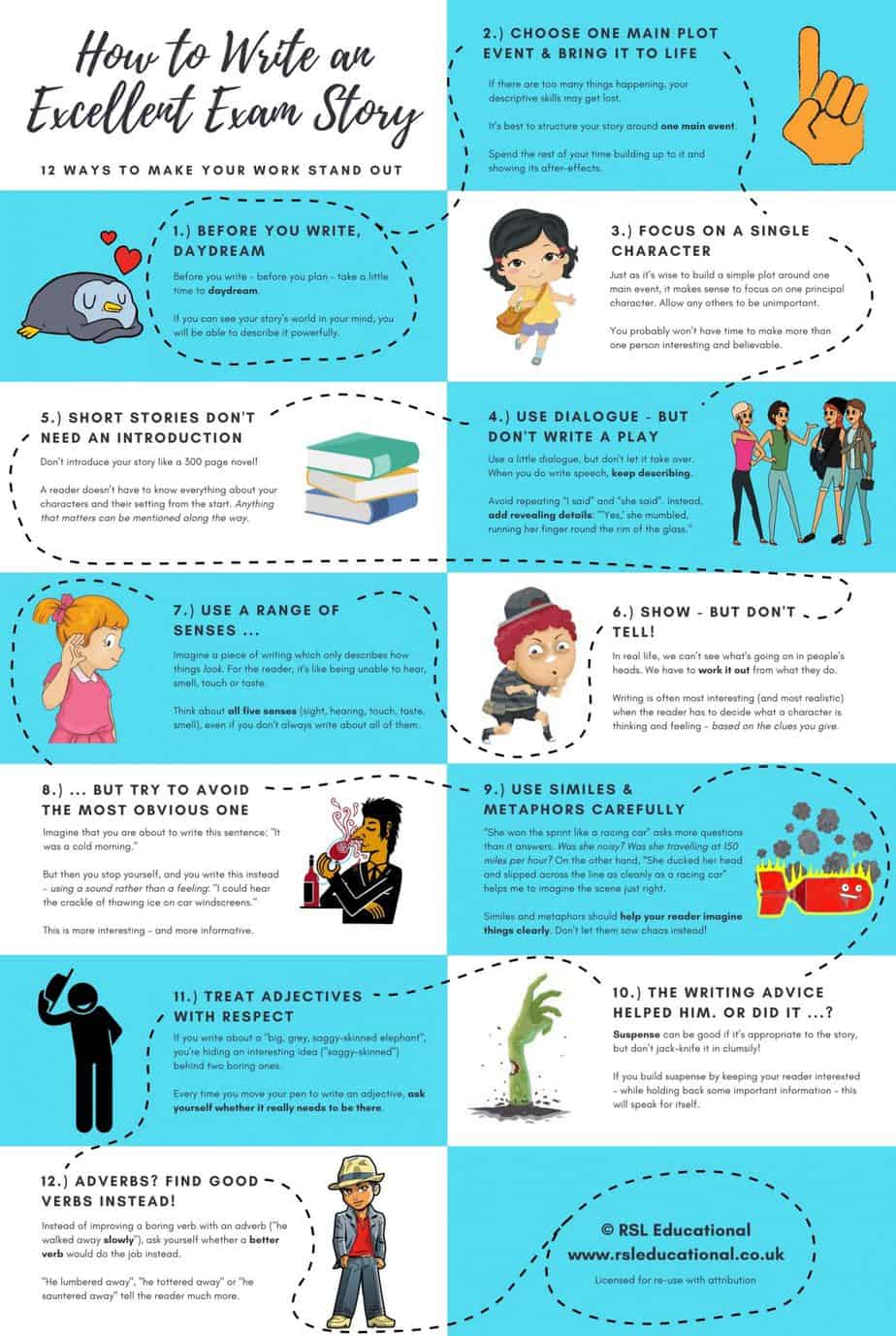
1 – Before you write, daydream
If you can see your story’s world in your head, you will be able to describe it powerfully.
If you can’t, your descriptions risk being superficial and your writing uninteresting.
After a little daydream, your next step is to turn it into a simple plan:
THE STORY PLANNING PROCESS
1) the main event.
The first thing to write in your plan is the main event in your story (see point 2 , below). Keep this simple for now.
2) Your Main Character
Next, jot down a few notes about your main character (see point 3 ). What is interesting about them? Try to imagine them sitting in the place next to you. See them clearly in your mind. Who are they, really?
3) Getting There
Now note down some ideas for how you will get to the main event. Make this simple too: don’t write more than a couple of lines.
4) … And Getting Out Of There!
Finally, write a few thoughts about what will happen after the event: why does it matter, and – above all else – how does it affect your characters?
The reason I suggest this order of planning is that when you only have a short time to write, there are two important things which will hold your story together: the main event (what it is about ) and your central character (who gives us a reason to care ).
Everything else should be very simple, allowing you to focus on describing beautifully.
In fact, you can probably guess what the next of my 11 plus tips is …
2 – Keep things simple! In an 11 plus exam story, choose one main plot event & bring it to life.
If there are too many things happening, your descriptive skills may get lost.
What’s more, once there are lots of dramatic events in a story, many students struggle to write about all of them properly.
Look at this example:
As they walked through the forest a tree fell and nearly crushed them. That was close , thought Claudia. Then they sat down to scrutinise the map.
It’s good to describe the small details of life – and especially with an interesting verb like “scrutinise”.
But if you forget to fully describe big events, such as a tree almost killing your characters, the effect is very peculiar. It implies that a near-death experience is no more interesting than reading a map!
Either give dramatic events their due importance, by describing them powerfully and giving a clear sense of your characters’ reactions, or steer clear of them altogether.
This is often a problem in exam stories with too much action, or with too many plot events in general.
It’s best to structure your story around one main event, which isn’t too extreme. Spend the rest of your time building up to it and showing its after-effects.
3 – Focus on one character
Just as it’s best to focus your writing around one main event, it makes sense to have one core character.
You probably won’t have time to make more than one person interesting and believable in a thirty minute writing exam. If you try, you’re at risk of coming unstuck.
(If you feel really confident, you might manage to develop two characters: a brother and sister, for example. But in the exam itself, ask yourself: Is it worth the risk? )
Make your main character really interesting, and only refer to others in passing.
4 – Put a little dialogue in … but don’t write a play script!
“Because writing dialogue is easier than thinking,” he said.
“That makes sense,” I said, “because otherwise I can’t explain why we’ve been chatting pointlessly for two full pages.”
Dialogue is excellent in an exam piece, and you should aim to include some in every story. However, there are risks, demonstrated by the example above!
Don’t let your story turn into a play script.
Use a little dialogue in 11+ creative writing, but focus on your descriptions of the setting, characters and events.
When you do write conversations, don’t stop describing. Avoid repeating “I said”, “she said”, “Mum answered”, and so on.
Instead, add little details which help the reader to imagine the scene as the characters talk.
Describe how people move around between saying things, the expressions on their faces, and so on:
“Because writing dialogue is easier than thinking,” he replied, a hint of a smile twitching like a worm at the edge of his mouth.
A quick note about paragraphing:
Examiners are likely to expect that a new speaker begins on a new line, if somebody else has already spoken in the paragraph.
This doesn’t happen in every book you’ll read, but it’s a convention – a normal way of doing things – which you are supposed to know about.
Look at this way of writing the example at the top, and think about where a sentence should begin a new line :
“Why are we still talking?” I said. “Because writing dialogue is easier than thinking,” he said. “That makes sense,” I said, “because otherwise I can’t explain why we’ve already been talking for two full pages.”
Now check the original again, to see whether you were right!
And now for the advertising break. Time to run away and make a cup of tea …
RSL Creative Writing is the children’s writing course from RSL Educational, written by Robert Lomax.
It’s perfect for Key Stages 2 and 3 and for 11+ exam preparation, at home or in the classroom. It’s also ideal for anybody aged 9 or above who enjoys writing and wants to do it better.
Click on the covers to learn more and view sample pages from the books:
RSL Creative Writing: Book 1
Rsl creative writing: book 2, rsl creative writing: book 3, the rsl creative writing collection (£40.47), 5 – short stories don’t need an introduction.
Robert was 33. He lived in a small flat with his cat and his wife. One day, he decided to go for a walk to the shops. The shops weren’t very far away: it took about ten minutes to get there. It was a cloudy day. It was the middle of February and it was a bit cold but not cold enough for a scarf. The road was in need of some repairs. He was wearing a blue jumper and black shoes and some fairly old jeans.
You don’t need to introduce your story as though it is a 300 page novel!
The reader doesn’t have to know everything about the main character, and especially not at the start. This way you waste a paragraph, when you might only have time for four or five in your whole story.
Anything that really matters about your characters can be mentioned along the way. In creative writing for 11 plus exams, everything else can be left out.
Get into the main business of your story from the very first line.
6 – Show, don’t tell … Whether you’re writing an 11 plus story, or whether you’re a famous novelist!
In real life, we can’t see what is in other people’s minds.
We have to work it out from what they do – and sometimes from what they say, although this can be very misleading!
For this reason, other people’s creative writing is often most interesting when we have to work out what characters are thinking and feeling.
This makes the characters seem like real people whose thoughts we can’t immediately know.
It also helps to get us – the readers – involved in the story by making us do some thinking for ourselves!
You might initially want to write this:
Simon looked up. He was angry.
But this is much more interesting to read:
As Simon looked up I could see his jaw muscles flexing.
Have a go at re-writing the following paragraph to make it more interesting . You can change things around as much as you like.
I admit: this is the sort of thing which you will sometimes read in a book. It isn’t necessarily always bad writing, in itself.
However, it is a missed opportunity to bring a character to life. In a time-limited 11-plus exam story, you need to take advantage of such moments.
The rule is:
Where possible, show me what a character is feeling … don’t tell me .
Have a look at my way of re-writing the paragraph above:
All Anna’s thoughts have gone.
Instead, there are some strong clues which steer you towards a particular idea about what she thinks and how she feels: but you still have to decide for yourself.
This forces you to imagine Anna clearly in your own mind.
How does my answer compare to your approach?
7 – Use a range of senses throughout your story
This is good writing. The trees may be “green” (which is a bit dull), but they are “swaying”, which is an effective detail and more than makes up for it.
The simile in the second sentence (“like wisps of cigar smoke”) is vivid and well planned.
The sandwich bag is “crumpled”, and “bag of bacon” is a nice moment of alliteration to emphasise this robust, commonplace item of food.
But imagine a story which continues in the same way, all the way through.
Everything is visual: a sight image.
For the reader, it is like being in a world without the ability to hear, smell, touch or taste.
Furthermore, the narrator seems to be looking around constantly, noticing everything. Is this normal behaviour?
It’s an unrealistic way of seeing the world, and after a while it becomes exhausting to read.
For a student, there are two simple but very useful lessons:
1) Always think about the five senses (sight, hearing, touch, taste, smell).
2) Sometimes avoid the most obvious sense when describing a thing (see point 8 below).
These tips are easy to apply in your creative writing for 11+, but they make a huge difference.
What’s more, unlike a clumsy simile (see point 9 ), a sensory description rarely ends up harming your writing. It can be effective or ineffective, but that’s another matter!
Take the example above:
“The trees were green and swaying” could become: “The trunks were groaning, and overhead I heard the dull rustle of a thousand fresh leaves slapping against one another.”
There’s nothing startlingly original here, but because it is a slightly less obvious way of describing trees, it creates a much more powerful atmosphere.
If you want a metaphor as well, try turning “dull rustle” into “distant applause” , which makes the leaves seem like a mass of enthusiastic people.
Similarly, “I looked at the bag of bacon sandwiches crumpled on the seat next to me” takes on more life like this:
I smelt something like old sick; then I remembered the bag of bacon sandwiches crumpled on the seat next to me.
Notice how easily similes (“like old sick”) and metaphors happen, almost by themselves, when you focus on describing with a range of senses .
This is one of my most important 11 plus writing tips.
8 – Sometimes describe things using a less obvious sense
Using a range of senses, as I discussed in point 7 , is really, really important.
But how can you come up with surprising, powerful descriptions – descriptions to make the marker stop ticking your work for a second, raise their eyebrows and smile?
Imagine that you are just about to write the following sentence:
It was a cold morning.
But you stop yourself, think for a second, and write this:
I could hear the crackle of thawing ice on car windscreens.
This is much more interesting. Rather than using the sense of touch (a “cold” feeling), you are using a sound: “the crackle of thawing ice”.
There’s a good chance that the reader will think: “Yes! I never considered it before, but you really do hear a sound when ice thaws quickly.”
This version also tells you much more about the weather:
The reader can work out that the night has been exceptionally cold, but also that the temperature is now rising quickly.
The thought process to produce descriptions like this is much simpler than it seems:
1) Think of the sense which is most obvious to describe the thing you are writing about.
3) Think of the second most obvious sense.
4) Ban that too!
5) From the three remaining senses, pick the one which is most useful.
6) Ask yourself how the thing would sound, feel, smell or taste – whichever three of these you have left (you’ve almost certainly banned sight!).
7) Write about it.
9 – Use similes and metaphors carefully in your creative writing
Similes and metaphors are useful (and can be impressive), but they have to make things clearer for the reader, not create confusion.
“She won the sprint like a racing car” asks more questions than it answers.
Was she noisy? Was she travelling at 150 miles per hour?
On the other hand, “She ducked her head and slipped across the line as cleanly as a racing car” helps me to picture the event exactly as intended.
Here’s another simile for speed, which I’ve seen a great many times (you’d hardly believe how many) in 11-plus stories:
Donald wrote like a cheetah.
Does this mean that Donald wrote savagely and meaninglessly, like a wild animal with a pencil jammed between its claws ?
Or perhaps that he wrote largely about the themes of hunting and sleeping ?
My guess is that Donald wrote quickly , but I’m not sure … because if that’s all you meant, WHY DIDN’T YOU JUST SAY IT?
This sort of thing is not really the fault of a young writer, who after all is (hopefully!) doing their best.
It is the fault of those dastardly teachers who advise children to include, for example, “at least one metaphor and two similes” in each story.
The result of this, for most children, is a succession of poorly chosen descriptive tricks, which add nothing.
Indeed, we’ve seen how these things can end up making a story comical for all the wrong reasons!
The right approach to creative writing doesn’t start with the need to include a simile: it starts with the need to describe effectively .
To me, this means allowing the reader to imagine the situation fully, and helping them care what happens.
Let’s play around with the image of Donald writing “like a cheetah”.
What happens if we just get rid of the simile?
Donald wrote quickly.
OK, but it doesn’t tell us much: did he write quickly because he wanted to finish his story before Newsnight , or because he was really excited by his work?
Let’s say that it was the first reason: he wanted to get his work out of the way. Perhaps he was feeling annoyed, given that it might interrupt his favourite TV show.
When somebody is writing rapidly while annoyed, what might this look like?
I imagine Donald’s arm wiggling as the pen moves — especially the elbow. The movement is fast and constant because he is worried about getting the work finished, and because in his irritation he doesn’t much care about its quality.
So I ask myself: What moves to and fro constantly, performing a task in an unimaginative way?
And the first thing I think of is a machine in a factory:
Donald hunched over the page, his arm jerking to and fro with the quick, regular movements of a factory robot.
This sentence by itself would go some way to making your story the best in the exam room.
I hope I’ve persuaded you that with a well-organised thought process, a good simile isn’t too difficult to write!
Because children have been taught to work in this way, a story will often contain the required two similes, a metaphor, a personification, even an interesting alliteration …
… but everything in between is lifeless.
What students need is a different sort of checklist, to help them make the rest of their writing interesting .
I hope this article will give you some ideas!
10 – Stephanie was writing a beautiful story in the 11-plus exam hall. Or was she …?
Suspense is good if it’s appropriate to the story, but don’t jack-knife it in clumsily!
“It was a calm, sunny day. Or was it?” doesn’t really make me curious.
It makes me think that you’re trying to pester me into being excited, rather than persuading me to feel that way through your excellent writing.
If you write in a way that builds suspense by making me interested in the characters and events in the story – while keeping some important information hidden from me, just out of sight – this will speak for itself.
However, not every piece of creative writing needs it!
If you found these story writing tips useful or if you have a question, please leave a comment below! I’d love to have your feedback. (Tick the “Receive email updates” box to receive an email when I reply.)
For the most comprehensive range of resources to help with preparation for the 11+ exam, you might like to try 11 Plus Lifeline (with a money-back guarantee in the first month). Every practice paper has full example solutions, with a detailed discussion and explanation for every question – like being taught by an excellent private tutor. There’s lots of material to help develop creative, high-scoring exam stories!
According to Tutorful, it’s “ the gold standard for independent and grammar school 11-plus preparation ”.
Watch Your First Video Now
Watch your first free 11-plus video straight away. Videos 2 & 3 will reach you by email within a few days.
At the same time, you’ll receive 121 Pages of award-winning RSL practice material, with step-by-step solutions – for free!
I'll also send you some useful information about RSL Educational resources and more advice for exam preparation. You’ll be able to unsubscribe from my emails any time you like.
WATCH VIDEO
89 Comments
If you have any questions, feel free to ask me here. I’ll do my best to help you out!
Hi, I’m preparing my son for 11+. His story ideas are good but he needs to add more details/depth. How can I encourage that? Thanks
That’s a very difficult question to answer, because there is so much that I could say! Many of my suggestions are in the article above. The sample at http://digioh.com/em/27284/164929/84za5s4g4u may offer more ideas. If this is useful, then 11 Plus Lifeline offers many further resources.
What’s the syllabus of creative writing for 11plus. I understand there is no definitive one, it varies with target school as well, but still I’d like to know the min types of writing children should be knowing end of year 6 e.g. story writing, descriptive writing, poetry writing, persuasive writing, diary, reconnect, fiction, non fiction writing, script writing, book/film review, blog writing etc. Really confused with the list of categories and subcategories under each. I just need a good structure with every details. Please help with a detailed table of contents.
Hi Jay. I’m afraid I don’t have such a list – because there isn’t one. Schools can set anything that they like! However, I think getting children used to responding to a range of formats is more important than covering everything. The most common formats are probably: 1) A story based on a title or topic 2) A continuation of a passage (usually the passage already used as a comprehension text) 3) A story based on a picture
You provide excellent tips that we can use to guide our children. Done in a very simple but effective way. Even more – as times are hard and money is tight your generosity shows you truly do wish to help children and not just make money out of them. Thank you
Thank you Alison. I’m glad you found the article useful. Robert
Thank you ever so much for your very useful tips. Would you have some advice (or a sample essay) on writing a descriptive essay based on a given image?
Hi Aparna, There is some relevant content in 11 Plus Lifeline. For more along these lines, keep an eye on the website in the autumn …
Hi Robert, I found the article above very helpful. My daughter is in year 5 and we have just started our 11 plus journey. She seems to be struggling air with creative writing. She has such great ideas and an amazing imaginative mind, however she struggles to express this on paper as compared to her peers also studying for the 11 plus. How can I help her become a better writer?
Speaking as she writes might help: perhaps she will write more fluently if she just thinks of it as a way to record her verbal ideas.
My RSL Creative Writing books might help her to develop her ideas.
What is a good range for the word count for a “continue the story” creative writing task at 10+? I see suggestions of 4-5 paragraphs, but paragraphs vary hugely in length. My son is only writing around 150 words, and I fear this is taking “quality not quantity” to the extreme!
It really depends! Sometimes you’ll be given an 8-10 line answer space, in which case that would be appropriate. On the other hand, if you have 30-40 minutes, you should be pitching for 1 to 1.5 pages. Robert
Thank you so much! Very informative
I’m glad to help!
how much your fees for creative writing, and how many lesson? please let me know [email protected]
Hello Hemang. I’m afraid I don’t work as a tutor these days. However, you might be interested in my creative writing books at https://www.rsleducational.co.uk/rsl-creative-writing . These will take your child through their skills step by step, much as I would if I was teaching them. Good luck! Robert
Hi Sir! Sir, you suggestions are greatly useful. Sir, can you assist me on how to incorporate Strong Verbs in my writings as I do not know many and I struggle on account of it ?
There’s no easy answer, but the best starting point is to look for specific ways of describing things. For instance, instead of “he talked”, you might say “he muttered”, for example. You’ll learn more verbs if you look out for them as you read things, and perhaps note interesting ones down in a book. Good luck!
Dear Robert Hope you are doing well , my son is in year 5 and he is going to set for 11 plus exam for very highly competitive grammar schools , he need help for is creative writing . I advice that you are the best , I’m seeking help from you ,please . Yours sincerely Saha Mcewan
Hello. Have a look at 11 Plus Lifeline , perhaps, and my RSL Creative Writing books. I do intend to release some new things for creative writing in the future: watch this space!
Hi Robert. These are great tips. My question is how to come with effective descriptions that vary. When I do descriptive writing, I describe with only the five senses and often run out of ideas. Also, how can we write in a way that will make a clear image in the readers mind. Thanks for the time
Hi Yatharth! My video at https://youtu.be/LKnvrad6jpw is all about this, so why not have a look at that? If that’s useful, look at https://www.rsleducational.co.uk/product/rsl-creative-writing-1
I completely agree with your article, and as a teacher who prepares children for GCSE and the 11 tests, I employ a lot of the ‘strategies’ you mention. What children need ultimately is time to read, digest and above all enjoy stories and poems and then to talk about what they’ve read and in some ( or maybe a lot of cases) relate the themes and ideas etc in what they have read to their own lives. This I feel, can give a greater sense of ‘reality’ to what they can eventually write; and then we as teachers (and parents) can model how to write ‘good’ creative stories (and include all the SPAG) which can go a long way to ensuring children actually begin to feel that they themselves can be imaginative and write great stories.
Thank you for taking the time to comment, Molly. I very much agree with you.
What children need ultimately is time to read, digest and above all enjoy stories and poems and then to talk about what they’ve read and in some ( or maybe a lot of cases) relate the themes and ideas etc in what they have read to their own lives.
The only thing I’d add to this is that it works both ways: reading informs writing, but the very best way to develop critical reading skills is to become more sophisticated as a writer!
Hi Robert,l am a Creative Writing teacher for 8+ Do you think 6+ can be taught Creative Writing that will yield excellent result? I asked this question from my experience of teaching Creative Writing,I observe that more 6+ struggle with understanding and implementing Creative Writing stages than 8+ Also,I teach Creative Writing easily because I believe I have the skills to teach it but how can I come up with a special syllabus to teach my colleagues how to teach Creative Writing in the class that will be result oriented.
Hello Soremi.
I would not think too much about results, if by that you mean percentage scores, when children are 6 or so and developing their writing. I would focus on their enjoyment and on encouraging them to explore their imagination, creating interestingly described characters and environments. It’s a different situation in 11+ exams, where children must demonstrate certain skills and perform well in comparison with their peers.
However, it is very important to encourage the development of accurate and clear English from an early stage. Creative writing is a good opportunity to uncover and address problems.
I found this very useful and straightforward, and also very funny… The tips will take me flying in my writing!
Thanks Lily-Grace. The work you sent for me to look at this week was very impressive: you’re already flying!
Thanks Robert this description is very helpful
I’m very glad it’s useful. Thanks for commenting!
Hola me gustaria hacer unas infografias mas dinamicas
Thank you for the topic
It’s a pleasure. I hope the advice helps.
I thought that this was a brilliant summary. Thank you very much. Engaging and thoughtful. Very much appreciated.
I’m delighted to hear it. Thank you!
I found your creative writing tips very insightful, a real shame for us it was right at the end of our 11+/13+ preparation.
Thank you Sara. I hope they made some difference, even at a late stage.
Very useful tips! I like the way you have broken down the advice into bite-sized chunks! Thanks Robert
I’m glad you found them helpful! Thanks for commenting.
Great tips, thanks Robert. Do you have tips on non fictional writing as well? E.g. how a child can do a stellar job when asked to write a suggestion letter to the council. My child struggles with writing on everyday things that she deems uninteresting like describing everday things but is flying when writing on imaginary topics. Thanks in advance.
Hi Tolu. I have some resources for less creative subject matter in 11 Plus Lifeline .
I think the best way to add interest to potentially unexciting things, like letters, is with examples. “I think you should do more to reduce bullying, because it discourages children from studying” is not interesting. “Last week, a boy trudged towards me across the playground, clenching and unclenching his fists, with the dead-eyed look of meaningless aggression that I’ve come to know so well. This is happening too often in our school!” is much more impressive.
Thanks for these tips . Would you suggest any topics for DS to practice .
There are a great many writing topics with fully explained example answers in 11 Plus Lifeline . I might add a blog post with some suggested topics in the coming months. Robert
These SPECTACULAR tips helped me a lot when I was planning and writing a story. I think that these AMAZING tips will help me a lot when I am doing the exam. THANKS Robert!!!!
Thanks Raon! I hope you’ll share the link. Good luck in your exam. Robert
Thanks for the tips to improve the writing skill for the content writers and the students.
Thank you Nihal – I’m glad my advice is useful.
What can I Say?
My son is about to take the 11 + and part of the material is creative writing,
Can you recommend any good material please?
The key is reading and I don’t think he reads as much as he should do
Please advise
Hi Fazal. I would of course recommend my own creative writing material in 11 Plus Lifeline . There’s a free sample here .
Reading is certainly important, but it won’t do any magic without good writing practice alongside it.
If your son isn’t keen on reading, trying to push him to read more may not work. However, you can help to improve the quality of the reading he does do, by discussing it whenever possible in a way that encourages him to think about it in more depth. You can also introduce new vocabulary into your conversations, and so on.
Also, the reading list here may help him to find books that he does want to read!
Hi, my son 11, is really struggling with creative writing, the main problem being he can’t think of anything to write about. he’s a clever boy but more into science and computers. He thinks he can’t do it and I’m worried he’s going to freeze in the exam. how can i get him to access his imagination and not panic. Thanks
Practice is certainly the main thing. If he can start to “access his imagination” (a nice phrase) without exam pressure, he is more likely to be able to do so in the test.
When you say that he can’t think of anything to write about, you’re describing a problem that I can relate to. However, it should not be a big concern at 11+, for the simple reason that the best stories tend to be about very little! If he can construct a simple plot, focused on one event – even something very ordinary and apparently dull – then he has what he needs. From that point, all his effort should be focused on describing well, so that the story creates atmosphere and has a believable main character.
The real problem at 11+ is when children have too many creative ideas. They construct complex, overwhelming plots, about which it is impossible to write well – or even plausibly – in the time available.
Hi Robert Have you got any tips for the CSSE style quick 10 mins Continuous Writing tasks please. These have included instructions, descriptions and this year the exam paper included a picture to write about- what’s happening- story /description?
Many thanks for your help.
This is very difficult to answer in a brief comment. I do have some specially designed resources for these CSSE writing tasks in 11 Plus Lifeline , if that is of interest.
If writing creatively, keep the plot to an absolute minimum. Imagine that you are describing a ten second scene from a movie – not writing the plot for a whole film. Focus on effective use of the senses, in particular – very much as I outline in this article. Don’t waste any space introducing your writing.
If describing a picture, the same applies. Focus on details from it, and try to find a logical structure. For example, a character might move around the image, finding things; or you might imagine the scene changing over a period of time.
For instructions, try to visualise the activity as precisely as you can, then use words to convey your thoughts exactly. This will lead to good vocabulary. Rather than saying “Screw the lightbulb into the socket”, say something like this: “Steadying the socket with your spare hand, twist the bulb gently in a clockwise direction until you encounter resistance.” This doesn’t come from trying to be fancy: it comes from very clearly imagining the action before I write.
There is a great deal more to be said, but I hope these pointers are useful.
Great tips and advice here. I have 4 boys, all at different levels of education. This has helped me to help them. Thanks!
That makes me very happy. Good luck to your sons!
Anybody who found this useful might like to read more of my creative advice at https://www.rsleducational.co.uk/creative-writing-less-is-more .
This article is very helpful. Thank you.
Thanks for taking the time to say so!
I found this very helpful, thank you
I’m glad!
Hello Good Afternoon and thank you very much for my help. I am a young child preparing the eleven plus. I don’t necessarily have any questions i just don’t have any questions. Good luck on your educative journey.
Good luck to you, Lukas! Well done for taking the initiative and researching your exams.
I am a 8 years old child and I am doing your 11+ RSL comprehension, do you have any tips that might help me improve my writing? Thank you for your help!
Hi Kate! I’d like to help, but I’m not sure how to. You’ve written this under an article about improving your writing, and you’re working on a book that also helps with this. I don’t know what tips to add here. If you could be more specific, perhaps I’ll be able to say something. Good luck with your work! Robert
Hi Robert! I really like your tips and they did improve my daughter’s writing! Thank you so much!
I’m so glad! Well done to her.
Hi Richard, Does cursive or printed handwriting affect the writing score a 11+ level? Thanks in advance.
No, it shouldn’t make any difference. All that matters is that the writing should be easy to read, and that the student can write reasonably quickly.
Hi there, I am doing 13+, My tutor says that I should not use metaphors or similes, but I think I should. Do you have any advice for me on descriptive writing? And can you explain what a metaphor is?
I think you are probably misinterpreting your tutor. A good simile or metaphor, in the right place, is a good thing, but I would guess that your tutor is concerned that you are over-using these things and that this is distracting you from simply writing well. An alternative is that you haven’t quite understood how to use them effectively. A misjudged simile can look odd: using no simile (or metaphor) is better than using a bad one!
For a good explanation of what a metaphor is, see https://www.grammarly.com/blog/metaphor/ .
Hi, I’m currently helping a student prepare for entrance exams, and I just wondered if you could help me with a question. He was struggling with the timed element of creative writing and wanted to know if he DID run out of time, what would a marker prefer? To just leave the piece unfinished, or to quickly make an ending for the story, even if it meant it was quite an abrupt ending that didn’t necessarily do the story justice?
I think it depends on the marker. I’d prefer an unfinished piece to one with something actively bad in it, like a bad ending. However, can they leave an unfinished ending that nonetheless has something final about it: for instance, zoom out and describe the trees swaying in the distance, or the waves, so that there’s a sense of the world rolling on, despite the events in the story? If this is done well, it might even appear that they intended to finish this way.
great work, keep it up.
Amazing website! The content is wonderful. Highly informative indeed.
That’s brilliant to hear. Thank you!
Do you have to pay to get your work marked?
Yes, that’s right. Most people do it via an 11 Plus Lifeline Platinum subscription .
My daughter is not good at creative writing and I am apprehensive as she writes her pre-tests on 11th November . How do I help her with the following formats?
1) A story based on a title or topic 2) A continuation of a passage (usually the passage already used as a comprehension text) 3) A story based on a picture
Hello! I cover all these things in my RSL Creative Writing books – see https://www.rsleducational.co.uk/rsl-creative-writing You will also find creative writing videos covering these things at https://go.easy11plus.org/VIDEOLIST Good luck! Robert
Submit a Comment Cancel reply
Your email address will not be published. Required fields are marked *
Submit Comment
VCE Study Tips
English Language

Private Tutoring

Only one more step to getting your FREE text response mini-guide!
Simply fill in the form below, and the download will start straight away
English & EAL
How to achieve A+ in creative writing (Reading and Creating)
March 9, 2017

Want insider tips? Sign up here!
Go ahead and tilt your mobile the right way (portrait). the kool kids don't use landscape....
We’ve explored creative writing criteria, literary elements and how to replicate the text over on our The Ultimate Guide to VCE Creative Writing blog post . If you need a quick refresher or you’re new to creative writing, I highly recommend checking it out!
For many students, writing creative pieces can be slightly daunting. For some, it is about unleashing the writer within as the boundaries and thematic constraints that exist in Text Response are lifted. For others, it can be an opportunity to discover new writing styles, branching out from the generic T-E-E-L structure.
Formats of imaginative pieces include:
- short narratives,
- a personal diary entry ,
- chronicling the character's thoughts,
- and monologues.
Writing in an imaginative style allows you to draw from your own morals, views and feelings. You can weave in personal anecdotes, experiences, and metaphorical language which gives one's writing that pizazz and individualist factor!
Moreover, you can showcase how you have perceived and interpreted the characters within the novel/film, the landscapes they inhabit. Alternatively, you can step into different personas. For example, for the topic of conflict, I can write as an injured army medic, a doctor, a foreign correspondent and a war photographer.
However, imaginative writing also has many pitfalls students tumble into (do not despair; you can get out of it!):
1) Don't get too caught up in emotions and flowery language.
Great imaginative pieces are not only graded on how good your story telling skills are. More importantly, your teachers would be grading on the palpable links to the themes of the text and prompt you have been given.
In Year 11, when I wrote an imaginative piece, I went overboard with the flowery metaphorical language. My teacher said ‘Overall, the piece is good however, at some parts it sounded like purple prose.’ When I read it over now, I shudder a little.
2) In Reading and Creative, there is greater emphasis on extrapolating themes and ideas from your studied text.
So, those radical and out-of-the box ideas and views you have in relation to the text can now be used.
For example, the overarching themes in Every Man In This Village Is A Liar encompass the Palestinian-Israeli conflict, inequality (the unequal status of women in Middle East), the effect of war on the physical body and the human psych and, how the media portrays war and violence. The starting point to planning any context piece is to use quotes and ideas within your text. Infer meaning from those quotes and main ideas and ask yourself:
- 'Does it hold a great degree of relevance to issues prevalent today?'
- 'Can I link it to my sac/exam prompt?'
So, here's an example of planning a creative piece. Two of my favourite quotes from Life of Galileo are:
'Science is the rightful, much loved daughter of the church.'
‘Our ignorance is limitless; let us lop off a millimeter off it. Why try to be clever now that we at last have a chance of being less stupid.’
In essence, this conveys the overarching theme of science vs. religion, and how Church and the inquisition exploit the peoples' views through their own ignorance. Their fear of change, pioneering and gaining of new knowledge stems from the prospect of chaos if society's entrenched values are uprooted. I interpreted this as 'ignorance is not bliss' and instead, it breeds fear in people. This is in relevance with the tragic events that has occurred in recent years - acts of terrorism, and/or racially motivated attacks. In the context of our modern society, religion and science still maintain an intriguing and tumultuous relationship. As the advancement of technology and ethics are not at equilibrium, this is where controversy arises. Conversely, we now have to consider whether this relates to the prompt:
A person never knows who they truly are, until tested by conflict.
Possible idea for this example:
"Is it ethical to administer a new drug capable of rewiring and regenerating brain function at a neuronal level to someone who has sustained extensive brain damage? Is it deemed humane to potentially change a person's character? At what personal cost will this have? - Playing god."
Tips to achieve A+ in creative writing
1. ensure it is related to the text..
A lot of students believe that the reading and creating essay is exactly the same as the old context essay. However, there is a significant difference! While a creative context essay does not have to link to the text in any way and only needs to explore a certain idea (e.g. encountering conflict), the reading and creating essay needs to offer a relevant interpretation of the text as well as show understanding of the text’s messages and how the text creates meaning .
The easiest way to write a creative response that links clearly to the text is to write about a scenario that is related to the plot line. You can do this by writing a continuation of the storyline (i.e. what happens after the end?), or by filling in gaps in the plot line which the author did not explicitly outline (what happens behind the scenes that caused the outcome?) In this way, your response will be completely original and still demonstrate an understanding of the world of the text.
2. Write in a way that shows understanding of how the text creates meaning.
When creating your response, be aware of the features present in your text (such as characters, narrative, motifs etc) that you can use in your own essay. For example, if the text is narrated from a first-person perspective, you may also mimic this in your essay. Or, you could tell it in first-person from another character’s point of view to demonstrate another interpretation of the text. You may also include motifs from the text into your own response. But be careful when making decisions about structure, conventions and language. If the text is written in very formal and concise language, it is probably not a good idea to use slang. Similarly, if the text is a play, structuring your response as a script might be a better choice than writing a poem!
3. Explore the explicit and implied ideas and values in the texts.
Lastly, remember that whilst it is a creative response, your purpose is NOT to tell a nice story but to explore the ideas, values and messages left by the author! There will always be various interpretations regarding these values, and you can express your understanding of the text through your portrayal of certain characters, or through the events in your response. For example, if you were studying Measure for Measure and wanted to explore how human nature cannot be restrained or limited by law and punishment, you could write a continuation of the play in which the city of Vienna has reverted to its original state of moral decay.
4. Show, don't tell
Creative essays are great because they offer interesting and unique stories; however, there is one common downfall that occurs in writing. Some students create pieces that are too straightforward. Rather than using vocabulary, imagery and symbolism to express a point, they simply write down a statement that sums up what they wish to say. Your aim is to invite the reader to experience the story through your words. This can be done through the character’s thoughts, feelings, actions etc. Thus the well-known phrase among writers, ‘ Show, don’t tell’ . Keeping this idea in mind turn you into a much more successful writer – and you’ll see the difference!
Tell: Katie was very happy.
Show: Katie’s face lifted. Little wrinkles appeared around her bright eyes, her dimples made an appearance that dug into her cheeks as a big grin emerged to show her perfect teeth.
Tell: She felt horrible for the weeping children.
Show: Guilt throbbed inside her as she stared at the weeping children. Her heart pounded against her chest, her hands trembling beside her still body, her brain screaming at her to do something .
Tell: I was scared.
Show: I hear my breathing; heavy, and rapid. I shut my eyes tightly. I can feel goosebumps running up my arms and down my back.
To test whether or not you are ‘telling’ instead of ‘showing’, think about whether or not your sentence leaves room for questions. In Example 1, ‘Katie was very happy’ would leave the reader thinking – what thought or action showed that she was happy? Whereas ‘show’ demonstrated that she was happy without directly stating it.
The key is to go into the finer details of your story!
Finally, have fun and enjoy the process of planning a creative narrative, let your imagination run a little wild and rein it in with your knowledge! Hopefully these tips were helpful and you are now more confident and informed on the Reading and Creating response!
This blog post was written by Amanda Lau, Rosemary Chen, and Lisa Tran.
Get our FREE VCE English Text Response mini-guide
Now quite sure how to nail your text response essays? Then download our free mini-guide, where we break down the art of writing the perfect text-response essay into three comprehensive steps. Click below to get your own copy today!

Access a FREE sample of our How To Write A Killer Creative study guide
- Learn how to apply key creative frameworks and literary elements to elevate your writing
- Introduces the REPLICATE and IMAGINE strategy , a straightforward and methodical approach to creative writing
- Includes a step-by-step method to guide you through every phase of creative writing
- Explains the Written Explanation component, with multiple annotated A+ examples
- Includes excerpts from multiple A+ creative pieces

- What Is The Creative Response?
- What Are You Expected To Cover? (Creative Writing Criteria)
- Literary Elements (Characterisation, Themes, Language, Symbolism, Imagery)
- LSG's unique REPLICATE and IMAGINE strategy
- Sample A+ Creative Response
- Writing The Written Explanation
- Resources To Help You Prepare For Your Creative Response
1. What Is The Creative Response?
The Creative Response, which forms part of the ‘Reading and creating texts’ component of the study design, is part of the 1st Area of Study (AoS 1) - meaning that the majority of students will tackle the Creative Response in Term 1. Unlike the analytical text response, in the Creative Response you will be asked to write your own imaginative piece in response to a selected text.
You are expected to read and understand the selected text, analyse its key features, and write a creative piece which demonstrates your comprehension of the text.
2. What Are You Expected To Cover? (Creative Writing Criteria)
The creative writing task assesses your ability to combine features of an existing text with your own original ideas. The key intention here is to demonstrate your understanding of the world of the text. You can achieve this by exploring and applying selected elements from the text, such as context, themes, literary devices like symbols, and/or characters. You should also consider the values embedded within the text - this includes explicit values (which can be seen on the surface of the text) and implied values (values we uncover through analysis of the text’s deeper meaning). Try to reflect these values within your writing.
Your piece will be a creative response, after all, so you should apply the conventions of this style of writing. Firstly, your creative should follow the structure of a beginning, middle, and end. We can also think of this as rising tension, climax, and resolution. Secondly, you should develop an authentic use of language, voice and style to make your writing more engaging and sophisticated. Thirdly, you can use literary devices to build meaning and depth within your piece. As always, your writing should be consistent with the rules of spelling, punctuation, and syntax (that is, written expression) in Standard Australian English.
Part of this assessment is the Written Explanation, which is a chance for you to explain and justify your creative writing choices. Within the Written Explanation, you should reflect on your writing process and analyse your own work. The primary goal here is to explain the links you’ve made to the original text, by considering features like purpose, context, and language.
Ultimately, to put it simply, you are expected to understand the selected text and demonstrate this in your creative piece. If you're looking to quickly increase your creative skills, watch our incredibly popular video below:
3. Literary Elements (Characterisation, Themes, Language, Symbolism, Imagery)
Literary elements are different parts of the creative writing equation that ensure your piece is consistent with the expected features of this type of writing. When selecting which literary elements to include in your piece, remember to consider the original text and ensure that your work, while creative, also demonstrates your ability to replicate some of its elements.
Characterisation
As we know, characters are fictionalised people within the world of a creative text. Almost an entire century ago, the English writer E. M. Forster famously introduced the concept of flat and round characters in his 1927 book, ‘Aspects of the Novel’. According to Forster, flat characters can be defined by a single characteristic; in other words, they are two-dimensional. For example, the characters of The Simpsons could arguably all be defined as flat characters; Homer is characterised as a slob, Flanders is defined by his Christian faith, Lisa is stereotyped as the ‘teacher’s pet’, and Bart is portrayed as rebellious. We can define all of these characters as flat because they are labelled to the audience in these two-dimensional ways.
In contrast to this, round characters have multiple characteristics, which brings them closer to seeming like real, human figures. The personality of these characters extends beyond a single attribute. In Harry Potter , Harry himself is a round character because of how much we learn about him over the course of the series. For example, we find out about Harry’s difficult childhood, his personal challenges, his love interests, and we see his personality grow from book to book.
Whether the characters of your creative are flat or round will depend on their involvement within, and importance to, the storyline of your piece. Generally speaking, however, you should aim for the central character(s) to be round, while any minor characters are likely to be flat. Developing round major characters will ensure that they are realistic and believable. In turn, you’ll be able to better demonstrate your imaginative skills and understanding of the text through these characters.
Themes are the key ideas and issues that are relevant to the storyline of a fictional text. We can identify themes by labelling the main areas of meaning within a text and thinking about the messages that emerge throughout the text. To build your understanding of themes within a particular text and to evaluate the themes of your own creative, consider the following questions:
- What is the text really about, beyond superficial elements like plot and character?
- What is the text saying to its reader?
- What are the core idea(s) or issue(s) within the text?
- What idea(s) or issue(s) do the message(s) of the text correspond with?
To return to our example of The Simpsons , we could say that the themes within this sitcom include love and family, neighbourliness, and social class. From episode to episode, The Simpsons comments on these different issues. For example, Marge and Homer’s relationship, with its domestic setting and marital ups and downs, is a core aspect of the Simpsons household. Likewise, family is a major component of not only the Simpsons themselves, but also the broader Springfield community. The interactions between parents and children is evident on Evergreen Terrace with the Simpsons and the Flanders families, as well as in other settings such as Springfield Elementary School (where even an adult Principal Skinner is seen through his relationship with his elderly mother). These broad areas can be identified as the key thematic concerns of the series because each episode centres around these ideas.
Language refers to the way in which a piece of writing is expressed. We can define this as the ‘style’, or ‘tone’, of a text. The words and phrasing chosen by a writer determine how ideas are communicated. Effective language will be appropriate for the world of the text and contribute to the narrative in a meaningful way. There are a number of ways in which a piece of writing can be articulated and you should consider the nature of your piece and the language of the original text when deciding what type of language is most appropriate for your creative.
Dialogue, on the other hand, is an exchange of conversation between characters. Dialogue is often used to provide context to a text, develop its storyline, or offer direct insight into a character’s thoughts, feelings and personality.
A symbol can be defined as a thing that represents something else. Symbols are typically material objects that hold abstract meaning. For example, in Harry Potter , Harry’s scar is a symbol of his difficult childhood. Because Harry’s scar causes him pain in Voldemort’s presence, it can also be said that the scar is symbolic of the connection forged between Harry and Voldemort when his attempt to kill Harry failed. As this example suggests, symbols are often associated with the text’s themes - in this case, Harry’s scar relates to the themes of childhood and death.
The key with symbolism is to connect a particular theme or idea to a physical object. For example, the theme of grief could be portrayed through a photo of someone who has died. Likewise, the theme of change might be represented by a ticking clock, while a character’s clothing could be a symbol of their wealth or status.
For more literary elements, also known as metalanguage, check out our lists:
Part 1 – Metalanguage Word Bank For Books
Part 2 – Metalanguage Word Bank For Films With Examples
And if that's not enough, you'll also want to check out our How To Write A Killer Creative Study Guide where we unpack these elements in more detail AND analyse imagery, foreshadowing, flash-backs and flash-forwards!
4. LSG's unique REPLICATE and IMAGINE Strategy
If we think about the criteria of creative writing, we’ll see that much of this task involves demonstrating your understanding of the text. For this reason, being able to replicate the world of the text will enable you to showcase your understanding and, in turn, to meet the criteria your teacher will be looking for. Let’s consider how you can strengthen your creative by taking the time to understand the text on a meaningful level and reflect this within your writing.
Step 1: Read
Writing a strong creative piece begins with reading. Reading the text (or watching, in the case of a film) is essential to developing an informed creative response. The more closely you read, the more confidently you’ll be able to engage with the important ideas and textual elements necessary to take your creative from good to great.
While reading the text for the first time, focus on developing your understanding and clarifying any uncertainty. I would recommend taking the time to read a plot summary before beginning on the text - this will allow you to go in with a reasonable idea of what to expect, and also provide a security net to minimise your likelihood of misunderstanding the plot.
While reading the text once is sufficient, you will benefit from reading it twice. A second reading enables you to take the time to annotate key sections of the text and to further your initial understanding. If you choose to read the text a second time, pay extra attention to the themes and inner-workings of the text. This means reading between the lines and starting to form an analytical understanding of what the text is about, beyond surface ideas like plot and character.
Annotating the text (or note-taking, in the case of a film) is an important aspect of any academic reading. The key intention is to ensure your annotation approach is as convenient and accessible as possible. To achieve this, I suggest listing the key themes, allocating a different coloured highlighter to each, and colour-coding sections of the text which you think relate to each specific theme. This will give your annotating process more direction compared to the common approach of simply leaving notes in the margin, which may be time-consuming to read over later.
I would also recommend making the most of coloured tabs - these enable you to immediately see the key sections of the text, rather than flicking through aimlessly. If you can colour-code these tabs according to the same key as your highlighters, you’ll be able to instantly spot which sections correspond with which theme (and trust me, this will come in handy if you decide to replicate these themes in your own creative).
Aside from annotating the text itself, try to ensure that the notes you write are concise - not only will this save you time, but it’ll mean you focus on condensing the key information. In turn, you’ll have less material to sift through later on, giving you the ability to jump straight into planning and drafting your own piece. This video, How to effectively annotate your books for school! and this blog post, How to effectively annotate your texts in VCE will provide you with more helpful strategies to get the most out of annotating.
Step 2: Understand the World of the Text
Regardless of how many times you read the text, your understanding will be strengthened by seeking out resources to help you think about the text on a deeper level. A good starting point for this is to have a look for LSG blog posts and videos that are about your specific text.
Watching or reading interviews with the author of the text is a fantastic way to hear directly about their intention in writing the text - after all, they are the single most authoritative source on the text. The goal here is to understand the author’s intent (something we’ll expand on in Chapter 8: Strengthening Your Creative ) so that you can reflect this within your own writing. Focus on how the author explains certain aspects of their text, as well as any points they make about its context and background.
Additionally, peer discussions and asking questions in class will help you to further develop your understanding of the text and clarify any uncertainty. Seeing the text from another’s perspective will develop your knowledge beyond a superficial understanding of the text and introduce ideas you may not have otherwise considered.
Remember to take notes as you go - these will be useful to reflect on later.
Step 3: Implement Your Understanding
Okay, so you’ve taken the time to read and annotate the text, and you’ve sought out external resources to further develop your comprehension. Now we want to apply this understanding within a creative context. Reflect on what you know about the text. Think closely: What have you learnt about its context, characters, and themes? What elements of the text stand out? The goal here is to draw inspiration from the text and begin to think about which aspects of the text you might like to replicate within your creative piece. Begin to put together a shortlist to keep track of your ideas. The aim here is to develop a picture of the parts of the text you might decide to replicate in your own writing.
Although understanding and replicating the text is important, if we were to only do this, your piece wouldn’t have much creative flair or originality. Here, we’ve taught you the ‘ Replicate ’ component of this strategy . If you’d like additional information about how to elevate this to an A+ standard AND a comprehensive explanation of the ‘ Imagine ’ component, check out our How to Write A Killer Creative study guide !
5. Sample A+ Creative Response
Here's a sample excerpt from a creative piece written by Taylah Russell, LSG tutor and 47 study scorer, in response to the short story 'Waiting' in Cate Kennedy's anthology, Like a House on Fire :
"The clinician presses forcefully into my lower abdomen, refusing to stop and accept my reality. The poor thing, deprived of such hopelessness as I, seems to honestly believe that the longer he agonises over finding something, the more likely it is that some form of life will appear. That those horoscopes in those grimy magazines, written by journalists who’ve probably been fired from their former reputable jobs, may actually hold some validity. I place my hands over my eyes, tentatively pressing against my eyelids, turning my surroundings a dark black and blocking the stream of water that has readied itself to spill when the time comes, when that young boy finally gives up and realises that his degree holds no value in providing me with happiness."
As we can see in this paragraph, the writer is replicating certain themes from the original text, such as grief. Additionally, this piece is written from the perspective of the original protagonist, which means that its characters and context are also directly inspired by Kennedy. Ultimately, by carrying across these text elements of theme, character, and context, the writer is able to clearly demonstrate an extensive knowledge of the text , while also showcasing their creativity. To see more of this creative piece as well as another A+ example, check out the How to Write A Killer Creative study guide !
6. Writing The Written Explanation
For a detailed overview of the Written Explanation, check out our Written Explanation Explained blog post.
7. Resources To Help You Prepare For Your Creative Response
Youtube videos .
We create general creative writing videos where I explain the method behind this task:
We also create videos that outline ways you can set yourself apart in this assessment:
Check out our entire YouTube channel (and don't forget to subscribe for regular new videos!).
Blog Posts
Our awesome team of English high-achievers have written a number of blog posts about creative writing to help you elevate the standard of your work!
5-Step Recipe for Creative Writing
How to achieve A+ in creative writing (Reading and Creating)
"Creative Response to Text" Ideas
Written Explanation - Explained
Reading My 10/10 Marked CREATIVE GAT essay
VCE Creative Response to Runaway by Alice Munro
VCE English Unit 3, Areas of Study 2: Creating Texts - What Is It?
VCE Creative Writing: How To Structure Your Story
Study guide .
And if that isn't enough, I'd highly recommend our How To Write A Killer Creative study guide .
In this study guide, we teach you the unique REPLICATE and IMAGINE strategy, a straightforward and methodical approach to creative writing. The study guide also covers our step-by-step method to guide you through every phase of creative writing (no more not knowing where to start!) AND includes excerpts from multiple A+ creative pieces. Find out more and download a free preview here .
Runaway is usually studied in the Australian curriculum under Area of Study 1 - Creative Response. For a detailed guide on Creative Response, check out our Ultimate Guide to VCE Creative Writing .
The biggest challenge of the creative writing SAC in VCE is figuring out how to balance your own ideas and style with that of the text you’re studying. The assessment requires you to incorporate elements of a text into your writing without copying the original narrative. In this case, Runaway by Alice Munro (2004) is a short story collection that explores themes of marriage, loss, mother/daughter relationships, womanhood and more. To be able to emulate Munro’s writing style within your original piece, it’s important to analyse the most frequent devices she incorporates into her work. By focusing specifically on the three stories ‘Chance’, ‘Soon’ and ‘Silence’, we can understand how Munro writes and how to embed that into a Creative Response.
If you would like more information on the themes in Runaway , you can refer to this blog post.
Literary Devices
Literary devices can be defined as the techniques that an author uses in writing to convey meaning and their ideas within their work. These devices construct the story and emphasise key themes , which are particularly important to note when studying a text in VCE English. There are many devices that you may already be familiar with - metaphors, similes and repetition are commonly used in a variety of types of writing. For example, repetition of a certain word or phrase within a text highlights that it has significance and is reinforcing a particular idea or theme. By identifying which literary devices an author prefers to include in their novel, you can gain an understanding of their style and have a practical method for emulating it within a Creative Response. Below is a breakdown of some of the techniques woven by Munro throughout ‘Chance’, ‘Soon’ and ‘Silence.’
Embedded Narrative
An embedded narrative is like a story within a story, often with the intention of lending symbolic significance to the narrative. In ‘Chance’, Munro includes many references to Greek mythology, embedding a story within the broader narrative. The myths she has chosen are similar to events in Juliet’s life, creating an intentional comparison.
For instance, Juliet’s affection for Eric prompts her to visit his home where she meets Christa and Ailo, two women Eric has had a relationship with. Upon meeting them, Juliet is reminded of ‘Briseis and Chryseis’, who were ‘playmates’ of a Greek king. Munro’s use of this embedded narrative within Juliet’s story reveals how Juliet feels jealous of the two women and sees them as incapable of having a serious relationship with Eric. To echo this in a Creative Response, you might want to include either a myth, folktale or historical event that relates to your narrative and the characters within it.
Time Progression/Regression
Time progression/regression refers to jumping back and forwards in time within a story to give context to certain characters or events. For example, the narrative moves back and forth in ‘Silence’ to slowly reveal the before and after of Juliet and Penelope’s estrangement. This helps to inform the reader of Penelope’s motives for no longer speaking to Juliet, and how Juliet deals with the pain of losing a relationship with her daughter. Any movement through time is typically shown through section breaks in the writing, as it alerts the reader that one scene has ended and a new one has begun. These moments might interrupt the chronological narrative, or you might choose to jump backwards and forwards consistently, although this can make your piece more complicated.
Epistolary Elements
‘Epistolary’ is defined as literary work ‘in the form of letters’. Munro weaves elements of this within Runaway, including letters within several of the stories. The letters help to convey the narrative through one character’s perspective, providing insight into their motivations and perspectives. This is particularly effective when the story is written in the third person, as a letter is usually in the first person, allowing for characters to be understood on a deeper level.
In ‘Soon’, Juliet’s letter to Eric demonstrates their intimacy as a couple. Munro has constructed the letter so that it contains very mundane details about Juliet’s time with Sara, instead of just the exciting or alarming news she might have to share. The personal nature of the letter conveys just how close Eric and Juliet are, and how different her relationship with him is from that with Sara. Epistolary elements can be easily included as a small section of a Creative Response as correspondence between two of your characters.
Finally, Munro often uses italics to emphasise certain words or phrases that are particularly important. Italics can also convey the tone of a character, as they might draw attention to some words spoken in excitement or anger. For example, when Juliet meets Joan at the church in ‘Silence’, Joan’s dialogue often has italics to highlight when she is making passive-aggressive remarks about Juliet’s relationship with Penelope. Munro is demonstrating that Joan has been influenced by Penelope in her opinion of Juliet, as she clearly dislikes her and speaks in a condescending manner towards her. You might decide to implement italics only in dialogue, or to use it in other parts of your response, to highlight an important moment within the plot.
Tips for Emulating Munro’s Style
While emulating the style of an author is an important component of a Creative Response, coming up with your own ideas is equally important! To find an idea that you are invested in, think about the parts of Runaway that really spoke to you and that you would like to explore more; this could be a broad theme or a specific character. It is easier to write about something you are interested in than something you feel obligated to write about. Come up with potential responses that you are excited to write, and then plan accordingly by asking “How can I incorporate parts of Munro’s style into this piece?”
To plan out your piece, start by creating a simple plot structure to guide your writing. If it helps, this can include a 3-act structure consisting of a set-up, conflict, and resolution; or you might prefer to do a simple dot point plan instead. When considering what literary devices you would like to include, pick at least one literary technique, and work on making it fit with your idea. Focus on incorporating that one as best as you can before you move on to another one. You might want to pick a second technique that is more subtle, like italics, and start applying that in your second or third draft.
There are two types of people in this world… those who love creative writing, and those who don’t. But no matter which one you are, never fear, your saviour is here (in the form of this simple guide to writing creatively – whether it’s for school, for a writing competition or just for fun)!
What Are the Five Steps?
- Do a brain dump of your ideas!
- Stay true to yourself
- Start small - keep it simple
- Don't be afraid to add "spice"
- Read your writing out loud
STEP 1: Do a brain dump of your ideas!
You’ll often find that your brain is buzzing with possible storylines or scenarios; you’ll feel so overwhelmed trying to pick just one! Or maybe, you’re experiencing “writer’s block”, a mind blank. My tip for this is to set a five-minute timer, get a blank sheet of paper and scribble down everything that comes to your mind! You’ll be surprised at how imaginative your mind can be under pressure! When the timer goes off, take a break and then read through each idea individually before choosing one to develop. This way you’ll be able to clearly see all your thoughts, and maybe even be able to link multiple ideas into a more detailed story !
STEP 2: Stay true to yourself
Creative writing is so different to other text types because it gives you the freedom to choose what you're writing about, and how you're going to do it! So, take advantage of this and write from the heart – don’t try to be someone you’re not. Let your personality shine through your writing. It's usually the stories that have some kind of personal backstory, or are based on a real-life experience that are the most enjoyable to read!
STEP 3: Start small - keep it simple
No one expects you to write a New York Times best seller novel in your first attempt! Even the most talented authors began with a dot point plan or a simple paragraph based on their idea. From my experience, the absolute hardest thing to do is actually get started. Keeping it simple and focusing on getting your ideas down on the page is the easiest way to overcome this hurdle. You can worry about the language and descriptions later, once you have a basic first draft, editing and developing is so much easier!
Want to also know the 11 mistakes high school students tend to make in creative writing? Check out this
STEP 4: Don't be afraid to add "spice"
Now it's time for my favourite part; adding the flavour! This is what will make your writing stand out from the crowd! Take some risks , don’t be afraid to rewrite parts of your piece or use language techniques that are out of your comfort zone!
Here are a few of my favourite features to use when creative writing:
- Flashbacks / Foreshadowing (these are good tools to subtly suggest a character’s backstory and add some mystery – especially if you use third-person language to make it more cryptic)
E.g. As he entered the quadrangle for the first time since the accident, a wave of nostalgia hit Jack… The boy chuckled as the girl ran across the quadrangle to meet him, her cheeks rosy from the frosty air. The pale orange sky was transforming into a deep violet and the new-formed shadows cast dancing silhouettes on the young couple. The boy took the girl’s hand, making a silent promise to himself to protect her smile forever. A promise he would fail to keep…
- Personification (giving inanimate objects some life to spice up your descriptions!)
E.g. Her favourite oak tree stood proudly in the middle of the park, arms outstretched, waving to those that passed by.
- Oxymoron (contradictory words or groups of words)
E.g. Deafening silence, blinding darkness, cold fire
If you want to enhance your language or use different adjectives to what you normally use, https://www.thesaurus.com/ is your best friend! 😉
If you're stuck on how to develop your descriptions and make them more vivid, I suggest relating back to the five senses . Ask yourself, what can the character see? What can they smell? What does the setting they're in sound like?
E.g. He was paralysed in front of the caskets… the cotton wrapped, caterpillar-like bodies, the oppressive silence of the parlour made him feel sick. And the overpowering stench of disinfectant mixed with already-wilting flowers certainly didn’t help.
STEP 5: Read your writing out loud
It can be awkward at first, but have some fun with it! Put on an accent, pretend you're a narrator, and read your writing. It really helps you to gauge the flow of the piece , and also identify things you might need to change. Or even better, read your writing to a friend or family member - ask them how they feel and what their initial thoughts are after hearing your piece .
Either way, reflection is one of the best ways to improve your writing and get it to the next level.
That’s all there is to it folks! Follow this simple recipe and you’ll be cooking up a creative-writing storm! Good luck! 😊
Want more tips on how you can achieve an A+ in creative writing? Read this blog post.
Over the years I have seen many exceptional essays. What has really surprised me in the past is when I compare high-scoring essays. In one instance, I read one English student's essay (raw study score of 50) after another student's (raw study score of 46). What do you think contrasts between a student who achieves 50 and a student who achieves 46 (bearing in mind of course, that these two scores are already amazing!)? For me, I had assumed that a major contributor to the perfect score of 50 must be better vocabulary. You would think so too right?
NO! In fact, the student of 46 had embedded heaps of complex and amazing-sounding words in her essay - much more than those used by the student who obtained a 50. Oddly, the perfect scorer had hardly any complex vocabulary in her piece. But this ironically , was the strength of her essay. Because she wasted little time on trying to throw in lots of fancy vocabulary, she was able to focus on exploring complex ideas in her essay instead. This is what examiners are after. So if you're struggling with vocabulary, don't worry - not all hope is lost!
One of the biggest struggles is to 'improve vocabulary' in VCE. So many students are caught up trying to improve their vocabulary or using 'big words' that they don't realise the worst thing yet: using bigger words can actually hurt your essay . Yes, you read it right. Even research has actually found that using complex or big words in an essay can backfire for the student!
Reasons why using big words can worsen your essay:
1. Obstructs clarity of ideas.
Readability is the ease with which a written text can be understood by the reader. In other words, how easy it is to read an essay and how enjoyable that read is. I'm sure you've read a novel in the past that was quite difficult to read because of its extensive vocabulary. On the other hand, you will find a book much more enjoyable to read when you're not struggling your whole way through deciphering words. The same applies to essays. Examiners focus heavily on your exploration and interpretation of ideas. If you have great ideas, only to overload with vocabulary just look to make yourself look smarter, it's only going to make it harder for your examiner. Just like if you had simplistic ideas and filled your essay with fancy vocabulary, it's not going to make the idea seem any more insightful. See the example below:
Student 1: 'In a plethora of elements gender inequalities prevail over the women of Nigeria.'
Student 2: 'Gender inequalities prevail over women's lives in Nigeria.'
The 'plethora of elements' is just another way of saying 'several aspects'. By trying to use nice vocabulary, this student actually reduced the meaning of their sentence, making it harder for the teacher to understand the student's idea. Remember to keep your essays straightforward, don't drown them with vocabulary that's unnecessary.
2. You seem dumber.
No offence. Writing with bigger words doesn't mean you're smarter. It is very easy to pick up when a student is simply using a thesaurus to find synonyms - because your sentence will look like this: basic basic basic COMPLEX basic basic COMPLEX basic basic. There is a clear discrepancy! Don't use 'utilise' when you can just write 'use'. You seem pompous (no offence, again!). Write clearly and simply if you can, and you’ll be more likely to be thought of as intelligent! This meme below sums up the point very well:

3. You're using it wrong.
Using a similar word is not always the RIGHT word. Let's take the word 'persuade' as an example. We're always trying to find new synonyms for 'persuade' in Language Analysis (and I do have a list for you here). The word 'entice' is by no means similar to the word 'coerce' because of the different connotations they are both associated to. To entice is to persuade through attraction or tempting the reader by offering an advantage, whereas to coerce is to persuade (an unwilling person) to do something by using force or threats. Be wise when you choose synonyms, because they do not carry the exact same meaning as the original word you intended to use!
KEY TIP: Do not use big words, do not use small words, use the RIGHT words.
So, how do you find the right word bank for you.
The conditions of your vocabulary bank should be suited to your specific needs. A focus on a need or theme enables more visible connections within the vocabulary bank. Having those connections will make it easier to 'memorise' new terms. Instead of compiling a dense 20-page glossary, try breaking your vocabulary bank up into smaller, specific sections like 'new verbs'.
Now, let's find new verbs instead of the typical bolded words below to express the author's intention:
- The author argues
- The author shows
- The author criticises
- The author supports
- Branch off 'argue' (Fervent tone): contends, asserts, posits, proffers…
- Branch off 'shows' (Neutral tone): demonstrates, exposes, elucidates, delineates, explicates…
- Branch off 'criticises' (Negative tone): condemns, denigrates, lampoons, parodies…
- Branch off 'supports' (Positive tone): praises, endorses, exalts, lauds…
Next, take your new vocabulary from storage to use:
After clarifying their definitions, try using some of your new words in a sentence or a paragraph, relating to either your texts or analysing argument. You can also extend your vocabulary bank by adapting the words to different sentence structures:
Original sentence: The author criticises the superficiality of our consumerist culture.
Substitution: Theauthor condemns the superficiality of our consumerist culture.
Adaptation: In a condemnatory tone, the author delineates the ostentation of our consumerist culture.
Original sentence: The author argues that gender is an arbitrary concept.
Substitution: The author asserts that gender is an arbitrary concept.
Adaptation: Asserting that gender is an arbitrary concept, the author explicates the categorist nature of human understanding.
Using convoluted expressions can be fun or exasperating! Whilst demonstrating extensive vocabulary may raise your mark, the key is to ensure harmony between your words and your understanding.
Remember: Do not use big words, do not use small words, use the RIGHT words.
The second half of this blog post was written by Joyce Ling.
It’s getting closer to the Literature exam and you’re probably starting to get more serious about avoiding dropping too many SAC marks! Depending on which order your school does Literature SACs in, you may be currently facing the often feared ‘Creative Response’. Whether you feel beyond excited to finally bring some creative flair to Literature, or you’re totally scared at the thought of creating something new, I wanted to use this blog post to help you achieve at least ten of the marks in this section. That is through the reflective commentary, which you can totally score full marks on if you put in the effort.
The VCAA Literature Study Design determines that students must submit ‘a reflective commentary establishing connections with the original text’. This aspect of the assessment counts for 10 of the 60 marks available for the Creative Response outcome. The study design further denotes that students must
‘reflect critically upon their own responses as they relate to the text, and discuss the purpose context of their creations’.
This allows your schools and teachers to direct in a relatively broad way on how you should form your reflective commentary, and may mean your friends at other schools write theirs in a very different way. In this blog post I will leave you with a suggestion of how I best believe a reflective commentary could be structured to include all important aspects, as well as tips on how to include all of what the study design asks. As I said, these are ten marks that can easily be snatched with just a little bit of hard work and attention to detail, so why not snatch them?
To induce the things needed to be included in the reflective commentary, we can look to the key knowledge and key skills points outlined in the study design:
Key knowledge:
- the point of view, context and form of the original text,
- the ways the central ideas of the original text are represented,
- the features of the original text including ideas, images characters and situations, and the language in which these are expressed,
- techniques used to create, recreate or adapt a text and how they represent particular concerns or attitudes.
Key skills:
- identify elements of construction, context, point of view and form particular to the text, and apply understanding of these in a creative response
- choose stylistically appropriate features including characterisation, setting, narrative, tone and style
- critically reflect on how language choices and literary features from the original text are used in the adaptation
What you’re really trying to do in your reflective commentary is prove to your teacher that you are hitting all these key knowledge and key skills points. As you write, ensure you are discussing how the author uses point of view, context, form, elements of construction and stylistic features in their text. It is than imperative that you describe how you have similarly used such device in your creative response. Ensure that you also discuss how you are involving the ideas and themes of the text in your creative piece, and how you are discussing them further, or exploring them in greater depth. Obviously only talk about those that are relevant to your creative response!
Sample reflective commentary
Having scored a 10/10 in my own reflective commentary, I will provide a structure that can be used to ensure you are including everything you need. I discussed my own reactions to the original text, and described how I wanted to rouse similar reactions in the reader of my creative response.
In your reflective commentary, it can be easier to put everything under subheadings. These are the ones that I used:
-Characterisation
-Literary features (here I chose 7 particular literary features used in my text and discussed how I emulated them)
Under each of these paragraphs, I analysed how the author used such features to create and convey meaning, and discussed how I, in my own piece, drew on her use of them and expanded on her ideas. Here is an example of my ‘Purpose’ paragraph, which will hopefully give you an idea on how you might write your own commentary! My text was Cate Kennedy’s Dark Roots , in particular the short story ‘What Thou and I Did, Till we Loved’.
In my piece, I ultimately attempted to lead the reader to a place of discomfort, faced with a situation that they wish never to be faced with. When I first read What Thou and I Did, Till we Loved (Dark Roots, Cate Kennedy), I simply wished never to be in Rebecca’s position, as I was sobered by the sadness of her demise as she watched her lover fade away. I sought to elicit the same response from the reader, as I aimed to convey the deterioration that both lovers suffer, as well as the loss of communication between them. I also attempted to allow the reader to question the humanity in keep people alive by machines and drugs, and whether it is fair to force people to live an unnatural life. I have sought to explore this even further than What Thou and I Did, Till we Loved bringing in the question of euthanasia and whether we have a right to die as Kyle begs of Max to “kill me” at the end of the piece, and Max concedes that “[he] would if [he] could”. The themes of my piece seeks to explore are the ways of coping with grief, guilt at causing the illness of a loved one, a life with a lack of substance, and the loss of communication due to illness.
Hopefully you’re feeling better about how you might go about completing your creative response, and getting that 10/10 on your reflective commentary!
We’ve explored creative writing criteria, literary elements and how to replicate the text over on our The Ultimate Guide to VCE Creative Writing blog post . If you need a quick refresher or you’re new to creative writing, I highly recommend checking it out!
Creative Responses in VCE Literature
This was my favourite SAC in Literature; it allows so much creative freedom in creating and recreating a literary work. When else will you be able to depart from the (admittedly rather boring) standard essay structure?!
In your adaptations and transformations SAC (see my blog post about this literature assessment here !), you learnt how the meaning of the text changed as the form changed. Here’s your opportunity to change the meaning of the text, maybe emphasising a particular thematic idea, or perhaps recreating a completely new perspective. Remember – you have almost complete creative licence in this assessment…use it to your advantage!
But don’t forget that the most important part of this task is that you must have a highly convincing connection between the original text and your creative response . There must be a tangible relationship present, through an in-depth understanding of the original text’s features. These features include characterisation (what motivates these characters), setting, context, narrative structure, tone and writing/film style. Establishing a clear nexus between the original text and your creative piece does not mean you need to replicate everything of the text; you can stylistically choose to reject or contrast elements of the original text – as long as these choices are deliberate and unambiguous. Therefore, your creative response must demonstrate that you read your original text closely and perceptively by acknowledging these features of the text.
You can establish this relationship by:
- Adopting or resisting the same genre as the original text : e.g. an epistolary genre (written in letters) – do letters make an appearance in your text? Is that something you want to highlight? What about writing a monologue or a script if the text is a film or a play?
- Adopting or resisting the author’s writing/language style : does your writer characteristically write plainly or with great descriptive detail? What about irony or humour? Consider the length and style of sentences. Are there frequent uses of symbols or metaphors?
- Adopting or resisting the text’s point of view : do you want to draw readers’ attention to another thematic idea that was not explored in the original text? Will you align with the author’s views and values or will you oppose them? (See my views and values blogpost here!)
- Adopting or resisting the original setting, narrative structure or tone
- Writing through a peripheral character’s perspective : give a voice to a minor character that didn’t have a detailed backstory. Find a gap in the text and create and new perspective.
- Developing a prologue, epilogue or another chapter/scene : what new insight can you add with this addition and extension of the text? It must add something new – otherwise it is a redundant addition.
- Rewriting a key event/scene from another character’s point of view : does this highlight how important narrative perspective is?
- Recontextualising the original text : by putting the same story or characters into a completely different context, for example in the 21st century with technology, how does the meaning change in the narrative?
I chose to write a creative piece from the perspective of an inanimate object that followed the protagonist’s journey throughout the entire film, providing an unexpected point of view of the text. Be original and most importantly, enjoy it!
If you're doing a creative piece - whether for English or Literature - you'll find the following blogs super helpful:
The Ultimate Guide to VCE Creative Writing
5-Step Recipe for Creative Writing
How To Achieve A+ in Creative Writing (Reading and Creating)
We've curated essay prompts based off our All the Light We Cannot See Study Guide which explores themes, characters, and quotes.
LSG-curated All the Light We Cannot See Essay Topics
- Contrary to what the title might suggest, All the Light We Cannot See explores light more so than darkness. Is this true?
- How does Doerr’s narrative structure highlight the similarities and differences between Marie Laure and Werner in All the Light We Cannot See?
- All the Light We Cannot See demonstrates that war brings out the best and worst in humanity. Discuss.
- Explore the forms of courage demonstrated in All the Light We Cannot See.
- What is the role of family in All the Light We Cannot See?
- Werner’s character is defined by his cowardly and harmful conformity to the Nazi regime. To what extent do you agree?
- All the Light We Cannot See is a warning against unethical and selfish scientific pursuits. Discuss.
- Who deserves our sympathy in All the Light We Cannot See and why?
- Throughout All the Light We Cannot See, various forms of guilt are shown to be emotionally crushing. Is this true?
- “Don’t you want to be alive before you die?” Explore the value and meaning of human life as evinced in All the Light We Cannot See.
- No character from All the Light We Cannot See is totally monstrous, just as no character is totally pure. Do you agree?
- In All the Light We Cannot See , Doerr suggests that nobody truly has agency over themselves. Discuss.
- More so than any other object, it is the radio which drives the plot of All the Light We Cannot See . Is this an accurate statement?
- All the Light We Cannot See posits that strength must come from within. Discuss.
- “Open your eyes and see what you can see with them before they close forever.” To what extent do characters exhibit this sentiment in All the Light We Cannot See ?
If you'd like to see a fully planned, written and annotated essay, see our All the Light We Cannot See Essay Topic Breakdown .
All the Light We Cannot See is usually studied in the Australian curriculum under Area of Study 1 - Text Response. For a detailed guide on Text Response, check out our Ultimate Guide to VCE Text Response .
We’ve explored historical context, themes, essay planning and essay topics over on our Like a House on Fire by Cate Kennedy blog post. If you need a quick refresher or you’re new to studying this text, I highly recommend checking it out!
[Video Transcript]
‘Liz sits there helpless’
• From the beginning of the short story we can see that Liz isn’t, or doesn’t feel in control of her situation. The step by step process where she needs to ‘put the key in the ignition and turn it. Fire up the car and drive away’ showcases how the smallest details of starting the car, something that should be so simple instead requires immense mental effort on her behalf.
‘And he’s in there, alone, where she’s left him’.
• Her guilt bubbles to the surface here because it’s as though she’s the villain here, and she’s to blame for leaving him alone.
‘Abandoned him to a roomful of rampaging strangers’
• What’s really interesting here is her description of the other children. Instead of seeing this as an opportunity for Daniel to befriend others and have a great time, she describes them as ‘rampaging strangers’, giving us a sense that Daniel is subject to an unfamiliar environment that is wild, frenzied, rioting.
“Guerilla warfare”, “Jungle gym”, "seasoned commanders”
• These "fighter” phrases reveal Liz’s anxious mindset, as she imagines a world where her son is almost in the wilderness, every man for himself, as though it’s the survival of the fittest - and which Liz so fearfully express, “not that there’s going to be anybody with enough time to notice that Daniel needs help”, is not an environment where Daniel belongs.
“She digs in her bag for her lipstick, her fingers searching for the small cylinder, and pulls out a crayon, then a battery, then a tampon, then a gluestick.”
• Her everyday objects are splashed with Daniel’s belongings - the crayon, the gluestick, and demonstrate how intertwined her life is now with her child. This foreshadows her return to her pre-baby life - that things will not be the same.
“The smell of the place, that’s what throws her, the scent of it all, adult perfumes, air breathed out by computers and printers and photocopiers.”
• Even her sense of smell betrays her being away from Daniel. There’s a sense of alienation, of nausea that shows readers like us that Liz doesn’t feel like she belongs. This is in contrast to later in the story when she is reunited with Daniel and is comforted by ‘inhaling[ing] the scent of him again’.
“Same computer, same shiny worn spot on the space bar…"
• The repetition of ’same’ actually heightens how much has actually changed for Liz. Her entire world is now Daniel, whereas everything in the office is as it used to be. Therefore, there’s this sense that the people’s lives in the office remain unchanged, highlighting again Liz’s alienation.
“Yeah, yeah, yeah, they’re right, of course they are.”
• This sarcastic internal monologue reflects Liz’s current state of mind, where she’s experiencing a disconnect from her coworkers, and ’the land of the living’.
"Delete, she presses. Punching the key like a bird pecking. Delete, delete, delete.”
• We can feel Liz’s exasperation at this stage. The simile ‘like a bird pecking’ automates Liz’s actions in the workplace, as though she is doing it by switching to a ‘mechanical form’ of herself. The repetition of ‘delete, delete, delete’ gives us the sense that she’s frustratingly attempting to ‘delete’ her self-acknowledged, perhaps over-the-top anxiety surrounding Daniel, or trying to delete herself out of her situation. Whichever is unclear and left up to interpretation. Perhaps both ring true.
‘Returning to work after maternity leave’
• Liz’s narrative interspersed with new mum’s pamphlet. The juxtaposition of the pamphlet’s words ‘being a stay-at-home mum can begin to seem mundane and repetitive’ is contrasted with Liz’s love of motherhood - she is at odds with what society tells her she should be feeling.
‘[Daniel]’d have his thumb in his mouth right now. Not smiling, that’s for sure.’
• There’s a self-projection of anxiety here with Liz assuming that the childcarers are unable to look after Daniel properly, and that he’s suffering.
‘God, these endless extended moments where you’re left in limbo, the time dangling like a suspended toy on a piece of elastic.’
• This simile highlights how her mindset is completely consumed with Daniel, as she likens her daily experiences with objects and things related to Daniel and childhood. She struggles to switch between her identity as a mother, and her previous identity as a colleague in the workplace.
‘Caroline, Julie and Stella had laughed dutifully enough, but their faces had shown a kind of pained disappointment, something faintly aggrieved.’
• Perhaps this is Cate Kennedy's commentary on society and motherhood. The expectations others have on you as a new mother, and how you should be feeling.
‘He doesn’t run over when he sees her’.
• The opening of this chapter is blunt and brutal. Liz has longed to see Daniel all day, her anxiety getting the best of her, and yet at the moment of their reunion, it’s not as she expects. In this sense, we can to feel that Liz is very much alone in her anxiety and despair and, not the other way around with Daniel.
’She’s fighting a terrible nausea, feeling the sweat in the small of her back.’
• Unlike other stories in this collection, her pain isn’t because the absence of love, but because of its strength. Her love for Daniel is so intense that it’s physiological, making her unwell to have been away from him.
• The symbol of cake represents her pre-baby life, a time when she was concerned with the ‘account of Henderson’s’ and ‘delete fourth Excel column’. Her priorities have now shifted, and the celebrated ‘cake’ tradition in the workplace, one that is at the centre of several conversations, is no longer to significance to Liz. Her husband, Andrew’s attempt to celebrate Liz’s first day back at work with cake is highly ironic. The societal expectation that Liz is happy to be back at work even extends to her husband, and heightens how Liz is very much alone in her experience.
If you found this close analysis helpful, then you might want to check out our Like a House on Fire Study Guide where we analyse EVERY story in the text and pinpoint key quotes and symbols!
Watch our YouTube Video on Like A House On Fire Essay Topic and Body Paragraphs Breakdown
Like a House on Fire by Cate Kennedy
Like a House on Fire Essay Topic Breakdown
How To Get An A+ On Your Like A House On Fire Essay
Close Analysis Of 'Cake' From Like A House On Fire
This is a 7 part series of videos teaching you how to analyse articles for your SAC. Your school will give you three texts which can consist of articles (opinion, editorial, letter to the editor) or images (cartoons, illustrations, graphs). We've used VCAA's 2016 English end of year exam for this series of videos.
Steps before you get started:
1. Make sure you download and analyse VCAA 2016 exam yourself first, then join me in analysing the texts together.
2. Scroll all the way to the bottom of this blog post to download my annotations plus the full essay referenced in these videos. Let's get started!
Looking for more VCE Language Analysis videos? Be sure to check out my analysis of the VCAA Sample 2020 exam.
In your Language Analysis (or Analysing Argument) SAC, you will be required to analyse how language is used to persuade in three or more texts. While this may seem a bit daunting at first, it really isn’t much harder than a single text analysis once you know how to approach it. Of course, there are multiple ways to tackle this task, but here is just one possible method!
Introduction:
Begin with a sentence that briefly describes the incident that sparked the debate or the nature/context of the debate. Remember to use the background information already provided for you on the task book!
Next, introduce the texts one at a time, including the main aspects for each (eg. title, writer, source, form, tone, contention and target audience). You want to show the examiner that you are comparing the articles, rather than analysing them separately. To do this, use appropriate linking words as you move onto your outline of each new text.
Consider significant features for comparison, for example:
- Is the tone/style the same?
- Is there a different target audience?
- How do their key persuasive strategies differ?
You may choose to finish your introduction with a brief comment on any key difference or similarity.
Sample introduction: The recent return to vinyls and decline in CD sales has sparked discussion about the merits of the two forms of recorded sound. In his feature article, For the Record, published in the monthly magazine Audioworld in June 2015, Robert Tan contends that vinyls, as the more traditional form, are preferable to CDs. He utilises a disparaging tone within his article to criticise CDs as less functional than vinyls. In response to Tan’s article, reader Julie Parker uses a condescending and mocking tone to lampoon Tan for his point of view, in a letter published in the same magazine one month later.
Body paragraphs:
Block structure
Spend the first half of your essay focused on Article 1, then move into Article 2 for the second half of your essay (and, for those doing three articles, the later part of your essay based on Article 3). This structure is the most simple of all, and unfortunately does not offer you ample opportunity to delve into an insightful analysis. Hence, we would not recommend this structure for you. If possible, adopt the Bridge or Integrated structures discussed below.
Bridge structure
Analyse the first text, including any visuals that may accompany it. Students often spend too long on the first text and leave too little time to analyse the remaining texts in sufficient depth, so try to keep your analysis specific and concise! Remember to focus on the effects on the reader, rather than having a broad discussion of persuasive techniques.
Linking is essential in body paragraphs! Begin your analysis of each new text with a linking sentence to enable a smooth transition and to provide a specific point of contrast. Continue to link the texts throughout your analysis, for example, you could compare:
- The techniques of each writer and how these aim to position the reader in different ways.
Often your second and/or third texts will be a direct response to the first, so you could pick up on how the author rebuts or agrees with the arguments of the first text.
Integrated structure
In this type of structure, you will analyse both articles in each body paragraph.
For a detailed guide on Language Analysis including how to prepare for your SAC and exam, check out our Ultimate Guide to VCE Language Analysis .
If you'd like to see an in-depth explanation of these different essay structures with sample A+ annotated essays as examples, check out our How To Write A Killer Language Analysis ebook! This study guide includes heaps of other valuable content too, including the SIMPLICITY and SPECIFICITY strategy, which has helped hundreds of students achieve A+ in their assessments.
Conclusion:
In Lisa's videos above, she suggests a short and sweet summary in your conclusion by incorporating some quotes from the author's own conclusion.
Alternatively, you could opt for a different approach. In your conclusion, aim to focus on how each text differs from the others in terms of the main techniques used by the author, and more importantly, the effect of these techniques on the reader or audience. You should summarise the main similarities and differences of each text without indicating any personal bias (ie. you should not state whether one text might be more or less persuasive than another). For example, a point of comparison could be the audience appeal - will any particular audience group be particularly engaged or offended? Why?
Finally, finish with a sentence suggesting a possible outlook for the issue.
Next Steps:
Watch our 'Language Analysis' playlist where Lisa analyses the VCAA 2016 exam over the span of 7 videos. From the first read all the way through to writing up the full essay, Lisa shows you step by step how you can improve your Language Analysis marks.
*This blog post was originally created by Christine Liu, with additions made by Lisa Tran to suit the new modifications in the English study design.
The oral presentation SAC is worth 40% of your unit 4 English mark and is comprised of two sections: your statement of intention, and your oral presentation. It can be difficult to understand what is expected of you, as this SAC definitely varies from your typical English essay! So, if you need help understanding what’s expected of you, check out Our Ultimate Guide to Oral Presentations . If you’d like an even more in-depth guide on how to approach this assessment, definitely check out the How to Write a Killer Oral Presentation study guide!
Here, I’m going to dissect five of the most common mistakes students make during their oral presentation, and gloss over ways in which you can improve your marks for this critical SAC.
1. Writing an Unentertaining Speech
Whilst your other English SACs may require you to write in a formal and sophisticated manner, the oral presentation SAC is the one shining exception! Many students fall into the trap of writing a frankly boring and uninspiring speech that does no justice to their academic ability. Here are some mistakes to watch out for:
Choosing the Wrong Topic
Your school may or may not already give you a list of topics to choose from. However, in the event that you must research your own topic, it is essential that you choose an issue relevant to your current audience. You must adopt a clear contention in your speech.
Do not, for example, write a five-minute speech on why one sports team is better than the other, or why murder should be illegal. Choose an issue that you can take a passionate stance on and engage the audience with. Avoid a contention that is obvious and aim to actually persuade your class. Make sure you choose a 'WOW' topic for your VCE Oral Presentation .
Writing With the Wrong Sense of Tone
This is one of the biggest mistakes students make when writing their oral presentation. I cannot stress this enough – your speech is not a formally written text response! You are presenting your stance on an issue, which means that you are allowed to be passionate and creative. You can educate your audience on the facts without boring them to sleep. Let’s analyse two sample excerpts on the same issue to see why:
Issue: Should the Newstart allowance be increased?
Sample 1: 722,000 Australians are on Newstart. Single people receive approximately $40 a day. The Australian Bureau of Statistics recently increased this payment by $2.20 to adjust to price inflation. However, I am arguing that this price should be increased more.
Sample 2: As Australians, we pride ourselves on community values, and supporting one another. Yet, the way in which we treat 722,000 of our most vulnerable people doesn’t reflect this. The Australian government recently increased the Newstart payment by $2.20 weekly. But this means that Newstart recipients still live on just over $40 a day. Ask yourself, is that really enough to survive?
Samples 1 and 2 have the same information. Yet, Sample 2 engages with the audience in a much more effective manner. Try to avoid an overly formal tone and speak with passion and interest.
2. Presenting Without Confidence
Presenting in front of your class can be a very daunting experience. However, in order to distinguish yourself from your classmates, you must speak clearly and with confidence. Try to avoid making the following mistakes:
Reading Instead of Talking
Think back to primary school. Remember when your teacher would read you a storybook, and they would put on voices to make the story more engaging and interesting? The same sort of idea applies to your oral presentation. Simply reading a well-written speech will not get you marks. Rather, you should talk to your audience. Make eye contact, maintain good posture, and project your voice. Confidence is key!
Stalling for Time
I’m sure we’ve all been in a situation where we haven’t prepared ourselves for a test as well as we should have. The oral presentation SAC is not an assessment that you can simply wing on the day. Oftentimes, poor scores stem from a lack of preparation which can be reflected in the way students present themselves – and stalling for time is a big giveaway. Save yourself the mental stress and prepare for your SAC by writing out your speech beforehand (or even preparing a few dot points/cue cards). I personally find it helpful to practise in front of a mirror or even in front of pets/stuffed toys.
3. Not Distinguishing Yourself From Your Class
If you’re gunning for a good mark, you want to stand out from your class. This can be especially difficult if you are presenting the same topic as one of your peers. Avoid:
Starting in an Uninspiring Way
This is another big mistake students make when presenting. Let’s just estimate that there are approximately 20-25 people in your English class. Now, imagine if every person who presented before you began their speech with:
“Good morning, today I’ll be talking about why Newstart should be increased”.
It gets repetitive. You can distinguish yourself by beginning in a myriad of other ways. Here’s an example of how I started my own oral presentation for my SAC:
Topic: Should we ban sunscreens with oxybenzone and octinoxate?
Imagine you are a foreigner, excited to visit Australia. In your head, you’re picturing our beautiful flora and fauna, our stunning beaches, and the Great Coral Reef. You finally arrive after a long flight, eager to explore the country. You’re expecting the Great Coral Reef to be boasting colour, to look like all the pictures spotted online. Instead, you find what looks like a wasteland – a reef that has essentially been bleached to death. As Australians, we have to wonder what went wrong. If we really loved and cared for our environment, how could we not be protecting the reef, preventing any further damage? Recently, Hawaii banned sunscreens containing the chemicals oxybenzone and octinoxate, reasoning that these chemicals were causing harm to coral. Yet, in Australia, banning sunscreens with these chemicals are seen as drastic and useless measures, which simply isn’t true when you look at the facts.
This is an example of an “imagined scenario” starter. How to Write a Killer Oral Presentation outlines other ways to start your speech with examples! If you’re having trouble figuring out how to start with a BANG, definitely make use of this resource.
No Enthusiasm
I say this to my students regardless of the English SAC that they’re writing – you want your writing/speech to reflect that you are indeed learning and enjoying your education. Your teacher will be able to tell if you choose a topic that you have no interest in, or if you are simply regurgitating information. Use this SAC to learn about an issue and take interest in your learning. Believe me, your grades will thank you for it.
4. Incorrectly Using Visuals
Whether you are allowed to present with visuals or not is up to your English teacher. However, it is essential that you do not incorrectly use these visuals, as it can cost you marks. Avoid:
Overusing PowerPoint Slides
I’m a bit old-fashioned myself and honestly prefer presenting a speech with no images. That’s not to say that some images can’t be a great addition to your piece. However, PowerPoint can quickly steer you away from presenting your topic in an engaging manner.
This is an oral presentation with a stance on an issue, not an assessment where you are marked for presenting information to an audience. Therefore, reading off of PowerPoint slides is a big NO.
Using Cluttered Infographics
The point of focus of your oral presentation should be on YOU – your words, your stance on the issue. This ties into the PowerPoint criticism I made above, but using a cluttered infographic takes away from your well-written speech. Below is an example of an overly cluttered infographic:
.jpg)
If your speech was on renewable energy, your audience would be detracted from your stance, and too focussed on reading the information from the visual. If you have any key information that needs to be explained, it is better to embed this into your speech than rely on an infographic.
5. Disregarding the Statement of Intention
If you’ve finished writing your speech, you may have let out a big sigh of relief. But don’t get too comfortable yet – you still have to write your statement of intention ( SOI ). This piece of writing is supposed to accompany your speech, and it’s worth 25% of your SAC mark. Do not waste all your hard efforts by not taking the SOI seriously.
I like to think of an SOI as a language analysis of your own speech. Essentially, you should be explaining your choice of language, tone, and rhetoric, and justifying why that would make a profound impact on the audience. Make sure you understand what an SOI is.
I like thinking of this as a three-step approach:
- Quote my own speech
- Explain why and how my language would impact the audience
- Link back to my overall contention of the issue
How to Write a Killer Oral Presentation outlines exactly what is expected of you in this section of your SAC. If you’d like to see an annotated A+ statement of intention, be sure to check it out!
I hope that going through these mistakes will help you when writing your own oral presentation! It’s always best to ask your teacher or English tutor for advice if you’re unsure of where to start. Happy writing!
For a detailed guide on Language Analysis, what you're expected to cover, how to prepare for your SAC and Exam and more, check out our Ultimate Guide to VCE Language Analysis .
[Modified Video Transcription]
Today we're going to go through the 2019 past VCAA English Exam ( grab a copy of the exam here so you can analyse with me). As you probably know, if you've watched my videos before, you always want to make sure you read the background information when it comes to Analysing Argument.
I'm going to use Analysing Argument and Language Analysis interchangeably by the way, but I'm talking about the same thing okay?
Background Information
The background information is pretty important because it gives you context for what is happening in this article. Without reading the background information, you might just head in there and possibly even come up with an entirely different context altogether, which might screw over your actual analysis and the author's intention. So, never skip the background information. Make sure that you read it and also pick out the gems that you find in it.
What I've always found is background information is great for picking keywords - words I might want to use throughout my own Language Analysis. It also has really good details about the article. In this case, you can see that there's a member of the public who has responded, which tells us a little bit about the author; it's a 'response' as well, so there's going to be two articles; it's an advertorial - an advertorial is a paid advertisement that looks like an article (I'll use the word advertorial as I'm describing the article in my introduction), and, I also know where it's been published. This is already really good information for you to start using in your introduction.
Finding Your Own Interpretation
Let's move into the analysis itself. By the way, this is my first time doing this analysis, so we're doing it together. What you'll find is that I come up with particular interpretations that you might not have come up with. I might miss something, you might miss something, and what you'll find is my interpretation is not the only interpretation out there. If you come up with something else, it's totally fine for you to go ahead and analyse it, as long as you can back it up. This is what English is all about, so don't stress if I haven't matched up with you in exactly what I'm saying. You can also use my interpretation as a double interpretation. So, what you could do is go into your essay, write your interpretation and if mine compounds on top of yours pretty well, if it's a great addition to what you're saying, add it in and bam! You're showing your examiner that, you're somebody who can look at one particular technique from several different perspectives and that's kind of cool.
Moving on to the Analysis
So, 'A Better, Faster Shopping Experience'. From what I can already see here is there's this sense of convenience already being brought up. Now, at this point in time, I don't know what the point of that convenience is, but I know for me as a shopper, if I can get something for a better experience and I can get it done faster, then hells yeah, I am all for that. Think about yourself in the reader's shoes, after all, you really are the reader reading this article. Think about how it's starting to impact you.
I've done a video about the TEE rule previously that goes through T echnique, E xample and the intended E ffect on the audience. Make sure you're familiar with that because I will use a lot of that in today's analysis.
'An open letter to our valued customers. As you know, Hailey's Local Store is not your average grocery store.'
Interesting. The 'As you know' is pretty familiar. It's this familiarity that this person is sharing with us (the author's name is Hailey, so I'll just say Hailey). She says 'As you know, Hailey's Local Store is not your average grocery store' and repeating that familiar 'As you know' reminds the audience - us - of our long-term relationship with the store. So, in a sense, she's drawing upon our good will and our trust in the local shop, which creates this differentiation between herself (as somebody who's more proactive and customer-centric) and your bigger grocery stores.
'We're a little bit different - we always put our customers first.'
At this point, we start to feel valued. We know that we are her priority. Her priority isn't about profits, which a lot of stores are about, it's about the people, and as a result, we're more inclined to look at her in a favourable way.
'We offer lots of healthy meals, many specials, locally source food and, as you know, we abolished plastic carry bags four years ago - long before the big stores.'
This whole sentence is pretty good because it shows us that she is somebody who is forward-thinking and she has actually carried through with her claim that she puts her customer first. We know that because she follows it up with:
'Why did we do those things? Because you told us that was what you wanted and needed.'
She's got historical proof of putting customers first, which again, serves to build this rapport and relationship between Hailey and us as her customers.
If I look at the first paragraph as a whole, I see that she's building this up, she's setting this up in a particular way and whatever direction she's going to head in next, we're more inclined to follow her, to believe in her and to support her because she's shown us that she has supported us first. She's helped us out, so why can't we help her out? Again, I haven't read the rest of this article yet so these are just the thoughts that are going through my mind as I'm reading this first paragraph - just to give you a little bit of insight into my brain.
In this first paragraph, I can see that she's using a pretty welcoming and warm tone. If you have a look at the photograph that's been placed at the top of this article - and remember that with particular images they're strategically placed, so if it's placed at the start of the article versus at the end, think about how that impacts your perception of the photograph - for me, the first thing I see when I look at this article is the photo and I see a smiling happy owner. As you can see, the first paragraph serves to back up this photograph as well, with what she's talking about in terms of prioritising customers and valuing customers. You can also see products behind her, which look fresh and full and her shelves are full, so in that sense, it furthers this impression of the local and grounded nature of the store. It feels homey and this invites that comfort and trust from us.
Then, as we move into our second paragraph, I'm seeing a lot of exclamation marks, which gives me the sense of this upbeat, exciting environment, or even tone you could say. I think she's doing this because she wants us to jump on board with cashless payments as well, and to not see them as something that's a burden for us. She ties the advantages of cashless payments directly to the customer’s experience of the store by frequently repeating personal terms, such as 'you' and 'your' throughout these first couple of paragraphs. By the way, I'm not going to write down all the language analysis, because I think there's just not enough space, but me chatting about it with you is good enough. Let's move onto the next paragraph.
'you won't need to go rummaging through your bags for coins. You won't ever have to worry that you don't have the cash to cover your essential food supplies - your card will ensure that you do'.
Not only is she highlighting the advantage. Here, she's arguing for the advantages of cashless payments by showing you the inconveniences of having cash in phrases like 'you won't need to' and 'you won't ever have to'. I also like the phrase 'rummaging through your bags for coins'. It gives this sense of how cumbersome the nature of physical money is in comparison to cashless payments.
In the next paragraph, she highlights cashless payments with the words 'Simple!' which reiterates her point (from the previous paragraph) about how cumbersome coins can be. She finishes off this paragraph with a 'Welcome to the twenty-first century.', so there's this sense of being forward in her decisions and that we should be as well - because nobody wants to be left behind in history. A lot of us like to think of ourselves as people who are open-minded, open to change and will take up things that are better for us, things that are more convenient for us.
So, she's saying that this is it for twenty-first century, join us over here rather than way back when, when we had to use coins. She also highlights 'mobile phone[s]', 'smart watch', 'smart ring' - many things that a lot of people have and this just compounds that idea of, 'yeah, this is a no brainer' essentially. Why shouldn't you move to cashless payments if you're already immersed in this tech world of having mobile phones, smart watches, smart rings, etc.?
She moves into talking about the wider economic context of Australia in this next paragraph. That sense of time I was talking about, comparing the now - the twenty-first century - with a decade ago, you can see that link right here. It's very obvious now. She creates a strong impression of societal inevitability of this technological change, especially because she cites statistics - '70 per cent of household spending was in cash; now it's half of that.' I can see in the next paragraph that she uses expert opinion as well - the 'Governor of the Reserve Bank of Australia'. This all connects to this main phrase that we are in a ‘turning point’ now, that cash will be rapidly phased out until we become a cashless society and we should join her; we should make moves on this otherwise we're going to get left behind.
I like that she's bringing in Australia because it also brings in this additional sense of pride on our behalf. We're Australians, we're proud that we've been one of the biggest users of electronic payments in the world, we're the ones who are making waves, we're the ones who are putting our feet forward first. So, you could talk about appeal to patriotism here as well. It's interesting because here she says that she's a leader, or
'We've always tried to be a leader in our community and respond to our customer's needs.'
What do you think when you think of a leader? Typically for me, I admire leaders. They're somebody I look up to and I want to follow in their footsteps essentially. So by positioning herself as a leader, I think that's pretty interesting because she's telling us, ‘Hey, I've done all this thinking, I have initiative, I am forward-thinking, so come with me, join with me on this cashless payments movement.’
'you'll breeze through a check-out'
I like the word 'breeze through', or just 'breeze' because it connects again, back to this idea of convenience with a faster shopping experience, and it is juxtaposed against that cumbersomeness of 'rummaging through...bags for coins'. Something to think about is: as you analyse an article, you don't just have to analyse it chronologically or talk about it chronologically in your essay either. If you see things that connect later on, connect them in your essay and put them together, because what you're showing your examiner is that you can see not just the minor details - i.e. language techniques in each sentence - but you can actually zoom out and see the overall picture, how the arguments are coming together and how she's structuring her piece so that we walk away with a certain perspective. Think about that in a two-step method. There's the zoom in where we're looking at sentence by sentence and what techniques are there, which is basically what we've been doing, but at the same time, you can zoom out and have a look at how the different techniques all come together and work as a whole. If this is something that you're not too comfortable with just yet, just stick with the chronological order and working through the sort of minor details. And then on your next read, you can read through with the focus of, 'okay, what if I was to look at this from a more holistic perspective?'
We talk about this 'zoom in' and 'zoom out' technique in How To Write A Killer Text Response .
Ahh! I didn't even look ahead enough, there are more words and more phrases that connect to the idea of convenience and ease. It’s 'faster', ‘will save you time', 'safer' as well?! There's a new appeal. It's not necessarily new, it's just a different angle you could come from. If you wanted to talk about the sense of security, that appeal to safety, then you could do that as well.
'it means not having to spend hours sorting, storing and securing cash'
So, more cumbersome notions. And then in comparison,
'more time', 'We understand the concerns a minority of our customers may have.'
I love when they do this, acknowledging the opposition essentially is what she's doing. She's saying, ‘yup, like, I can hear you, not all customers want this. Some of you don't.’ And my assumption is that she's going to back it up with her own rebuttal. This not only pulls along the people who are already supportive of her, but she's also trying to pull along those who are a little bit more sceptical of this idea of cashless payments. So let's see, she says,
'What if you prefer cash, don't feel comfortable using credit or debit cards, or don't have a mobile phone or smart watch? We don't want to leave anyone out. For the next three months we will offer cashless payments, but still accept cash to people to give people time to adjust.'
It's interesting because she is again, building up this position of hers, where she is friendly, she is helpful, she is thoughtful and she cares about her community. Something you could also say, and this is if you're looking at things more pessimistically, is that she's doing this more so for herself. By saying that these people have three months, there's this unspoken pressure that's happening as well. She's putting pressure on the minority and emphasising the supposed inevitability of a cash-free shopping experience. Even by just saying 'minority' that's in a way applying pressure as well, because it's saying that you are part of this smaller group, the smaller group of people who won't come with us or have not yet come with us, so join us. There's a very clear expectation that these customers need to adapt and catch up.
Want to see these ideas and annotations turned into a full A+ essay?
If you want more, I have also got a fully written up 2019 essay based on the articles that we're analysing today in my How To Write A Killer Language Analysis study guide. In that study guide, not only do I have the essay for 2019, I also have a fully written up essay for the 2017 & 2020 VCAA English Exams , and we're always working on adding ones from future years as well. Plus, there's heaps of sample A-plus essays in there already and heaps of information that I think will be super helpful for you before you move into your SAC. So please, go ahead and check that out! It's loaded with value and I know it'll be worth your money.
Get exclusive weekly advice from Lisa, only available via email.
Power-up your learning with free essay topics, downloadable word banks, and updates on the latest VCE strategies.
latest articles
Check out our latest thought leadership on enterprise innovation..

VCE English Unit 3, Area of Study 2: Creating Texts - What Is It?

Breaking Down Themes & Key Quotes in The Erratics by Vicki Laveau-Harvie

Keep in touch
Have questions? Get in touch with us here - we usually reply in 24 business hours.
Unfortunately, we won't be able to answer any emails here requesting personal help with your study or homework here!

Copyright © Lisa's Study Guides. All Rights Reserved. The VCAA does not endorse and is not affiliated with Lisa's Study Guides or vcestudyguides.com. The VCAA provides the only official, up to date versions of VCAA publications and information about courses including the VCE. VCE® is a registered trademark of the VCAA.
03 9028 5603 Call us: Monday to Friday between 3pm - 6pm or leave us a message and we'll call you back! Address: Level 2 Little Collins St Melbourne 3000 VIC
🎉 Our next novel writing master class starts in – ! Claim your spot →
WEEKLY WRITING PROMPTS
Join (probably?) the world's largest writing contest. Flex those creative muscles with weekly writing prompts.
Showing 2119 prompts
All fun and games, write about a character who treats everything like a game and struggles to be serious when they most need to, or vice versa..
LIVE – Character
Write a story about someone who takes a joke way too far.
Write a story about someone participating in a seemingly innocent game that suddenly takes a turn..
LIVE – Dark
Set your story in a playground: two characters are having a serious conversation while on the seesaw/in the jungle gym/on the swings.
LIVE – Angst
Write a story that includes the phrase “It’s all fun and games…”
LIVE – Dialogue

Introducing Prompted , a new magazine written by you!
🏆 Featuring 12 prize-winning stories from our community. Download it now for FREE .
Set your story in a world where astrology and the movements of celestial bodies deeply impact the lives of inhabitants.
LIVE – Fantasy
People have gathered to witness a once-in-a-lifetime natural phenomenon, but what happens next is not what they expected.
LIVE – Mystery
Imagine an origin myth that somebody might use to explain an eclipse, or some other celestial event.
Write a story in which a character navigates using the stars..
LIVE – Adventure
Set your story during a total eclipse — either natural, or man-made.
LIVE – Fiction
Subscribe to our prompts newsletter
Never miss a prompt! Get curated writing inspiration delivered to your inbox each week.
Begin or end your story with a character taking a selfie.
Write about a character who sees a photo they shouldn’t have seen., write a story about a character who risks their life to take a photo., start your story with a character staring at a picture they don’t remember taking., center your story around a photo that goes viral., write a story where time functions differently to our world., write a story about a character who wakes up in space., write a story from the point of view of a non-human character., write a story with a strong sense of place. how is the setting of your world the same as, but different to, our own, write a story imagining 'what if' one historic invention had never happened. how would our world be different now, win $250 in our short story competition 🏆.
We'll send you 5 prompts each week. Respond with your short story and you could win $250!
Contest #246 LIVE
Enter our weekly contest.
This week's theme: All Fun and Games
Prize money
Contest entries, closes at 23:59 - apr 19, 2024 est, recent contests ✍️.
#245 – Heavenly Bodies
#244 – Oh Snap!
#243 – Re-Imagining Our World Through Speculative Fiction with Alice McIlroy
#242 – Fine Art
Recent winners 🏆
K.A. Murray-Todd – read
Thomas Iannucci – read
Niamh O'Dea – read
Liz Grosul – read
Leaderboard 🥇
#1 Zilla Babbitt
32356 points
#2 Deidra Whitt Lovegren
28689 points
#3 Abigail Airuedomwinya
22413 points
#4 Graham Kinross
14378 points
#5 Scout Tahoe
13195 points
#6 Chris Campbell
11126 points
#7 Thom With An H
10604 points
#8 Rayhan Hidayat
10210 points
#9 Michał Przywara
9876 points
#10 Deborah Mercer
9605 points

Bring your short stories to life
Fuse character, story, and conflict with tools in the Reedsy Book Editor. 100% free.
Creative Writing Prompts
When the idea to start a weekly newsletter with writing inspiration first came to us, we decided that we wanted to do more than provide people with topics to write about. We wanted to try and help authors form a regular writing habit and also give them a place to proudly display their work. So we started the weekly Creative Writing Prompts newsletter. Since then, Prompts has grown to a community of more than 450,000 authors, complete with its own literary magazine, Prompted .
Here's how our contest works: every Friday, we send out a newsletter containing five creative writing prompts. Each week, the story ideas center around a different theme. Authors then have one week — until the following Friday — to submit a short story based on one of our prompts. A winner is picked each week to win $250 and is highlighted on our Reedsy Prompts page.
Interested in participating in our short story contest? Sign up here for more information! Or you can check out our full Terms of Use and our FAQ page .
Why we love creative writing prompts
If you've ever sat in front of a computer or notebook and felt the urge to start creating worlds, characters, and storylines — all the while finding yourself unable to do so — then you've met the author's age-old foe: writer's block. There's nothing more frustrating than finding the time but not the words to be creative. Enter our directory! If you're ready to kick writer's block to the curb and finally get started on your short story or novel, these unique story ideas might just be your ticket.
This list of 1800+ creative writing prompts has been created by the Reedsy team to help you develop a rock-solid writing routine. As all aspiring authors know, this is the #1 challenge — and solution! — for reaching your literary goals. Feel free to filter through different genres, which include...
Dramatic — If you want to make people laugh and cry within the same story, this might be your genre.
Funny — Whether satire or slapstick, this is an opportunity to write with your funny bone.
Romance — One of the most popular commercial genres out there. Check out these story ideas out if you love writing about love.
Fantasy — The beauty of this genre is that the possibilities are as endless as your imagination.
Dystopian – Explore the shadowy side of human nature and contemporary technology in dark speculative fiction.
Mystery — From whodunnits to cozy mysteries, it's time to bring out your inner detective.
Thriller and Suspense — There's nothing like a page-turner that elicits a gasp of surprise at the end.
High School — Encourage teens to let their imaginations run free.
Want to submit your own story ideas to help inspire fellow writers? Send them to us here.
After you find the perfect story idea
Finding inspiration is just one piece of the puzzle. Next, you need to refine your craft skills — and then display them to the world. We've worked hard to create resources that help you do just that! Check them out:
- How to Write a Short Story That Gets Published — a free, ten-day course by Laura Mae Isaacman, a full-time editor who runs a book editing company in Brooklyn.
- Best Literary Magazines of 2023 — a directory of 100+ reputable magazines that accept unsolicited submissions.
- Writing Contests in 2023 — the finest contests of 2021 for fiction and non-fiction authors of short stories, poetry, essays, and more.
Beyond creative writing prompts: how to build a writing routine
While writing prompts are a great tactic to spark your creative sessions, a writer generally needs a couple more tools in their toolbelt when it comes to developing a rock-solid writing routine . To that end, here are a few more additional tips for incorporating your craft into your everyday life.
- NNWT. Or, as book coach Kevin Johns calls it , “Non-Negotiable Writing Time.” This time should be scheduled into your routine, whether that’s once a day or once a week. Treat it as a serious commitment, and don’t schedule anything else during your NNWT unless it’s absolutely necessary.
- Set word count goals. And make them realistic! Don’t start out with lofty goals you’re unlikely to achieve. Give some thought to how many words you think you can write a week, and start there. If you find you’re hitting your weekly or daily goals easily, keep upping the stakes as your craft time becomes more ingrained in your routine.
- Talk to friends and family about the project you’re working on. Doing so means that those close to you are likely to check in about the status of your piece — which in turn keeps you more accountable.
Arm yourself against writer’s block. Writer’s block will inevitably come, no matter how much story ideas initially inspire you. So it’s best to be prepared with tips and tricks you can use to keep yourself on track before the block hits. You can find 20 solid tips here — including how to establish a relationship with your inner critic and apps that can help you defeat procrastination or lack of motivation.
NEW VIDEO COURSE 🎉
How to Write a Novel
Join Tom Bromley for a writing master class and finish your first draft in 3 months . Learn more →
Explore more writing prompt ideas:
Adults Writing Prompts ⭢
Adventure Writing Prompts ⭢
Angst Writing Prompts ⭢
Character Writing Prompts ⭢
Christmas Writing Prompts ⭢
Dark Writing Prompts ⭢
Dialogue Writing Prompts ⭢
Dramatic Writing Prompts ⭢
Dystopian Writing Prompts ⭢
Fall Writing Prompts ⭢
Fantasy Writing Prompts ⭢
Fiction Writing Prompts ⭢
Fluff Writing Prompts ⭢
Funny Writing Prompts ⭢
Halloween Writing Prompts ⭢
High School Writing Prompts ⭢
Historical Fiction Writing Prompts ⭢
Holiday Writing Prompts ⭢
Horror Writing Prompts ⭢
Kids Writing Prompts ⭢
Middle School Writing Prompts ⭢
Mystery Writing Prompts ⭢
Narrative Writing Prompts ⭢
Nonfiction Writing Prompts ⭢
Novel Writing Prompts ⭢
Poetry Writing Prompts ⭢
Romance Writing Prompts ⭢
Sad Writing Prompts ⭢
Science Fiction Writing Prompts ⭢
Short Story Writing Prompts ⭢
Spring Writing Prompts ⭢
Summer Writing Prompts ⭢
Teens Writing Prompts ⭢
Thanksgiving Writing Prompts ⭢
Thriller and Suspense Writing Prompts ⭢
Valentine's Day Writing Prompts ⭢
Vampire Writing Prompts ⭢
Winter Writing Prompts ⭢
Oops, you need an account for that!
Log in with your social account:
Or enter your email:
ThinkWritten
365 Creative Writing Prompts
Here are 365 Creative Writing Prompts to help inspire you to write every single day! Use them for journaling, story starters, poetry, and more!
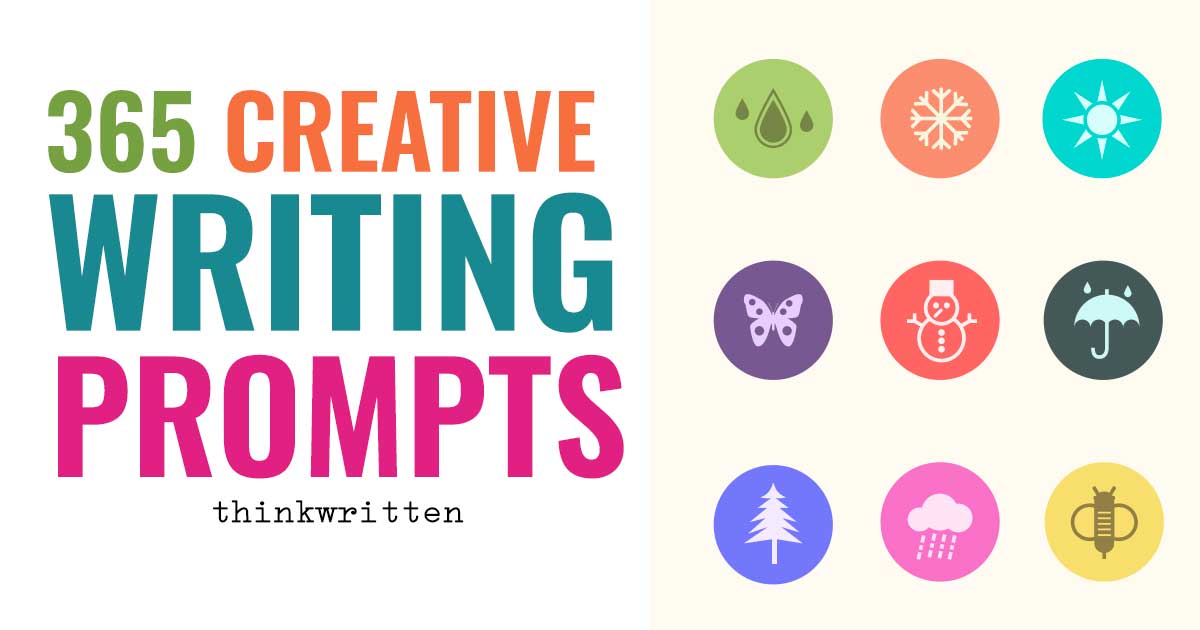
We may receive a commission when you make a purchase from one of our links for products and services we recommend. As an Amazon Associate we earn from qualifying purchases. Thank you for support!
Sharing is caring!
If you want to become a better writer, the best thing you can do is practice writing every single day. Writing prompts are useful because we know sometimes it can be hard to think of what to write about!
To help you brainstorm, we put together this list of 365 creative writing prompts to give you something to write about daily.
Want to Download these prompts? I am super excited to announce due to popular demand we now have an ad-free printable version of this list of writing prompts available for just $5. The printable version includes a PDF as a list AND print-ready prompt cards. {And all the design source files you could ever need to customize any way you would like!}
Here are 365 Creative Writing Prompts to Inspire:
Whether you write short stories, poems, or like to keep a journal – these will stretch your imagination and give you some ideas for topics to write about!
1. Outside the Window : What’s the weather outside your window doing right now? If that’s not inspiring, what’s the weather like somewhere you wish you could be?
2. The Unrequited love poem: How do you feel when you love someone who does not love you back?
3. The Vessel: Write about a ship or other vehicle that can take you somewhere different from where you are now.
4. Dancing: Who’s dancing and why are they tapping those toes?
5. Food: What’s for breakfast? Dinner? Lunch? Or maybe you could write a poem about that time you met a friend at a cafe.
6. Eye Contact: Write about two people seeing each other for the first time.
7. The Rocket-ship: Write about a rocket-ship on its way to the moon or a distant galaxy far, far, away.

8. Dream-catcher : Write something inspired by a recent dream you had.
9. Animals: Choose an animal. Write about it!
10. Friendship: Write about being friends with someone.
11. Dragon : Envision a dragon. Do you battle him? Or is the dragon friendly? Use descriptive language.
12. Greeting : Write a story or poem that starts with the word “hello” or another greeting.
13. The Letter: Write a poem or story using words from a famous letter or inspired by a letter someone sent you.
14. The Found Poem : Read a book and circle some words on a page. Use those words to craft a poem. Alternatively, you can cut out words and phrases from magazines.
15. Eavesdropper : Create a poem, short story, or journal entry about a conversation you’ve overheard.
16. Addict: Everyone’s addicted to something in some shape or form. What are things you can’t go without?
17. Dictionary Definition : Open up a dictionary to a random word. Define what that word means to you.

18. Cleaning: Hey, even writers and creative artists have to do housework sometimes. Write about doing laundry, dishes, and other cleaning activities.
19. Great Minds: Write about someone you admire and you thought to have had a beautiful mind.
20. Missed Connections: If you go to Craigslist, there is a “Missed Connections” section where you can find some interesting storylines to inspire your writing.
21. Foreclosure : Write a poem or short story about someone who has lost or is about to lose their home.
22. Smoke, Fog, and Haze: Write about not being able to see ahead of you.
23. Sugar: Write something so sweet, it makes your teeth hurt.
24. Numbers: Write a poem or journal entry about numbers that have special meaning to you.
25. Dread: Write about doing something you don’t want to do.
26. Fear: What scares you a little? What do you feel when scared? How do you react?
27. Closed Doors: What’s behind the door? Why is it closed?

28. Shadow: Imagine you are someone’s shadow for a day.
29. Good Vibes: What makes you smile? What makes you happy?
30. Shopping: Write about your shopping wishlist and how you like to spend money.
31. The Professor: Write about a teacher that has influenced you.
32. Rewrite : Take any poem or short story you enjoy. Rewrite it in your own words.
33. Jewelry: Write about a piece of jewelry. Who does it belong to?
34. Sounds : Sit outside for about an hour. Write down the sounds you hear.
35. War and Peace: Write about a recent conflict that you dealt with in your life.
36. Frame It: Write a poem or some phrases that would make for good wall art in your home.
37. Puzzle: Write about putting together the pieces of puzzles.
38. Fire-starters: Write about building a fire.
39. Coffee & Tea: Surely you drink one or the other or know someone who does- write about it!
40. Car Keys: Write about someone getting their driver’s license for the first time.
41. What You Don’t Know: Write about a secret you’ve kept from someone else or how you feel when you know someone is keeping a secret from you.
42. Warehouse : Write about being inside an old abandoned warehouse.

43. The Sound of Silence: Write about staying quiet when you feel like shouting.
44. Insult: Write about being insulted. How do you feel? Why do you think the other person insulted you?
45. Mirror, Mirror: What if you mirror started talking to you? What might the mirror say?
46. Dirty: Write a poem about getting covered in mud.
47. Light Switch : Write about coming out of the dark and seeing the light.
48. The Stars : Take inspiration from a night sky. Or, write about a time when “the stars aligned” in your horoscope.
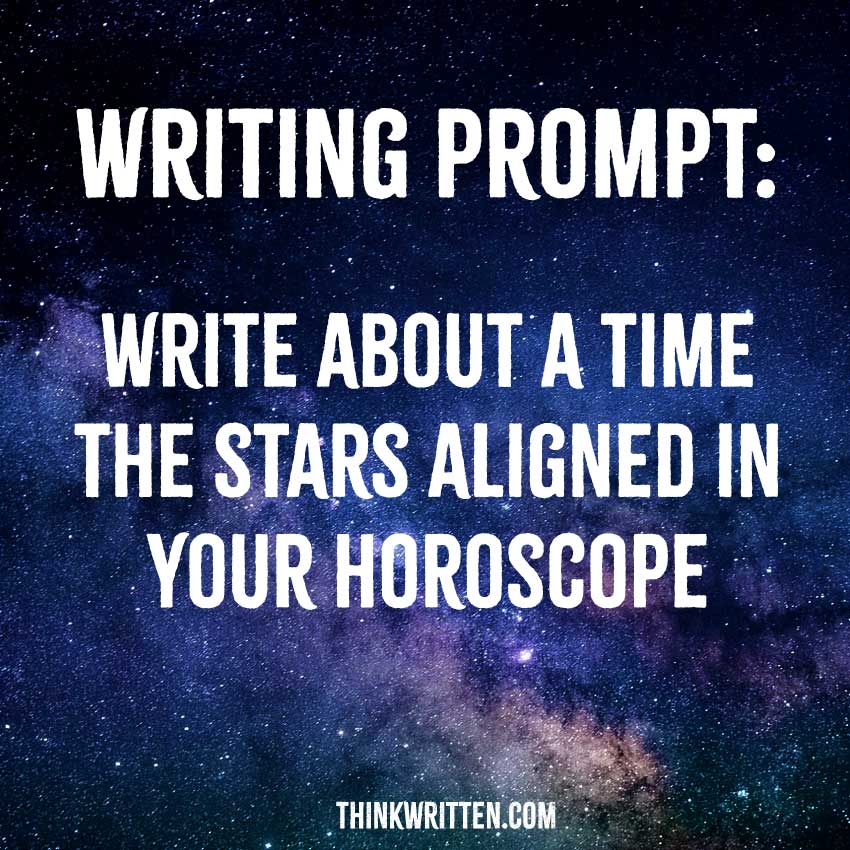
49. Joke Poem : What did the wall say to the other wall? Meet you at the corner! Write something inspired by a favorite joke.
50. Just Say No : Write about the power you felt when you told someone no.
51: Sunrise/Sunset : The sun comes up, the sun goes down. It goes round and round. Write something inspiring about the sunrise or sunset.
52. Memory Lane : What does Memory Lane look like? How do you get there?
53. Tear-Jerker : Watch a movie that makes you cry. Write about that scene in the movie.
54. Dear Diary: Write a poem or short story about a diary entry you’ve read or imagined.
55. Holding Hands : The first time you held someone’s hand.
56. Photograph : Write a story or journal entry influenced by a photograph you see online or in a magazine.
57. Alarm Clock: Write about waking up.
58. Darkness: Write a poem or journal entry inspired by what you can’t see.
59. Refreshed: Write a poem about a time you really felt refreshed and renewed. Maybe it was a dip into a pool on a hot summer day, a drink of lemonade, or other situation that helped you relax and start again.
60. Handle With Care : Write about a very fragile or delicate object.
61. Drama: Write about a time when you got stuck in between two parties fighting with each other.
62. Slip Up: Write about making mistakes.
63. Spice: Write about flavors and tastes or a favorite spice of yours.
64. Sing a New Song: Take a popular song off the radio and rewrite it as a poem in your own words.
65. Telephone: Write about a phone call you recently received.
66. Name: Write a poem or short story using your name in some way or form.
67. Dollhouse: Write a poem or short story from the viewpoint of someone living in a doll house.
68. Random Wikipedia Article : Go to Wikipedia and click on Random Article . Write about whatever the page you get.
69. Silly Sports: Write about an extreme or silly sport. If none inspire you, make up the rules for your own game.
70. Recipe : Write about a recipe for something abstract, such as a feeling.
71. Famous Artwork: Choose a famous painting and write about it.
72. Where That Place Used to Be : Think of a place you went to when you were younger but it now no longer there or is something else. Capture your feelings about this in your writing.
73. Last Person You Talked to: Write a quick little poem or story about the last person you spoke with.
74. Caught Red-Handed: Write about being caught doing something embarrassing.
75. Interview: Write a list of questions you have for someone you would like to interview, real or fictional.
76. Missing You: Write about someone you miss dearly.
77. Geography: Pick a state or country you’ve never visited. Write about why you would or would not like to visit that place.

78. Random Song: Turn on the radio, use the shuffle feature on your music collection or your favorite streaming music service. Write something inspired by the first song you hear.
79. Hero: Write a tribute to someone you regard as a hero.
80. Ode to Strangers: Go people watching and write an ode to a stranger you see on the street.
81. Advertisement: Advertisements are everywhere, aren’t they? Write using the slogan or line from an ad.
82. Book Inspired: Think of your favorite book. Now write a poem that sums up the entire story in 10 lines.
83. Magic : Imagine you have a touch of magic, and can make impossible things happen. What would you do?
84. Fanciest Pen: Get out your favorite pen, pencils, or even colored markers and write using them!
85. A Day in the Life: Write about your daily habits and routine.
86. Your Muse: Write about your muse – what do they look like? What does your muse do to inspire you?
87. Convenience Store : Write about an experience you’ve had at a gas station or convenience store.
88. Natural Wonders of the World: Choose one of the natural wonders of the world. Write about it.
89. Status Update: Write a poem using the words from your latest status update or a friend’s status update. If you don’t use sites like Facebook or Twitter, you can often search online for some funny ones to use as inspiration.
90. Green Thumb: Write about growing something.
91. Family Heirloom: Write about an object that’s been passed through the generations in your family.
92. Bug Catcher: Write about insects.
93. Potion: Write about a magic potion. What is it made of? What does it do? What is the antidote?
94. Swinging & Sliding: Write something inspired by a playground or treehouse.
95. Adjectives: Make a list of the first 5 adjectives that pop into your head. Use these 5 words in your story, poem, or journal entry.
96. Fairy Tales: Rewrite a fairy tale. Give it a new ending or make it modern or write as a poem.
97. Whispers: Write about someone who has to whisper a secret to someone else.
98. Smile: Write a poem about the things that make you smile.
99. Seasonal: Write about your favorite season.
100. Normal: What does normal mean to you? Is it good or bad to be normal?
101. Recycle : Take something you’ve written in the past and rewrite it into a completely different piece.
102. Wardrobe: Write about a fashion model or what’s currently in your closet or drawers.
103. Secret Message : Write something with a secret message hidden in between the words. For example, you could make an acrostic poem using the last letters of the word or use secret code words in the poem.
104. Vacation: Write about a vacation you took.
105. Heat: Write about being overheated and sweltering.
106. Spellbinding: Write a magic spell.
107. Collection : Write about collecting something, such as salt shakers, sea shells, or stamps.
108. Taking Chances: Everyone takes a risk at some point in their life. Write about a time when you took a chance and what the result was.
109. Carnival: Write a poem or story or journal entry inspired by a carnival or street fair.
110. Country Mouse: Write about someone who grew up in the country visiting the city for the first time.
111: Questions: Write about questions you have for the universe. Optional: include an answer key.
112. Rushing: Write about moving quickly and doing things fast.
113. Staircase : Use a photo of a staircase or the stairs in your home or a building you love to inspire you.
114. Neighbors: Make up a story or poem about your next door neighbor.
115. Black and Blue: Write about a time you’ve been physically hurt.
116. All Saints: Choose a saint and create a poem about his or her life.
117. Beach Inspired: What’s not to write about the beach?
118. Shoes: What kind of shoes do you wear? Where do they lead your feet?
119. The Ex: Write a poem to someone who is estranged from you.
120. My Point of View: Write in the first person point of view.
121. Stray Animal: Think of the life of a stray cat or dog and write about that.
122. Stop and Stare : Create a poem or story about something you could watch forever.
123. Your Bed: Describe where you sleep each night.
124. Fireworks : Do they inspire you or do you not like the noise and commotion? Write about it.
125. Frozen: Write about a moment in your life you wish you could freeze and preserve.
126. Alone : Do you like to be alone or do you like having company?
127. Know-it-all: Write about something you are very knowledgeable about, for example a favorite hobby or passion of yours.
128. The Promise: Write about a promise you’ve made to someone. Did you keep that promise?
129. Commotion: Write about being overstimulated by a lot of chaos.
130. Read the News Today : Construct a poem or story using a news headline for your first line.
131. Macro: Write a description of an object close-up.
132. Transportation : Write about taking your favorite (or least-favorite) form of transportation.
133. Gadgets: If you could invent a gadget, what would it do? Are there any gadgets that make your life easier?
134: Bring on the Cheese: Write a tacky love poem that is so cheesy, it belongs on top of a pizza.
135. Ladders: Write a story or poem that uses ladders as a symbol.
136. Bizarre Holiday : There is a bizarre holiday for any date! Look up a holiday for today’s date and create a poem in greeting card fashion or write a short story about the holiday to celebrate.
137. Blog-o-sphere : Visit your favorite blog or your feedreader and craft a story, journal entry, or poem based on the latest blog post you read.
138. Mailbox: Create a poem, short story, or journal entry based on a recent item of mail you’ve received.
139. Sharing : Write about sharing something with someone else.
140. Cactus: Write from the viewpoint of a cactus. What’s it like to live in the desert or have a prickly personality?
141. It’s a Sign : Have you seen any interesting road signs lately?
142. Furniture: Write about a piece of furniture in your home.
143. Failure: Write about a time you failed at something. Did you try again or give up completely?
144. Mystical Creatures: Angels or other mystical creatures – use them as inspiration.
145. Flying: Write about having wings and what you would do.
146. Clear and Transparent: Write a poem about being able to see-through something.
147. Break the Silence : Record yourself speaking, then write down what you spoke and revise into a short story or poem.
148. Beat: Listen to music with a strong rhythm or listen to drum loops. Write something that goes along with the beat you feel and hear.
149. Color Palette: Search online for color palettes and be inspired to write by one you resonate with.
150. Magazine: Randomly flip to a page in a magazine and write using the first few words you see as an opening line.
151. The Grass is Greener : Write about switching the place with someone or going to where it seems the “grass is greener”.
152. Mind & Body: Write something that would motivate others to workout and exercise.
153. Shaping Up : Write something that makes a shape on the page…ie: a circle, a heart, a square, etc.
154. Twenty-One: Write about your 21st birthday.
155. Aromatherapy: Write about scents you just absolutely love.
156. Swish, Buzz, Pop : Create a poem that uses Onomatopoeia .
157. What Time is It? Write about the time of day it is right now. What are people doing? What do you usually do at this time each day?
158. Party Animal: Have you ever gone to a party you didn’t want to leave? Or do you hate parties? Write about it!
159: Miss Manners : Use the words “please” and “thank you” in your writing.
160. Cliche: Choose a common cliche, then write something that says the same thing but without using the catch phrase.
161. Eco-friendly : Write about going green or an environmental concern you have.
162. Missing You: Write about someone you miss.
163. Set it Free: Think of a time when you had to let someone or something go to be free…did they come back?
164: Left Out : Write about a time when you’ve felt left out or you’ve noticed someone else feeling as if they didn’t belong.
165. Suitcase: Write about packing for a trip or unpacking from when you arrive home.

166. Fantasy : Write about fairies, gnomes, elves, or other mythical creatures.
167. Give and Receive : Write about giving and receiving.
168. Baker’s Dozen: Imagine the scents and sights of a bakery and write.
169. Treehouse: Write about your own secret treehouse hideaway.
170. Risk: Write about taking a gamble on something.
171. Acrostic : Choose a word and write an acrostic poem where every line starts with a letter from the word.
172. Crossword Puzzle: Open up the newspaper or find a crossword puzzle online and choose one of the clues to use as inspiration for your writing.
173. Silver Lining : Write about the good that happens in a bad situation.
174. Gloves: Write about a pair of gloves – what kind of gloves are they? Who wears them and why?
175. All that Glitters: Write about a shiny object.
176. Jealousy: Write with a theme of envy and jealousy.
Want to Download these prompts? I am super excited to announce due to popular demand we now have an ad-free printable version of this list of writing prompts available for just $5. The printable version includes a PDF as a list AND print-ready prompt cards. {And all the design source files you could ever need to customize any way you would like!}
177. How Does Your Garden Grow? Write about a flower that grows in an unusual place.
178. Jury Duty : Write a short story or poem that takes place in a courtroom.
179. Gifts: Write about a gift you have given or received.
180. Running: Write about running away from someone or something.
181. Discovery: Think of something you’ve recently discovered and use it as inspiration.
182. Complain: Write about your complaints about something.
183. Gratitude: Write a poem or journal entry that is all about things you are thankful for.
184. Chemistry: Choose an element and write a poem or story that uses that word in one of the lines.
185. Applause: Write about giving someone a standing ovation.
186. Old Endings Into New Beginnings: Take an old poem, story, or journal entry of yours and use the last line and make it the first line of your writing today.
187. Longing: Write about something you very much want to do.
188. I Am: Write a motivational poem or journal entry about positive traits that make you who you are.
189. Rainbow : What is at the end of a rainbow? Or, take a cue from Kermit the Frog, and ask yourself, why are there so many songs about rainbows?

190. Museum: Take some time to visit a nearby museum with your journal. Write about one of the pieces that speaks to you.
191. Cartoon: Think of your favorite cartoon or comic. Write a poem or story that takes place in that setting.
192. Copycat: Borrow a line from a famous public domain poem to craft your own.
193. From the Roof-tops: Imagine you could stand on a rooftop and broadcast a message to everyone below – what would you say?
194. Time Travel: If there was a time period you could visit for a day, where would you go? Write about traveling back in time to that day.
195. Changing Places: Imagine living the day as someone else.
196. Neighborhood: Write about your favorite place in your neighborhood to visit and hang out at.
197. Pirates: Write about a pirate ship.
198. Interview : Write based on a recent interview you’ve read or seen on TV or heard on the radio.
199. Hiding Spaces : Write about places you like to hide things at. What was a favorite hiding spot for you as a child playing hide-and-seek?
200. Extreme Makeover: Imagine how life might be different if you could change your hair color or clothing into something completely opposite from your current style.
201. Empathy: Write about your feelings of empathy or compassion for another person.
202. Opposites: Write a poem or story that ties in together two opposites.
203. Boredom: Write about being bored or make a list of different ways to entertain yourself.
204. Strength : Think of a time when you’ve been physically or emotionally strong and use that as inspiration.
205. Hunger: Write from the perspective of someone with no money to buy food.
206. Greed: Write about someone who always wants more – whether it be money, power, etc. etc.
207. Volcano: Write about an eruption of a volcano.
208. Video Inspiration : Go to Vimeo.com or YouTube.com and watch one of the videos featured on the homepage. Write something based on what you watch.
209. Sneeze: Write about things that make you sneeze.
210. Footsteps on the Moon: Write about the possibility of life in outer-space.
211: Star-crossed: Write a short modern version of the story of Romeo and Juliet or think of real-life examples of lovers who are not allowed to be together to use as inspiration for your writing.
212. Font-tastic: Choose a unique font and type out a poem, story or journal entry using that font.
213. Schedule: Take a look at your calendar and use the schedule for inspiration in writing.
214. Grandparents: Write about a moment in your grandparent’s life.
215. Collage: Go through a magazine and cut out words that grab your attention. Use these words to construct a poem or as a story starter or inspiration for your journal.
216. Oh so Lonely: Write a poem about what you do when you are alone – do you feel lonely or do you enjoy your own company?
217. Waterfall: Think of a waterfall you’ve seen in person or spend some time browsing photos of waterfalls online. Write about the movement, flow, and energy.
218. First Kiss: Write about your first kiss.
219. So Ironic: Write about an ironic situation you’ve been in throughout your life.
220. Limerick: Write a limerick today.
221. Grocery Shopping: Write about an experience at the grocery store.
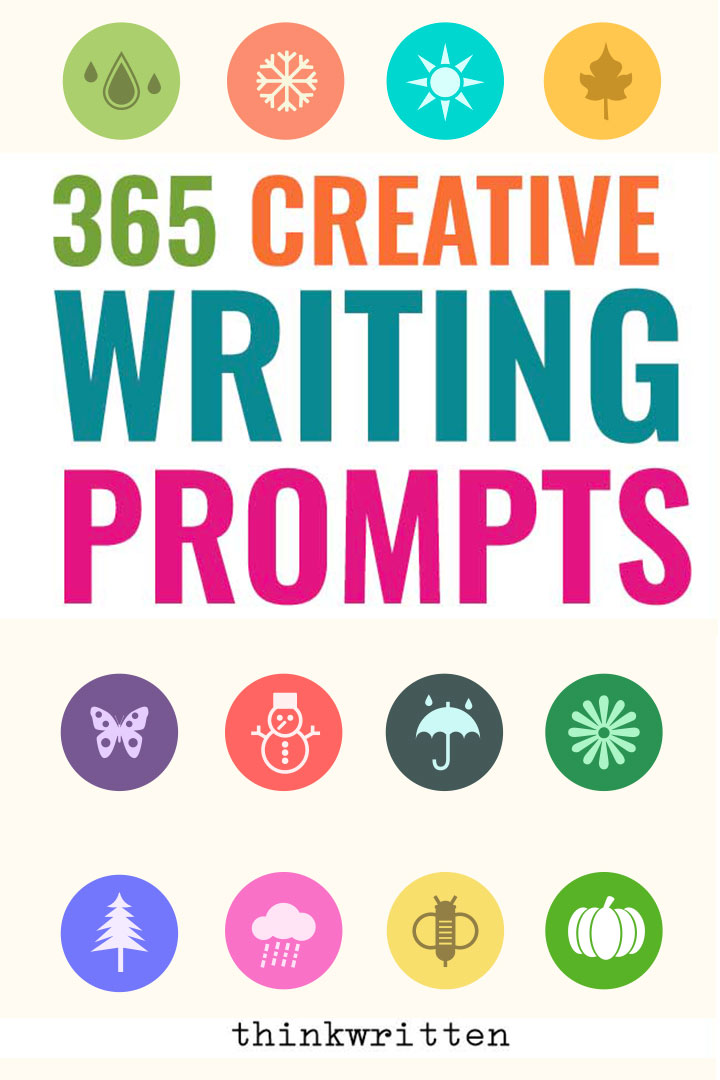
222. Fashion : Go through a fashion magazine or browse fashion websites online and write about a style you love.
223. So Close: Write about coming close to reaching a goal.
224. Drinks on Me: Write a poem or short story that takes place at a bar.
225. Online Friends: Write an ode to someone online you’ve met and become friends with.
226. Admiration: Is there someone you admire? Write about those feelings.
227. Trash Day: Write from the perspective of a garbage collector.
228. Mailbox: Open your mailbox and write something inspired by one of the pieces of mail you received.
229. Fresh & Clean: Write about how you feel after you take a shower.
230. Energized: Write about how you feel when you’re either at a high or low energy level for the day.
231. Rhyme & No Reason: Make up a silly rhyming poem using made up words.
232. Tech Support: Use computers or a conversation with tech support you’ve had as inspiration.
233. Hotel: Write from the perspective of someone who works at a hotel or staying at a hotel.
234. Underwater: Write about sea creatures and under water life. What’s under the surface of the ocean? What adventures might be waiting?

235. Breathing: Take a few minutes to do some deep breathing relaxation techniques. Once your mind is clear, just write the first few things that you think of.
236. Liar, Liar: Make up a poem or story of complete lies about yourself or someone else.
237. Obituaries: Look at the recent obituaries online or in the newspaper and imagine the life of someone and write about that person.
238. Pocket: Rummage through your pockets and write about what you keep or find in your pockets.
239. Cinquain: Write a cinquain poem, which consists of 5 lines that do not rhyme.
240. Alphabetical: Write a poem that has every letter of the alphabet in it.
241. Comedy Club: Write something inspired by a comedian.
242. Cheater: Write about someone who is unfaithful.
243. Sestina: Give a try to writing a sestina poem.
244. Fight: Write about witnessing two people get in an argument with each other.
245. Social Network : Visit your favorite Social Networking website (ie: Facebook, Pinterest, Google, Twitter, etc.) and write a about a post you see there.
246. Peaceful: Write about something peaceful and serene.
247. In the Clouds: Go cloud watching for the day and write about what you imagine in the clouds.
248. At the Park: Take some time to sit on a park bench and write about the sights, scenes, and senses and emotions you experience.
249. Sonnet: Write a sonnet today.
250. Should, Would, And Could: Write a poem or story using the words should, would, and could.
251. How to: Write directions on how to do something.
252. Alliteration: Use alliteration in your poem or in a sentence in a story.
253. Poker Face: Write about playing a card game.
254. Timer: Set a timer for 5 minutes and just write. Don’t worry about it making sense or being perfect.
255. Dance: Write about a dancer or a time you remember dancing.
256. Write for a Cause: Write a poem or essay that raises awareness for a cause you support.
257. Magic : Write about a magician or magic trick.
258. Out of the Box: Imagine finding a box. Write about opening it and what’s inside.
259. Under the Influence: What is something has impacted you positively in your life?
260. Forgotten Toy : Write from the perspective a forgotten or lost toy.
261. Rocks and Gems: Write about a rock or gemstone meaning.
262. Remote Control: Imagine you can fast forward and rewind your life with a remote control.
263. Symbolism: Think of objects, animals, etc. that have symbolic meaning to you. Write about it.
264. Light at the End of the Tunnel: Write about a time when you saw hope when it seemed like a hopeless situation.
265. Smoke and Fire : “Where there’s smoke, there’s fire.” Use this saying as inspiration to write!
266. Railroad: Write about a train and its cargo or passengers.

267. Clipboard: Write about words you imagine on an office clipboard.
268. Shipwrecked: Write about being stranded somewhere – an island, a bus stop, etc.
269. Quotable: Use a popular quote from a speaker and use it as inspiration for your writing.
270. Mind Map it Out: Create a mind map of words, phrases, and ideas that pop into your head or spend some time browsing the many mind maps online. Write a poem, story, or journal entry inspired by the mind map.
271. Patterns : Write about repeating patterns that occur in life.
272. Scrapbook : Write about finding a scrapbook and the memories it contains.
273. Cure: Write about finding a cure for an illness.
274. Email Subject Lines: Read your email today and look for subject lines that may be good starters for writing inspiration.
275. Wishful Thinking: Write about a wish you have.
276. Doodle : Spend some time today doodling for about 5-10 minutes. Write about the thoughts you had while doodling or create something inspired by your finished doodle.
277. Chalkboard: Imagine you are in a classroom. What does it say on the chalkboard?
278. Sticky: Imagine a situation that’s very sticky, maybe even covered in maple syrup, tape or glue. Write about it!
279. Flashlight : Imagine going somewhere very dark with only a flashlight to guide you.
280. A Far Away Place : Envision yourself traveling to a fictional place, what do you experience in your imaginary journey?
281. On the Farm : Write about being in a country or rural setting.
282. Promise to Yourself: Write about a promise you want to make to yourself and keep.
283. Brick Wall : Write a poem that is about a brick wall – whether literal or figurative.
284. Making a Choice: Write about a time when you had to make a difficult choice.
285. Repeat: Write about a time when you’ve had to repeat yourself or a time when it felt like no one was listening.
286. Outcast : Write about someone who is not accepted by their peers. (for example, the Ugly Ducking)
287. Scary Monsters: Write about a scary (or not-so-scary) monster in your closet or under the bed.
288. Sacrifice: Write about something you’ve sacrificed doing to do something else or help another person.
289. Imperfection: Create a poem that highlights the beauty in being flawed.
290. Birthday Poem: Write a poem inspired by birthdays.
291. Title First : Make a list of potential poem or story titles and choose one to write from.
292. Job Interview : Write about going on a job interview.
293. Get Well : Write a poem that will help someone who is sick feel better quick!
294. Lost in the Crowd: Write about feeling lost in the crowd.
295. Apple a Day: Write about a health topic that interests you.
296. Cravings: Write about craving something.
297. Phobia: Research some common phobias, choose one, and write about it.
298. In the Moment: Write about living in the present moment.
299. Concrete : Write about walking down a sidewalk and what you see and experience.
300. Battle: Write about an epic battle, whether real, fictional or figurative.
301. This Old House : Write about an old house that is abandoned or being renovated.
302. Clutter: Is there a cluttered spot in your home? Go through some of that clutter today and write about what you find or the process of organizing.
303. Go Fly a Kite: Write about flying a kite.
304. On the TV: Flip to a random TV channel and write about the first thing that comes on – even if it is an infomercial!
305. Fruit: Write an ode to your favorite fruit.
306. Long Distance Love: Write about a couple that is separated by distance.
307. Glasses: Write about a pair of eyeglasses or someone wearing glasses.
308. Robotic : Write about a robot.
309. Cute as a Button: Write about something you think is just adorable.
310. Movie Conversation: Use a memorable conversation from a favorite movie to inspire your writing.
311. Easy-Peasy : Write about doing something effortlessly.
312. Idiom: Choose from a list of idioms one that speaks to you and create a poem around that saying or phrase. (Ie: It is raining cats and dogs)
313. Playground: Whether it is the swings or the sandbox or the sliding boards, write about your memories of being on a playground.
314. Romance: Write about romantic things partners can do for each other.
315. Rock Star: Imagine you are a famous rock star. Write about the experience.

316. Come to Life: Imagine ordinary objects have come to life. Write about what they do and say.
317. Airplane: Write about meeting someone on an airplane and a conversation you might have.
318. Health & Beauty: Take some time to peruse your medicine cabinet or the health and beauty aisles at a local store. Write a poem, short story, or journal entry inspired by a product label.
319. Determination: Write about not giving up.
320. Instrumental Inspiration: Listen to some instrumental music and write a poem that matches the mood, beat, and style of the music.
321. Wait Your Turn: Write about having to wait in line.
322. Personality Type : Do you know your personality type? (There are many free quizzes online) – write about what type of personality traits you have.
323. Decade: Choose a favorite decade and write about it. (IE: 1980’s or 1950’s for example)
324. I Believe: Write your personal credo of things you believe in.
325. Lost and Found: Write about a lost object.
326. Say it: Write a poem or story that uses dialogue between two people.
327. The Unsent Letter: Write about a letter that never made it to its recipient.
328. The Windows of the Soul: Write a poem about the story that is told through someone’s eyes.
329. Trial and Error: Write about something you learned the hard way.
330. Escape : Write about where you like to go to escape from it all.
331. What’s Cooking: Write something inspired a favorite food or recipe.
332. Records : Go through your file box and pull out old receipts or records…write something inspired by what you find!
333. Banking: Write about visiting the bank.
334. Sweet Talk: Write about trying to convince someone of something.
335. Serendipity: Write about something that happened by chance in a positive way.
336. Distractions: Write about how it feels when you can’t focus.
337. Corporation: Write about big business.
338. Word of the Day: Go to a dictionary website that has a word of the day and use it in a poem, story or journal entry you write.
339. Pick Me Up: What do you do when you need a pick me up?
340. Unfinished: Write about a project you started but never completed.
341. Forgiveness: Write about a time when someone forgave you or you forgave someone.
342. Weakness: Write about your greatest weakness.
343. Starting: Write about starting a project.
344. Mechanical: Think of gears, moving parts, machines.
345. Random Act of Kindness : Write about a random act of kindness you’ve done for someone or someone has done for you, no matter how small or insignificant it may have seemed.
346. Underground: Imagine living in a home underground and use that as inspiration for writing.
347. Classic Rock: Pick a classic rock love ballad and rewrite it into a story or poem with a similar theme.
348. Night Owl : Write about staying up late at night.
349. Magnetic : Write about attraction to something or someone.
350. Teamwork: Write about working with a team towards a common goal.
351. Roller-coaster : Write about the ups and downs in life.
352. Motivational Poster: Look at some motivational posters online and write a poem or journal entry inspired by your favorite one.
353. Games: Write about the games people play – figuratively or literally.

354. Turning Point: Write about a point in life where things turned for the better or worse.
355. Spellbound: Write about a witch’s spell.
356. Anniversary: Write about the anniversary of a special date.
357. Gamble: Be inspired by a casino or lottery ticket.
358. Picnic: Write about going on a picnic.
359. Garage: Write about some random item you might find in a garage.
360. Review: Review your week, month, or year in a journal entry or poem format.
361. Detective: Write about a detective searching for clues or solving a mystery.
362. Camera: Take your camera for a walk and write based on one of the photographs you take.
363. Visiting : Write about visiting a family member or friend.
364. Trust: Write about putting trust in someone.
365. Congratulations : Did you write a poem, short story, or journal entry every day for a whole year? Write about what you’ve learned and celebrate your achievement!
We hope you enjoy these creative writing prompts! And of course, if you write anything using these prompts, we’d love to know about it! Tell us how you’ll use these everyday creative writing prompts in the comments section below!
And of course, if you’d like the printable ad-free version of these prompts to reference again and again or to use in your classroom, you can find them at our Etsy shop !
Chelle Stein wrote her first embarrassingly bad novel at the age of 14 and hasn't stopped writing since. As the founder of ThinkWritten, she enjoys encouraging writers and creatives of all types.
Similar Posts
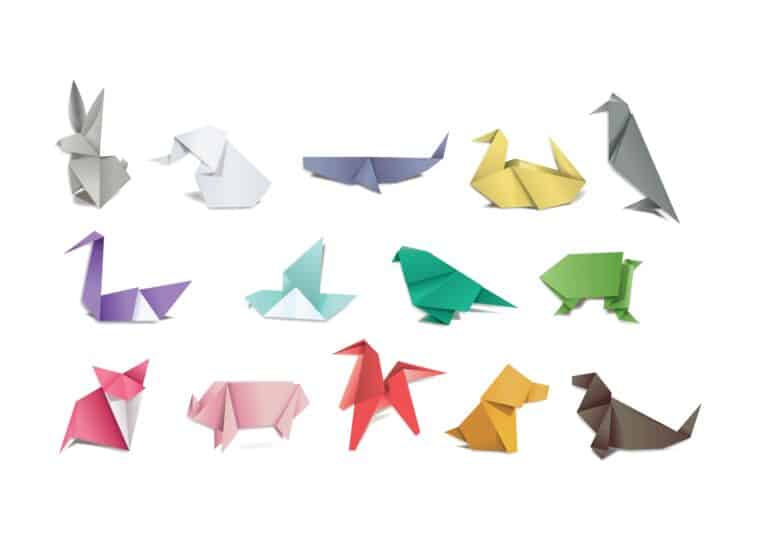
300 Fun Writing Prompts for Kids: Story Starters, Journal Prompts & Ideas
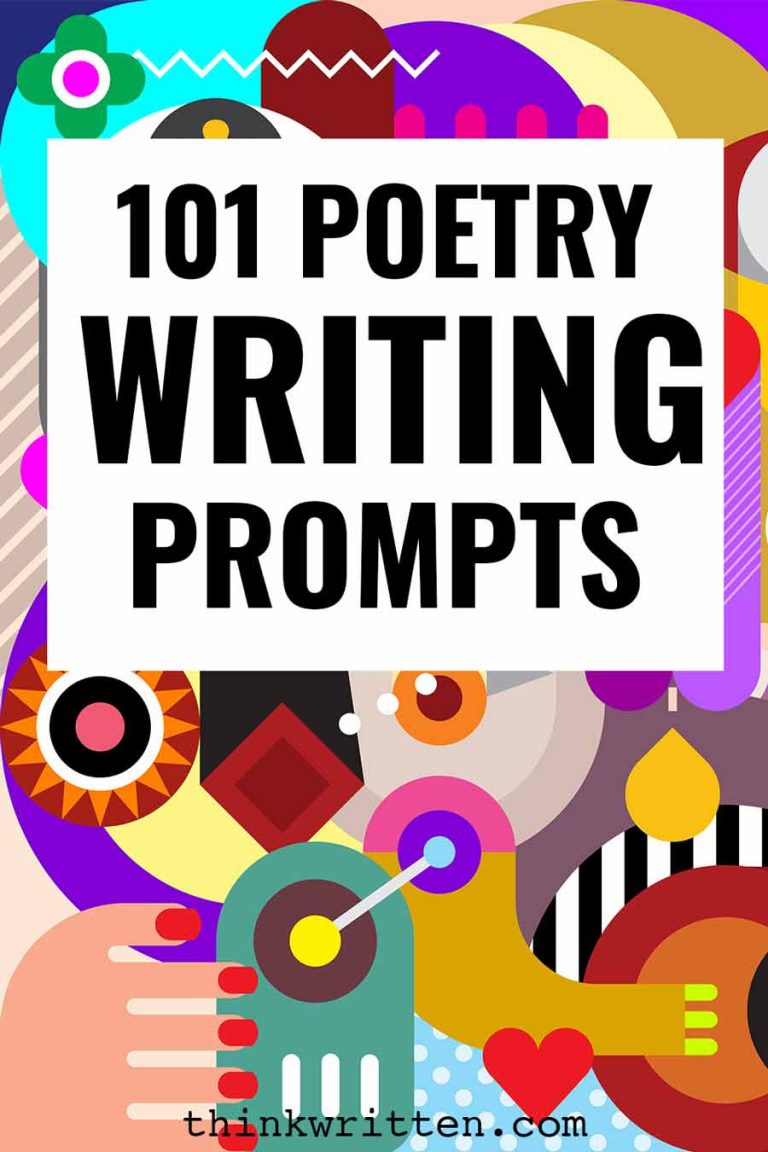
101 Poetry Prompts & Ideas for Writing Poems

7 Creative Writing Exercises For Writers

108 Romance Writing Prompts & Love Story Ideas

42 Fantasy Writing Prompts & Plot Ideas
191 comments.
I have been on a reading binge since being on vacation from school. By rereading Little House, Anne of Green Gables, and Little Women among others, one wonders about writing a book. I stumbled across this while looking up unit supplements for my kiddos, and thought, hey, write a page a day and see what happens! Thank you for this collection of prompts! I’ve linked back to this page several times so others can try their hand at writing. Thank you again!
The Flicker, The Teeth, and A Warehouse in the Dark (the warehouse prompt)
I am in a large abandoned warehouse with a flickering light The only light in the whole room. It flickered leaving me in temporal darkness It flickered again and as it was dark I swore I saw something glowing It looked like glowing teeth The lights return and I see nothing Flickers on Flickers off I see the teeth closer Flickers on I see nothing Flickers off The teeth so close Flickers on An empty warehouse Flickers off The glowing teeth are inchings away bright red blood drips from their tips Flickers on Panic rises in my chest but nothing is there Turns off The mouth of bloody teeth is before my eyes I wait for the light to flicker back on I wait in complete darkness I wait And wait And wait The teeth open wide I try to scream by the darkness swallows it A hear the crunch of my bones I see my blood pore down my chest But I wait in darkness for the pain I wait And wait And wait The mouth of teeth devours my lower half I wait for pain and death I wait And wait And wait The light flickers on I see no monster Only my morphed body And blood And blood And blood And so much blood The light flickers off The monster eats my arm Flickers on I wait for pain Flickers off I watch as the creature eats my limbs Flickers on I wait for death Flickers off Slowly the teeth eat my head All I see is dark I wait for it to flicker on Where is the warehouse light? Where is the only light in the room? Where is the flicker? Where am I? Where are the bloody teeth? I wait for the light to come back And wait And wait And wait And wait And wait And wait And wait in eternal darkness
WOW. Thank you!
This is such a helpful tool! I’ve learned a lot about my self through picking a random prompt and writing the first thing that comes to mind. I’d love to see a follow up list of possible! Definitely a recomended sight!
I agree. Very helpful.
I am new at the blogging game. You have provided some wonderful ideas for blog posts. Great ideas just to get used to writing every day. Thanks
This list is really impressive and useful for those of us who are looking for good topics to blog about. Thanks!
Thank you! That somes in handy
Very nice list. Thanks for compiling and posting it. It’s not only good for bloggers, but poets, as well.
yess im using it for my new years resolution, which is to write a poem daily!
Wow, thanks so much for all these wonderful prompts! They are lots of fun and very helpful. I love how you’ve provided 365 of them–A prompt for every day of the year! 🙂
Not if it’s a leap year…
Haha. Yea. This is great though all the same.. ;-;
Lol actually there’s 364 days in a year and 365 in a leap year so……yeah
are you fucking stupid
There are actually 366 days in a leap year so… yeah
I use this for my homeschooling-I love it! Thank you so much!! This is a wonderful list. So creative! 🙂 🙂
Thanks! I’m preparing for writing every day next year and this will come in really handy. It’s just 364 writing prompts though. 164 is missing. 😉
MiMschi is wrong 164 is there i looked
I think they meant that as a joke, 164 is called left out…
Good it is useful
no its not you nonce
You Don’t Love Me, Damn You
things left unsaid
and then some
anger strangles the baby
in its crib,
flowers wilt,
rivers dry up
harsh words clatter upon the day,
echo unfortunately
till silence smothers
in its embrace
you wish you could take it back
what’s done is done
never to be undone
though things move on
part of you remains
locked in the middle of protesting
one last thing,
mouth open,
no words emerging
why must you be misunderstood?
why must everything you say
no way of straightening things out
gestures halted mid-air
an accusatory finger
shoulders locked
in sardonic shrug
dishes smash on the floor
spray of fragments
frozen mid-air
slam the door
it doesn’t open
but in spite of yourself
you turn and look
one last time…..
(Greg Cameron, Poem, Surrey, B.C., Canada)
Love these. Thank you!
This is really amazingly deep. I love it so much. You have so much talent!!
Thanks SOOO much for the prompts but I have another suggestion!
A Recipe for disaster- write a recipe for a disastrous camping trip…
that one sounds awesome.
Haha. Reminds me of the old twin’s show.. what was it.. where the two girls switch places when they meet at camp?
Pretty sure I know what you’re talking about. The Parent Trap, right? Never seen the whole movie, but it seems funny.
and also #309, everyone should have thought of a hamster “write” away XD!
May I have permission to use this list at my next Ozarks Chapter of the American Christian Writers meeting. Thank you for consideration.
Hi Leah, please send some more info here: https://thinkwritten.com/contact
i am using it for my homeschooling and i love it
i am using it for my homeschooling
where is prompt 165?
sorry I meant 164, my mistake.
well kay, there is a 164 AND 165. So your head is clearly ????????????
What I like most about these is how you can combine them and get really weird ideas. For example, empathy from the rooftops: what if you shouted something positive in public every day – or if everyone did so? It might be fun to try, and then write a diary about it. Online time travel: if people could live virtually in incredibly well=constructed versions of different time periods, what would the effects be on today’s society? Could it change our language or customs?
It would be cool if we could have goggles that showed places during a certain time period. Like Seattle 1989. And you could buy special plugins, like specific people you want to hang out with, famous or non.
That one about online time travel is crazy brilliant!!! And highly thought-provoking.
It is amazing what creative writing could do to you. Daily prompts have proven to be very inspiring and overtime writers develop their own style of writing depending on how passionate they are about it. I would love to write about all 3, online, space, and time travel. cheers! and Don’t stop writing!
I belong to a writing club. We seem to have a lot of prompts to use. I love stories having to do with rain. Would you join me. I am jim
Wow! Inspiration right here.
May I use this list for a speech at my Ozarks Chapter of the American Christian Writers?
Love the inspiration
THANK YOU. THAT IS ALL I HAVE TO SAY IS THANK YOU.
What about a leap year? You’re missing one topic.
Wonderful! I love writing and these prompts are very helpful. Thank you very much! ♥
It’s been really useful in getting me to write again! Thank you very much!
I really love the list of writing ideas you have compiled here. I will be using it and others to get myself back into writing every single day if I can be away with it. Also, I have noticed a few problems with this list. One is a repeat topic. Those are numbers 76 and 162. And you skipped a number. And have only 364 days of writing. Still through! All these ideas are absolutely amazing and awesome ideas! I commend you for putting it all together in an easy to read format too. Thank you so very much.
I think we have the list all fixed now, but thanks for catching a couple of early mistakes!
Thank you for helping me edit Lora! I don’t always have a second pair of eyes + appreciated this to fix + update the post! I always say my readers are my best editors. 🙂
these days get brighter, mine gets darker, why does it has to be me , why not life.
Mirror, Mirror: What if you mirror started talking to you?
u r awesome man
Wonderful compilation of ideas! I will send your blog along to my many Creative Writing students. I’m enjoying reading your posts.
wow!! great tips! but how long did it take you to write that? its a lot of words!! lol great stuff though..
This is so cool! I love these prompts and will definitely recommend some to my teacher!!
The promise “I made a promise with my best friend, I said i’d never break, Our personalities really did blend, But then I lied awake, The people disappearing, Her gaze was always leering. I never thought she was serious, I always took it as a joke, But it really made me curious, When she was digging around that oak, My best friend is a serial killer, And i knew the truth, My life turned into a thriller, And eating at me took away my youth, I couldn’t take it any long living with this weight, To the police I went to tell my tale, Looking at me with eyes of hate, she smiled and said, without her I would fail. Now i sit in the prison cell, Waiting for my call My friend across the room smiling, my eyes begin to swell, My neck snapping on the, from my sides my hands fall
Although my writing style is dark, that’s the way I enjoy writing, and thank you for this list, even though I didn’t do one per day, scrolling through I was able to see keywords that formed ideas in my mind
I love this <3 It's amazing :))
These are really nice I absolutely love them.
This is very helpful and I’ve been finding a way to help improve my creative writing!!! Thank you very much!
You are such a life developer, who can virtually transform a life busy with unnecessary activities humans are posted to through internet. And who can restore the appetite of people to purchase pen and paper which have considered the last commodity in the market at the expense of that great vampire ‘social media’ that left both old and young paralyzed. Thanks to the proponent of this great idea.
These are great. The Closed door one gives me a great idea for a new story! Thank you so much!
man what the fuck is this shit! i was looking for short story writing prompts and I get stuck with shit like “write about the weather outside”. Damn this shit is disappointing.
Hi John, the weather might seem boring, but there are a lot of ways you can springboard from that – maybe you write a story about a character who despises the sunshine or melts if they get rained on or they live in a underground tunnel and the house gets flooded…You can also use it as an exercise in developing more descriptive writing that shows, not tells for the scenes in your story. Writing about the weather seems “easy and boring” but seriously challenge yourself to write about it in a way that makes it interesting – it is not so easy to avoid the cliches as you might think!
I LOVE IT SO MUCH i do not know why but my kids, they will just like come on this website every time it is time to have a little bit of video games! XD
The weather outside that day was dark.
It was a perfectly reasonable sort of darkness. The kind of darkness you might get if you wake up an hour before sunrise. But it was late in the morning.
He had to make sure of that. He checked his alarm clock, his microwave oven clock, and his cell phone.
The sun was supposed to be out. But the moonlit sky was starlit and clear.
And as he looked outside again, he saw that people were out, going about their business, as if none of this really mattered at all.
What was he missing here?
(There. Now you have a short story writing prompt..)
You know what “John” i think this website is great so fuck you.
yeah you tell him john
It depends on how you view it. That one topic for instance has given me a beautiful story telling. I am currently about to round up with it and trust me the feedback has been amazing.
That is great! I’m glad it helped inspire you!
Dude kids go on here so stop swearing “John”
Maybe you need to work on improving the quality of your writing. Your use of expletives is totally uncalled for. I see nothing wrong with “writing about the weather outside”. In fact, this is a great topic and can lead to awesome discussions.
Very useful indeed. Thank u
i think this is a good prompted
I think it’s awesome, I looked for inspiration, I found inspiration, thank you
well! i fall in love with all these ideas! i loved this page! thanks for sharing these amazing ideas!
Great stuff mat Keep up the good work
I LOVE THIS SO MUCH IT IS VERY HELPFUL BUT FOR A SUGGESTION YOU COULD DO DIARY STUFF MAYBE
When I read your comment, I thought you said “DAIRY,” not “DIARY.”
So… why not both? Write something based on a dairy farmer’s diary. Or… a dairy COW’S diary. Tell their stories, their private dreams. Or hidden shame…
That’s the way to think + use this list 🙂
Great idea!
Awesome list! Thank you!
Thanks so much! I’ve always been told I’m a great writer and should publish. I haven’t done a lot of leisure writing because I’m afraid I might realize I’m NOT a good writer. My therapist wants me to write more and these prompts are perfect!
This is fun i will keep doing this no matter what every year. I can’t stop writing either. Thanks for making this, it is very fun.
This helps so much! love these ideas
Can this website give me a write on the following topic. –
Imagine that the scientists could replace the human brains with computers or invent the computers with human feelings. What do you think would happen?Would the world become a better place to live in???
I’ve been looking for prompts to work through my creative art/collage journal for 2017…and love the ones you offer here….LOVE THEM! I like that they are more than just one word and give me something to think about before I start creating each day as a warm up to what is ahead.
I hope don’t mind, but I shared them on both Instagram and my FaceBook page in hopes to get my artist/creative friends to follow along with me in creating each day. I would like to include a link to your page in a near future blog post about my creative journal.
Thank you for posting and sharing you prompts…I’m excited to get started!
I’m on number 43 and I’ve already discovered a whole bunch about myself! These prompts are amazing and I can’t wait for the next 322 of them. I’ve recommended this to several of my friends. Totally worth several notebooks chock full of prompts and a years worth of writing 🙂
Very inspiring….
Hello! Is it alright if I add some of these to a little book I’m making for my Grandmother? She hasn’t opened a computer in her life but I know these prompts would do her a world of good. I believe in the importance of asking permission to use the creative property of another person 🙂 Cheers!
Hi Maxx, of course you may share with your grandmother – the only thing we would worry about is if you were to publish them for monetary gain. Enjoy! 🙂
This is really helpful. I’m glad I saw it first. ♥
OMG!! I’ve never been in this website before!!
Thank u so much this was so helpful. Idk how u came up with all thoughts prompts. It was very helpful. Thank u again.
For the first time in a long time it finally felt like I knew was going to happen next. I was gazing into her eyes and she was gazing back. I remember it like it was just yesterday, when she was still the one for me but never forgave me. I miss the sweet sound of her laughter and now all i hear are friends. I have tried to go back and apologize to her just to see if the answer will change but even I know that it will never change because I will never be enough for her. But if she ever decides that she wants me back she can have me because a life without love is one not worth living.
gooooooooooooooooooooooooooooooooooooooood
can u give me one using the prompt “normal”
Thanks for this!!!!! Will definitely help me in learning to tap into my creative writing genius 🙂
Thanks, this helped me a lot!
u have a typo!!!! 364
Thanks for pointing out, got it fixed 🙂 Sometimes my brain goes faster than the computer. 🙂
I wrote this, tell me what you think; prompt #4-dancing You see her tapping her toes, always listening to music. Although she doesn’t like the music, what she doesn’t know yet is it will be stuck in her head for the next year. She’s as graceful as a butterfly yet as strong as a fighter. Many only see a pretty face yet those close enough to the fire know the passion burning deep inside of her. At home she’s quiet, always in her room yet making loud noises through the floorboards. Her parents know what she’s up to but her little brothers don’t quite understand yet. All they know is that when she goes up there she’s listening to music and soon she will play it for the whole neighborhood to hear. They don’t know that she’s practicing, practicing for the most important day of the year. The one she’s been waiting for since she’s been a little girl. Tapping her toes at the table only stops when her parents beg her to rest. Even in her dreams she on stage, dancing like a swan. Yet deep down she’s scared of the failure that she will feel if this one day goes a bit to south. Tapping her toes to the beat of her music gives her a bit of pip in her pep when she walks down the halls. No one quite understands the stress she’s going through. Through her smile she’s worries, scared that one misstep might end it all for her. But she won’t let anyone see that she’s nervous. She’s used to getting bruises, she falls on the ground but always gets back up. Because she’s a dancer, the show must go on.
Brilliant. Loved it.
Amazing!!!!!!!!!!!!!!!!!!!!!!!!
I’m working on a site in Danish about writing and I would love to translate these awesome prompts into Danish and use it on the site. Would that be OK? I’ll credit with links of course!
Hi Camilla, you cannot copy + post these on your site, but feel free to link to the article – our site is compatible with Google translate 🙂
Hi Camilla, this list cannot be republished, even if translated into another language. However, if you would like to link to our website that would be great, your readers are able to translate it into any language if they use a web browser such as Google Chrome.
My goal is to write all of these prompts before 2018
This is amazing! I am writing for fun and this is a list of amazing prompts!
Ha, Ha . I see what you did , #164 was missing and now it say write about being left out .
Thanks a ton !!!
This link has been really helpful for my blog, loved the ideas.
Thanks for not publishing my email address
You are welcome! We never publish email addresses. If you’d like to learn more about how we collect and use information you may provide us with on this website, you can read more on our privacy policy page. Hope that helps! https://thinkwritten.com/privacy/
I have another suggestion, What about “The Secret Journey to the Unknown”. I reckon it’s awesome!
I was wondering if you could please send new ideas to me, much appreciated thanks.
I love all of these so much and i try to write referring to these at least once everyday thank you so much for these!
Trust, It is a beautiful thing. You give it to others, For them to protect. They can keep it forever, Or they can destroy it.
Wow what a treasure! Am glad I have found the right place to begging my writing journey.Thanks guys
Super awesome! Thanks so much for this collection of writing prompts!!
Today is the last day of the year 2017. I’m proud to say that I was able to complete this challenge. Thank you for the inspiring prompts! 🙂
That is awesome! We might just have to think of some new ones!!
how about one with sports like the NBA
I thought my life was over when I couldn’t access this for a couple weeks. These prompts are excellent. I write two page short stories on one every day. I hope you guys never take down this site but I’m printing these for insurance because it truly was devastating. I’m very emotionally attached to this list. Thank you so much for sharing.
Yes, we did have a small glitch in our hosting services for a few days! Fortunately, it was only temporary and unexpected! {Though I’m sure it did feel like 2 weeks!} Good to hear you are using the prompts!
Very nice article. Very useful one for improving writing skills
Thank you Sid! Glad it is useful for you!
Oh my god.. This is something a different, thought provoking and a yardstick to those who cultivated passion on writing, like me, beginners. Wishes for this website. I really wanted to try this 365 days of writing. Thanks in tons.
Glad you find it helpful! I hope it keeps you inspired to keep growing as a writer!
i love writing too! i am writing a book and this website inspired me too!
i have been writing lots of things and am getting A + on writing
thxs for your time with the web
i am making a epic book. it is because of this website. you really help. i will share a link of my book once i am done with it to your awesome cool really helpful website! thank you for your time
That is great to hear Christopher! Would love to see some of your work when you are ready to share! 🙂
WOOOOOOOOW BEST SITE!
I’m going to write few marvelous essays based on ideas in your impressive list. Thanks!
Just to tell some people that 165 or 164 is not missing because some people probably can’t see but just to let u know that 164 is a prompt called “Left Out”
Dang. The second idea about writing about what it feels like to love someone who doesn’t love you back, I wrote something like that BEFORE I found this website.
You can always try writing it again, maybe from the other person’s perspective this time? That is the beauty of the open-ended writing prompts – you can always interpret them in a way to push and challenge you as a writer!
Thank you for these prompts! I enjoyed looking through them and writing them! They gave me great ideas and inspired me so much.
This is my favorite website to find inspiration to write. I had run out of ideas and i had a huge writers block but this made it all go away. Here’s something i wrote:
He is a mess She is beautiful He has tears streaming down his face She glides across the room as if it were her kingdom And she’s The reigning queen He’s curled up in a ball In the corner of the room He looks at me I wonder what he thinks I can’t take my eyes off her The way she subtly smiles when she realizes Someone is looking She seems to be happy all the time But I can see through the smile It’s my first time noticing It’s not complete That was the first time I wanted to say hi But I thought Why would he look at me? The nerd with all the answers in her head All the books in her hands And Her sleeves full of hearts She looked at me From the corner of her eye She saw me looking The boy with the tear stains She saw me His tears were no longer streaming He had finally stood up Tall and handsome As he is Eyes Bluer than the blue jay that sat outside my bedroom window She had opened a book and started reading She hadn’t changed pages for a while Safe to assume She was distracted She looked up and Without knowing I was in front of her “Hi” Her brown eyes Stared in to my soul Erased the memory of why the tears Were streaming in the first place “Hi”
I love it Cynthia, thank you for sharing and glad that it inspired you to keep writing! 🙂
Thank you for so many amazing ideas! I love the sound of mirror, mirror!
Glad you found it inspiring Ar!
read the whole thing and didn’t find anything I’d enjoy writing 🙁
What kinds of things do you like to write? We have a whole collection of additional writing prompts lists here. Sometimes challenging yourself to write something you don’t like all in its own can be a good exercise for writing. Hope that helps!
These are ingenious!
I love these prompts! They’re inspiring! I’ve chosen to challenge myself by using one of these prompts every day of this 2019 year. I posted my writings for the first prompt on my Tumblr and Facebook pages with the prompt and a link back to this article- I hope that’s alright. If not, I can take it down, or I would love to discuss a way I could continue to do this. I hope more people can see and use these prompts because I have already found joy in using the first one.
Hi Elizabeth! Glad you are enjoying the prompts! You can definitely post what you write with these prompts as long as you do not copy the entire list or claim them as your own. Linking back to our website or this post will help others find the prompts so they too can use them for writing! If you have any questions feel free to contact us anytime using our contact form. Thanks!
Amazing original prompts Thank you so much!
Good list, but you’re not supposed to mistake it’s for its. Not on a website for writers, of all places!
I appreciate your comment, especially because after triple checking the article AND having a few grammar-police personality type friends do the same we could not find any typos. All of the instances of its and it’s are the correct usage.
However, one thing we did remember is that it is very easy for the person reading to accidentally misunderstand and not interpret it the way as the writer intended.
To clarify when we should use it’s vs. its:
We use it’s when we intend the meaning as the contraction. This is a shortened way of writing it is . We use its without an apostrophe when we use it as a possessive noun. Any instances you may note here are correct for their intended meaning.
Some examples:
Prompt #141 It’s a Sign : In this case we intend it to be interpreted as IT IS a Sign , where the usage is a contraction.
Prompt #7 The Rocket Ship : In this case we intend it to be interpreted as the possessive form.
I hope that helps clear up any possible confusion for you!
Thank you soooo much! That helped me a lot!
You’re welcome Keira! Glad you enjoyed our list of writing ideas!
It is so rich in bright and thought-provoking ideas. Thank you so much. Get inspired to have more, please
Thanks for this. I love to write things like this. Some of these though, weren’t as interesting as I wanted it to be, not saying that they aren’t interesting. I like the help you’ve added in, such as being led into a dark room with only a flashlight to help so it gets us started. Great job!
Thanks Maya, I’m glad you like the prompts. Sometimes the prompts that seem boring are the best ones to help you practice your skills as a writer to make them interesting topics. Some of the best writers can make the most mundane topics fun!
Nice….I don’t think I’ll ever lack something to write on … I so appreciate your ideas ..,they are great
Thank you, glad you enjoyed them!
Thank you for providing these writing prompts! They are great!
Thank You so much, these are amazing to start of with to get the creative juices flowing
Thank you very much
Sweet! Thank you so much! I plan to use some of these for some creative writing on CourageousChristianFather.com
I’m glad they inspired you Steve! I always love seeing what everyone writes with these prompts – I really enjoyed your post about the cookie ad jingle! 🙂
Thanks so much for this list. I needed something to kickstart my writing. This is exactly what I’ve been looking for! I just wrote #1. WooHoo!!
Thank you for your list. This is great!
I write feature articles for our church library’s monthly newsletter. Perusing this list has helped me come up with a couple dozen ideas to consider for future issues! Thanks much for putting this together – it is being used beyond the scope of what you intended, I think!
That’s wonderful Debbie! There are so many ways to apply these prompts to any sort of project – thank you for sharing how you are using them!
Thanks for your prompts, an idea I have for a prompt is write a story based on your favorite story for example I’m writing a fantasy book based on the game dungeons and dragons…
i guss its ok
cgv hbvkd vjvhsvhivhcickbcjh
Just needed to ask: I’d like to think these prompts are for free writing with no pauses? But, does one edit and polish the piece after that? I keep reading about writing every day…like brain dumping. But, there is never a mention of what one does with the piece after that??
This article has been written with sheer intelligence. Such 365 creative writing prompts has been written here. This article is worth marking as Good. I like how you have researched and presented these exact points so clearly.
Thank you for this list! You’ve inspired me to take up the challenge, though I haven’t written anything in years!
I have even created a blog to post my ideas, and keep myself accountable. I hope this is okay, I will credit, and provide a link back to this page on each post. https://thefishhavegotitright.blogspot.com/
I love it Ariadne, I’ll definitely come check out your site! Keep at it!
This is really Helpful thanks I love it😊
I never knew how much I had to write about. This should definitely keep me busy! Thank you so much for the list.
Hi! I saw a note saying this had been updated for 2020. I was curious if there are plans to update it for 2021. If so, when would the 2021-updated list become available?
Hi Gabrielle, I am not sure when we will next update this list, but feel free to check out some of our other writing prompts lists if you’ve exhausted this one! Writing Prompts for Kids {which is for grown-ups too!} and Poetry Writing Prompts are two great ones to check out. Hope that helps!
Loved this a lot! I would like to ask permission for using these prompts for my poetry and stories page on Instagram. Kindly let me know if I can use these and let my followers write on them too.
Hi, Piyusha, I’m just a user of the site like you, so I’m not “official”. But if you hit CTRL + F in your browser, that should open the “Find” dialog. Search on “Camilla”, and that will take you to a post and response concerning your request. Have a great and productive writing day. K. B. Tidwell
very informative thank you
I have always had problems finding something to write about. My problem is solved🥰 Thank you
I love this
Oh great. Good for everyone who enjoys picking the pen and writing something readable
Leave a Reply Cancel reply
Your email address will not be published. Required fields are marked *
Save my name, email, and website in this browser for the next time I comment.
Get 25% OFF new yearly plans in our Spring Sale
- Features for Creative Writers
- Features for Work
- Features for Higher Education
- Features for Teachers
- Features for Non-Native Speakers
- Learn Blog Grammar Guide Community Events FAQ
- Grammar Guide
Creative Writing in the Classroom: Start with a Stimulus

Helly Douglas

Creative writing is a wonderful chance for students to write with freedom and enjoyment. However, they can find these tasks daunting. Where to begin? What to write? The open nature of the task can be off-putting to reluctant writers.
Using a stimulus to launch your lesson is a way of sparking interest and excitement whilst removing the fear of getting it wrong. Your students can collaboratively generate ideas before having to put their pen to paper.
Why Use a Stimulus?
Ideas for creative writing prompts, common problems, how to use your creative writing stimulus, moving from stimulus to writing, supporting struggling students, final thoughts.
It is easy to fall into a familiar pattern of teaching. Students soon get bored if every writing task starts in the same way. They start to wonder why they must do creative writing at all.
Starting with a stimulus is an opportunity for developing speaking and listening skills. Discussion and debate helps students to see different perspectives and it gives you the chance to introduce any specific tier three vocabulary you want to teach. A writing prompt offers excitement into your classroom and opens students' imaginations to something new.
Look for something that is more than a prompt towards an obvious outcome. Instead, find an idea which will promote rich discussion and offer many possibilities.
Strike a balance between constraining your learners with a narrow and predictable writing outcome and overwhelming them with too many possibilities to choose from. You can use a thematic prompt or allow your students complete freedom with an abstract choice. You might use one item or a series of resources with a link between them.
Successful stimuli include:
- Pictures and paintings
- Photographs
- Movie clips and animations
- Stories and extracts from books
- Scripts and plays
- Letters and diaries
- Questions to discuss
- Newspaper articles
- Controversial statements
- Scenario cards
- Start or end paragraphs from a story
To make creative writing a regular part of your English lessons, plan a series of stimuli that will lead to very different outcomes. There are lots of resources online to help you with ideas.
If you are interested in sharing your writing with a wider audience, look into the 100 word challenge. It provides a weekly stimulus and allows students around the world to comment on each other’s blogs. This is a great way to give a purpose to your creative writing lessons.
It is easy to fall into a familiar pattern that always starts with looking at a picture or video clip. Vary the item you use. This will prevent the writing becoming boring or predictable.
Choose a resource that offers different possibilities and moves beyond the familiar experiences of your class. For example, a picture of a historical pirate ship would lead your students to write traditional adventure stories full of gold, peg-legs, and walking the plank. Adding in an account of modern piracy would transform their writing. They could explore ideas around theft and morality. The responses will be varied and more interesting, allowing for greater creativity.
Sharing a writing prompt with your class gives you the chance to be creative. Find the perfect resource to inspire them and add a dash of drama and excitement to the moment.
Think about changing how the class are seated by moving them into a discussion circle. Take your students outside to get in touch with nature or darken the room and play music to add a sense of mystery.
When you show your students the stimulus:
- Plan time for discussion and debate
- Record key points made by students
- Write up any questions they have
- Make sure they can all see the resource clearly
- Use different senses to describe it
- Let them touch objects
Encourage your learners to ask and answer questions about the writing prompt and use questioning to help them think deeply. Avoid using leading questions that will push your class towards seeing the stimulus in the same way as you. Let them surprise you.

After exploring and discussing, support your learners as they start the writing task. Some students will brim with suggestions and struggle to decide which direction to take. Others won’t know what to write.
Before launching into writing, give the class time to discuss and share their ideas. Use a strategy like think, pair, share to help them work collaboratively. Ask the learners to suggest different types and styles of writing they could use and encourage them to borrow ideas from each other.
Record promising ideas for children to refer to when they are planning and writing. Display any key vocabulary they will need and provide them with a checklist of features to include.
Allow your students to move away from the stimulus once it has sparked their imaginations. Their final writing may differ from your expectations.
Don’t make assumptions about who will find free writing difficult. Students who have limited technical abilities can be full of creative ideas. Provide support to any who need it.
You could offer them:
- A planning frame or template to work from
- The opportunity to plan their writing as a series of pictures
- Key questions to consider
- A word mat containing technical vocabulary and definitions
- Sentence starters
- Paired writing with a peer
- Group writing with an adult
- A limited choice of tasks to select from
- An opening paragraph they continue
Too often, creative writing is dismissed as unimportant and a waste of time. In fact, prioritizing regular imaginative writing empowers your students and engages them in the writing process.
It is tempting to select the style and content you want to see in a writing task, but this can limit the enjoyment and creativity of your class. Using a writing stimulus offers students the freedom of choice that is often lost in an overcrowded curriculum.
Allowing time to develop initial thoughts and ideas will lead to a far richer piece of writing and better student outcomes. By inspiring and engaging them, the class will write more and take ownership of their work.

Be confident about grammar
Check every email, essay, or story for grammar mistakes. Fix them before you press send.
Helly Douglas is a UK writer and teacher, specialising in education, children, and parenting. She loves making the complex seem simple through blogs, articles, and curriculum content. You can check out her work at hellydouglas.com or connect on Twitter @hellydouglas. When she’s not writing, you will find her in a classroom, being a mum or battling against the wilderness of her garden—the garden is winning!
Get started with ProWritingAid
Drop us a line or let's stay in touch via :

Choose Your Test
Sat / act prep online guides and tips, 105 creative writing prompts to try out.
General Education

The most common advice out there for being a writer is, "if you want to write, write." While this is true (and good advice), it's not always that easy, particularly if you're not writing regularly.
Whether you're looking for help getting started on your next project, or just want to spend 20 minutes being creative, writing prompts are great ways to rev up your imagination. Read on for our list of over 100 creative writing prompts!
feature image credit: r. nial bradshaw /Flickr
10 Short Writing Prompts
If you're looking for a quick boost to get yourself going, these 10 short writing prompts will do the trick.
#1 : Write a scene starting with a regular family ritual that goes awry.
#2 : Describe exactly what you see/smell/hear/etc, right now. Include objects, people, and anything else in your immediate environment.
#3 : Suggest eight possible ways to get a ping pong ball out of a vertical pipe.
#4 : A shoe falls out of the sky. Justify why.
#5 : If your brain were a tangible, physical place, what would it be like?
#6 : Begin your writing with the phrase, "The stage was set."
#7 : You have been asked to write a history of "The Summer of [this past year]." Your publisher wants a table of contents. What events will you submit?
#8 : Write a sympathetic story from the point of view of the "bad guy." (Think fractured fairy tales like Wicked or The True Story of the 3 Little Pigs! , although the story doesn't have to be a fairy tale.)
#9 : Look at everyday objects in a new way and write about the stories one of these objects contains.
#10 : One person meets a stranger on a mode of transportation. Write the story that ensues.

11 Writing Prompts for Kids
Any of these prompts can be used by writers of any age, but we chose the following 11 prompts as ones that would be particularly fun for kids to write about. (Most of them I used myself as a young writer, so I can vouch for their working!)
#1 : Include something falling in your writing.
#2 : Write a short poem (or story) with the title, "We don't know when it will be fixed."
#3 : Write from the perspective of someone of a different gender than you.
#4 : Write a dumb internet quiz.
#5 : Finish this thought: "A perfect day in my imagination begins like this:"
#6 : Write a character's inner monologue (what they are thinking as they go about their day).
#7 : Think of a character. Write a paragraph each about:
- An important childhood experience that character had.
- The character's living situation.
- Two hobbies or things the character likes to do.
- The room where the character sleeps.
- An ambition of the character.
- Two physical characteristics of the character.
- What happens when a second person and this character meet.
- Two important defining personal traits of this character.
#8 : Start a story with a quote from a song.
#9 : Begin a story with, "It was the summer of ______ when ______"
#10 : Pretend everyday objects have no names. Think about what you would name them based on what they do, what you can use them for, and what they look like.
#11 : Start a story with the phrases "My grandparents are/were," "My parents are/were," or "My mother/father/parent is/was."

15 Cool Writing Prompts
#1 : List five issues that you're passionate about. Write about them from the opposite point of view (or from the perspective of a character with the opposite point of view).
#2 : Walk around and write down a phrase you hear (or read). Make a story out of it.
#3 : Write using no adjectives or adverbs.
#4 : Write a character's inner dialogue between different aspects of a character's self (rather than an inner monologue).
#5 : Write a true story from your past that involves light or darkness in some way.
#6 : "Saying goodbye awakens us to the true nature of things." Write something in which someone has to say goodbye and has a realization.
#7 : Begin by writing the end of the story.
#8 : Write a recipe for an intangible thing.
#9 : Write a horror story about an ordinary situation (e.g., buying groceries, going to the bank, listening to music).
#10 : Write a story from within a bubble.
#11 : Write down 2-3 short character descriptions and then write the characters in conversation with one another.
#12 : Write a story in second person.
#13 : Write a story that keeps contradicting itself.
#14 : Write about a character with at least three big problems.
#15 : Write something that takes place on a Friday, the 13th (of any month).

15 Funny Writing Prompts
#1 : Write a story which starts with someone eating a pickle and potato sandwich.
#2 : Write a short script where the plot has to do with evil dolls trying to take over something.
#3 : Write about writers' block.
#4 : List five election issues that would be ridiculous to includes as part of your election platform (e.g. outlawing mechanical pencils and clicky pens, mandating every person over the age of 30 must own an emergency last rites kit). Choose one of the ridiculous issues and write a speech in favor of it.
#5 : Write a children's story that is insanely inappropriate but can't use graphic language, curses, or violence.
#6 : List five careers. Write about someone with one of those careers who wants to quit it.
#7 : Write down a list of murder methods. Choose one at random from the list to use in a story.
#8 : Write a romance story in which the hero must have a last name corresponding with a physical characteristic (e.g. Jacques Hairyback or Flora Dimple).
#9 : Come up with 10 different ways to:
- order a pizza
- congratulate someone on a job well done
- return to the store something that's broken
#10 : Search for "random Renaissance painting" (or any other inspirational image search text you can think of) on any online internet image search engine. Picking one image, write half a page each of:
- Statements about this image (e.g. "I meant bring me the BREAD of John the Baptist").
- Questions about this image (e.g. "How many of those cherubs look like their necks are broken?").
- Explanations of this image (e.g. "The painter ran out of blue paint halfway through and had to improvise for the color of the sky").
- Commands said by people in this image or about this image (e.g. "Stop telling me to smile!" or "Bring me some gasoline!").
#11 : Write starting with a word that sounds like "chute" (e.g. "chute," "shoot," "shooed").
#12 : Write about a character named X "The [article of clothing]" Y (e.g. Julie "The Yellow Darted Skirt" Whyte) or simply referred to by their clothing (e.g. "the man in the brown suit" or "the woman in black").
#13 : Write down a paragraph each describing two wildly different settings. Write a story involving both settings.
#14 : Think of a fictional holiday based around some natural event (e.g. the Earth being at its farthest point from the sun, in memory of a volcanic eruption, that time a cloud looked like a rabbit riding a bicycle). Write about how this holiday is celebrated.
#15 : Write a "Just-So" type story about a fictional creature (e.g. "how the dragon got its firebreath" or "how the mudkip got its cheek gills").

54 Other Writing Prompt Ideas
#1 : Borrow a character from some other form of media (or create your own). Write from that character's perspective.
#2 : Write for and against a non-consequential controversy (e.g., salt vs. pepper, Mac vs. PC, best kind of door).
#3 : Choose an ancestor or a person from the past to write about or to.
#4 : Write a pirate story with a twist.
#5 : Have a character talk about another character and their feelings about that other character.
#6 : Pick a season and think about an event in your life that occurred in that season. Write a creative nonfiction piece about that event and that season.
#7 : Think of something very complicated and long. Write a page about it using short sentences.
#8 : Write a story as a dream.
#9 : Describe around a food without ever directly naming it.
#10 : Write a monologue (one character, talking to the audience/reader) (*not* an inner monologue).
#11 : Begin a story with the phrase, "It only took five seconds to..."
#12 : List five strong emotions. Choosing one, write about a character experiencing that emotion, but only use the character's actions to convey how they are feeling (no outright statements).
#13 : Write a chapter of the memoir of your life.
#14 : Look through the (physical) things you're currently carrying with you or wearing. Write about the memories or emotions tied with each of them.
#15 : Go be in nature. Write drawing your story from your surroundings (both physical, social, and mental/emotional).

#16 : Write from the perspective of a bubble (or bubble-like creature).
#17 : A person is jogging along an asphalt road. Write a story.
#18 : Title your story (or poem, or play, etc) "Anti-_____". Fill in the blank and write the story.
#19 : Write something that must include an animal, a mineral, and a vegetable.
#20 : Begin your writing with the phrase, "6 weeks later..."
#21 : List 5-10 office jobs. Pick one of them and describe a person working in that job as if you were a commentator on an Olympic sporting event.
#22 : Practice your poetic imagery: overwrite a description of a character's breakfast routine.
#23 : Write about a character (or group of characters) trying to convince another character to try something they're scared of.
#24 : Keep an eye out in your environment for examples of greengrocer's apostrophes and rogue quotation marks. Pick an example and write about what the misplaced punctuation implies (e.g., we have the "best" meat or we have the best "meat" ).
#25 : Fill in the blank with the first word that comes to mind: "_______ Riot!" Write a newspaper-style article describing the events that that took place.
#26 : Write from the point of view of your most-loved possession. What does it think of you?
#27 : Think of five common sayings (e.g., "An apple a day keeps the doctor away"). Write a horror story whose plot is one of those common sayings.
#28 : Write a scene in which two characters are finally hashing out a long-standing misunderstanding or disagreement.
#29 : You start receiving text messages from an unknown number. Tell the story of what happens next.
#30 : Write one character bragging to another about the story behind their new tattoo.
#31 : Superheroes save the world...but they also leave a lot of destruction in their wake. Write about a normal person in a superhero's world.
#32 : Sometimes, family is who we are related to; sometimes, family is a group of people we gather around ourselves. Write a story about (some of) a character's found family and relatives meeting for the first time.
#33 : Write a story that begins in the middle of the plot's action ( en media res ).
#34 : Everyone says you can never have too much of a good thing. Write a story where that isn't true.
#35 : What do ghosts do when they're not creating mischief? Write about the secret lives of ghosts.

#36 : Every year, you dread the last week of April. Write a story about why.
#37 : Write a story about what it would be like to have an animal sidekick in real life.
#38 : Heists don't just have to be black-clad thieves stealing into vaults to steal rare art or money. Write about a group of people (adults or children) who commit a heist for something of seemingly little monetary value.
#39 : "Life is like a chooseable-path adventure, except you don't get to see what would have happened if you chose differently." Think of a choice you've made and write about a world where you made a different choice.
#40 : Write a story about a secret room.
#41 : You find a message in a bottle with very specific directions. Write a story about the adventure you embark upon.
#42 : "You'll always be okay as long as you know where your _______ is." Fill in the blank and write a story (either fictional or from your life) illustrating this statement.
#43 : Forcing people into prolonged proximity can change and deepen relationships. Write about characters on a road trip together.
#44 : In music, sonata form includes three main parts: exposition, development, and recapitulation. Write a short story that follows this format.
#45 : Begin writing with a character saying, "I'm afraid this simply can't wait."
#46 : Write a story with a happy ending (either happily-ever-after or happy-for-now).
#47 : Write about a character before and after a tragedy in that character's life.
#48 : Choose an object or concept you encounter in everyday life (e.g. tables, the feeling of hot or cold, oxygen) and write an infomercial about it.
#49 : "Life is a series of quests, whether important or mundane." Write about a quest you've gone on (or would like to go on, or will have to go on).
#50 : List 10 different ways to learn. Choose one (or more) and write a story where a character learns something using that one (or more) method.
#51 : You've been called to the principal's office for bad behavior. You know what you did. Explain and justify yourself.
#52 : A character discovers their sibling owns a cursed object. Write about what happens next.
#53 : Write a character description by writing a list of items that would be on a scavenger hunt about them.
#54 : The slogan for a product or service you're advertising is, "Kid-tested, _____." Fill in the blank and write the copy for a radio or podcast advertisement for your product.

How to Use Creative Writing Prompts
There's no wrong way to use a creative writing prompt (unless it's to harass and hurt someone)—the point of them is to get you writing and your imagination flowing.
To help you get the most out of these writing prompts, however, we've come up with the six tips below. Try them out!
#1: DON'T Limit Yourself to Prose
Unless you're writing for a particular assignment, there's no reason everything you write in response to a writing prompt has to be prose fiction . Instead of writing your response to a prompt as a story, try writing a poem, nonfiction essay, play, screenplay, or some other format entirely.
#2: DON'T Edit as You Write
The purposes of writing prompts is to get you writing, typos and weird grammar and all. Editing comes later, once you've finished writing and have some space from it to come back to what you wrote.
It's OK to fix things that will make it difficult to read what you've written (e.g., a weird autocorrect that changes the meaning of a sentence), but don't worry too much about typos or perfect grammar when you're writing; those are easy enough to fix in edits . You also can always insert asterisks or a short note as you're writing to remind yourself to go back to fix something (for instance, if as you're writing it seems like you want to move around the order of your paragraphs or insert something earlier).
#3: DO Interpret the Prompt Broadly
The point of using a writing prompt is not to write something that best exemplifies the prompt, but something that sparks your own creativity. Again, unless you're writing in response to an assignment with specific directions, feel free to interpret writing prompts as broadly or as narrowly as you want.
For instance, if your prompt is to write a story that begins with "The stage was set," you could write about anything from someone preparing to put a plan into motion to a literal theatre stage constructed out of pieces of old sets (or something else entirely).
If you're using a writing prompt, it doesn't have to be the first sentence of your story or poem, either; you can also use the prompt as a goal to work towards in your writing.
#4: DO Try Switching Up Your Writing Methods
If it's a possibility for you, see if you write differently in different media. Do you write the same kind of stories by hand as you would typing at a computer? What about if you dictate a story and then transcribe it? Or text it to a friend? Varying the method you use to write can affect the stories you're able to tell.
For example, you may find that it's easier for you to tell stories about your life to a voice recorder than to try to write out a personal essay. Or maybe you have trouble writing poetry, but can easily text yourself or a friend a poem. You might even find you like a writing method you've not tried before better than what you've been doing!

#5: DO Mix and Match Prompt Ideas
If you need more inspiration, feel free to combine multiple prompts (but don't overwhelm yourself with too much to write about).
You can also try switching genres from what might be suggested in the prompt. For instance, try writing a prompt that seems funny in a serious and sad way, or finding the humor in something that otherwise seems humorless. The categories we've organized the prompts into are by no means limiters on what you're allowed to write about.
#6: DO Try to Write Regularly
The more regularly you write, the easier it will be to write (with or without writing prompts).
For some people, this means writing daily; for others, it means setting aside time to write each weekend or each month. Set yourself an achievable goal (write 2x a week, write 1000 words a month) and stick to it. You can always start small and then ramp your wordcount or frequency up.
If you do better when you have something outside yourself prompting to write, you may also want to try something like morning pages , which encourages you to write at least 750 words every day, in any format (story, diary entry, social media postings, etc).

What's Next?
Thinking about attending college or grad school for creative writing? Our articles on whether or not you should major in creative writing and the best creative writing programs are there for you! Plus, if you're a high schooler, you should check out these top writing contests .
Creative writing doesn't necessarily have to be fiction. Check out these three examples of narrative writing and our tips for how to write your own narrative stories and essays .
Just as writing prompts can help give form to amorphous creative energy, using specific writing structures or devices can be great starting points for your next story. Read through our discussion of the top 20 poetic devices to know and see if you can work at least one new one into your next writing session.
Still looking for more writing ideas? Try repurposing our 100+ easy drawing ideas for characters, settings, or plot points in your writing.
Laura graduated magna cum laude from Wellesley College with a BA in Music and Psychology, and earned a Master's degree in Composition from the Longy School of Music of Bard College. She scored 99 percentile scores on the SAT and GRE and loves advising students on how to excel in high school.
Student and Parent Forum
Our new student and parent forum, at ExpertHub.PrepScholar.com , allow you to interact with your peers and the PrepScholar staff. See how other students and parents are navigating high school, college, and the college admissions process. Ask questions; get answers.

Ask a Question Below
Have any questions about this article or other topics? Ask below and we'll reply!
Improve With Our Famous Guides
- For All Students
The 5 Strategies You Must Be Using to Improve 160+ SAT Points
How to Get a Perfect 1600, by a Perfect Scorer
Series: How to Get 800 on Each SAT Section:
Score 800 on SAT Math
Score 800 on SAT Reading
Score 800 on SAT Writing
Series: How to Get to 600 on Each SAT Section:
Score 600 on SAT Math
Score 600 on SAT Reading
Score 600 on SAT Writing
Free Complete Official SAT Practice Tests
What SAT Target Score Should You Be Aiming For?
15 Strategies to Improve Your SAT Essay
The 5 Strategies You Must Be Using to Improve 4+ ACT Points
How to Get a Perfect 36 ACT, by a Perfect Scorer
Series: How to Get 36 on Each ACT Section:
36 on ACT English
36 on ACT Math
36 on ACT Reading
36 on ACT Science
Series: How to Get to 24 on Each ACT Section:
24 on ACT English
24 on ACT Math
24 on ACT Reading
24 on ACT Science
What ACT target score should you be aiming for?
ACT Vocabulary You Must Know
ACT Writing: 15 Tips to Raise Your Essay Score
How to Get Into Harvard and the Ivy League
How to Get a Perfect 4.0 GPA
How to Write an Amazing College Essay
What Exactly Are Colleges Looking For?
Is the ACT easier than the SAT? A Comprehensive Guide
Should you retake your SAT or ACT?
When should you take the SAT or ACT?
Stay Informed
Get the latest articles and test prep tips!
Looking for Graduate School Test Prep?
Check out our top-rated graduate blogs here:
GRE Online Prep Blog
GMAT Online Prep Blog
TOEFL Online Prep Blog
Holly R. "I am absolutely overjoyed and cannot thank you enough for helping me!”
- Share full article
Advertisement
Supported by
Picture Prompts
A Year of Picture Prompts: Over 160 Images to Inspire Writing

By Michael Gonchar and Katherine Schulten
- June 1, 2017
Update, Feb. 15, 2019: Learn more about how to use our 1000s of writing prompts by watching our free on-demand webinar: “ Give Them Something to Write About: Teach Across the Curriculum With New York Times-Inspired Daily Prompts. ”
This school year we added a new feature to our daily lineup of student activities. Called “ Picture Prompts ,” these short, accessible, image-driven posts feature photographs and illustrations from The Times, and invite a variety of written or spoken responses — from creative storytelling to personal narrative to constructing an argument or analyzing what a work of “op-art” might be saying.
Teachers tell us they use these prompts to inspire student writing — whether in their journals , as a timed opportunity or to practice inferring meaning “without worrying about getting the right or wrong answer.”
They also use them with a variety of learners, from high school to middle or elementary school students to English Language Learners of all ages. As one teacher put it, she uses them “for helping teenagers to start talking to each other. ”
Below, we’ve categorized the 160+ prompts we published during the 2016-17 school year based on the type of writing they primarily encourage students to do. All are still open for comment. Plus, we have a lesson plan on how to teach with Picture Prompts, along with other Times images , in case you’re looking for more inspiration.
If you use this feature with your students, or if you have other ideas for how to use images and writing prompts with students, let us know in the comments section.
What’s the story behind this photo? Use your imagination.
Floating You and Me Mysterious Doors Underwater One Night Dog at the Counter Cats in Clothes Sneaker Collection On the Street Beware of Zombies Big Numbers Pool of Sprinkles Secret Spaces A Narwhal’s Life Inspiration From an Illustration Dancers in Masks Frozen Fish Go-Karting Cards in the Air Opening the Door The Badger and the Cow Icebergs Dogs and Stars
Share experiences from your own life.
Sneakers Flavors of Home Toy Trends Meteor Shower In the Park Sports Fans A Trip to Mars Confronting Stereotypes A Remarkable Find Optimists and Pessimists Simone Biles $100 A Favorite Store Kindness Across Divides Winter Comforts Christmas Lights The Celebrity Next Door A Celebrated Tree Kindergarten in a Stadium Advice for New Students Favorite Olympic Athletes Social Media and Body Image Growing Old Staycations An Act of Kindness Fashion Week’s Street Style Reading and Diversity The Effects of Living to Age 122 Distractions Terrifying Encounters Give a Country a Compliment Smashing Pumpkins Day of the Dead World Series Champions Extreme Sports Breathing and Stress Thanksgiving Traditions Giving Tuesday Magic Shoes Breaking Barriers Favorite Mobile Games Your Holiday Traditions National Pride Public Art Fascinating Animals Offbeat Interests Repair Cafes Lunar New Year Protesting Healthy Habits Super Bowl Spending Valentine’s Day Winning Streak Virtual Reality Old-School Skills Dinner An Early Spring 360 Degrees of Holi Blizzards Then and Now Bucket List Good Conversations Escape Steps in a Day Your Five Senses YouTube Stars Losing Things Shoelaces A Good Night’s Sleep Wristwatches 3-D Printing No Fear Exhibits for a Museum of Failure Dresses at the Met Gala Fidget Spinners On the Billboard Chart Water Escapes Forest Kindergarten Body Image Ariana Grande A Mother’s Help Dream Houses Fasting and Food for Ramadan ‘Dear Evan Hansen’ Dancing in the Streets A Comic Take on the News The N.B.A. Finals ‘Wonder Woman’
What do you think this image, chart or cartoon is saying?
In Your Head Money and Happiness Moving and Sitting Policing Large Man Speech Bubble Above and Below Lady Liberty #2 Across the Fence Blue and Red Map, 2012 Red and Blue Map, 2016 Thumbs Up, Thumbs Down Lady Liberty #1 In Case of Emergency Break Glass The American Dream ‘Check-In’ Norman Rockwell’s ‘Four Freedoms’ Hair-Raising Answers to an Open-Ended Question Shredding Blue and Red Mr. Olympia A Seasonal Scene 100 Days Social Media
What’s your opinion on this issue?
Device Addiction? Self-Driving Cars An Invention the World Needs Creepy Clowns Beyoncé at the V.M.A.s Parenting Robot Greeters Arriving at Ellis Island Colin Kaepernick’s Protest Pennies Feminism An 18-Karat Throne Mandatory Voting? Tattoos A Hug Seen Around the World Mermaid School Anger Rooms Dabbing in Congress Hitler and History Gender and ‘Genderless’ Solving Global Problems Fashion-Show Diversity The Role of Public Broadcasting Children and Cell Phones U.F.O.s ‘A Man Needs His Nuggs’ Parenting Skills
Images for STEM Classes: Questioning, Explaining and Solving

A Fire Hose of Lava Math Problem Fall Foliage Basketball Dreams Insect Mysteries Goats in a Tree
Want more writing prompts?
We also have over 1000 Student Opinion questions we’ve asked over the years, gathered together in two lists: 650 prompts for narrative and personal writing and 401 prompts for argumentative writing . Plus, we have a collection of “ 40 intriguing images to make students think ,” taken from four years of our weekly “What’s Going On in This Picture?” feature.
- T&C’s

Help your child succeed in their 11 Plus exams
The 11 plus guide - free advice and help for the 11 plus exams.


The 11 Plus Guide – FREE advice and help for the 11 Plus exams.
- 11 Plus Exam Papers & Books
- 11 Plus Exam Preparation
- 11 Plus Subjects
- Independent & Private Schools
- Grammar School Test Areas
- 11 Plus Forum
- Numerical Reasoning
- What do Maths tests include?
- Maths preparation mistakes
- Most common Maths mistakes
- Early years Maths preparation
- Year five Maths preparation
- CEM Numerical reasoning
- GL 11 Plus Maths
- School written Maths papers
- Maths- KS2 Syllabus topic guide
- Independent School Maths
- How to prepare for Engish
- English preparation mistakes
- Common English exam mistakes
- Gauging English performance level
- Early years English preparation
- Year five English preparation
- GL 11 Plus English
- CEM 11 Plus English
- School written English papers
- Key topics from the KS2 English Syllabus
- How to prepare for VR
- GL style tests
- CEM style tests
- Independent School VR
- VR preparation mistakes
- Most common VR mistakes
- Pressure and VR
- VR preparation in years three and four
- VR specific year four work
- VR preparation in year five
- How to prepare for Non-Verbal Reasoning
- GL Non-Verbal Reasoning
- CEM Non-Verbal Reasoning
- Independent School NVR
- Preparation mistakes NVR
- Exam mistakes NVR
- Pressure and Non-Verbal Reasoning
- Year three NVR preparation
- Year four NVR preparation
- Year five NVR preparation
- Classic Books Vocabulary
- How Children Develop Vocabulary
- Vocabulary Development Plan
- 11 Plus Vocabulary Books and Reviews
- 11 Plus Vocabulary Development
- 11 Plus Vocabulary List
- Commonly Misspelt Words – 11 Plus
- Homophones for the 11 Plus
- KS2 Statutory Spelling Words
- When to double letters in spelling
- 11 Plus Creative Writing – Example Topics and Tasks
11 Plus Creative Writing – Example Topics and Tasks
Schools can of course ask anything so these example tasks shouldn’t be used as stock answers.
Pupils will however find that developing a full description bank of characters, emotions, action, the natural world and the built environment etc will help them to deliver effective and creative descriptions on the day.
Using those description banks within these sample stories will help them to develop their work further and enable them to embed their thoughts so they can deliver properly on the day.
Remember if you are going to tackle any of these sample writing topics and tasks you should always plan to revisit your work a few days after you have done it. As part of the process children who often re-write their work to improve it find they make better progress.
Good resources to help with creative writing are rare. If you need help then we do recommend this creative writing preparation course . Since we started recommending it we have had very good feedback from our users, whether they have used it to prepare for an 11 Plus exam or an Independent entry test.
11 Plus creative writing example topics list
The following topics and tasks have come up in either in grammar school or independent school 11 plus writing tests:
Core themes for creative writing topics and tasks:
Many stories have core themes or emotions or feelings within them. When developing your descriptions banks these are useful areas to think about:
Animals – Typically describe your pet or your favourite animal or an animal you are frightened of. Be prepared to be use literary devices like personification or exaggeration or even simple similes to bring your description to life.
Emotions and feelings – Stories often include a requirement to describe emotion like fear, or joy or what it feels like to be lost or alone. They could easily ask you to describe enjoyment through a title like My brilliant day. Sometimes the titles may overtly lead you in a very clear direction. Lost ! and Alone! Are two previous examples that have come up.
Activities you enjoy doing – This is chance to describe the activity itself ( whatever you like from mountaineering to gardening and everything in between) plus how it makes you feel. Again your development of description banks should have helped you.
The natural world – Could be hills or mountains, rivers or streams or lightning or the rain or the feeling of sunshine or how a meadow looks or a field of wheat. Children who cover the natural world in their descriptions development work always find it useful.
The built environment – Think houses or offices blocks or cottages or castles. Roads and bridges, churches and sheds. Developing some thoughts about how to describe the built environment is always useful.
Story Titles:
Story titles can be long or short. Here are some examples of story titles which have come up in both Grammar School and Independent School tests.
- The Day Trip
- The Broken Window
- The Abandoned House
- The Voice in the Darkness
- Write a story with Alone as the title, where you suddenly realise that you are on your own. It may be a true or entirely made up, but it should include your thoughts and feelings as well as what happened.
- Write a story (true or made up) about a visit you make to some relations of your own.
- Write a letter to a cousin inviting him to stay with you. You should try and interest him in some of the varied and unusual activities he can take part in.
- Describe a situation which you have experienced which might also be called A Magical Moment, showing what your thoughts and feelings are.
- Write a clear description of an animal you know well. Make sure you describe what it does and how it behaves as well as what it looks like.
- I prefer Winter to Spring.
- The door and what was behind it.
- The Prince of Darkness is a Gentleman.
- Ash on an old man’s sleeve.
- Write a story that begins with the words – I had been waiting for such a long time for this to happen.
- Write a description of someone you admire. (You may choose someone you actually know, or someone you have never met. Describe them and explain why you admire them).
Recommended
Forum Feature
The 11 plus forum - answers to common questions about the 11 plus exam, favourites links, independent school past papers.

11 Plus Exam Format by Region

Preparation Options

Pages of Interest
Top ten tips, 11 plus guided courses, which books to use, 11 plus mock exams.
11 Plus Guide Copyright © 2024
Site Managed by Matt Porter
- Grades 6-12
- School Leaders
FREE Poetry Worksheet Bundle! Perfect for National Poetry Month.
150 Inspiring Picture Writing Prompts To Spark Creativity (Free Google Slides)
Use a picture to write a thousand words!
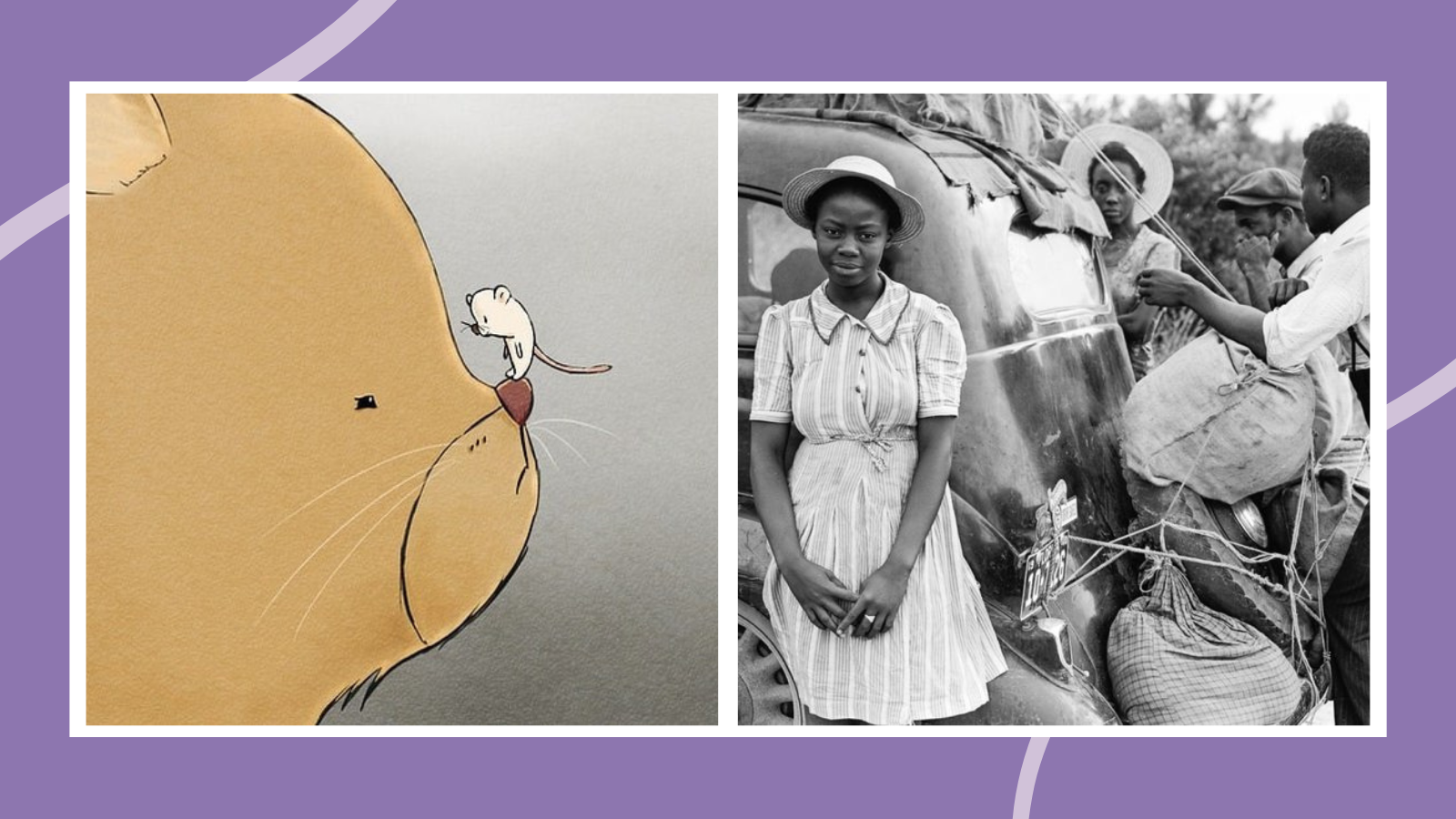
Creative writing is a challenge for many students, often because they can’t come up with anything to write about. That’s why we love picture writing prompts. Each one sparks the imagination and helps young writers jump right into crafting a story to match. We rounded up a whole collection of intriguing images for use with kids in grades K-12 along. Plus we designed a set of free Google Slides featuring all of the prompts so you can easily share them with students.
Tip: Start by showing students the picture (or let them choose from among several) without making any comment about what they’re seeing. For kids who still struggle to get started, suggest a potential title or opening sentence, like the examples included here.
Don’t miss our free downloadable. Grab your full set of ready-to-go Picture Writing Prompts Google Slides with all of the prompts below.
Elementary Picture Writing Prompts
Middle school picture writing prompts, high school picture writing prompts, art picture writing prompts.
When kids first see these picture writing prompts, they may or may not immediately feel inspired. If they need some help, ask them questions like “What led up to this moment?” or “What’s going to happen next?”

When Larry fell in love, he fell hard.
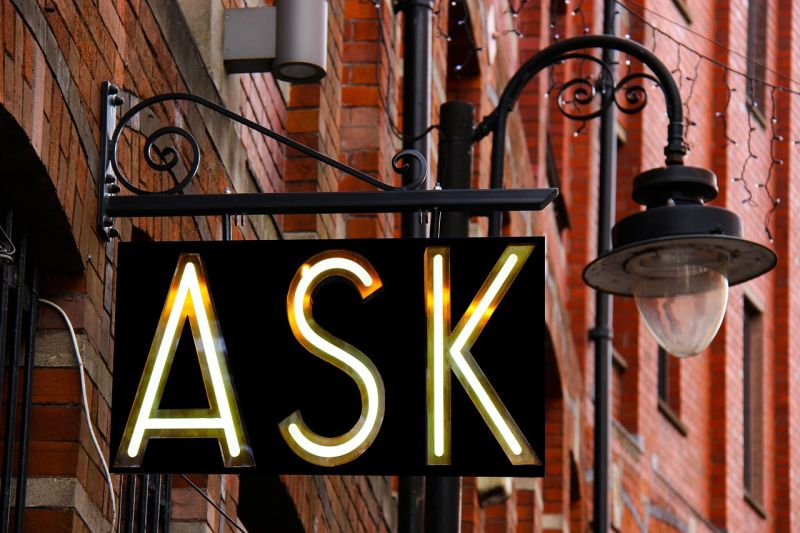
When the new sign appeared on Main Street, everyone in town wondered exactly what it meant.
Snowy Footprints

After that crazy day, all that was left to show for it was footprints in the snow.
Dinosaur Bones

“Come with me if you want to live!” Ash said, reaching out a hand.
Undersea Treasure

For years, no one saw the locked treasure chest but the local fish, who wondered what it could contain.
A Game of Fetch
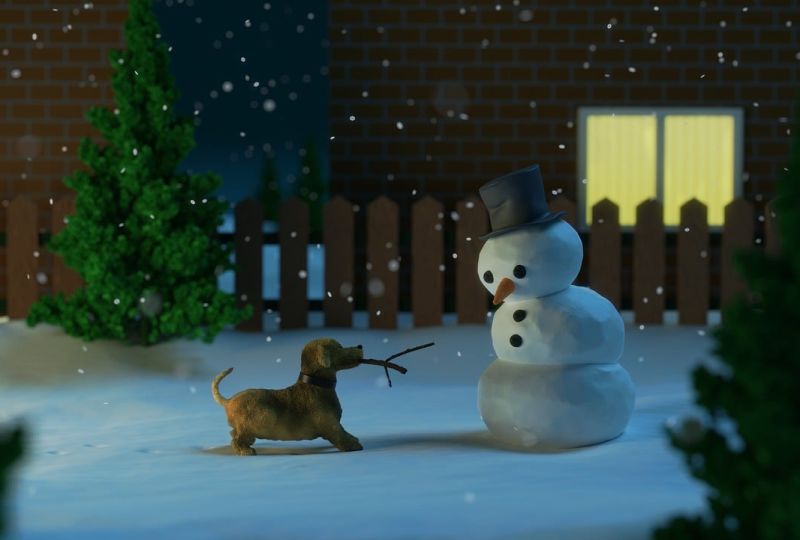
To Scout, it was a game, but to Mr. Freezy, it was much more.
Ladybug Gossip

The ladybug’s picnic was an excellent chance to meet up with old friends and hear all the latest gossip.
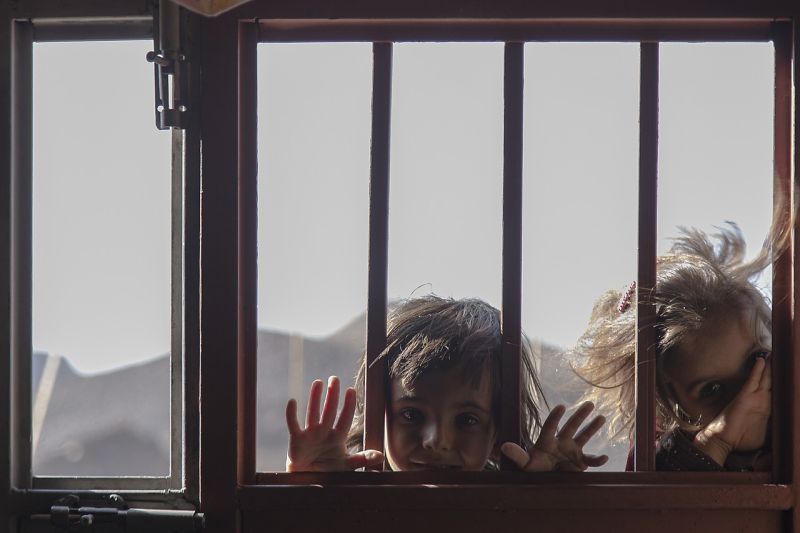
We met them when they peeked into our window, watching us as we ate lunch and watched cartoons.
King of the Jungle

It wasn’t the crown that made Amari the king of all he surveyed.
The Final Pitch

It all came down to this—the final pitch in a game that was tied 2-2.
Doggie Massage
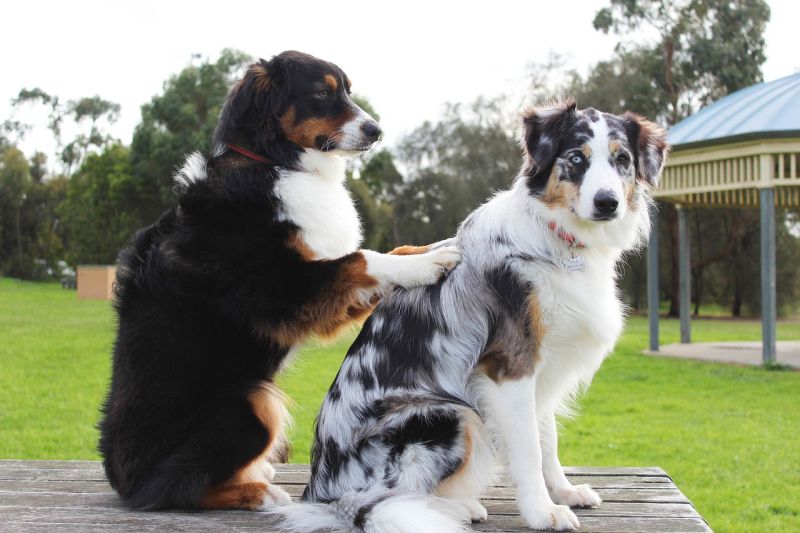
Every dog in the neighborhood knew that Rocky gave the best massages and was always willing to lend an ear too.
Skateboard Life
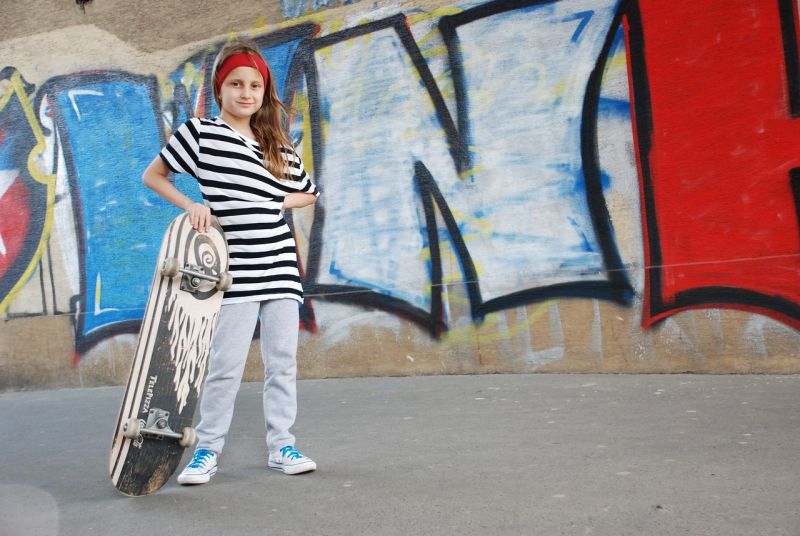
When Charli got her first skateboard, she made herself a promise.
Garden of the Past
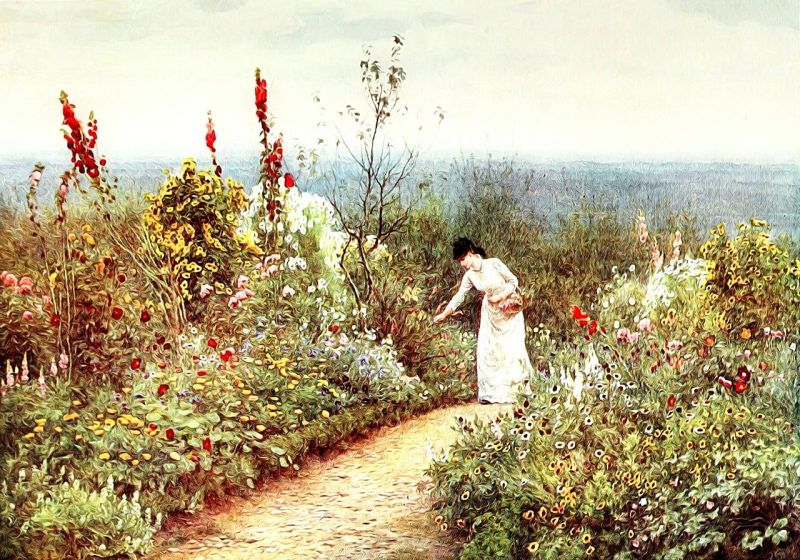
The woman walked in the garden every day, never saying a word.
Sunset Friends

They met on the jungle gym every day at sunset, sharing everything about their days.
Pink Umbrellas

When the pink umbrellas first appeared, Toni thought they might be magic.
Firefly Forest

Olivia was surprised to discover that the fireflies didn’t just glow, they also sang.
Robot Spider

When it first crawled ashore, the mechanical spider moved slowly.
Fallen House
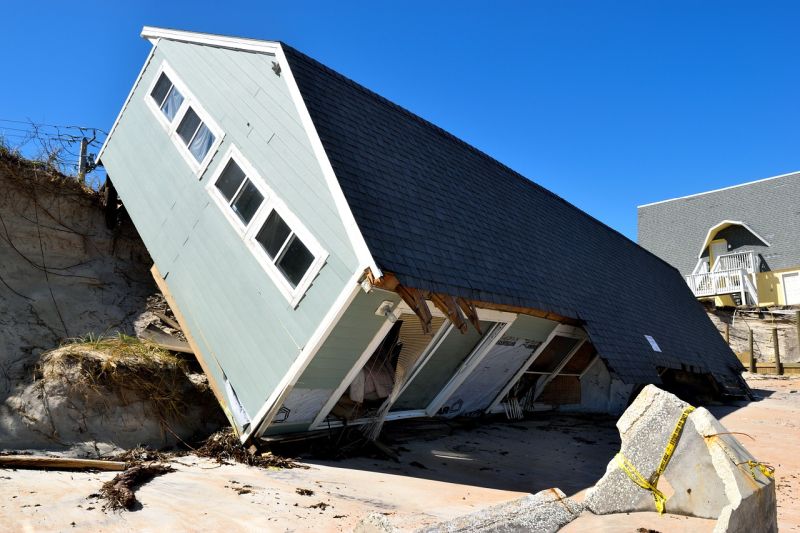
Staring at their house, which was now on its side, the whole family was in shock.
Red Riding Hood
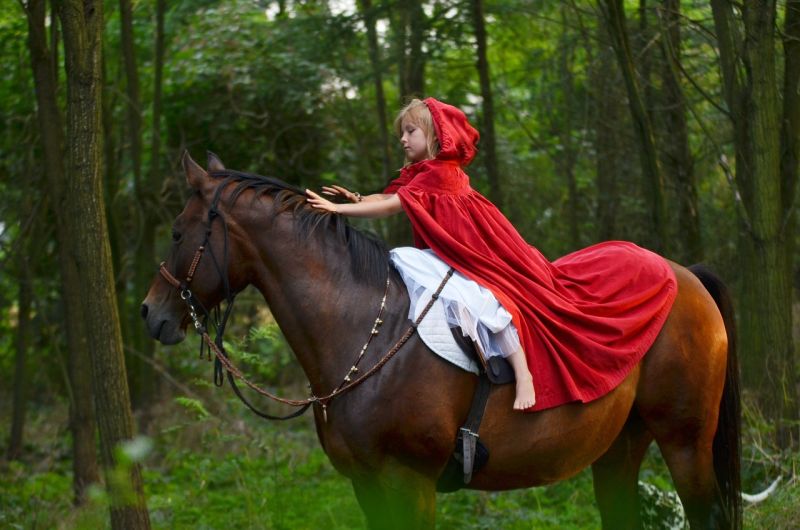
If only she’d been riding her faithful steed the day she’d met the Big Bad Wolf, things might have been very different.
Kangaroo Fall
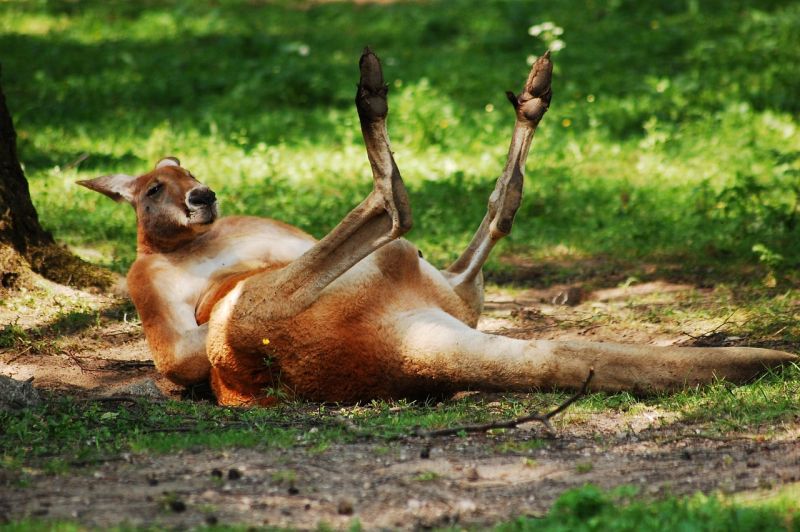
“Well, this is embarrassing,” thought Bouncer, as laughter filled the air around him.
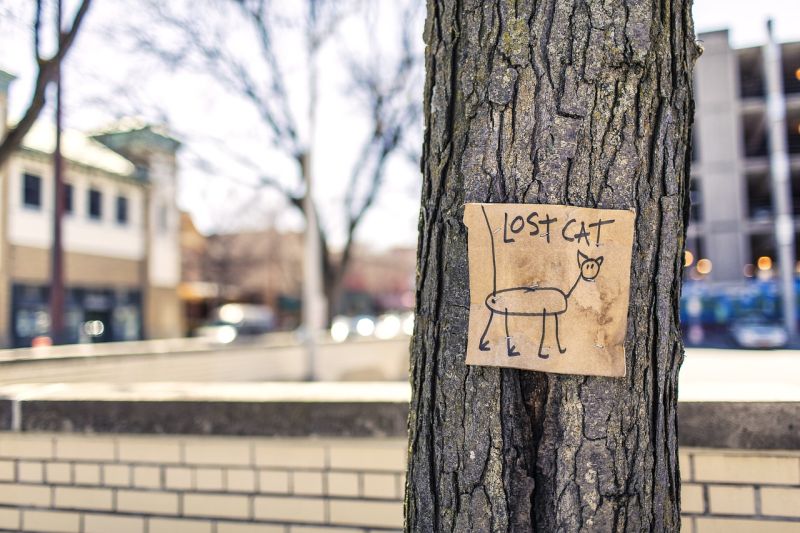
Daci’s big brother said her signs wouldn’t help them find their runaway cat, but he was wrong.
Penguin Bookshop
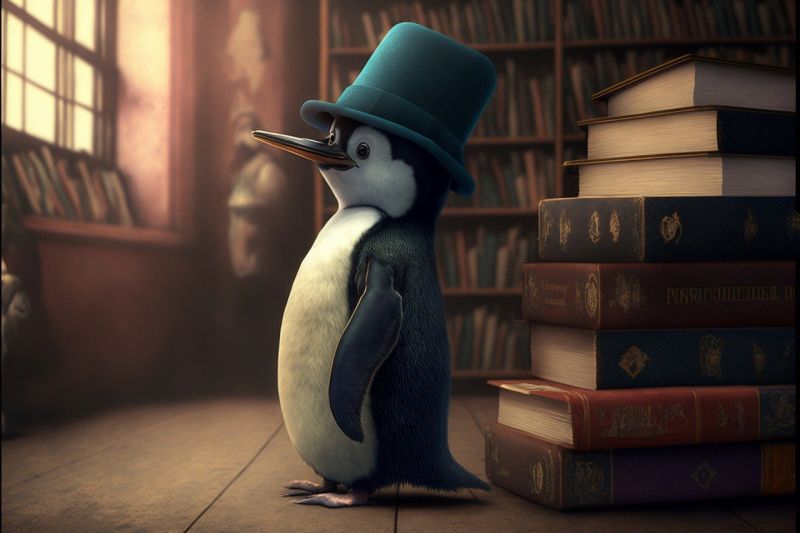
A visit to Mr. Pickerel’s Penguin Bookshop is always an adventure.

Of all the eggs in the carton, Ella was the one who could always crack you up.

That was the year Min was finally tall enough to ride the Sky Swings, but now she wasn’t so sure.
Rubber Duck Parade
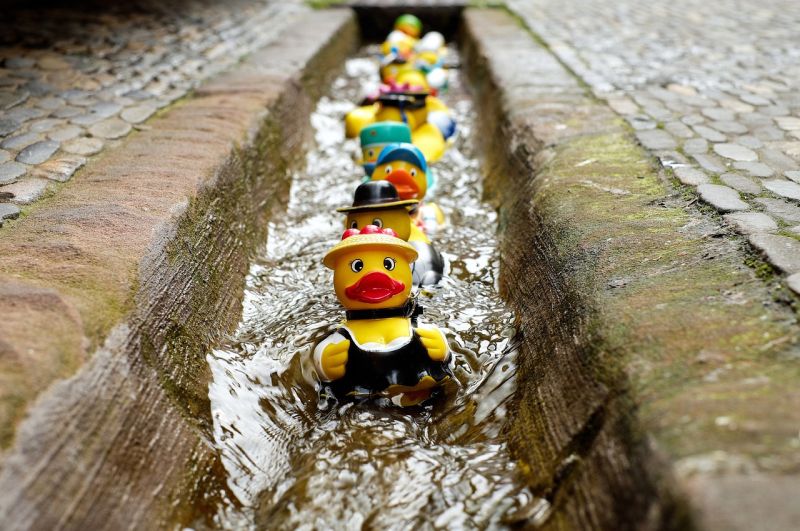
It was truly an honor to be asked to lead the Spring Duck Parade.
Teddy Story Time

Every afternoon, the three friends gathered for story time in their favorite spot in the woods.
Underwater School
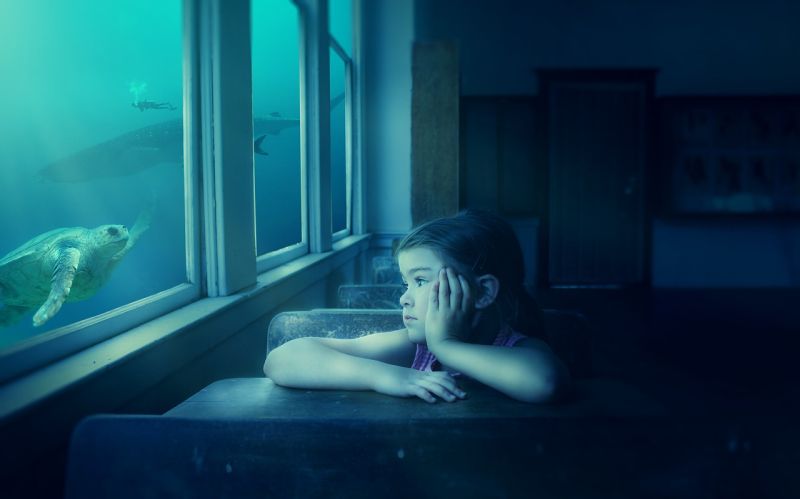
Nia thought going to school underwater would be exciting, but some days she really missed going outside for recess.

The day Amos started his journey down the river, the sun was shining brightly.
Turtle Trouble

“None shall pass,” growled the old sea turtle, blocking the way.
Dinosaur Race

Pia was supposed to keep Balthazar on a leash, but once they reached the forest, she set him free and they both began to run.
Finally Seeing Eye to Eye
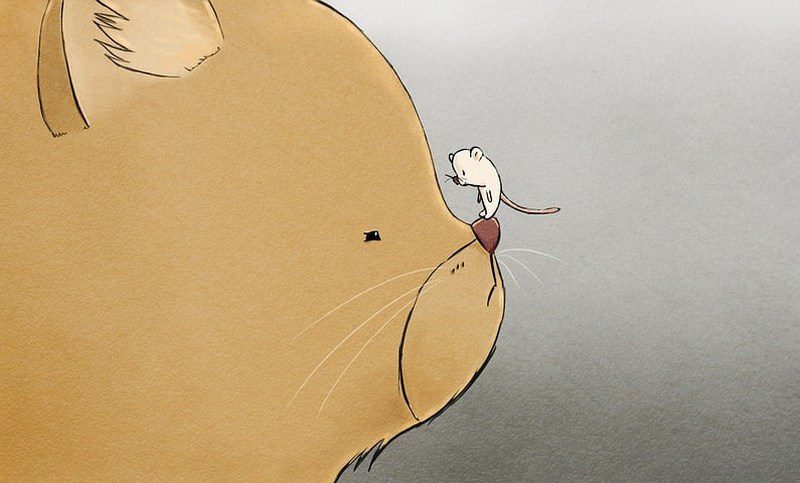
“So, we meet at last, face to face,” Lord Squeakerton said to his enemy, the Count of Catnip.

It takes a lot to surprise a monkey, but you don’t see something like this every day.
Not Coming Out

The day started out normally enough, but by the end, Chris knew he was in over his head.
Life on Other Planets

“Hurry up,” Grnklor told his robopup. “We have to get back inside before nightfall.”
Reindeer Games

The wind had died down, but the setting sun seemed to take all the warmth of the day with it.
Something to Celebrate

Their classmates could hear their shouts of joy from all the way down the hall.
Home Sweet Mushroom
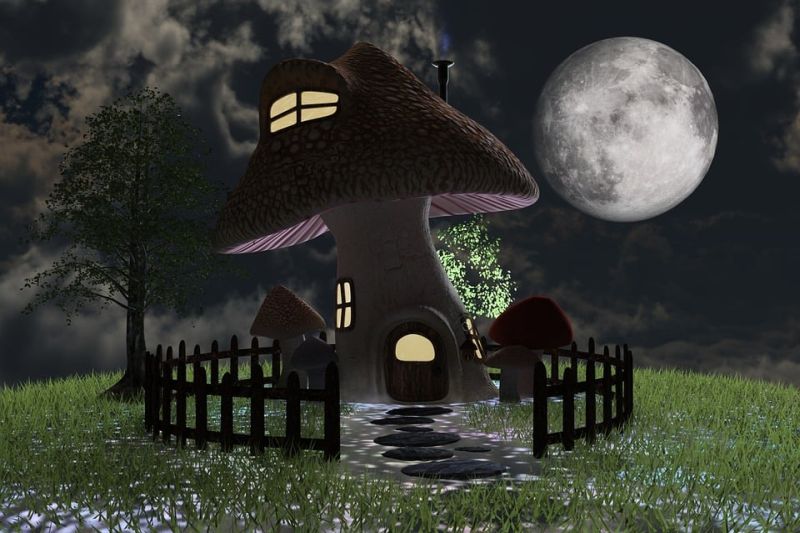
When the fairies that lived in the garden invited her to stay with them for awhile, Maria wasn’t sure what to expect.
Loch Ness Mystery

“There it is! I told you Nessie is real!” Angus whispered to Lee.
Lonely Bear

It was hard to say who was lonelier that night, Amil or his lost stuffed bear, Jasper.
Sometimes You Lose
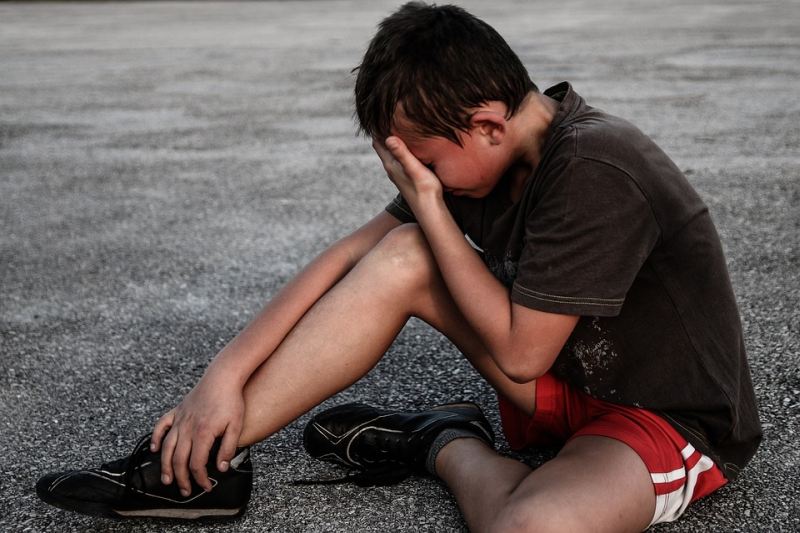
When his team lost the championship, Miguel was crushed, but it turned out to be the best thing that ever happened to him.
Middle school writing prompts can be a little more complex, with pictures that have a lot of potential interpretations. Encourage students to delve deeper into the story by describing how the characters feel and why they behave the way they do.

Morgan was incredibly proud of those shoes, paid for entirely with money from after-school jobs.
Never Lose Hope

With his last bit of energy, Kai scrawled his message in the wet paint.

The keyboard button could only be used once, and no one knew exactly what happened when you pressed it.
Piano Lessons
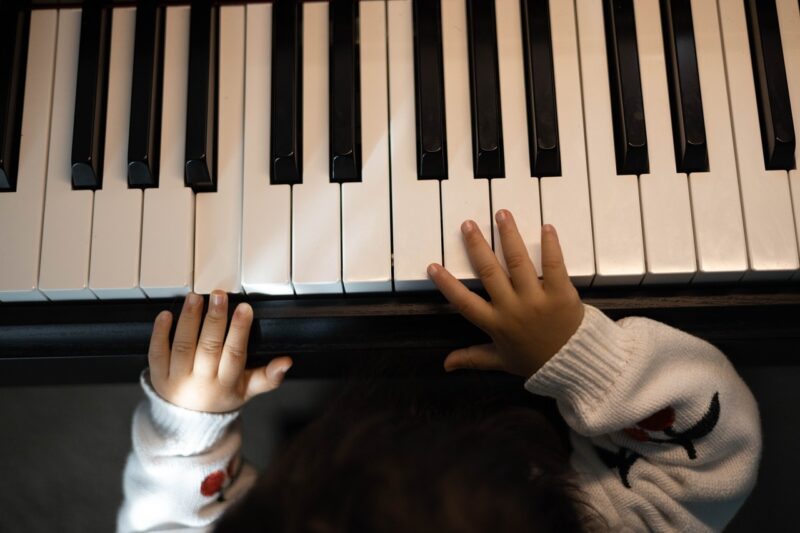
Before she could even speak, Arya was drawn to the black and white keys.

There was no doubt about it, this was was indeed a very special kind of garden.

No matter how you looked at it, it had been a very rough day to be the Easter Bunny.
Empty Chairs

By sunset, all four chairs were empty, and the only signs of life were the gulls swooping down from above.
Floating Treasure

To the birds, it was simply a convenient place to land, but Ali and I knew it was much more than that.
Shadow Question

That was the day they discovered that just because you were invisible didn’t mean your shadow was.
Letter and Key

The day she turned 12, Vivi’s aunt handed her an envelope containing the family secret.
Space Target

Onyx paused, knowing that once their arrow hit the target, there was no knowing what would happen.
Mermaid Mystery

It was a mermaid—or was it?
World on a String

Her dad had promised to give her the world, but she wasn’t expecting three more planets as well.
Bee Standoff

“This flower ain’t big enough for the both of us!” said Bianca.
Solitary Seat
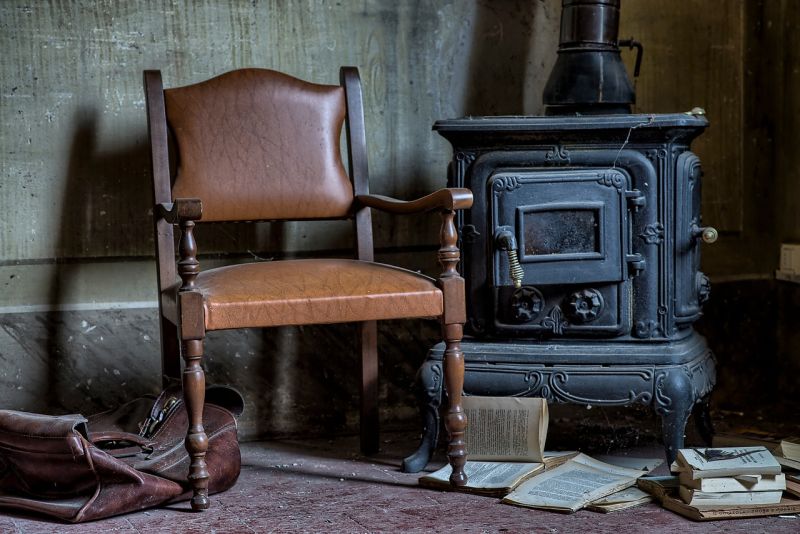
For as long as anyone could remember, Angus McGee spent his evenings in the same chair next to the woodstove.
Best Friends

When you decide to run away from home forever, you can’t possibly leave your best friend behind.
Dinosaur Demise

In retrospect, setting the time machine to randomly choose a day and time in the past might not have been such a good idea.
Magic Lamps

“Choose wisely,” said the old shopkeeper, “for only one of these lamps is truly magic.”
Message in a Bottle

The message floated at sea for more than 50 years before the day we found it on the beach.
Barrel Boat

Of all the ways to impress someone, Jonah thought to himself, this had to be one of the most ridiculous.
Dragon Guardian

When your parents give you your own dragon guardian, your childhood is bound to be enchanted.
Octopus’s Garden

Wouldn’t you like to be under the sea, in an octopus’s garden in the shade?
Around the Corner

After finally pressing “send,” she couldn’t resist peeking around the corner to watch him read the text.
Beam Me Up!

Milo’s earliest memory was of watching his beloved tricycle float into the sky above him, caught in a beam of light.
Poison Apple

To join the club, all Aaron had to do was creep up and snatch the apple from the skeleton’s hand without being seen.
Giraffe Council

“It is now 3 p.m., and I call this meeting of the Mighty Council of Giraffes to order,” announced Imari.
Mystery Creature
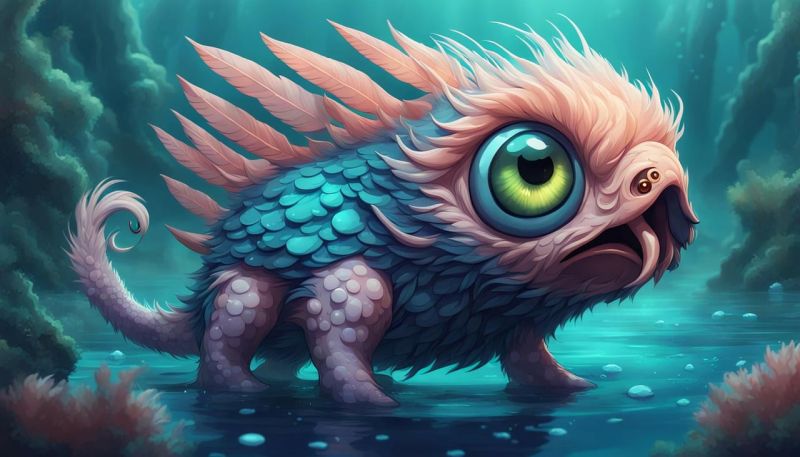
At first glance, it was hard to tell whether the little creature was friend or foe.

As the sky turned orange, Keisha ran faster than ever and used the last of her energy to push off and soar over the water below.
The End of Days

Despite their best efforts, they arrived too late—the battle had already begun.
Out of the Book
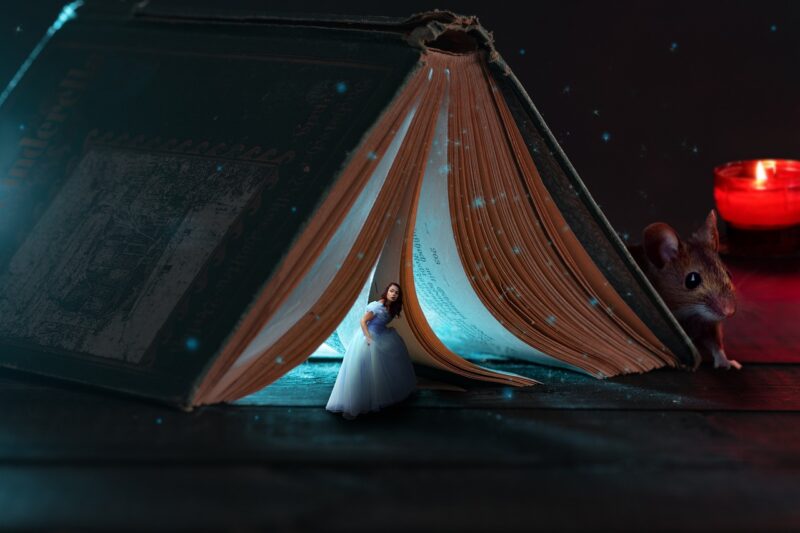
“Happily ever after” was about to take on a whole new meaning.
Stopped Clock

I was sure that the time on the broken clock was the clue to solving the mystery.
Dueling Webs

It’s never a good idea to build your web too close to another spider’s, but this time I had no choice.
Do Shoes Grow on Trees?

The day I threw my own shoes into the tree was the day I really started to grow up.
Abstract Art

“So,” asked their art teacher, “what do you think this painting means?”
Wandering Robots
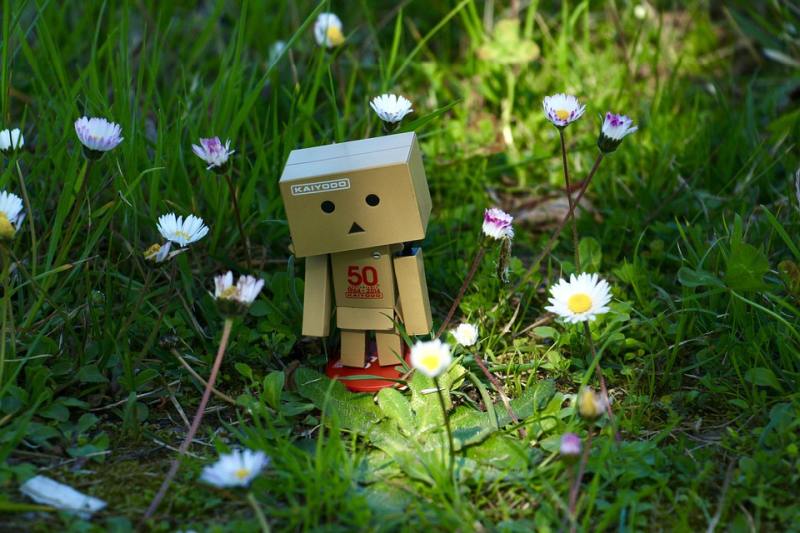
Everything about NB-317 was made of cardboard except his heart—that was made of flesh and blood and very capable of being broken.
Dream Come True

It all started when Quinn watched her favorite movie the night before they assigned partners for the eighth grade science fair project.
Mysterious Cave

The cave was unlike anything we’d ever seen before, and what was more, it almost seemed like the rock was alive.
Storm at Sea

As the rain lashed his face and lightning tore apart the sky, Kiran had to admit he’d always thought it would be a lot more fun being a pirate.
Grasshopper Close-Up
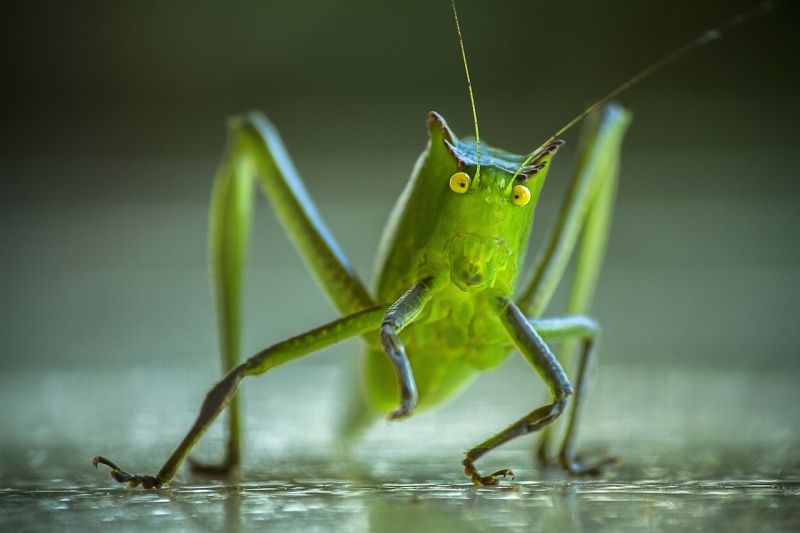
That’s when Javed realized it wasn’t that the grasshopper was too big—it was that he was suddenly very, very small.
UFO Parking

“Well, that’s convenient,” Javdok remarked to Qabow when they saw the sign.
High school writers are ready to dig deep, exploring character development and detailed plots. These pictures offer a jumping-off point to set their imaginations free.
Cyborg Girl

When she was 14, Tasha’s parents finally told her the truth about what she really was.
BBQ Cookout

“So, I’m guessing no one told you I’m a vegetarian?” asked Sadie with a smile.

The latest app was like a time machine, allowing people to look back in time, but it also had a dark side.

She was surrounded by people but never felt more alone.
Hippo Troubles

Like all parents, hippos sometimes really need a break from their kids.
iPad Farmer
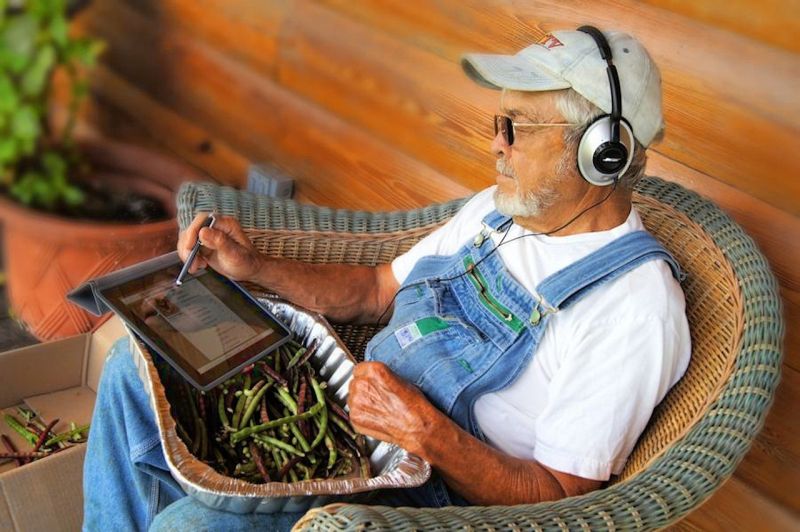
Grandpa Jack never failed to surprise us.
Marching Band Blues
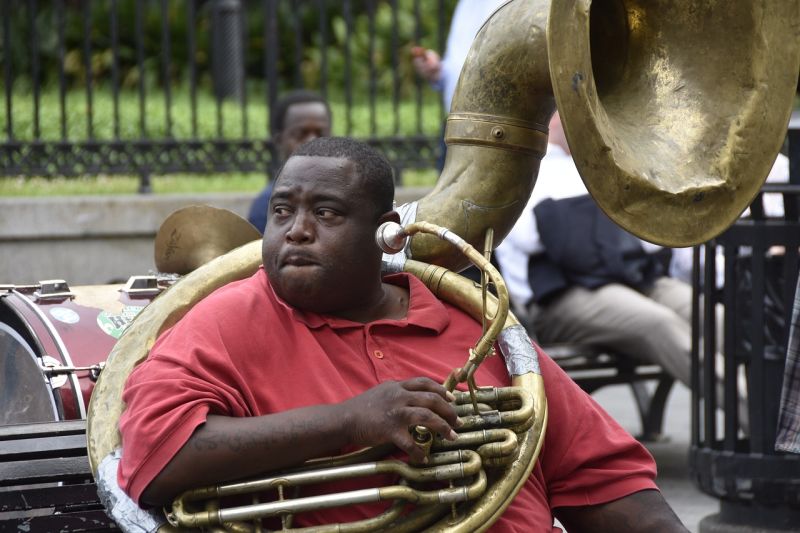
Kaleel sat sadly on the bench, watching the rest of the band march away in jaunty time to the music.
Never-Ending Tunnel

The tunnel seemed to stretch to infinity, but Jayma knew what was at the end, and it terrified her.
Carving Out Love

For years, we wondered who “WP” was, and who it was who loved them so much they carved it into a tree for all to see.
Glowing Globe

Just then, the globe began to glow, and Jaxson knew he was about to leap through space and time once again—destination unknown.
See No Evil

It seemed like a funny joke to pose the skeletons in front of old Mrs. Petoski’s house, but then she turned up dead, and the police said it was murder.
Upside Down

It’s an odd feeling to wake up one morning and find yourself able to walk on the ceiling.
Face at the Fence

So much depended on which side of the fence you were on.
Bicycle Race

Finley had trained too hard for this race to come in third—it just wasn’t good enough.
Family Travels
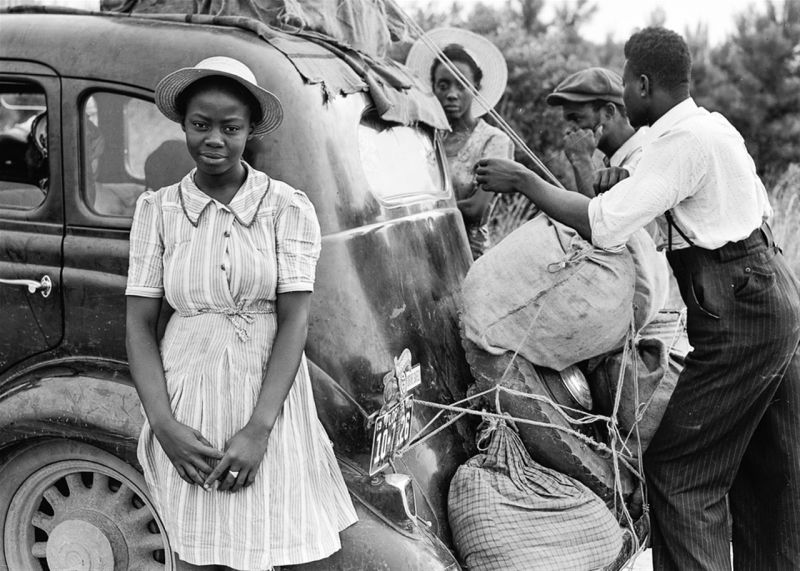
In the picture, my grandmother’s expression is hard to interpret, but she’s told me the story many times.
Laundromat Antics

Dani never expected to meet her first love feet first.

Molly’s mom probably didn’t mean for her to be the one to find the note, but that’s how things turned out.
Through the Storm
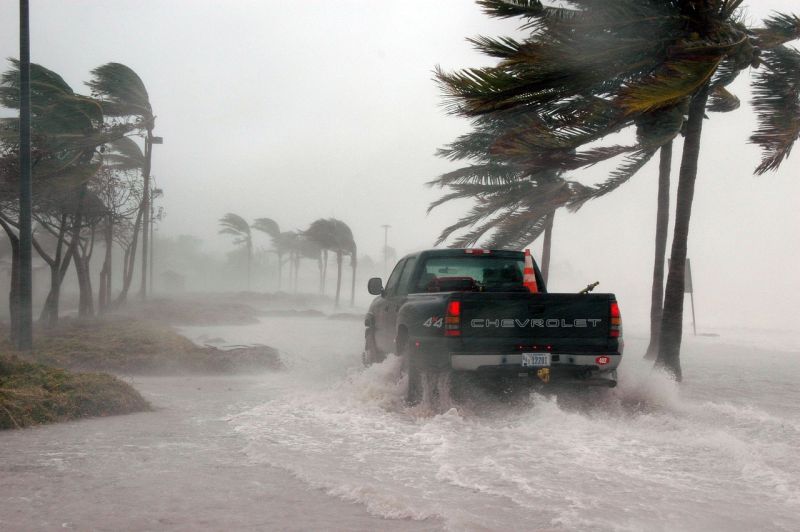
Javier knew it would have been smarter to stay put, but he had to make sure his mom was safe before the worst of the storm arrived.
Lifetime Friends

They’d been friends for as long as they could remember—even longer, in fact.
Stray Kitten

“I am NOT taking you home with me,” Kai told the tiny mewling kitten firmly.
Abandoned Greenhouse
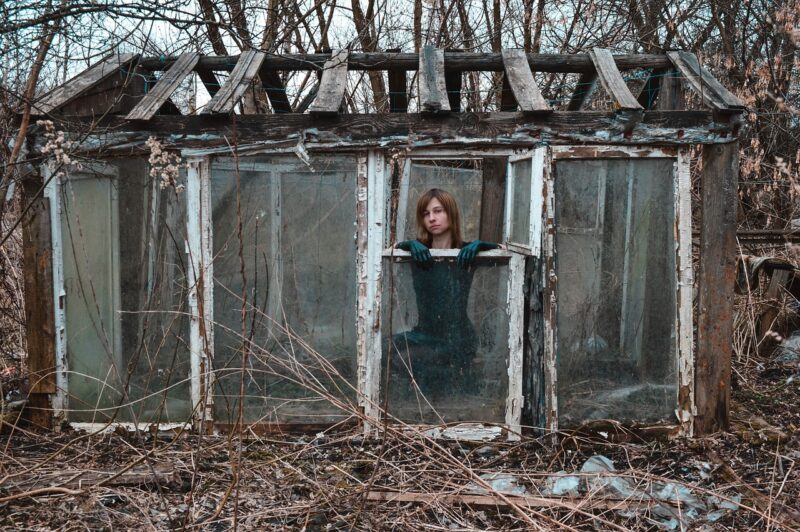
Willow was free to leave at any time, but she couldn’t make herself go.

Amani’s earliest memory was razor wire—miles and miles of it.
Church Graveyard

Everyone feels differently in a graveyard, but for me, they’re very peaceful places.
Orb of Death

“Do you really want to know?” Death asked. “Because once you know, you won’t be able to forget.”
Missed Shot

Steve was sure his shot would make it, but it bounced off the rim just as the buzzer rang to end the game.
First Contact

This was it—the moment that would change what it meant to be human forever.
One Life To Live

His face said his life had been a hard one, but his eyes told a different tale.
Winter Walk

Snow fell, creating a blank canvas to record the story of that fateful walk.
Train to Nowhere

It certainly wasn’t the most luxurious way to travel, but then again, no one really wanted to make this trip in the first place.
Modern Mary Poppins
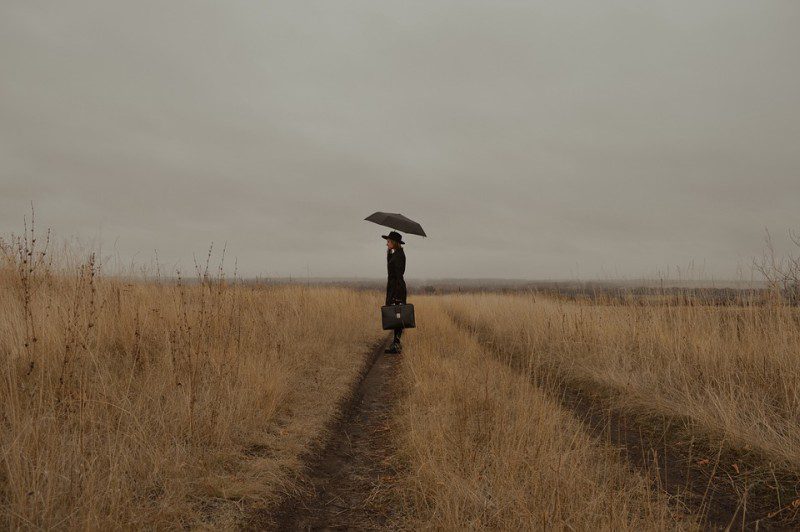
She dropped into our lives on a gray day in midwinter, a hint of the spring that was to come.
All That Remains
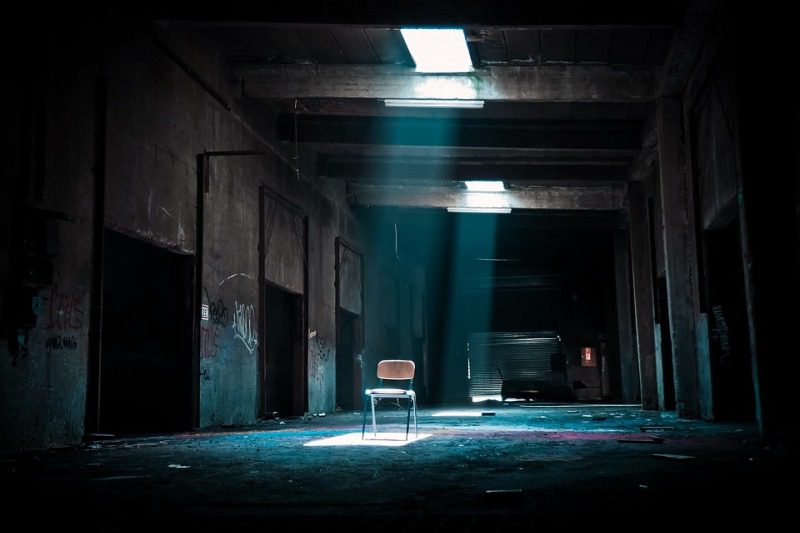
Dust motes filled the air of the abandoned hallway, replacing the voices once heard there.
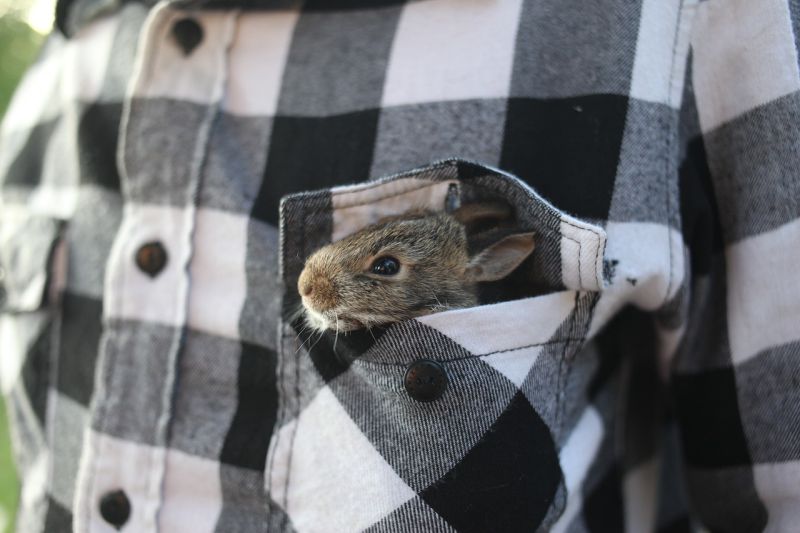
From the day he found the little creature, Luis refused to go anywhere without him.
The Question

Their happily ever after began quietly, with a bouquet of wildflowers.
Night Lights

Misty rain both blurred and emphasized the lights that lit Suri’s way home that evening.
Forest of Fear
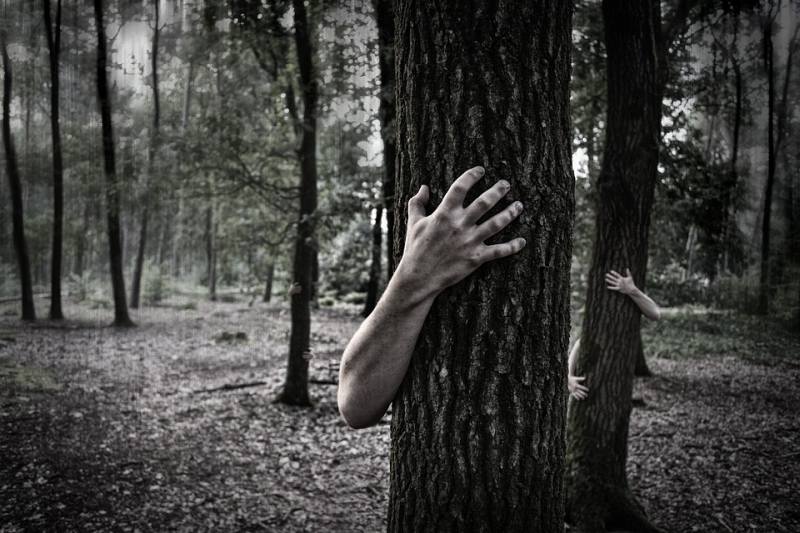
At first, Mateo thought it was a joke, but the screams that followed told him there was nothing remotely funny about it.

At the elite level, being a spy meant serious commitments.
The Yellow Door

On their 14th birthday, every resident of Fresnia was required to stand before the Wall of Doors and make a choice.
Graffiti Palace

To strangers, it seemed random, but every mark on those walls had deep meaning for us.
Fossil Fish
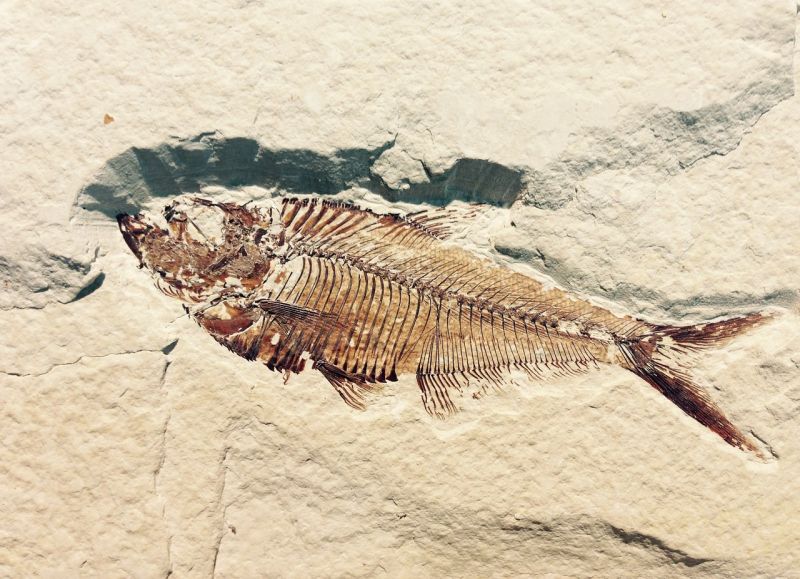
Millions of years ago, the fish gave one final flop before lying still in the deep mud.
On the Rails

Aliyah stood on the tracks, uncertain of where to go next.
These picture prompts are all works of art, some more well known than others. Try providing them to students without sharing the titles first, then offer up the titles if they need some help getting started.
The Dance Class (Edgar Degas)
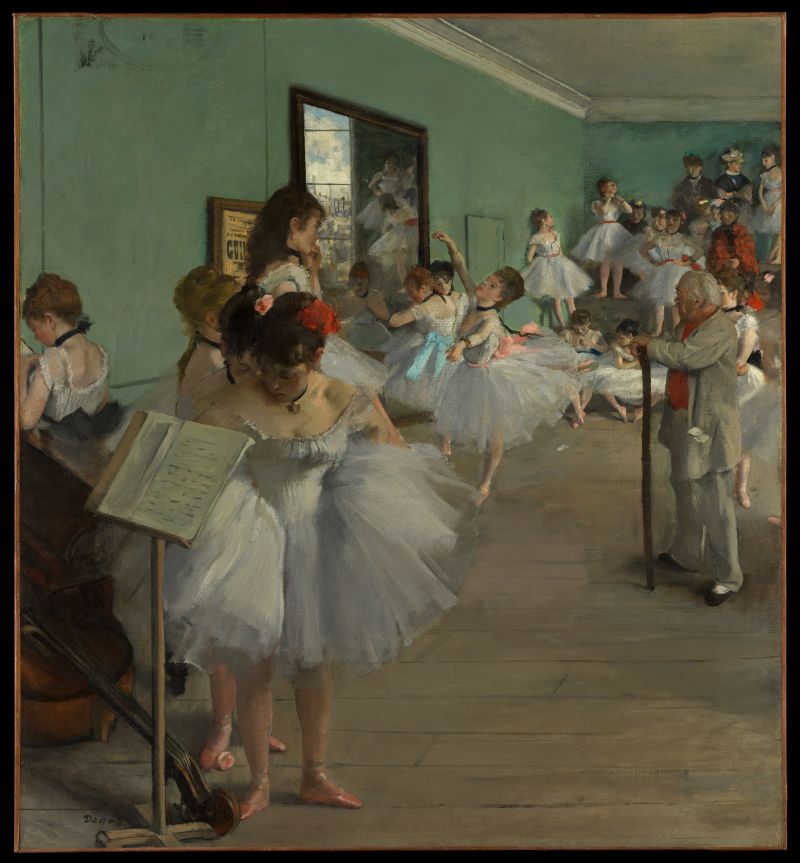
Greek Funerary Plaque (520-510 BCE)
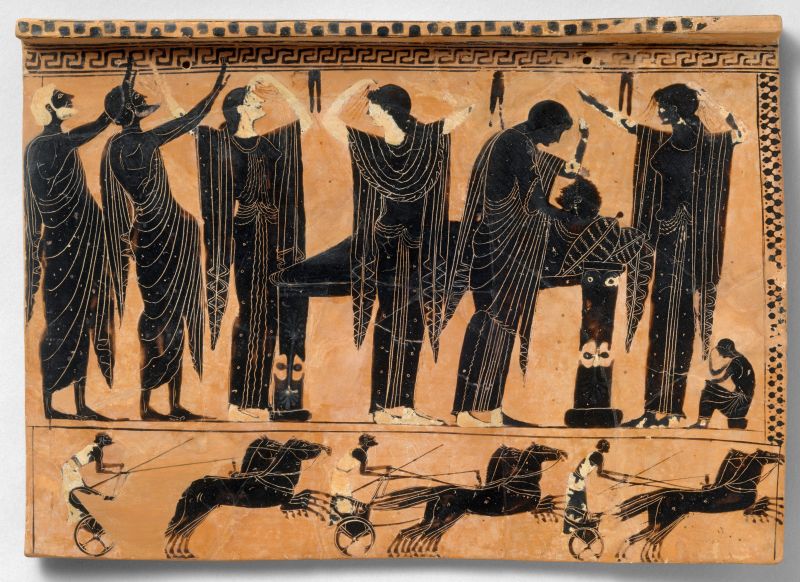
Washington Crossing the Delaware (Emanuel Leutze)

Kyōsai’s Pictures of One Hundred Demons
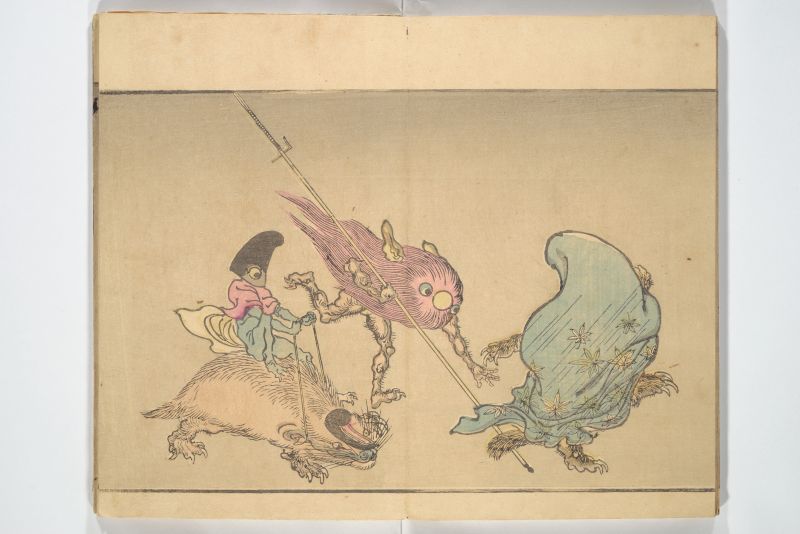
First Steps, After Millet (Vincent van Gogh)
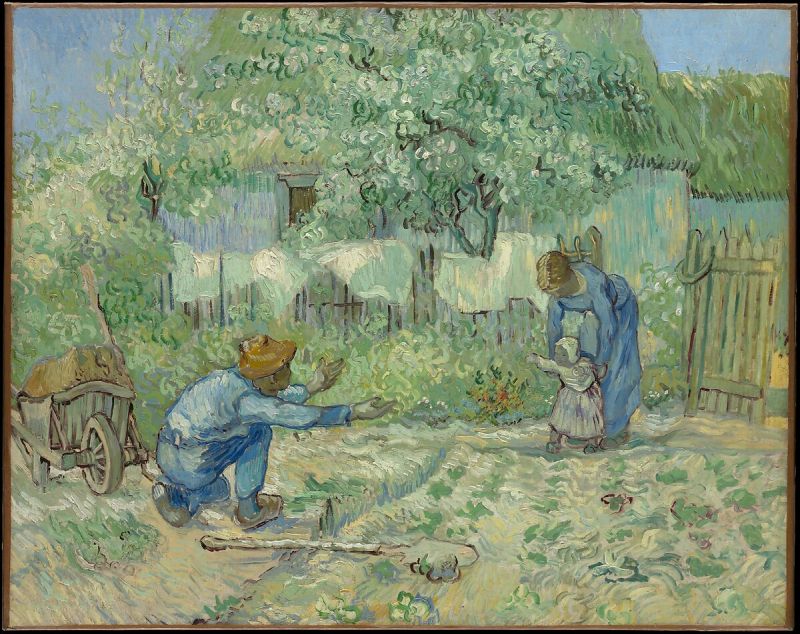
Lady Lilith (Dante Gabriel Rossetti)
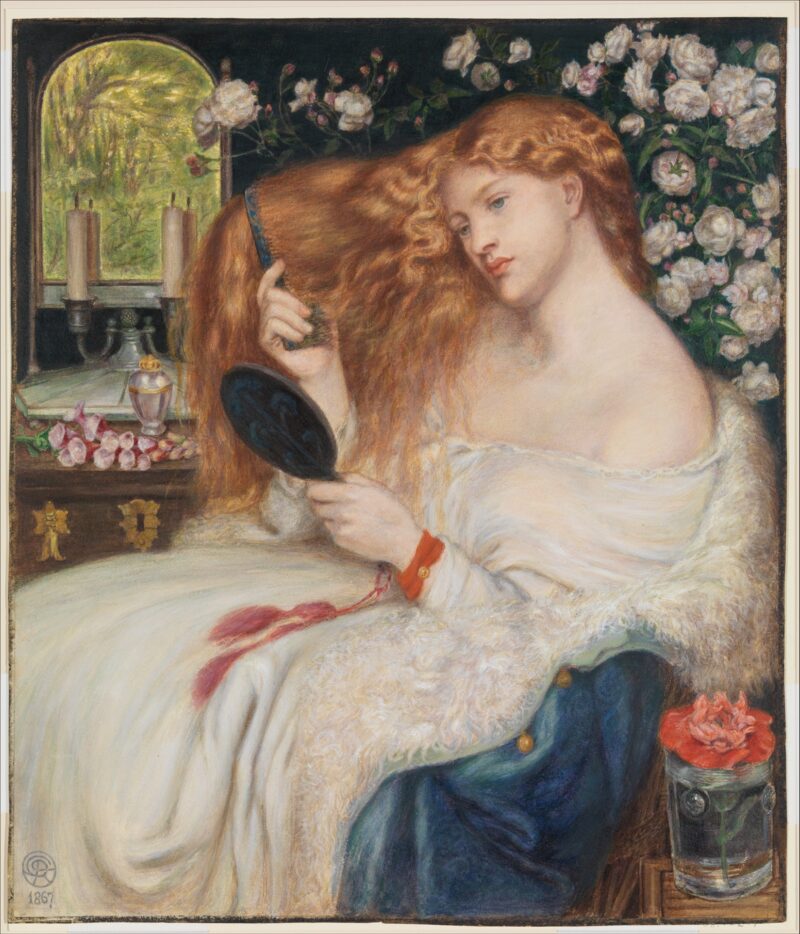
A Sunday on La Grande Jatte (Georges Seurat)
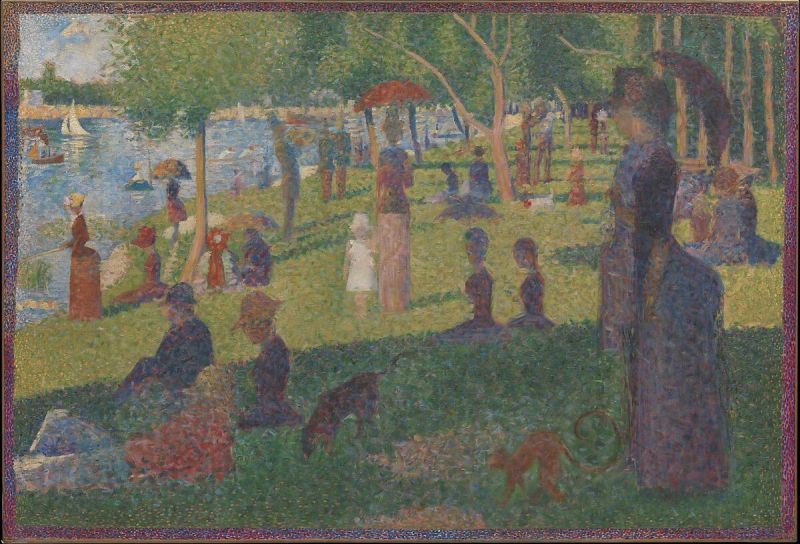
After the Hurricane, Bahamas (Winslow Homer)
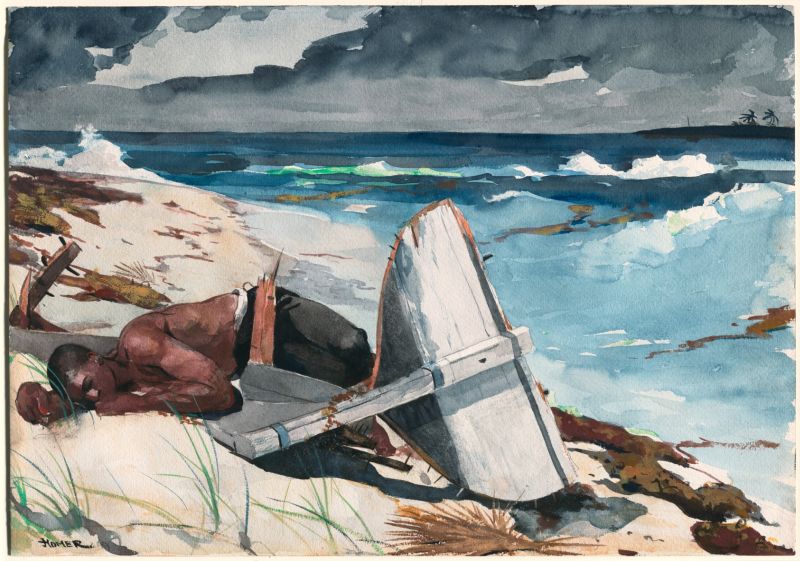
Drawing Lots for Prizes (Kitagawa Utamaro)

Portions of Field Armor (Jacob Halder)

Sadie Pfeifer, a Cotton Mill Spinner (Lewis Wickes Hine)

Still Life With Monkey, Fruits, and Flowers (Jean Baptiste Oudry)
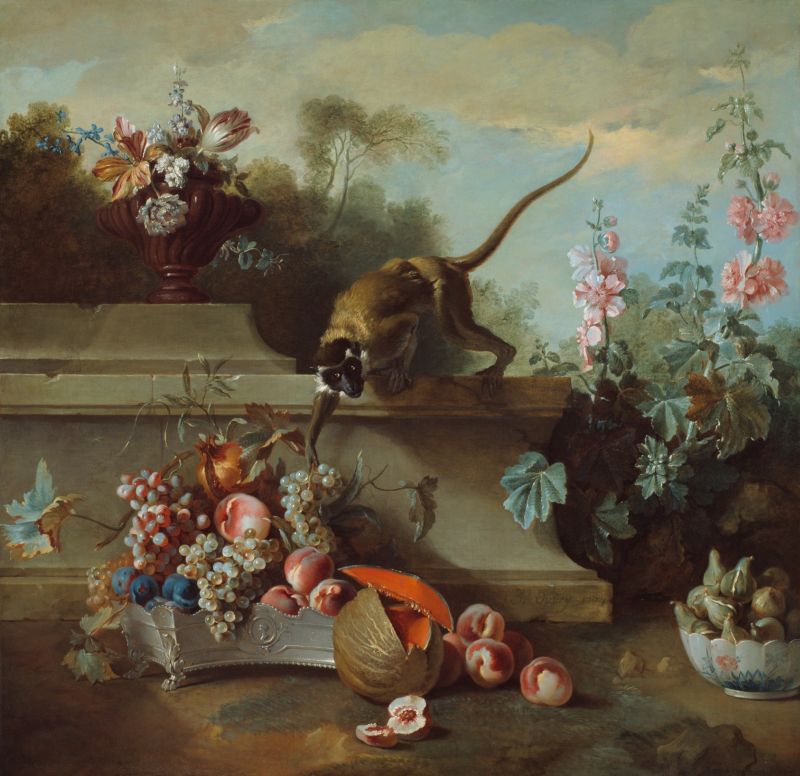
Man Leading a Giraffe, 5th Century Byzantine

The Three Skulls (Paul Cézanne)
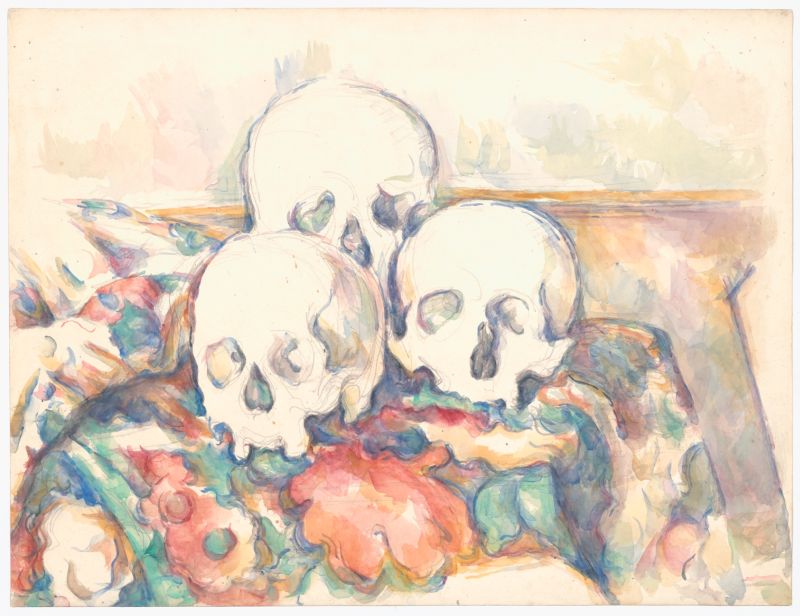
The Madame B Album (Marie-Blanche Hennelle Fournier)
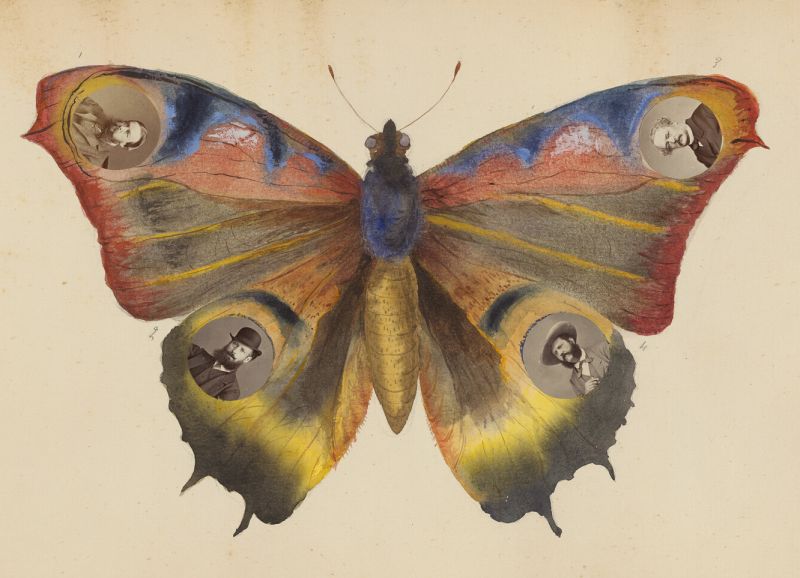
Coiled Trumpet in the Form of a Snarling Feline Face (c. 100 BCE to 500 CE)

Crazy Quilt With Animals (Florence Elizabeth Marvin)
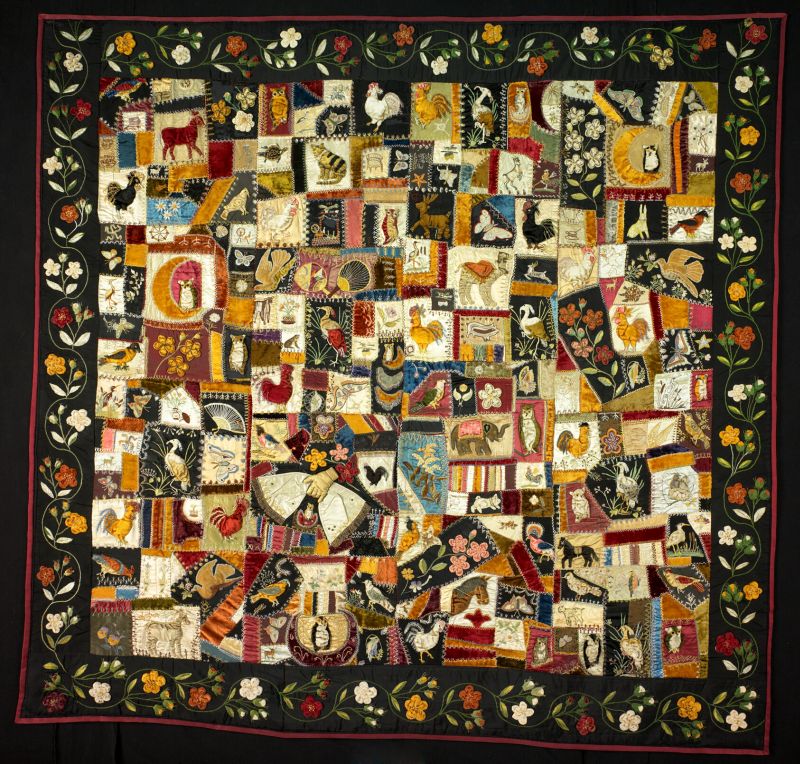
Storytime (Eugenio Zampighi)
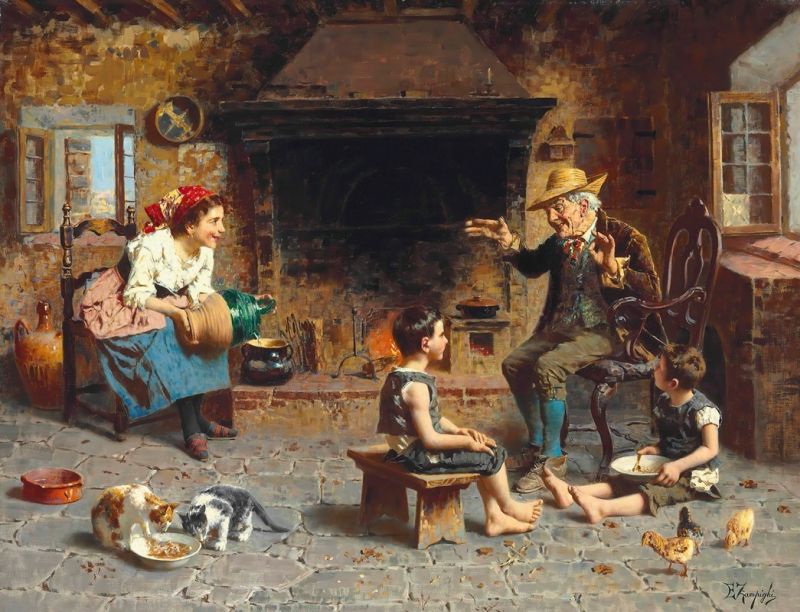
Cubist Village (Georges Gaudion)

Zig-Zag Passenger and Freight Train (Unknown)

The Power of Music (William Sidney Mount)
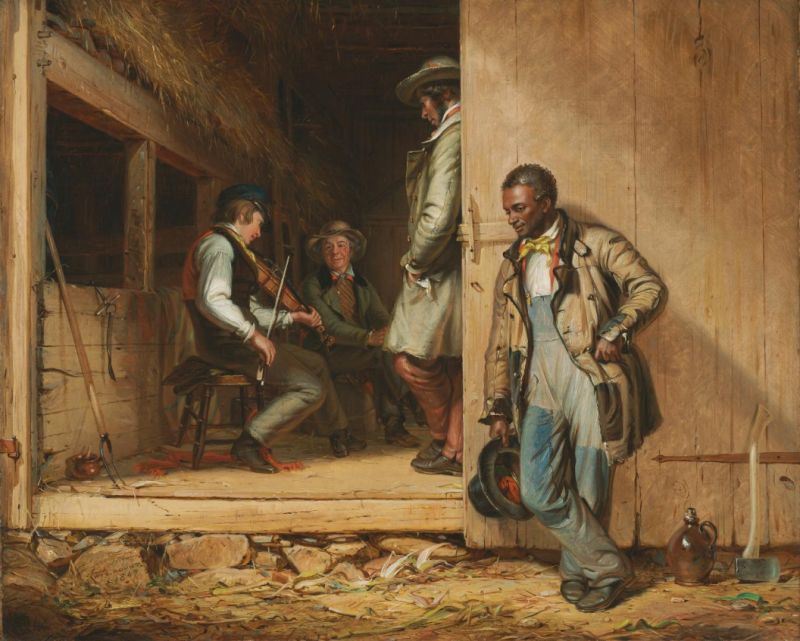
The Large Tree (Paul Gauguin)
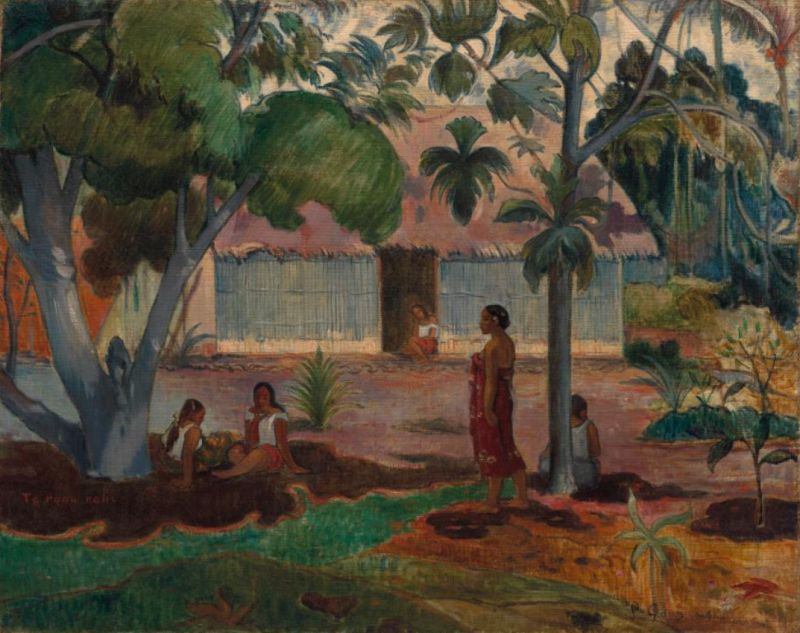
After the Bath (Mary Cassatt)
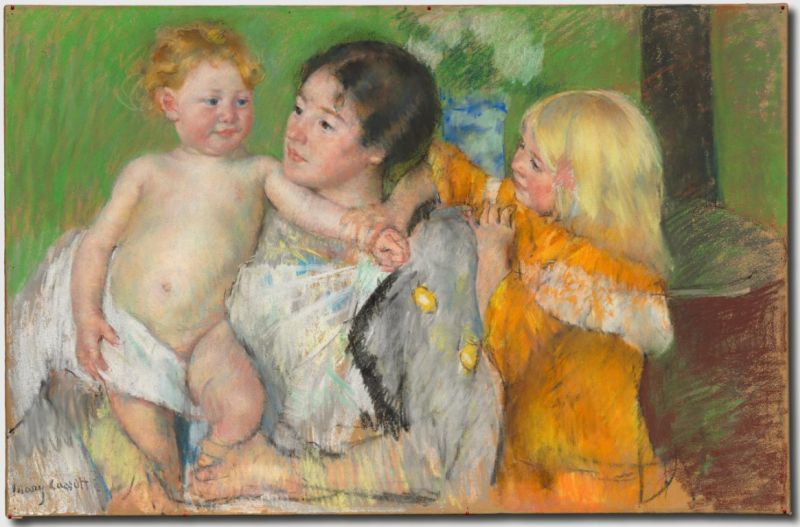
Wedding Gown (Korea, Late 1800s)

The Contemplator (Eugène Carrière)
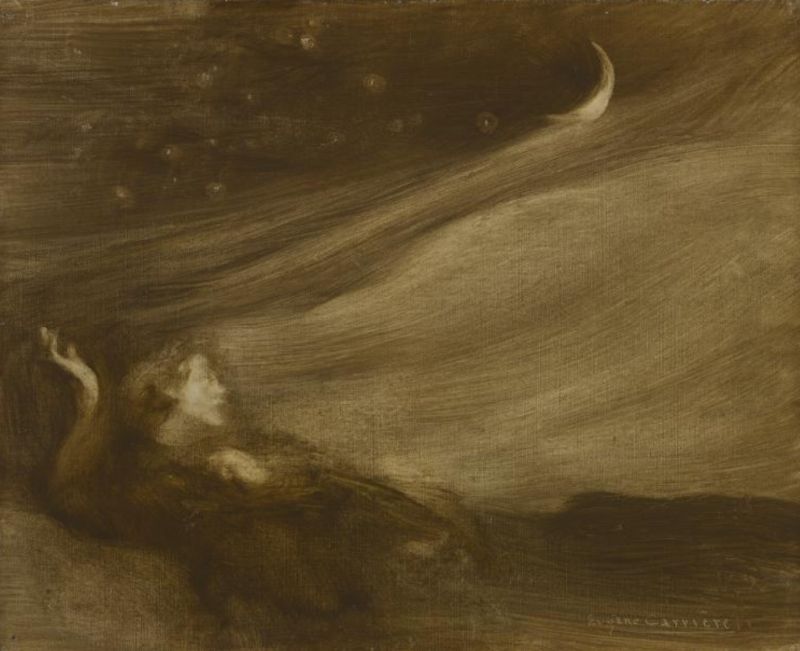
The Girl I Left Behind Me (Eastman Johnson)
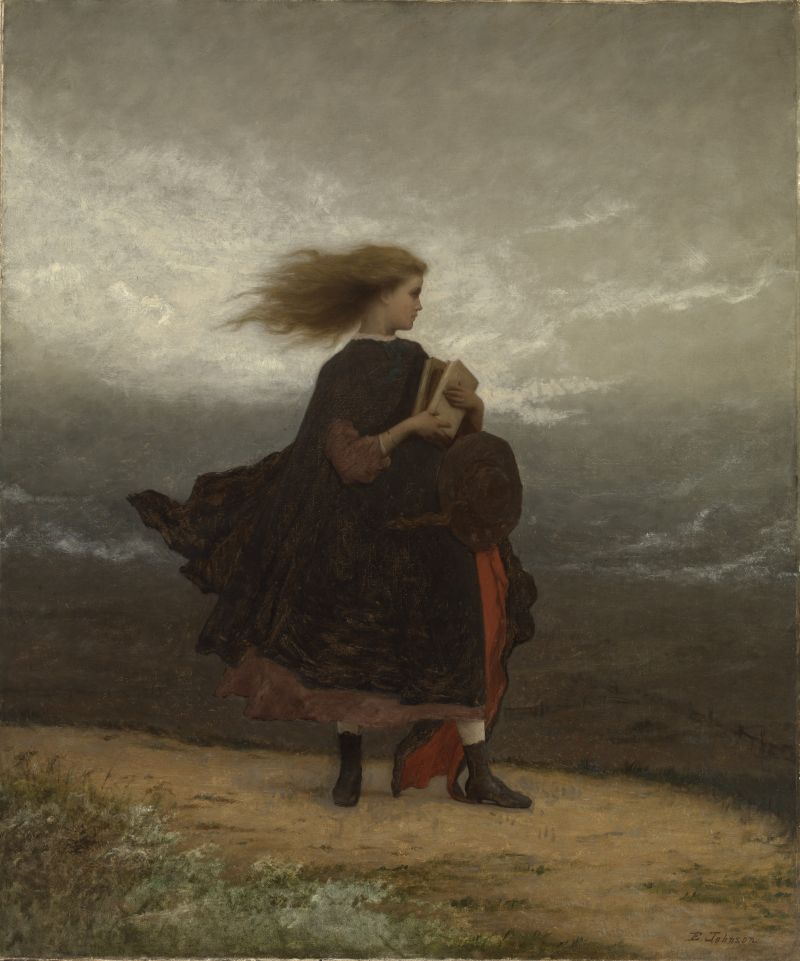
24c Curtiss Jenny Invert Single
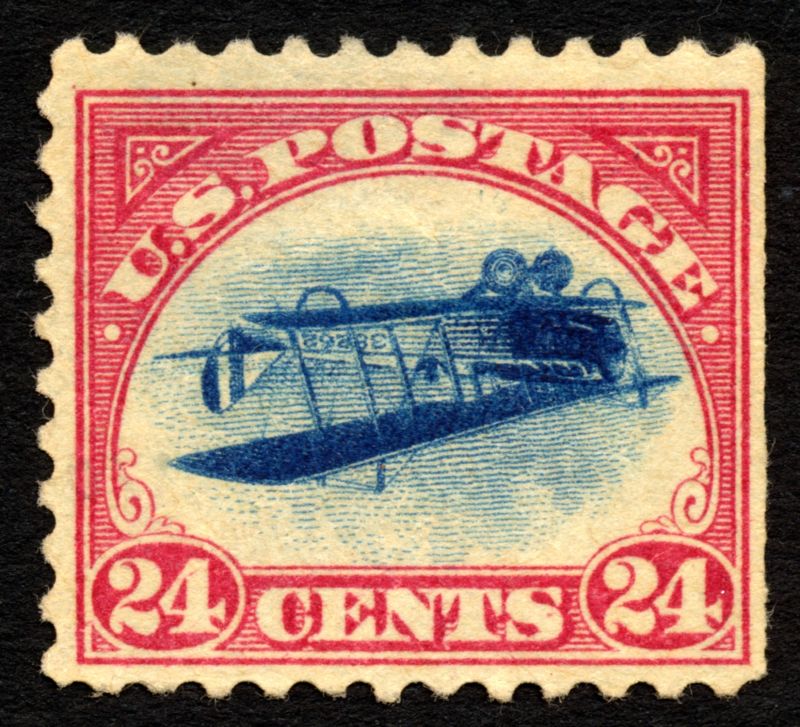
Creeping Baby Doll Patent Model
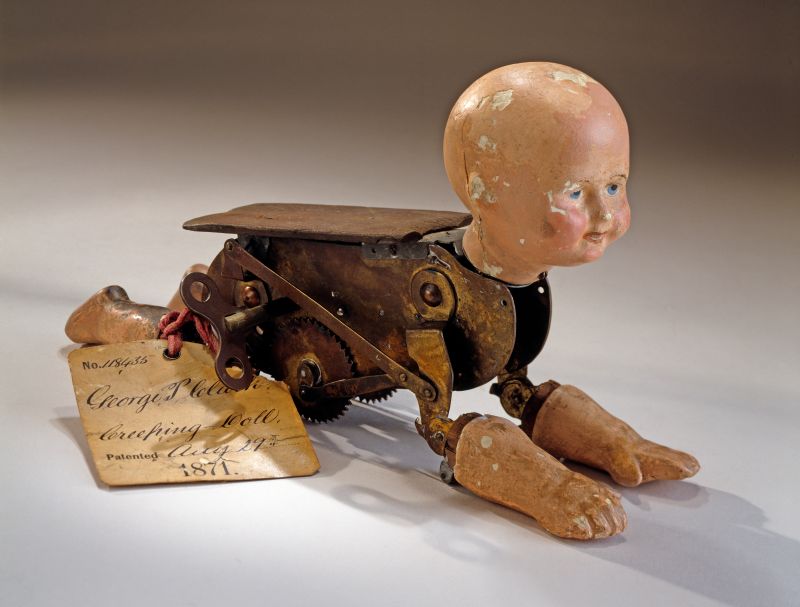
Wrecked Zeppelin (British Library)
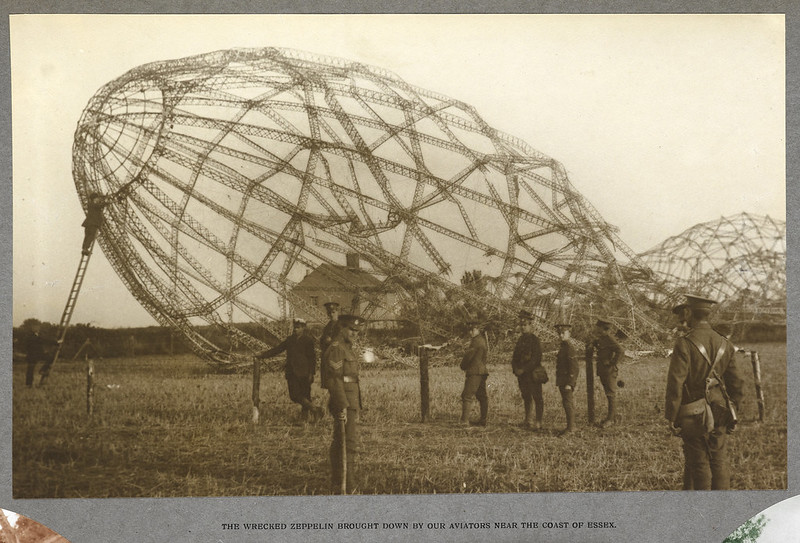
Skeleton (Tales of Terror Frontispiece)
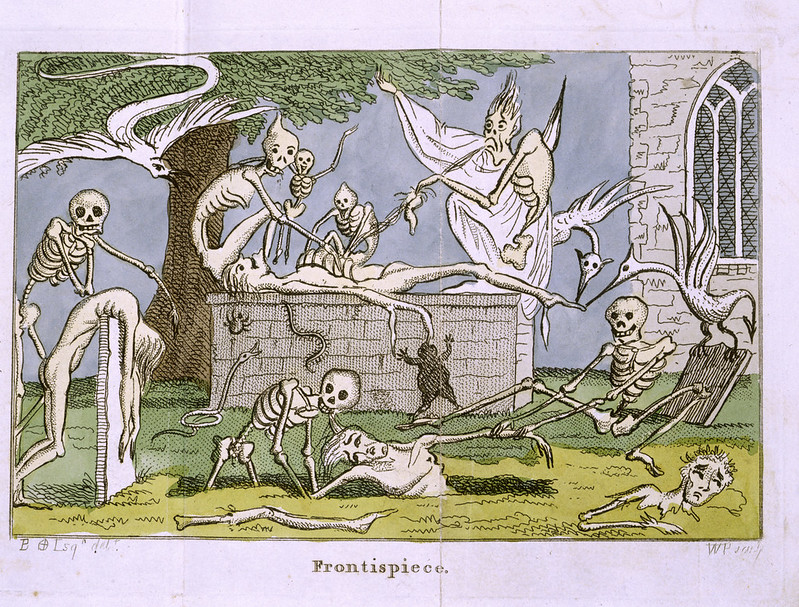
Get Your Free Picture Writing Prompts Google Slides
Just click the button below to fill out the form and get instant access to free downloadable Picture Writing Prompts Google Slides with all the prompts included above.
How do you use picture writing prompts in your classroom? Come share ideas and ask for advice in the We Are Teachers HELPLINE group on Facebook .
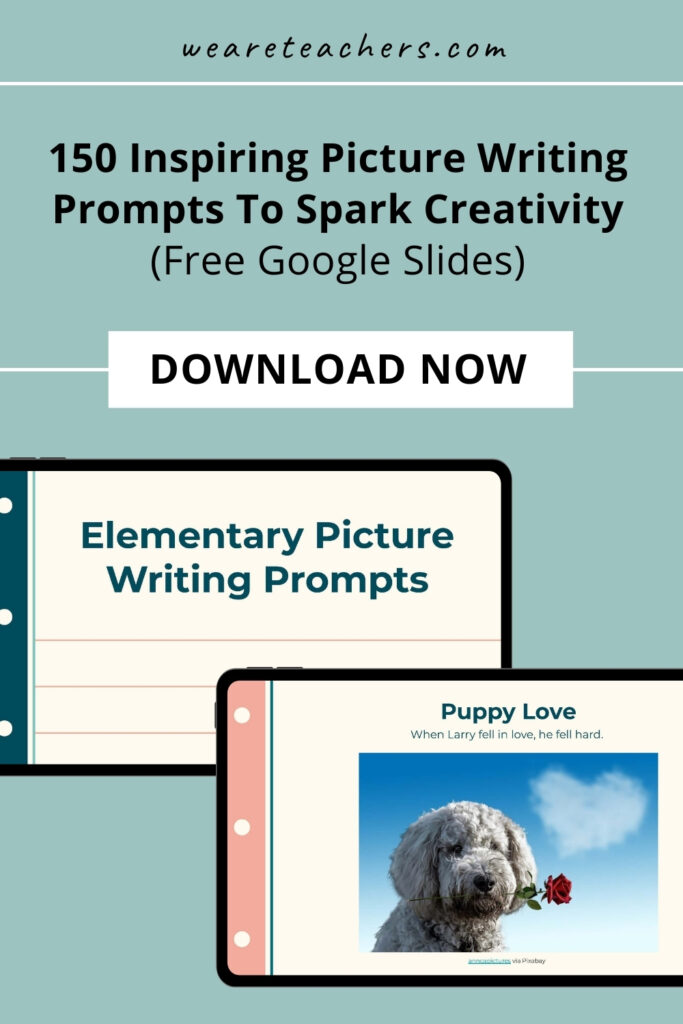
You Might Also Like
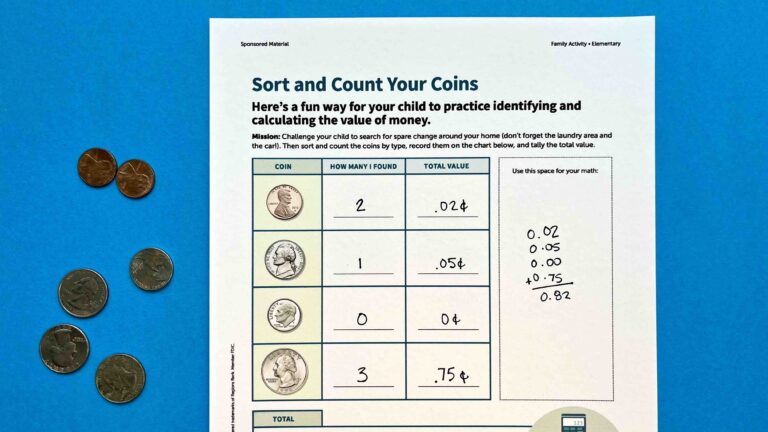
Sort and Count Coins in This Fun At-Home Activity
Do your students know their coins? Continue Reading
Copyright © 2023. All rights reserved. 5335 Gate Parkway, Jacksonville, FL 32256
- OC Test Preparation
- Selective School Test Preparation
- Maths Acceleration
- English Advanced
- Maths Standard
- Maths Advanced
- Maths Extension 1
- English Standard
- English Common Module
- Maths Standard 2
- Maths Extension 2
- Business Studies
- Legal Studies
- UCAT Exam Preparation
Select a year to see available courses
- Level 7 English
- Level 7 Maths
- Level 8 English
- Level 8 Maths
- Level 9 English
- Level 9 Maths
- Level 9 Science
- Level 10 English
- Level 10 Maths
- Level 10 Science
- VCE English Units 1/2
- VCE Biology Units 1/2
- VCE Chemistry Units 1/2
- VCE Physics Units 1/2
- VCE Maths Methods Units 1/2
- VCE English Units 3/4
- VCE Maths Methods Units 3/4
- VCE Biology Unit 3/4
- VCE Chemistry Unit 3/4
- VCE Physics Unit 3/4
- Castle Hill
- Strathfield
- Sydney City
- Inspirational Teachers
- Great Learning Environments
- Proven Results
- OC Test Guide
- Selective Schools Guide
- Reading List
- Year 6 English
- NSW Primary School Rankings
- Year 7 & 8 English
- Year 9 English
- Year 10 English
- Year 11 English Standard
Year 11 English Advanced
- Year 12 English Standard
Year 12 English Advanced
- HSC English Skills
- How To Write An Essay
- How to Analyse Poetry
- English Techniques Toolkit
- Year 7 Maths
- Year 8 Maths
- Year 9 Maths
- Year 10 Maths
- Year 11 Maths Advanced
- Year 11 Maths Extension 1
- Year 12 Maths Standard 2
- Year 12 Maths Advanced
- Year 12 Maths Extension 1
- Year 12 Maths Extension 2
- Year 11 Biology
- Year 11 Chemistry
- Year 11 Physics
- Year 12 Biology
- Year 12 Chemistry
- Year 12 Physics
- Physics Practical Skills
- Periodic Table
- NSW High Schools Guide
- NSW High School Rankings
- ATAR & Scaling Guide
- HSC Study Planning Kit
- Student Success Secrets
- 1300 008 008
- Book a Free Trial
Part 1. Year 11 Common Module: Reading To Write
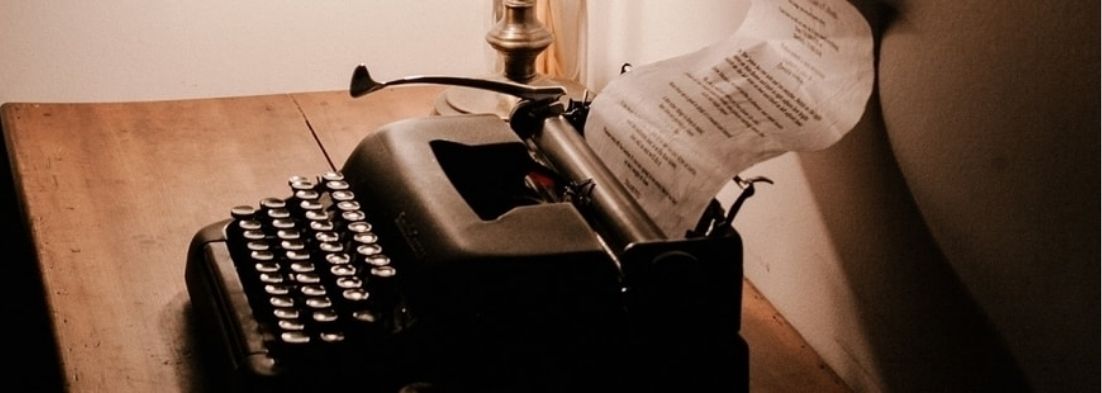
Guide Chapters
- 1. Common Module: Reading to Write
- 2. Module A: Narratives that Shape Our World
- 3. Module B: Critical Study of Literature
In this post, we will guide you through “Reading to Write” – the new Year 11 English Common Module.
The new Stage 6 syllabus begins in 2018. This means that the 2017 Year 10 cohort will be the first to study its new modules at school in 2018. The new Stage 6 syllabus has mandatory modules, meaning that all English Advanced and Standard students across the state will be studying the same module.
How can you prepare for the new Year 11 English Common Module? Some questions that you should be asking are:
- What does the study of Reading to Write entail?
- What does the common module require you to do?
- How should you analyse your texts and what should you focus on in your responses to excel in this unit?
Read on to find out how best to study for the new Year 11 English Common Module: Reading to Write.
Introducing the New Year 11 English Common Module: Reading to Write
What is a “common module”.
Modules are the units of study for each subject. Stage 6 English is broken down into 3 Modules for Year 11 and 4 for Year 12. These Modules prescribe the approach that you are meant to take in studying, analysing, and responding to your texts.
The “Common Module” is a unit taught across different levels of Year 11 English. In Year 11, all the students from English Standard and English Advanced take the same Module. The Reading to Write Module should ensure that all Year 11 English Standard and Advanced students intending to sit the HSC, are introduced to the ideas and concepts they will need to succeed in Year 12.
The Year 11 English Common Module: Reading to Write must be taught in Term 1 of Year 11.
The Reading to Write Module must be taught as the first Year 11 English Module by all schools. The content that it covers is the foundation to a study of Stage 6 English at all levels that will be assessed for an ATAR. Teaching this content first ensures that students are prepared to tackle the more difficult and complex content that follows in later Modules and in Year 12.
Reading to Write is aimed to develop students analytical skills and their ability to communicate in their own voice. We will now unpack some of the key statements from the Reading to Write Module outline. This document is known as the Module Rubric (a rubric is a set of rules for a task).
The complete rubric for the Common Module can be found here on the NESA website . All Year 11 English Standard and Advanced students should take the time to read through it.
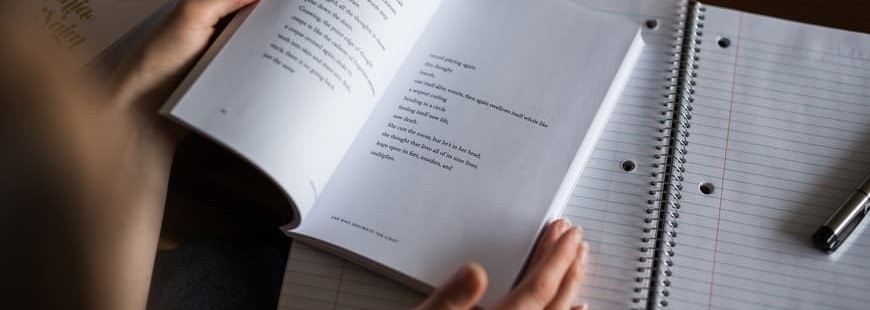
Understanding the Objectives of the New Year 11 English Common Module Reading to Write
What does reading to write mean.
As its name suggests, the Reading to Write English Module will develop your writing skills by guiding your reading of a variety of different texts. You will study several different texts, from different text types. This exposure to different forms and genres will help you develop an understanding of how composers try and convey meaning.
What’s the purpose of Common Module: Reading to Write?
Reading to Write aims to give Year 11 English students the skills to understand and analyse how texts from a variety of media convey information to audiences .
NESA has given the Common Module the sub-title ” Transition to Senior English”. As this suggests, this is a Module that develops students’ skills for tackling HSC English. Importantly, there is a strong focus on student literacy in this Module. This Module will, thus, get you writing and thinking about your writing in terms of your voice and purpose.
Why focus on literacy?
Previous Stage 6 cohorts have struggled with writing for English. This Year 11 English Common Module will equip you with some basic skills to be competitive in online workplaces and environments.
Many students find it is all too easy to finish writing a piece of work and put it in the done pile, never to be read again! This a poor approach to producing work for English, but far too common. Such work is often full of errors, poorly structured, or doesn’t address the set task. Written communication skills are becoming increasingly important in an online content-heavy world.
In contrast, successful English students proof their work and assess its quality. Successful students will appraise and rewrite flawed work. The Reading to Write Module teaches all Year 11 English Advanced and Standard students these important skills and processes. As a consequence, your study of this module will teach you to write well using proper grammar and syntax in your own strong voice.
Explaining the Expectations in the ‘Reading to Write’ Rubric
Common module rubric from nesa.
To nail the Common Module, you need to thoroughly understand what NESA wants you to demonstrate. They provide this information in the rubric.
In this module, students undertake the intensive and close reading of quality texts from a variety of modes and media. In doing so, they further develop the skills and knowledge necessary to appreciate, understand, analyse and evaluate how and why texts convey complex ideas, relationships, endeavours and scenarios. Central to this module is developing student capacity to respond perceptively to texts through their own considered and thoughtful writing and judicious reflection on their skills and knowledge as writers. Students read texts that are engaging thematically, aesthetically, stylistically and/or conceptually to inspire or provoke them to critique skilfully, or to respond imaginatively. Through the study of texts, students develop insights into the world around them, deepen their understanding of themselves and the lives of others, and enhance their enjoyment of reading.
The careful selection of critical and creative texts that address the needs and interests of students provides opportunities for them to increase the command of their own written expression, and empower them with the confidence, skills and agility to employ language precisely, appropriately and creatively for a variety of purposes.
Wide reading and reflection provides students with the opportunity to make deeper connections and identify distinctions between texts to enhance their understanding of how knowledge of language patterns, structures and features can be applied to unfamiliar texts. Through imaginative re-creation students deepen their engagement with texts and investigate the role of written language in different modes, and how elements, for example tone, voice and image, contribute to the way that meaning is made. By exploring texts that are connected by form, point of view, genre or theme, students examine how purpose, audience and context shape meaning and influence responses.
Through responding and composing for a range of purposes and audiences students further develop skills in comprehension, analysis, interpretation and evaluation. They investigate how various language forms and features, for example structure, tone, imagery and syntax are used for particular effect. They analyse and assess texts using appropriate terminology, register and modality. By reading and writing complex texts they broaden the repertoire of their vocabulary and extend control of spelling, punctuation and grammar to gain further understanding of how their own distinctive voice may be expressed for specific purposes.
Source: Common Module Rubric From NESA website
That’s not really clear, is it? Most students struggle to get to grips with what this document is really saying.
Unpacking the Common Module Rubric
To help you get your head around the rubric, we’ve broken it down into 7 statements.
Let’s have a close look at NESA’s key expectations from the Reading to Write Module rubric in clear English. This will help you understand the Module and apply it to your assessments.
Rubric Statement #1
“Students undertake the intensive and close reading of quality texts from a variety of modes and media”.
Analysis of Rubric Statement #1
The first step in analysing any text is reading it. A fundamental skill taught in this module is how to read a text effectively. When we talk of close reading, we mean that students analyse their texts closely for a variety themes and techniques.
Processes, such as reading and viewing a text several times, will enable yous to discuss your set texts in greater detail and from more reasoned positions. Ideally, you should read a text 3 times during your study:
- First, to get a feel for plot, characters, themes;
- Second, to begin analysing key scenes and moments in the text;
- And finally, analyse specific quotations/ scenes. This reading will help you understand how the composer is using techniques to create meaning.
- Now you can begin making detailed notes! You must take the time to discuss the effect of these techniques on YOUR understanding of the text.
You will study texts drawn from a wide variety of media including – poetry, novels, articles, and drama. And you will engage with complex texts and demonstrate understanding of how texts shape meaning.
An important aspect of the study of English is being able to understand and explain how mode, medium, and form contribute to meaning and shape audience reception. Different text types have different conventions. And these represent different kinds of meaning. For example, a bildungsroman novel – such as the Harry Potter Series – will show a character’s development over a period of time, while a sonnet – such as one of Elizabeth Barrett Browning’s Sonnets From the Portuguese – is traditionally a love poem. Our knowledge of these conventions informs our understanding of the texts that use them.
Form influences and shapes meaning by appealing to, or challenging, audience expectations.
Rubric Statement #2
“Students develop the skills and knowledge necessary to appreciate, understand, analyse and evaluate how and why texts convey complex ideas, relationships, endeavours and scenarios.”
Analysis of Rubric Statement #2
Texts convey human experience from one individual to another. They present vicarious representations of human experience. Reading and viewing texts allows us to engage with, and grasp, the experiences and ideas of others. Consequently, we often experience things we wouldn’t otherwise be able to by engaging with the representations we find in art, such as films, books, and poetry.
You will read texts to understand how composers represent the world around you. On the one hand, you need to learn how to appreciate and enjoy literature and art. But on the other hand, you also need to understand why composers represent their ideas and, importantly, why they choose the forms that they do. You need to ask yourself questions like:
- Why is the composer representing this idea?
- What does the composer seek to achieve by depicting this scenario?
- What does this representation of a relationship convey to me?
- Most importantly, how has the composer represented this idea?
- What techniques and structural choices have they used to do this?
Rubric Statement #3
“Central to this module is developing student capacity to respond perceptively to texts through their own considered and thoughtful writing and judicious reflection on their skills and knowledge as writers.”
Analysis of Rubric Statement #3
This module wants you to become a better writer. You will have to respond to texts, and then revise and edit your work. You will notice that there is a focus on reflection.
One of the core ideas NESA wants you to take away from this module is that self-reflection on your work is essential to good writing and communication.
To do well in this module you need to develop confidence in rereading and editing your own work. This means more than merely correcting misplaced commas. The editing process involves restructuring pieces of work, or even rewriting them, to ensure that you represent your ideas in a clear and accessible manner.
Another central part of this module is to develop your own voice, and your careful writing practice. Therefore, as you study the works of others, and reflect on your own practice, you will begin to develop your own voice in both critical and creative writing.
A Student’s Voice
A student’s voice is the tone and personality that is conveyed through written expression. You are a distinct person, different to your peers. It’s possible for your written expression – both creative and critical -to reflect this. Developing your voice means that elements of your personality are demonstrated in your writing, when it is appropriate.
What does this mean? This doesn’t mean that you should adopt colloquial language and “street talk” into your essays. It means developing your own style of writing.
For example:
- Do you like to demonstrate your vocabulary and knowledge of grammar? Do you enjoy reading complex language? You might try experimenting with more complex sentence structures and advanced word choices. But be careful, you must make sure that the words you use mean exactly what you think they do. And your sentences must be both grammatical and readable. Writers such as Virginia Woolf and China Miéville are beautiful essayists who wrote in remarkable prose.
- Do you find overly long sentences frustrating? Do you wish people would just get to the point? You can bring this attitude to your writing by utilising short and concise sentences. Just because you write in a utilitarian manner, doesn’t mean you are a bad writer. Ernest Hemmingway and Gertrude Stein both succeeded with such brusque and hard prose styles.
Developing your voice takes time and practice. It will not happen overnight. Reading the writing of other writers and trying to imitate their style will help you find your own. Processes, like reviewing your grammar and researching other words in thesauruses like Roget’s thesaurus , will add depth to your voice.
Rubric Statement #4
“Through the study of texts, students develop insights into the world around them, deepen their understanding of themselves and the lives of others and enhance their enjoyment of reading.”
Analysis of Rubric Statement #4
Humanity has a history of artistic representations; as a species, we love to write about ourselves, our experiences, and the communities we are part of. Similarly, reading about the experiences of other humans is something central to our identity. We love to celebrate the successes and failures of others, and see something of ourselves in these. We try to learn from and reflect on the mistakes and successes of others.
In this module, you will read texts to understand how they reflect the world around you. NESA expects that studying this module will expose you to complex ideas. As a consequence, these texts will demonstrate to you how composers present universal ideas and concerns.
Encountering these representations will allow you to reflect upon your own experience. NESA wants you to ask of yourself:
- Does this text represent themes common to human experience?
- Does this text represent my experience?
- What is my response to the representation of this human experience?
You want to reflect on these questions as you read, and use them as the basis of your notes on the texts. Most of all, these are the insights that your teachers and markers want to know about!
NESA hopes that this unit will foster your enjoyment of a wide range of literary texts and forms. Reading and viewing texts should be a pleasure and not a chore.
Rubric Statement #5
“Through imaginative re-creation students deepen their engagement with texts and investigate the role of written language in different modes and how elements, for example tone, voice, and image, contribute to the way that meaning is made.”
Analysis of Rubric Statement #5
What is “Imaginative re-creation”? An imaginative recreation is an adaptation of a text or a discussion of a text through different forms. In practice, this could take several different forms. For example, tasks set may include:
- Writing a piece of fiction inspired by your text.
- Writing a piece of fan-fiction.
- Producing a podcast discussing your text.
- Writing a review of your text.
These kinds of tasks will allow you to engage with your text in a deeper way.
Students often struggle with developing new ideas for their writing. Similarly, you may find it difficult to explore the ideas present in a text.
By producing an imaginative recreation, you are forcing yourself to engage with the core ideas in a text. Thus, this act will also help come to grips with how the structural features of a text are integral; to its meaning.
Rubric Statements 6 & 7
6: “Through responding and composing for a range of purposes and audiences students further develop skills in comprehension, analysis, interpretation and evaluation”
7: “By reading and writing complex texts they broaden the repertoire of their vocabulary and extend control of spelling, punctuation and grammar to gain further understanding of how their own distinctive voice may be expressed for specific purposes.”
Analysis of Rubric Statements #6 & #7
To produce better writing, you need to write and reflect on your writing and the writing of others. And to do well in English, you need to develop strong skills in the comprehension and analysis of texts. This is not just to understand the content, but to understand how writers present content.
Hence, you should analyse how composers structure the syntax of their sentences, what perspectives and tenses they use, and how they present their voice. Successful composers write clearly and concisely. Consequently, you want to understand how they do this and imitate it.
Clarity in writing requires the careful and appropriate use of spelling, punctuation, and grammar. Examining how other composers do this will give you examples of how to create your own distinctive and effective voice. As a result, to do well in English for the HSC, you need to write clearly and have an engaging and authoritative voice.
Part 2. Year 11 Module A: Narratives That Shape Our World
© Matrix Education and www.matrix.edu.au, 2023. Unauthorised use and/or duplication of this material without express and written permission from this site’s author and/or owner is strictly prohibited. Excerpts and links may be used, provided that full and clear credit is given to Matrix Education and www.matrix.edu.au with appropriate and specific direction to the original content.
Related courses
Hsc english exam preparation course.
The Matrix HSC English revision course will help you revise and get exam ready in a week.
Learning methods available
Year 11 English Advanced tutoring at Matrix will help your child improve their English skills and confidence.
Year 12 English Advanced tutoring at Matrix will help you gain strong reading and writing skills for the HSC.
More essential guides

Part 5: HSC tips from 99+ ATAR students

Ultimate List of High School Student Maths Hacks | Success Secrets

Year 11 High School Survival Guide
- Image Prompts
85+ Picture Writing Prompts For Kids (+ Free Printable)
A picture is worth a thousand words. So how many words can you write for these 85 picture writing prompts for kids and grow-ups alike! Pictures, whether something as simple as an apple or as complex as an action scene can spark the imagination in more ways than one.
Of course, when looking at pictures you can take the literal route, and describe whatever you see in front of you. Or you can explore your imagination, and think about the ‘What Ifs..’ of a picture. What if that person is actually upset? What if this picture is of a broken family? What if the world looked like this years ago? A picture can have so many hidden meanings and can hide so many secrets. The slightest detail could mean everything. Just imagine you’re a detective solving a crime from one picture alone. Examine every detail, write it down and think why? Only then can you fully understand a picture.
For more inspiration take part in our daily picture writing prompt challenge . Each day you will be given a new picture prompt to write about.
Picture Prompt Generator
In this post, we have included a mix of simple pictures, story picture prompts, photographs, fantasy images and even some action-packed images.
You can find the complete list of our picture writing prompts below. We’ve also created a smaller PDF version that includes 30 random picture prompts. Download the printable PDF here .
You might also be interested in the following posts:
- 30 Christmas Pictures To Get You Writing ‘Tis Jolly Season
- 25+ Halloween Image Prompts For Mastering Horror Stories
- How to Use Image prompts To Inspire You
150 Picture Prompts To Inspire
Over 85 picture prompts for creative writing, story-telling and descriptive writing assignments:

How to Use these Prompts
Picture prompts are the perfect writing stimulus especially when you hit writer’s block . Here are a number of ways you can use these picture writing prompts to spark your imagination:
- Descriptive Writing: Directly describe everything you see in extreme detail. You could even go beyond the physical appearance of things, and explore your other senses, such as smell, hear, feel and taste.
- Story-Telling: Pick just one image, and tell a whole story based on this one image.
- Story Starter: Similarly you can pick one image, and use it as the starting place of your story.
- Collaborative Story-Telling: In a group of 5 – 7 students, each student can have a random picture. The first student uses their picture as the story starter, and then the next student continues the story based on their own image. Keep going until the final student ends the story.
- Idea Generation: Pick one image and try to think of at least 3 story ideas related to that one image.
- Daily Writing Challenge: Give your students 7 images, and tell them to write a description for each image every day.
These are just some ways to use images as writing prompts. You can also check our post on 8 fun story-telling games using image prompts for more ideas. Did you find our picture writing prompts useful? Let us know in the comments below!
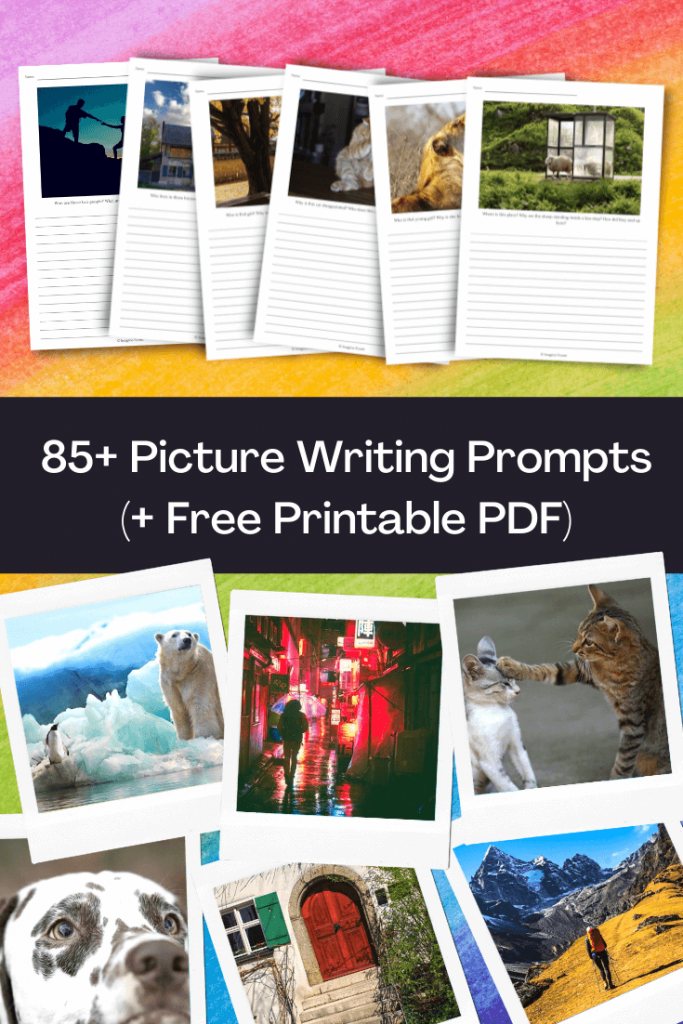
Marty the wizard is the master of Imagine Forest. When he's not reading a ton of books or writing some of his own tales, he loves to be surrounded by the magical creatures that live in Imagine Forest. While living in his tree house he has devoted his time to helping children around the world with their writing skills and creativity.
Related Posts

Comments loading...
- Primary Hub
- Art & Design
- Design & Technology
- Health & Wellbeing
- Secondary Hub
- Citizenship
- Primary CPD
- Secondary CPD
- Book Awards
- All Products
- Primary Products
- Secondary Products
- School Trips
- Trip Directory
- Trips by Subject
- Trips by Type
- Trips by Region
- Submit a Trip Venue
Trending stories

Top results

- Creative Writing Prompts Activities And Resources For Ks1 And Ks2 English
Creative writing prompts – Best activities and resources for KS1 and KS2 English

Fed up of reading 'and then…', 'and then…' in your children's writing? Try these story starters, structures, worksheets and other fun writing prompt resources for primary pupils…

What is creative writing?
How to develop opportunities for writing with choice and freedom, jump to section:.
- Writing with choice and freedom
Creative writing resources for the classroom
Creative writing prompts.
- Improving creative writing
- Overcoming the fear of creative writing
According to the Cambridge English Dictionary, ‘creative’ is ‘producing or using original and unusual ideas’, yet I would argue that in writing there’s no such thing as an original idea – all stories are reincarnations of ones that have gone before.
As writers we learn to be expert magpies – selecting the shiny words, phrases and ideas from other stories and taking them for our own.
Interestingly, the primary national curriculum does not mention creative writing or writing for pleasure at all and is focused on the skill of writing.
Therefore, if writing creatively and for pleasure is important in your school, it must be woven into your vision for English.
“Interestingly, the Primary National Curriculum does not mention creative writing or writing for pleasure at all”
Creative writing in primary schools can be broken into two parts:
- writing with choice and freedom
- developing story writing
Writing with choice and freedom allows children to write about what interests and inspires them.
Developing story writing provides children with the skills they need to write creatively. In primary schools this is often taught in a very structured way and, particularly in the formative years, can lack opportunities for children to be creative.
Children are often told to retell a story in their own words or tweak a detail such as the setting or the main character.
Below you’ll find plenty of creative writing prompts, suggestions and resources to help develop both writing for choice and freedom and developing story writing in your classroom.
Here’s an interesting question to consider: if the curriculum disappeared but children still had the skills to write, would they?
I believe so – they’d still have ideas they wanted to convey and stories they wanted to share.
One of my children enjoys writing and the other is more reluctant to mark make when asked to, but both choose to write. They write notes for friends, song lyrics, stories and even business plans.
So how can we develop opportunities to write with choice and freedom in our classrooms?
Early Years classrooms are full of opportunities for children to write about what interests them, but it’s a rarer sight in KS1 and 2.
Ask children what they want to write about
Reading for pleasure has quite rightly been prioritised in schools and the impact is clear. Many of the wonderful ideas from The Open University’s Reading For Pleasure site can be used and adapted for writing too.
For example, ask children to create a ‘writing river’ where they record the writing they choose to do across a week.
If pupils like writing about a specific thing, consider creating a short burst writing activity linked to this. The below Harry Potter creative writing activity , where children create a new character and write a paragraph about them, is an example of this approach.
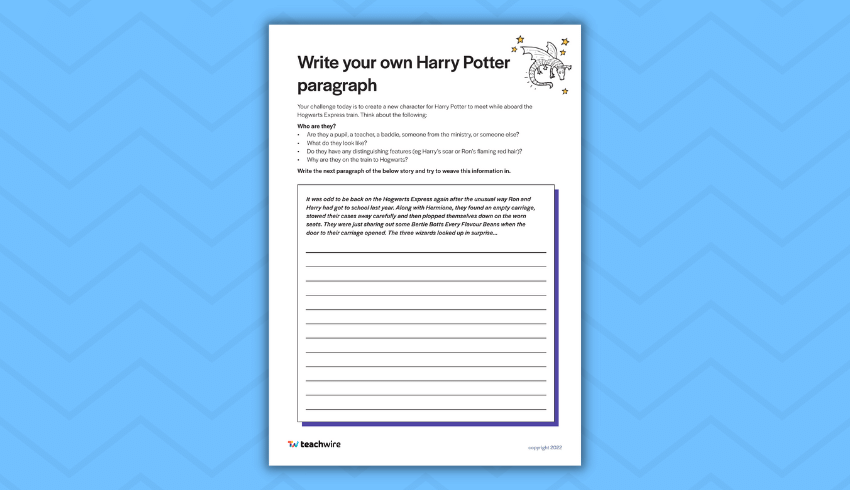
If you have a spare 20 minutes, listen to the below conversation with Lucy and Jonathan from HeadteacherChat and Alex from LinkyThinks . They discuss the importance of knowing about children’s interests but also about being a writer yourself.
'The confidence Crisis in Creative Writing.' Lucy and Jonathan chat with Alex from @LinkyThinks https://t.co/VClYxiQhcf — HeadteacherChat (@Headteacherchat) August 9, 2022
Plan in time to pursue personal writing projects
There are lots of fantastic ideas for developing writing for pleasure in your classrooms on The Writing For Pleasure Centre’s website .
One suggestion is assigning time to pursue personal writing projects. The Meadows Primary School in Madeley Heath, Staffordshire, does this termly and provides scaffolds for children who may find the choice daunting.
Give children a choice about writing implements and paper
Sometimes the fun is in the novelty. Are there opportunities within your week to give pupils some choices about the materials they use? Ideas could include:
- little notebooks
- a roll of paper
- felt tip pens
- gel pens
Write for real audiences
This is a great way to develop children’s motivation to write and is easy to do.
It could be a blog, a class newsletter or pen pals. Look around in your community for opportunities to write – the local supermarket, a nearby nursing home or the library are often all good starting points.
Have a go yourself
The most successful teachers of story writing write fiction themselves.
Many adults do not write creatively and trying to teach something you have not done yourself in a long time can be difficult. By having a go you can identify the areas of difficulty alongside the thought processes required.
Treat every child as an author
Time is always a premium in the classroom but equally, we’re all fully aware of the impact of verbal feedback.
One-to-one writing conferences have gained in popularity in primary classrooms and it’s well-worth giving these a go if you haven’t already.
Set aside time to speak to each child about the writing they’re currently constructing. Discuss what’s going well and what they could develop.
If possible, timetable these one-to-one discussions with the whole class throughout the year (ideally more often, if possible).
Free KS2 virtual visit and resources
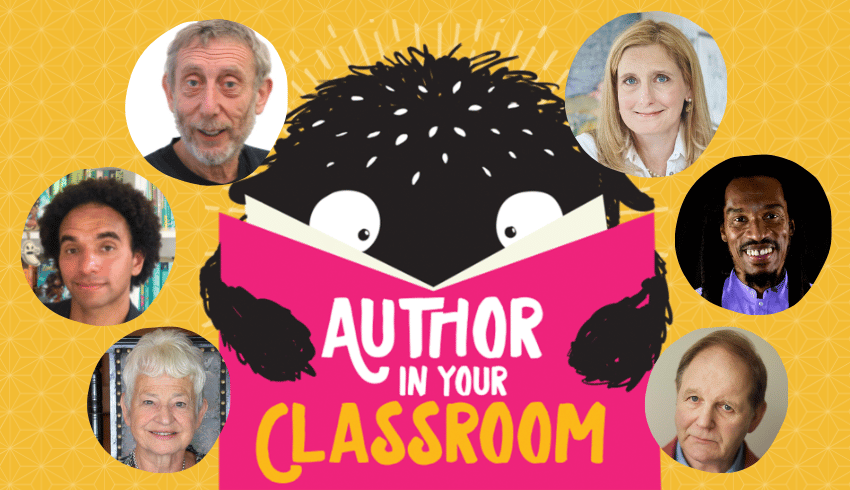
Bring best-selling children’s authors directly into your classroom with Author In Your Classroom. It’s a brilliant free podcast series made especially for schools, and there’s loads of free resources to download too.
More than 20 authors have recorded episodes so far, including:
- Sir Michael Morpurgo
- Dame Jacqueline Wilson
- Michael Rosen
- Joseph Coelho
- Lauren Child
- Frank Cottrell-Boyce
- Benjamin Zephaniah
- Cressida Cowell
- Robin Stevens
Creative writing exercises
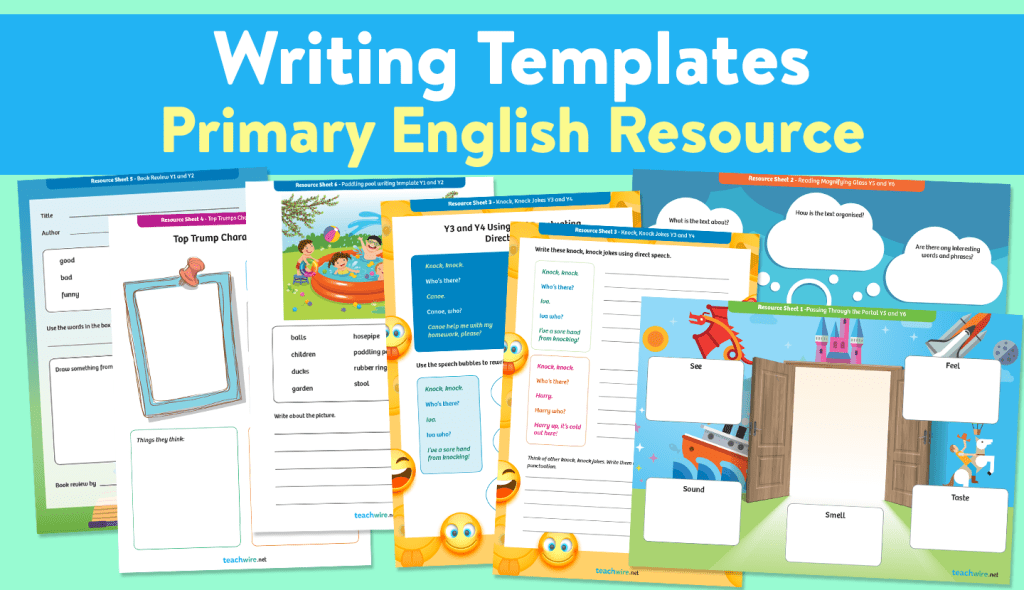
Use these inspiring writing templates from Rachel Clarke to inspire pupils who find it difficult to get their thoughts down on the page. The structured creative writing prompts and activities, which range from writing a ‘ through the portal story ‘ to a character creation activity that involves making your own Top Trumps style cards, will help inexperienced writers to get started.
Storyboard templates and story structures
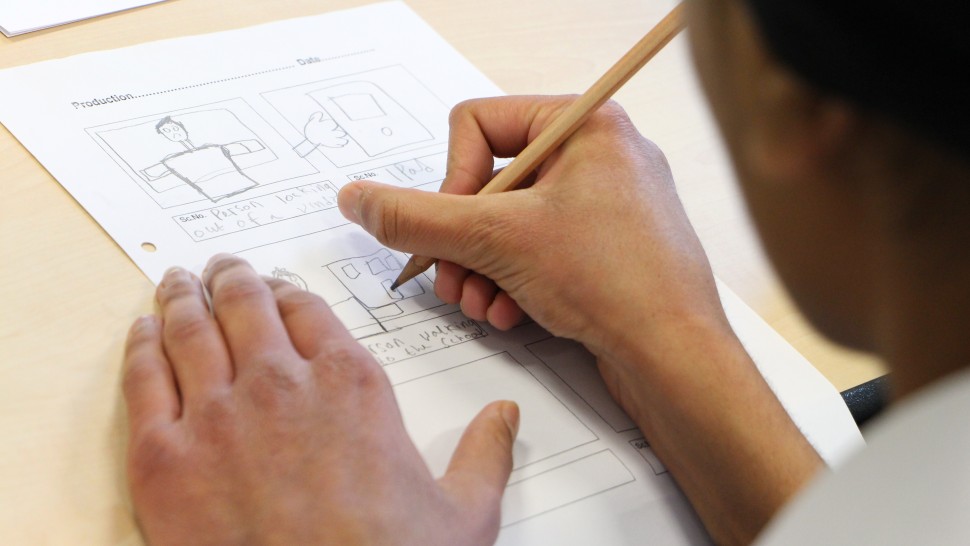
Whether it’s short stories, comic strips or filmmaking, every tale needs the right structure to be told well. This storyboard template resource will help your children develop the skills required to add that foundation to their creative writing.
Ten-minute activities
The idea of fitting another thing into the school day can feel overwhelming, so start with small creative writing activities once a fortnight. Below are a few ideas that have endless possibilities.
Character capers
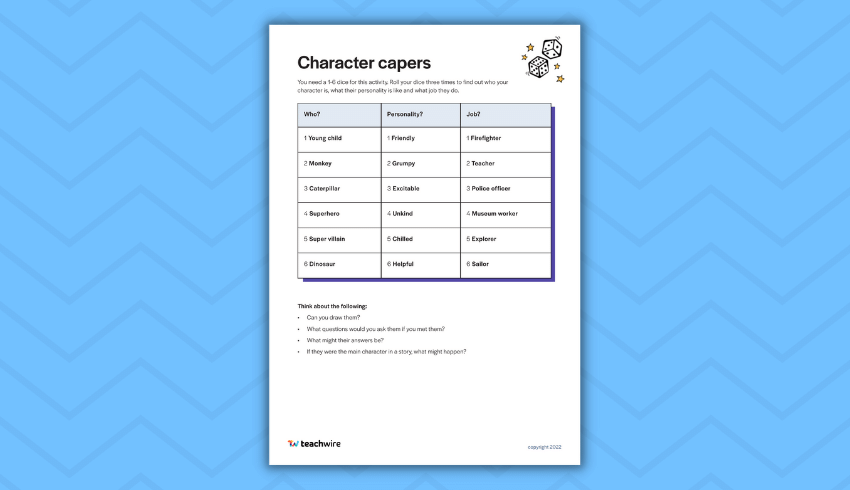
You need a 1-6 dice for this activity. Roll it three to find out who your character is, what their personality is and what job they do, then think about the following:
- Can you draw them?
- What questions would you ask them if you met them?
- What might their answers be?
- If they were the main character in a story, what might happen?
Download our character capers worksheet .
Setting soup
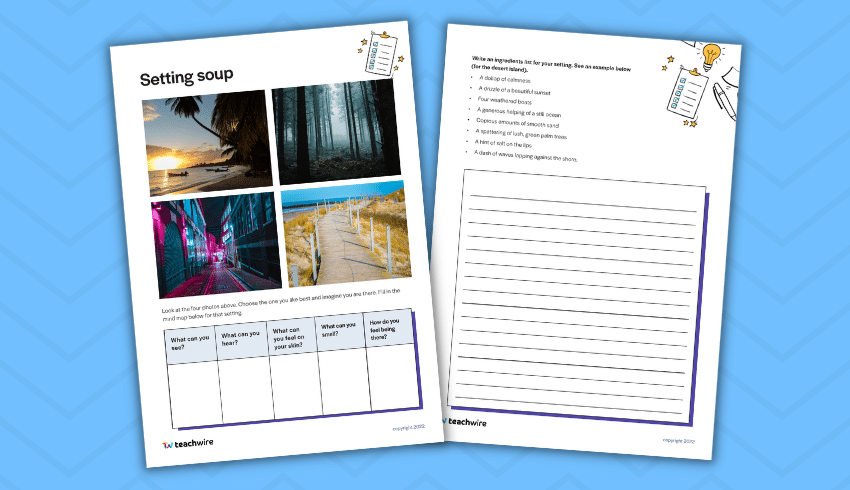
In this activity pupils Look at the four photos and fill in a mind map for one of the settings, focusing on what they’d see, hear, feel, smell and feel in that location. They then write an ingredients list for their setting, such as:
- A dollop of calmness
- A drizzle of a beautiful sunset
- A generous helping of a still ocean
- Copious amounts of smooth sand
- A spattering of lush, green palm trees
Download our setting soup worksheet .
Use consequences to generate story ideas

Start with a game of drawing consequences – this is a great way of building a new character.
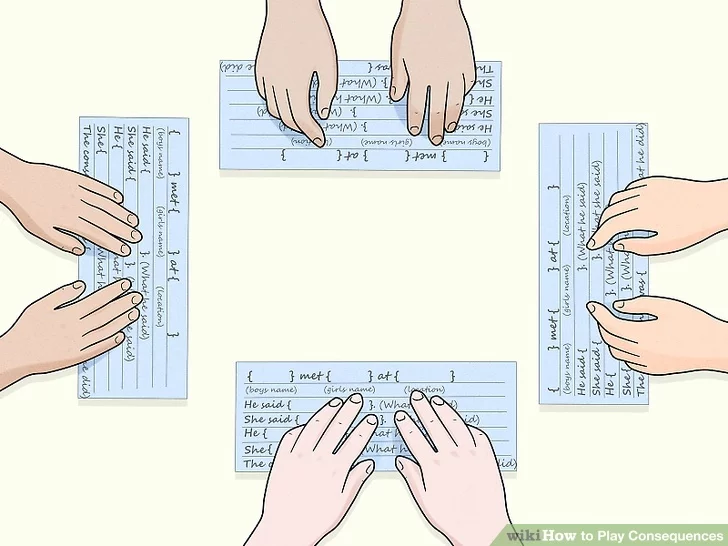
Next, play a similar game but write a story. Here’s an example . Download our free writing consequences template to get started.
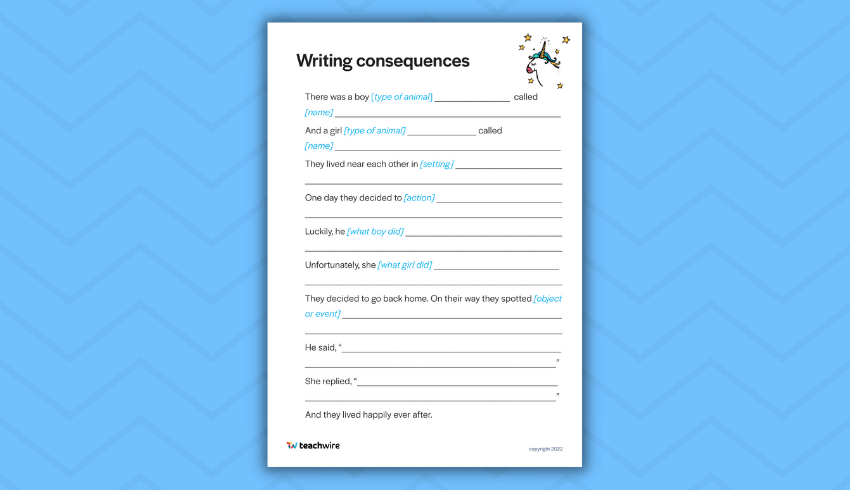
Roll and write a story
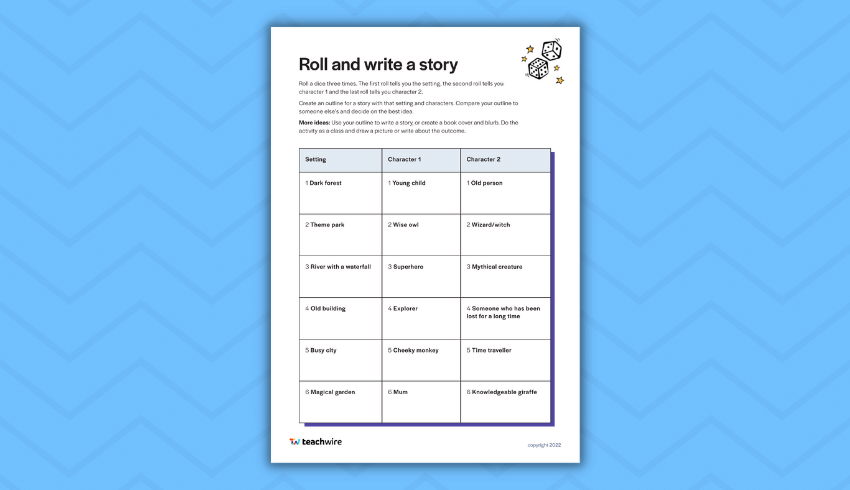
For this quick activity, children roll a dice three times to choose a setting and two characters – for example, a theme park, an explorer and a mythical creature. They then use the results to create an outline for a story.
Got more than ten minutes? Use the outline to write a complete story. Alternatively, use the results to create a book cover and blurb or, with a younger group of children, do the activity as a class then draw or write about the outcome.
Download our roll and write a story worksheet .
Scavenger hunt
Give children something to hide and tell them they have to write five clues in pairs, taking another pair from one clue to the next until the 5th clue leads them to the hidden item.
For a challenge, the clues could be riddles.
Set up pen pals. This might be with children in another country or school, or it could simply be with another class.
What do pupils want to say or share? It might be a letter, but it could be a comic strip, poem or pop-up book.
You need a log-in to access Authorfy’s content but it’s free. The website is crammed with every children’s author imaginable, talking about their books and inspirations and setting writing challenges. It’s a great tool to inspire and enthuse.
There are lots of great resources and videos on Oxford Owl which are free to access and will provide children with quick bursts of creativity.
Creative writing ideas for KS2

This free Pie Corbett Ultimate KS2 fiction collection is packed with original short stories from the man himself, and a selection of teaching resources he’s created to accompany each one.
Each creative writing activity will help every young writer get their creative juices flowing and overcome writer’s block.
WAGOLL text types
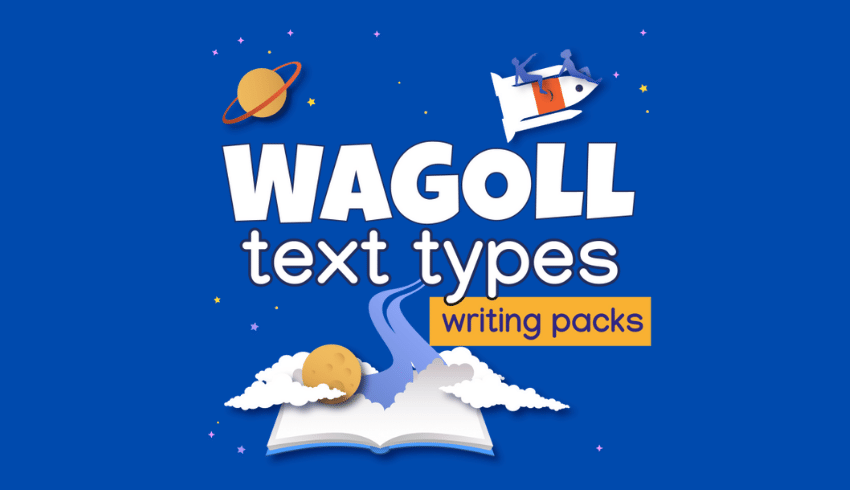
Support pupils when writing across a whole range of text types and genres with these engaging writing packs from Plazoom , differentiated for KS1, LKS2 and UKS2.
They feature:
- model texts (demonstrating WAGOLL for learners)
- planning guides
- writing templates
- themed paper
Each one focuses on a particular kind of text, encouraging children to make appropriate vocabulary, register and layout choices, and produce the very best writing of which they are capable, which can be used for evidence of progress.
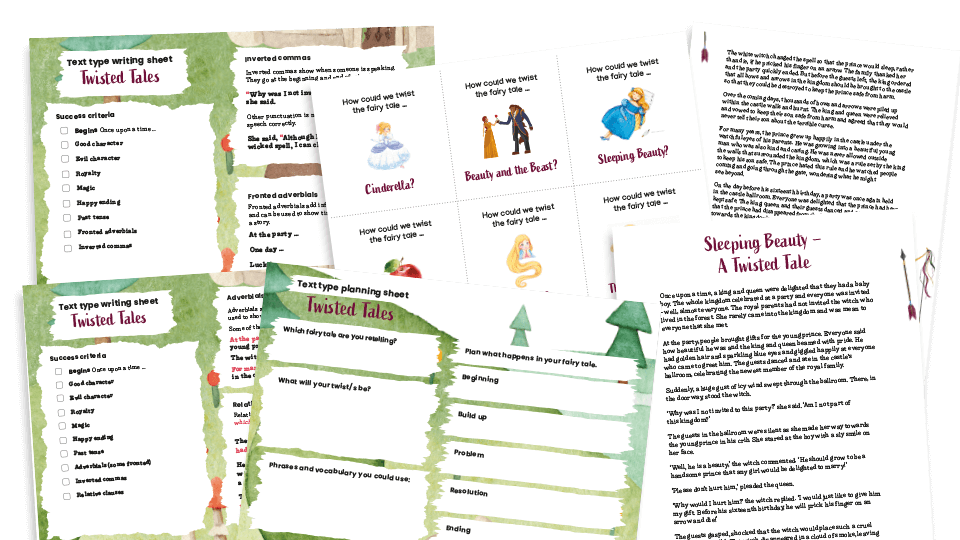
If you teach KS2, start off by exploring fairy tales with a twist , or choose from 50+ other options .
Scaffolds and plot types
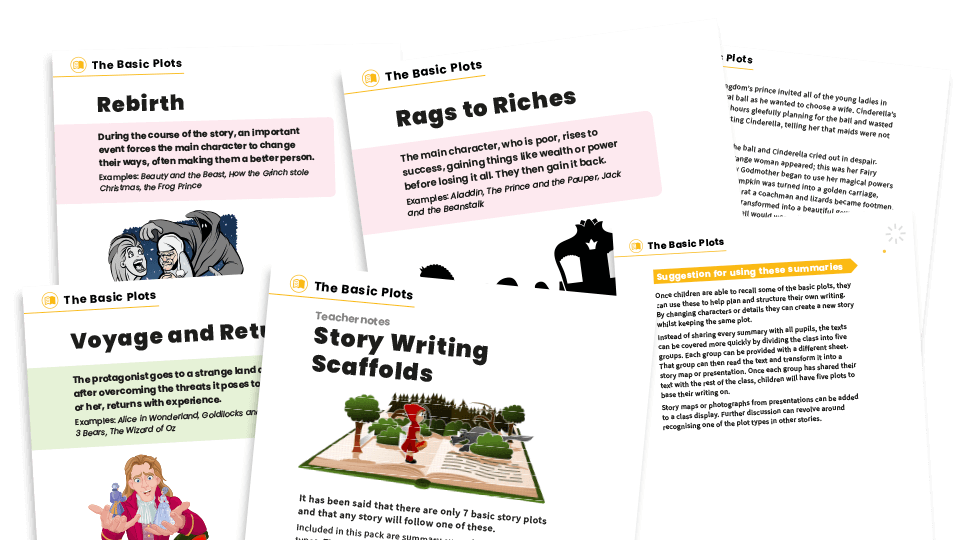
A great way to support children with planning stories with structures, this creative writing scaffolds and plot types resource pack contains five story summaries, each covering a different plot type, which they can use as a story idea.
It has often been suggested that there are only seven basic plots a story can use, and here you’ll find text summaries for five of these:
- Overcoming the monster
- Rags to riches
- Voyage and return
After familiarising themselves with these texts, children can adapt and change these stories to create tales of their own.
Use story starters
If some children still need a bit of a push in the right direction, check out our 6 superb story starters to develop creative writing skills . This list features a range of free story starter resources, including animations (like the one above) and even the odd iguana…
Use word mats to inspire
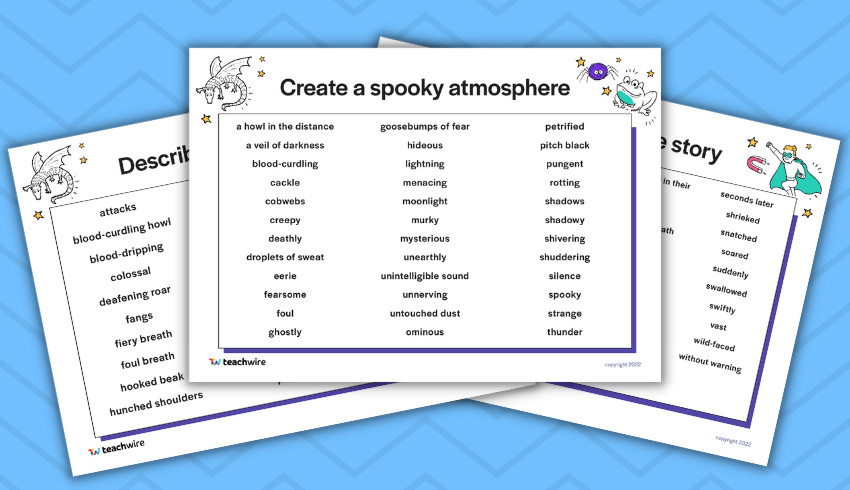
Help pupils to write independently by providing them with helpful vocabulary sheets that they can pick and choose from when doing their own creative writing.
Download our free creative writing word mats here , including:
- Create a spooky atmosphere
- Write an adventure story
- Describe a character’s appearance
- Describe a character’s personality
- Describe how a character moves
- Describe how a character speaks
- Describe a mythical beast
Creative writing pictures

Using images as writing prompts is nothing new, but it’s fun and effective.
Pobble 365 has an inspiring photo for every day of the year. These are great inspiration for ten-minute free writing activities. You need to log in to Pobble but access to Pobble 365 (the pictures) is free.
Choose two pictures as prompts (you can access every picture for the year in the calendar) or provide children with a range of starter prompts.
For example, with the photo above you might ask children to complete one of the following activities:
- Continue the story using the story starters on Pobble.
- Write down what your dream day would include.
- Create a superhero called Dolphin Dude.
- If you didn’t need to breath when swimming underwater, what would you do? Write about your dream day. It might include rivers, lakes, swimming pools, the seas or oceans.
- If you had a super power, what would it be and why?
The Literacy Shed

Website The Literacy Shed has a page dedicated to interesting pictures for creative writing . There are winter scenes, abandoned places, landscapes, woodlands, pathways, statues and even flying houses.
The Literacy Shed also hosts video clips for inspiring writing and is choc-full of ways to use them. The Night Zookeeper Shed is well worth a visit. There are short videos, activities and resources to inspire creative writing.
Once Upon a Picture

Once Upon a Picture is another site packed with creative writing picture prompts , but its focus is more on illustrations than photography, so its offering is great for letting little imaginations soar.
Each one comes with questions for kids to consider, or activities to carry out.
How to improve creative writing
Developing story writing .
If you decided to climb a mountain, in order to be successful you’d need to be well-equipped and you’d need to have practised with smaller climbs first.
The same is true of creative writing: to be successful you need to be well-equipped with the skills of writing and have had plenty of opportunities to practise.
As a teachers you need to plan with this in mind – develop a writing journey which allows children to learn the art of story writing by studying stories of a similar style, focusing on how effects are created and scaffolding children’s writing activities so they achieve success.
- Choose a focus When planning, consider what skill you want to embed for children and have that as your focus throughout the sequence of learning. For example, if you teach Y4 you might decide to focus on integrating speech into stories. When your class looks at a similar story, draw their attention to how the author uses speech and discuss how it advances the action and shows you more about the characters. During the sequence, your class can practise the technical side of writing speech (new line/new speaker, end punctuation, etc). When they come to write their own story, your success criteria will be focused on using speech effectively. By doing this, the skill of using speech is embedded. If you chose to focus on ALL the elements of story writing that a Y4 child should be using (fronted adverbials, conjunctions, expanded noun phrases, etc), this might lead to cognitive overload.
- Plan in chances to be creative Often teachers plan three writing opportunities: one where children retell the story, one with a slight difference (eg a different main character) and a final one where children invent their own story. However, in my experience, the third piece of writing often never happens because children have lost interest or time has run out. If we equip children with the skills, we must allow them time to use them.
- Utilise paired writing Children love to collaborate and by working in pairs it actually helps develop independence. Give it a go!
- Find opportunities for real audiences Nothing is more motivating than knowing you will get to share your story with another class, a parent or the local nursing home.
- Use high-quality stimuli If your focus is speech, find a great novel for kids that uses speech effectively. There are so many excellent children’s stories available that there’s no need to write your own.
- Use magpie books This is somewhere where children can note down any great words or phrases they find from their reading. It will get them reading as a writer.
Below is a rough outline of a planning format that leads to successful writing opportunities.
This sequence of learning takes around three weeks but may be longer or shorter, depending on the writing type.
Before planning out the learning, decide on up to three key focuses for the sequence. Think about the potential learning opportunities that the stimuli supports (eg don’t focus on direct speech if you’re writing non-chronological reports ).
Ways to overcome fear of creative writing
Many children are inhibited in their writing for a variety of reasons. These include the all-too-familiar ‘fear of the blank page’ (“I can’t think of anything to write about!” is a common lament), trying to get all the technical aspects right as they compose their work (a sense of being ‘overwhelmed’), and the fact that much of children’s success in school is underpinned by an ethos of competitiveness and comparison, which can lead to a fear of failure and a lack of desire to try.
Any steps we can take to diminish these anxieties means that children will feel increasingly motivated to write, and so enjoy their writing more. This in turn will lead to the development of skills in all areas of writing, with the broader benefits this brings more generally in children’s education.
Here are some easily applied and simple ideas from author and school workshop provider Steve Bowkett for boosting self-confidence in writing.
- Keep it creative Make creative writing a regular activity. High priority is given to spelling, punctuation and grammar, but these need a context to be properly understood. Teaching the technicalities of language without giving children meaningful opportunities to apply them is like telling people the names of a car engine’s parts without helping them learn to drive.
- Model the behaviour In other words, when you want your class to write a story or poem, have a go yourself and be upfront about the difficulties you encounter in trying to translate your thoughts into words.
- Go easy on the grammar Encourage children to write without them necessarily trying to remember and apply a raft of grammatical rules. An old saying has it that we should ‘learn the rules well and then forget them’. Learning how to use punctuation, for instance, is necessary and valuable, but when children try and apply the rules consciously and laboriously as they go along, the creative flow can be stifled. Consideration of rules should, however, be an important element of the editing process.
- Keep assessment focused Where you do require children to focus on rules during composition, pick just one or two they can bear in mind as they write. Explain that you will mark for these without necessarily correcting other areas of GaPS. Not only will this save you time, but also children will be spared the demotivating sight of their writing covered in corrections (which many are unlikely to read).
- Value effort If a child tries hard but produces work that is technically poor, celebrate his achievement in making an effort and apply the old ‘three stars and a wish’ technique to the work by finding three points you can praise followed by noting one area where improvements can be made.
- Leave room for improvement Make clear that it’s fine for children to change their minds, and that there is no expectation for them to ‘get it all right’ first time. Show the class before and after drafts from the work of well-known poets and extracts from stories. Where these have been hand written, they are often untidy and peppered with crossings out and other annotations as the writers tried to clarify their thoughts. If you have the facilities, invite children to word process their stories using the ‘track changes’ facility. Encourage children to show their workings out, as you would do in maths.
- Don’t strive for perfection Slay the ‘practice makes perfect’ dragon. It’s a glib phrase and also an inaccurate one. Telling children that practice makes better is a sound piece of advice. But how could we ever say that a story or poem is perfect? Even highly experienced authors strive to improve.
- Come back later Leave some time – a couple of days will do – between children writing a piece and editing or redrafting it. This is often known as the ‘cooling off’ period. Many children will find that they come back to their work with fresh eyes that enable them to pick out more errors, and with new ideas for improving the piece structurally.
- Try diamond 9 Use the diamond ranking tool to help children assess their own work. Give each child some scraps of paper or card and have them write on each an aspect of their writing, such as creating strong characters, controlling pace and tension, describing places and things, using ‘punchy’ verbs etc. Supply these elements as necessary, but allow children some leeway to think of examples of their own. Now ask each child to physically arrange these scraps according to how effectively they were used in the latest piece of work. So two writing elements that a child thinks are equally strong will be placed side by side, while an aspect of the work a child is pleased with will be placed above one that he / she is not so happy with.
- Keep it varied Vary the writing tasks. By this I mean it’s not necessary to ask children always to write a complete story. Get them to create just an opening scene for example, or a vivid character description, or an exciting story climax. If more-reluctant writers think they haven’t got to write much they might be more motivated to have a go. Varying the tasks also helps to keep the process of writing fresh, while the results can form resource banks (of characters, scenes, etc) for future use.
- Help each other Highlight the idea that everyone in the class, including yourself, forms a community of writers. Here, difficulties can be aired, advice can be shared and successes can be celebrated as we all strive to ‘dare to do it and do our best’.
Browse more ideas for National Writing Day .
Sign up to our newsletter
You'll also receive regular updates from Teachwire with free lesson plans, great new teaching ideas, offers and more. (You can unsubscribe at any time.)
Which sectors are you interested in?
Early Years
Thank you for signing up to our emails!
You might also be interested in...
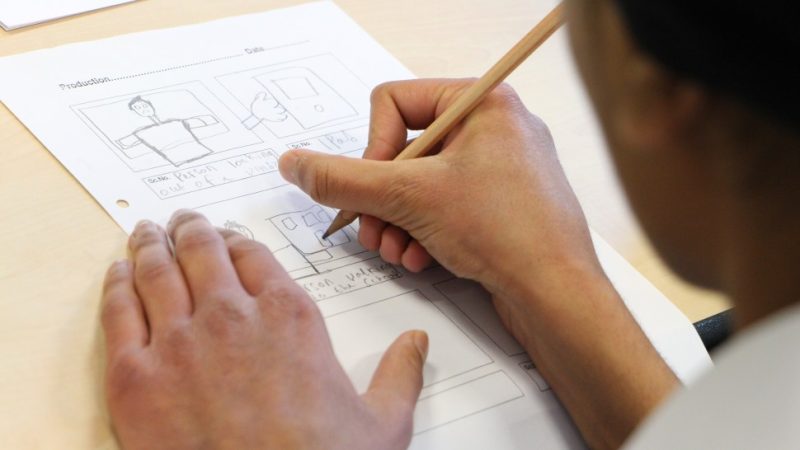
Why join Teachwire?
Get what you need to become a better teacher with unlimited access to exclusive free classroom resources and expert CPD downloads.
Exclusive classroom resource downloads
Free worksheets and lesson plans
CPD downloads, written by experts
Resource packs to supercharge your planning
Special web-only magazine editions
Educational podcasts & resources
Access to free literacy webinars
Newsletters and offers
Create free account
By signing up you agree to our terms and conditions and privacy policy .
Already have an account? Log in here
Thanks, you're almost there
To help us show you teaching resources, downloads and more you’ll love, complete your profile below.
Welcome to Teachwire!
Set up your account.
Lorem ipsum dolor sit amet consectetur adipisicing elit. Commodi nulla quos inventore beatae tenetur.
I would like to receive regular updates from Teachwire with free lesson plans, great new teaching ideas, offers and more. (You can unsubscribe at any time.)
Log in to Teachwire
Not registered with Teachwire? Sign up for free
Reset Password
Remembered your password? Login here


ENG 11 - Wide Reading: Year 11 - Reading to Write
Year 11 - reading to write.
- Thinking about literature
- Biographies
- Other ways to read
- Creative writing
Creative Writing
Objectives of the "Reading to Write" module
OBJECTIVES OF THE "READING TO WRITE" MODULE
- To read a text effectively - to understand plot, characters and themes.
- To engage with a range of human experience as expressed in a text. To understand emotion and responses to situations and analyse how the author has conveyed their ideas.
- To become a better writer in response to reading widely - to find your creative voice and learn to edit and revise your work for best results.
- To understand how texts reflect the world around you - to engage with human experience and complex ideas.
- To deepen your understanding of a text by producing an "imaginative re-creation" - writing something of your own based on the ideas or characters present in the text.
- To develop strong skills in the comprehension and analysis of texts. To determine how authors structure their sentences, the syntax, perspective and the voice they use, in order to imitate it.
- To become a clear and engaging writer by using correct spelling, punctuation and grammar.
Short Stories
Explore the Short Stories section of the library - there are so many wonderful authors who have written short stories.
Here are some favourites:
"The Drover's wife" by Henry Lawson - Included in "While the Billy Boils" A821 LAW
"Singing My Sister Down" by Margo Lanagan - Included in "Black Juice" SS F LAN
"The Pedestrian" : by Ray Bradbury
"The Lottery" by Shirley Jackson - Included in "The 13 Best horror stories of all time" SS F THI
"Harrison Bergeron" by Kurt Vonnegut - Included in "Welcome to the Monkey House" SS F VON
"Miss Brill" by Katherine Mansfield - Included in "Selected Stories" by Katherine Mansfield SS F MAN
"The Yellow Wallpaper" by Charlotte Perkins Gilman - Included in "The 13 Best horror stories of all time" SS F THI
"The Story of an hour" by Kate Chopin - Included in "The Awakening and selected stories" SS F CHO
"There was once" by Margaret Atwood"
Finding Literature
- Great Books Online Pre-eminent internet publisher of literature, reference and verse providing students, researchers and the intellectually curious with unlimited access to books and information on the web, free of charge.
- BlackWords The most comprehensive record of Aboriginal and Torres Strait Islander publications available. It covers all forms of creative writing, film, television, criticism and scholarship, both by and about Aboriginal and Torres Strait Islander writers and literary and storytelling cultures.
- Thought Co. Literature Whether you're researching the great books or looking to write the next one yourself, these resources and guides will help you discover the best of the written word.
- Discovering Literature - 20th Century Explore 20th-century literature, and the ways in which key 20th-century authors experimented with new forms and themes to capture the fast-changing world around them.
- Discovering Literature: Romantics and Victorians Explore literary treasures from the Romantic and Victorian periods. Discover 1,200 collection items, 167 articles, 25 films, 30 teachers’ notes and more!
- English Timeline This interactive timeline allows you to explore the evolution of English language and literature, from the 11th century to the present day. Scroll through decade by decade to investigate the richness and diversity of our poetry and prose, as well as the many social, cultural and political strands from which our language has been woven.
- Texts in Context These 'everyday' texts illustrate the many histories – social, cultural, economic, political, technical – within which language is used and produced.
Some Recommended Classics
Some Recommended Modern Literature
- Next: Thinking about literature >>
- Last Updated: Aug 29, 2023 11:36 AM
- URL: https://libguides.danebank.nsw.edu.au/ENG11_Widereading

IMAGES
VIDEO
COMMENTS
11+ creative writing questions from real papers—non-fiction prompts. Write a thank you letter for a present you didn't want. You are about to interview someone for a job. Write a list of questions you would like to ask the applicant. Write a letter to complain about the uniform at your school.
The 11 Plus creative writing exam is usually 25-30 minutes and could involve the continuation of a storyline that you'll be provided with. Alternatively you might be asked to write a short piece of your own in response to a visual stimulus - this could be describing a character or writing something from their perspective, like a diary entry.
I also recommend that this idea should also be given to the students for building their creative instinct. Use these 70 picture prompts for creative writing to get your students' creative juices flowing. 1. ALLEY CAT.
Next time you're stuck, use this writing prompt. […] Writing Prompt: Monster - […] all you need to give your writing a boost is an inspiring writing prompt. And when it comes to…. 3 Writing Prompts to Tap Into Your Creative Well - The Write Practice - […] Writing prompts are wonderful tools to get the words flowing.
Ten 11+ & 13+ Creative Writing Tips For Excellent Exam Stories. When my students get the hang of these techniques, it makes an enormous difference to their creative writing - but it takes practice! Practical advice for superb 11+ exam stories: My ten top tips from a career in 11 Plus preparation, explained in detail with examples.
If the text is written in very formal and concise language, it is probably not a good idea to use slang. Similarly, if the text is a play, structuring your response as a script might be a better choice than writing a poem! 3. Explore the explicit and implied ideas and values in the texts.
Here's how our contest works: every Friday, we send out a newsletter containing five creative writing prompts. Each week, the story ideas center around a different theme. Authors then have one week — until the following Friday — to submit a short story based on one of our prompts. A winner is picked each week to win $250 and is highlighted ...
Since 2016, we've been featuring these images in our daily Picture Prompts: short, image-driven posts that invite a variety of kinds of student writing. Teachers tell us they use these prompts ...
14. The Found Poem: Read a book and circle some words on a page. Use those words to craft a poem. Alternatively, you can cut out words and phrases from magazines. 15. Eavesdropper: Create a poem, short story, or journal entry about a conversation you've overheard. Printable Ad-Free 365 Writing Prompt Cards. 16.
Use different senses to describe it. Let them touch objects. Encourage your learners to ask and answer questions about the writing prompt and use questioning to help them think deeply. Avoid using leading questions that will push your class towards seeing the stimulus in the same way as you. Let them surprise you.
15 Funny Writing Prompts. #1: Write a story which starts with someone eating a pickle and potato sandwich. #2: Write a short script where the plot has to do with evil dolls trying to take over something. #3: Write about writers' block.
Below, we've categorized the 160+ prompts we published during the 2016-17 school year based on the type of writing they primarily encourage students to do. All are still open for comment. Plus ...
Here are some examples of story titles which have come up in both Grammar School and Independent School tests. The Day Trip. Power. The Broken Window. The Abandoned House. Lost Boy. The Voice in the Darkness. The Garden. Sleeping.
Get some essay writing practice under your belt with this practice questions we've specifically created for the Year 11 English Common Module below! 20 Practice Essay Questions for Year 11 English Common Module: Reading to Write Creative Writing. You'll find that you'll also be assessed on your creative writing skills in this module.
Do you struggle with creative writing? Read this guide to learn how to ace your creatives in Year 11 and 12. Learn how to beat writer's block!
To succeed at an 11 Plus comprehension task, students need a range of skills, including: Source. 1. Imagination and creativity. One of the most important skills for creative writing is the ability to come up with an original idea which fully answers the given question and uses imaginative language.
Each one sparks the imagination and helps young writers jump right into crafting a story to match. We rounded up a whole collection of intriguing images for use with kids in grades K-12 along. Plus we designed a set of free Google Slides featuring all of the prompts so you can easily share them with students. Tip: Start by showing students the ...
Perhaps lit by candles, strange instruments on the tables, cobwebbed and dusty. Behind you the door closes gently and you espy this man sat in emerald green robes, peering at you over his glasses, the candles flicker and die out. It's pitch black and he whispers.... Allow the children 10 words only.
The Year 11 English Common Module: Reading to Write must be taught in Term 1 of Year 11. The Reading to Write Module must be taught as the first Year 11 English Module by all schools. The content that it covers is the foundation to a study of Stage 6 English at all levels that will be assessed for an ATAR. Teaching this content first ensures ...
85+ Picture Writing Prompts For Kids (+ Free Printable) December 18, 2021. A picture is worth a thousand words. So how many words can you write for these 85 picture writing prompts for kids and grow-ups alike! Pictures, whether something as simple as an apple or as complex as an action scene can spark the imagination in more ways than one.
Try these story starters, structures, worksheets and other fun writing prompt resources for primary pupils…. by Laura Dobson. DOWNLOAD A FREE RESOURCE! Creative writing prompts - 5 worksheets plus word mats for KS1 and KS2 pupils. Download Now.
Wuthering Heights by Emily Brontë Perhaps the most haunting and tormented love story ever written, Wuthering Heights is the tale of the troubled orphan Heathcliff and his doomed love for Catherine Earnshaw. Published in 1847, the year before Emily Bronte's death at the age of thirty, Wuthering Heights has proved to be one of the nineteenth century's most popular yet disturbing masterpieces.
10 - 11 years old . Grade 5 / Year 6 . 11 - 14 years old . Secondary ... I'd love more 'creative writing stimulus pictures' at a Y1 level as lots of your things are lovely but have lots of reading as to what to do with them and Y1 struggle with this early in the year. I'd like to put them out in the writing area to provide a stimulus for their ...